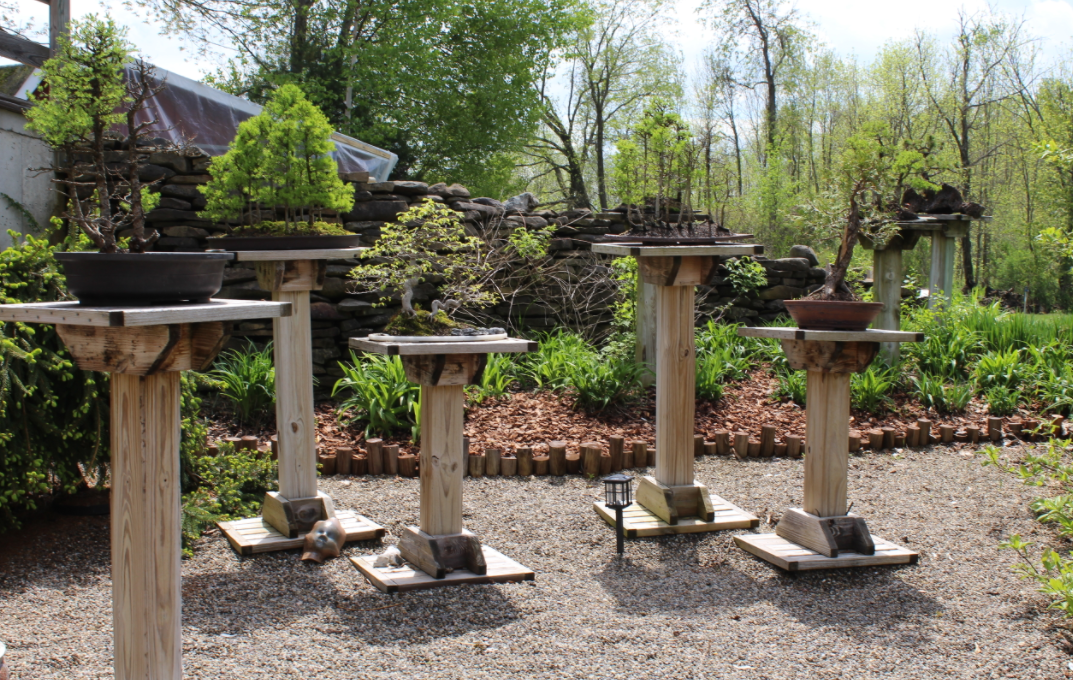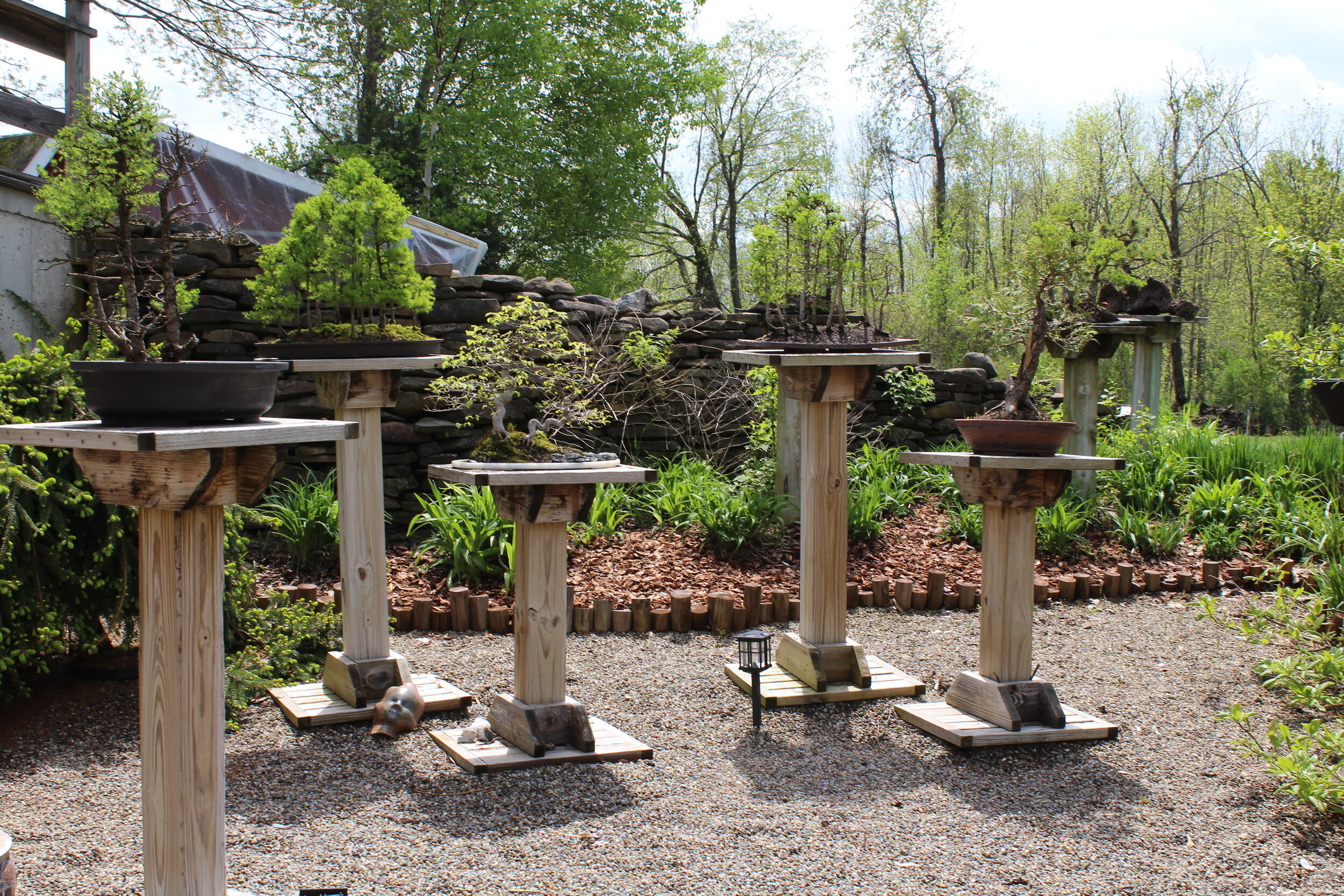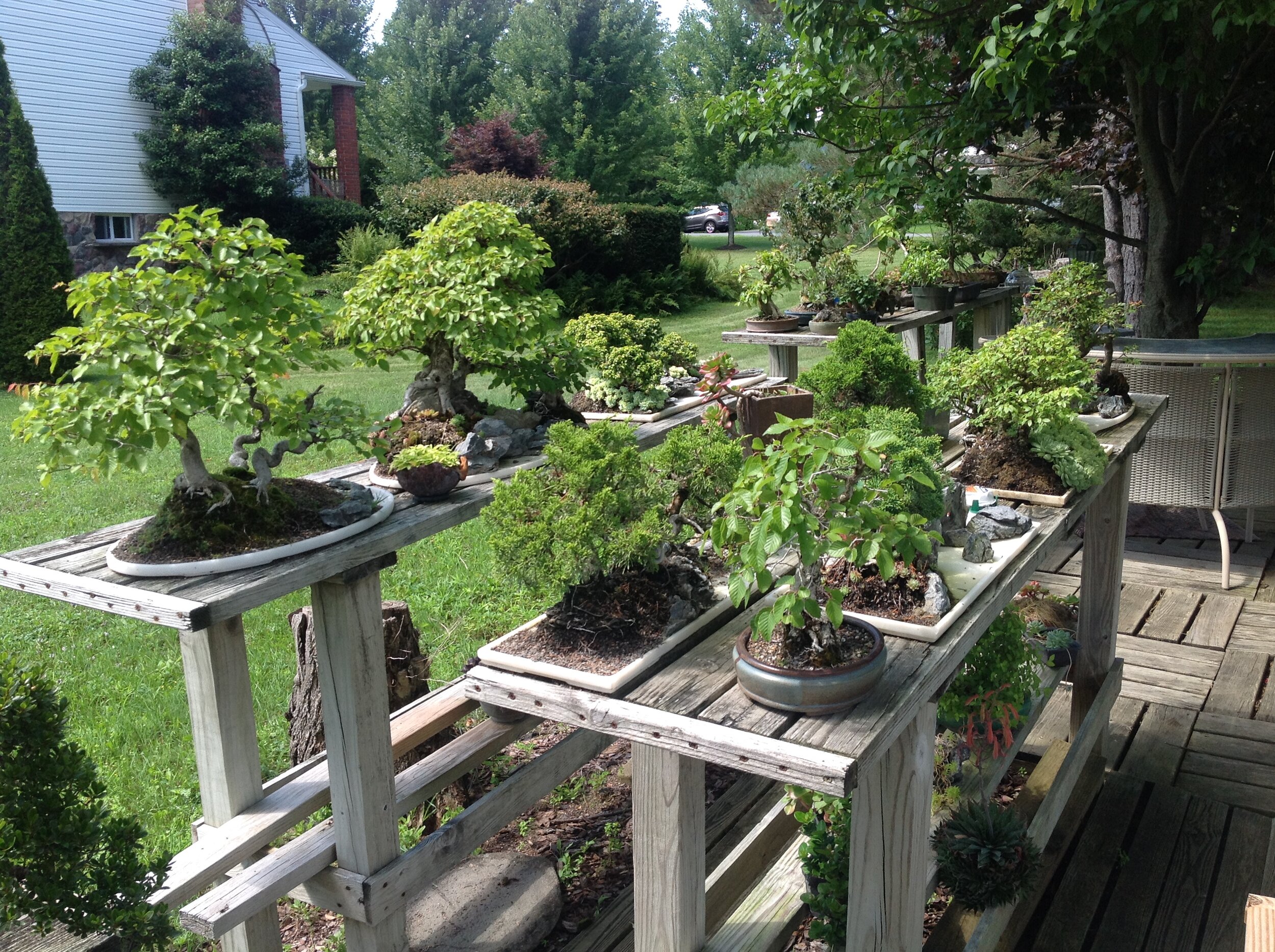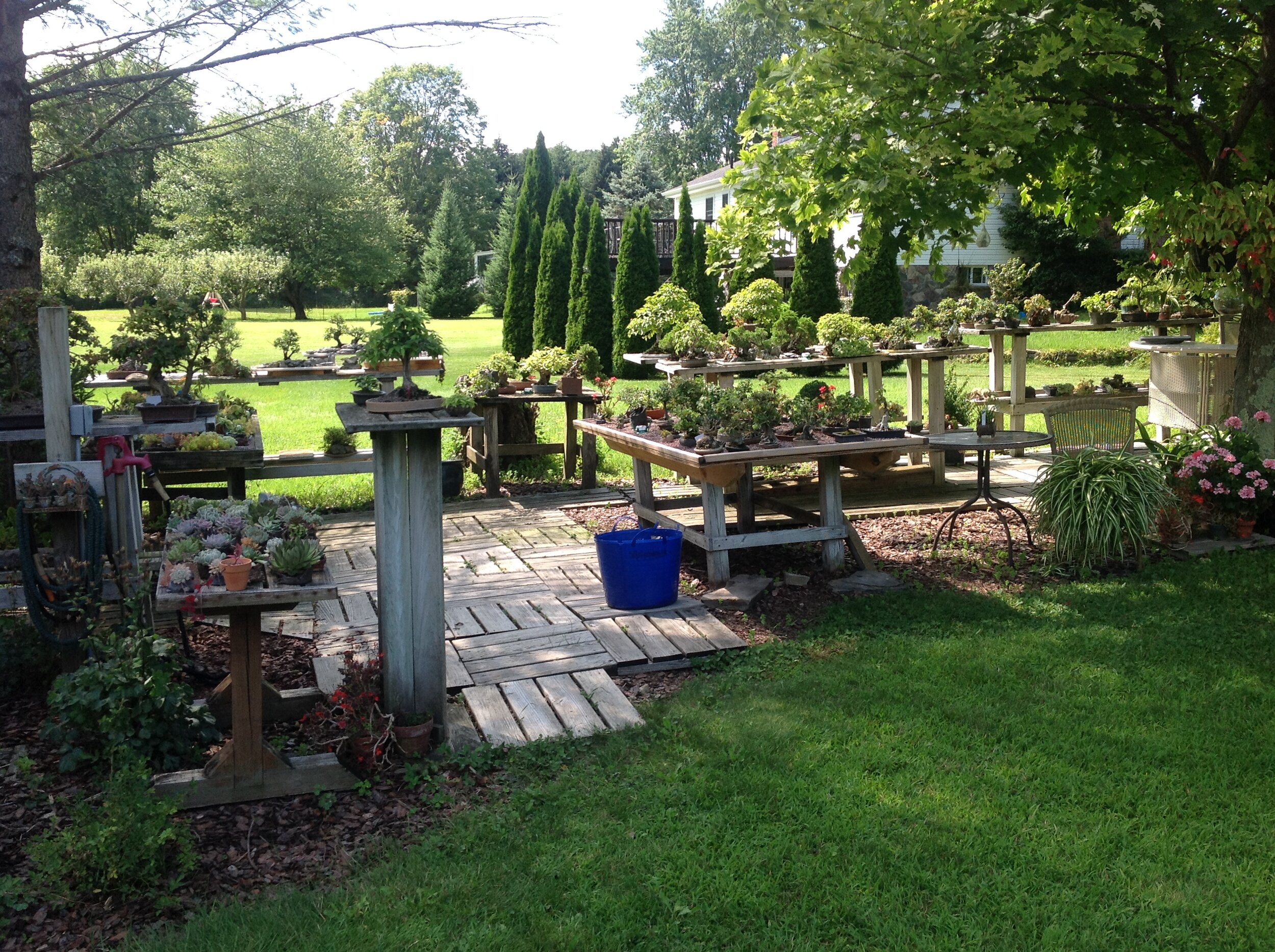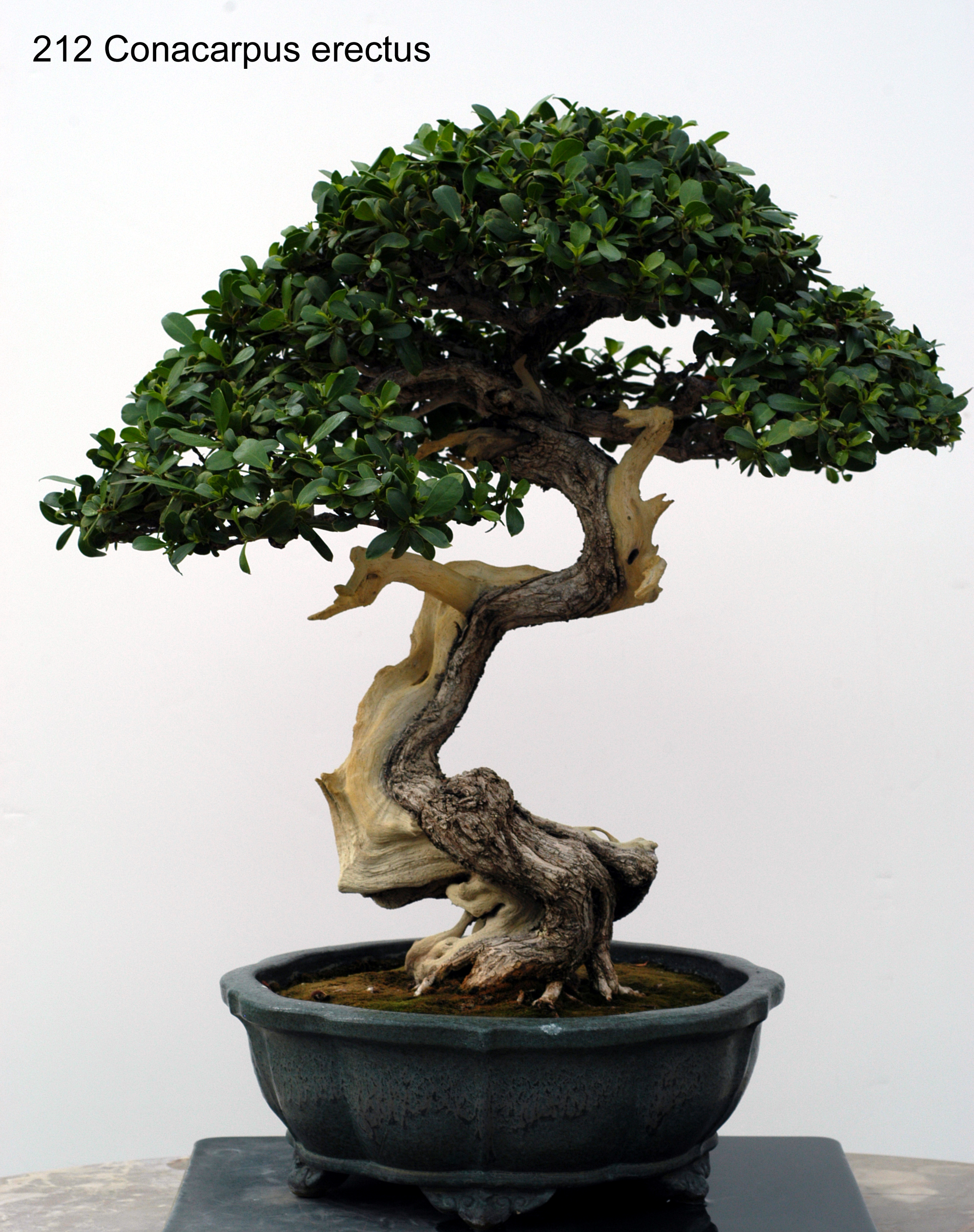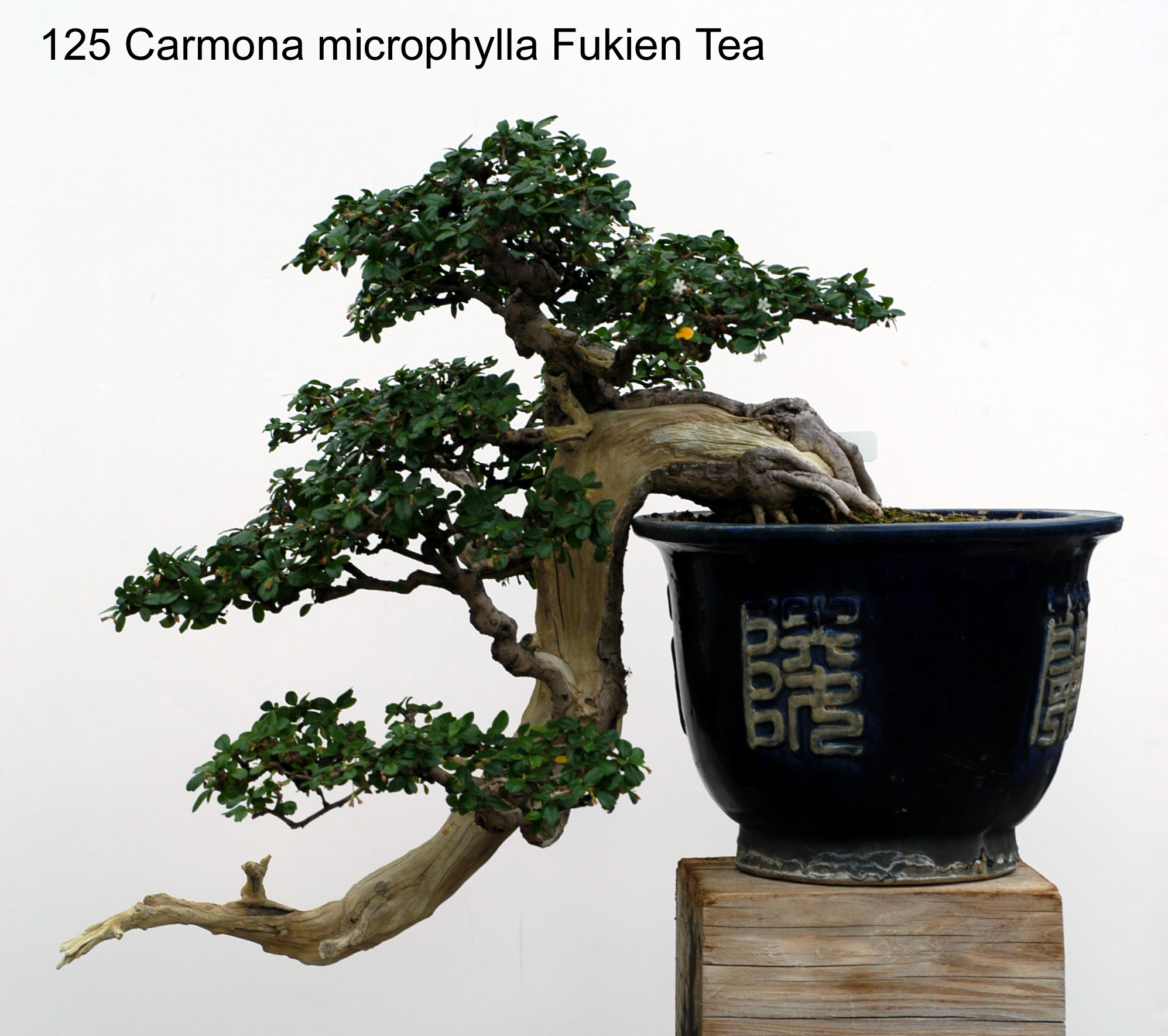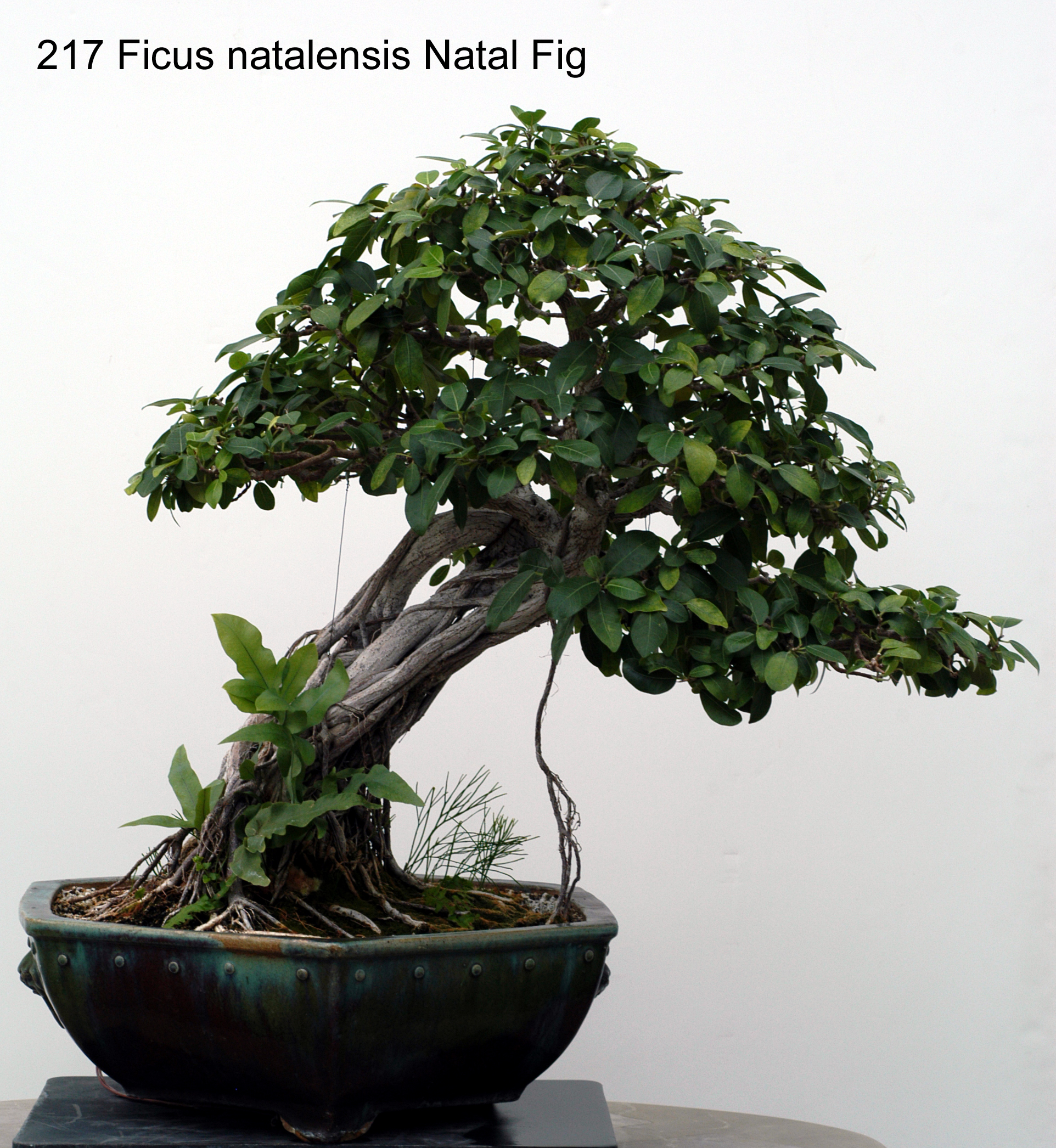HAPPY WORLD BONSAI DAY 2020
"We are united in the brotherhood of bonsai."
-Master Saburo kato
Originally started to honor Bonsai Master Saburo Kato's mission for peace through bonsai, World Bonsai Day is a cornerstone of the bonsai community. Perhaps more than ever before, this day finds meaning and necessity in our lives. While normally we would celebrate in person at the U.S. National Arboretum’s National Bonsai & Penjing Museum, we at the National Bonsai Foundation have prepared a plethora of ways to celebrate bonsai virtually.
We invite you to browse below and enjoy the greetings, articles, trivia, virtual tours, and documentaries. And, be sure to join the conversation on social media by using #WorldBonsaiDay2020. Happy World Bonsai Day!

Greetings on World Bonsai Day
From the National Bonsai Foundation
From the U.S. National Arboretum
From our Global Bonsai Community

Learn About World Bonsai Day
Read Blogs & Articles

The National Bonsai Foundation Blog
MAY 2020
Learn all about the history of this global bonsai celebration in this blog post sourced from interviews with NBF Co-Presidents Jack Sustic and Felix Laughlin and Museum Curator Michael James.

National Geographic
may 2020
The National Bonsai & Penjing Museum was featured in this month’s National Geographic Magazine in a spotlight on the tools used in the art of bonsai. Subscribers can read the article at the button below.

Test Your Knowledge
Let’s Play!

Virtual Tours of Private & Public Collections
From Members of the National Bonsai Foundation & Friends
From the National Bonsai & Penjing Museum at the
U.S. National Arboretum
Explore our collections. Clockwise - North American, Japanese, Tropicals, Chinese
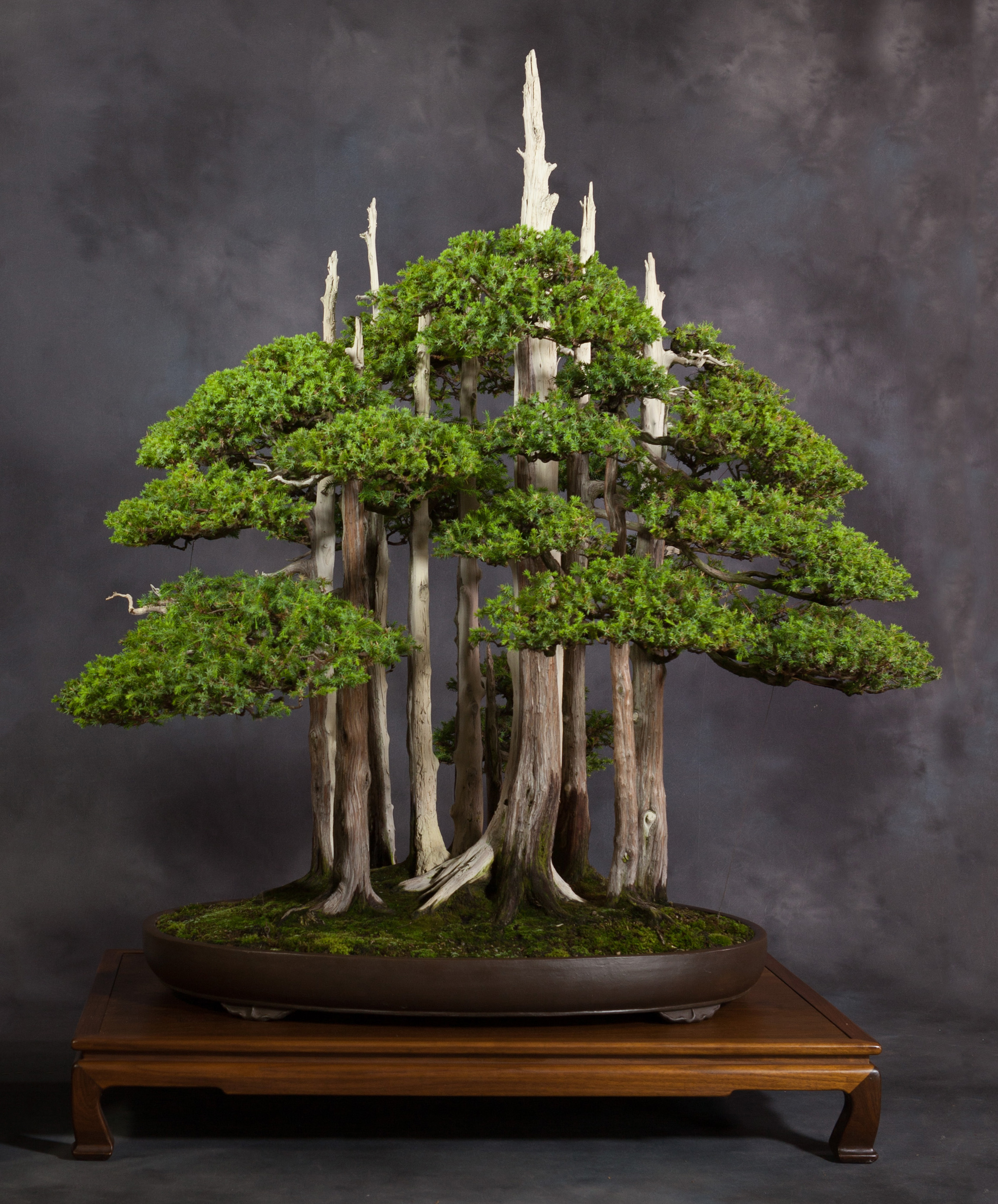
Juniperus chinensis
In Training Since 1953
Gift of John Yoshio Naka, 1984
This is one of the most recognized bonsai in the world. Bonsai master John Naka created his forest with 11 trees—one for each of his grandchildren—and named it Goshin, meaning "protector of the spirit."
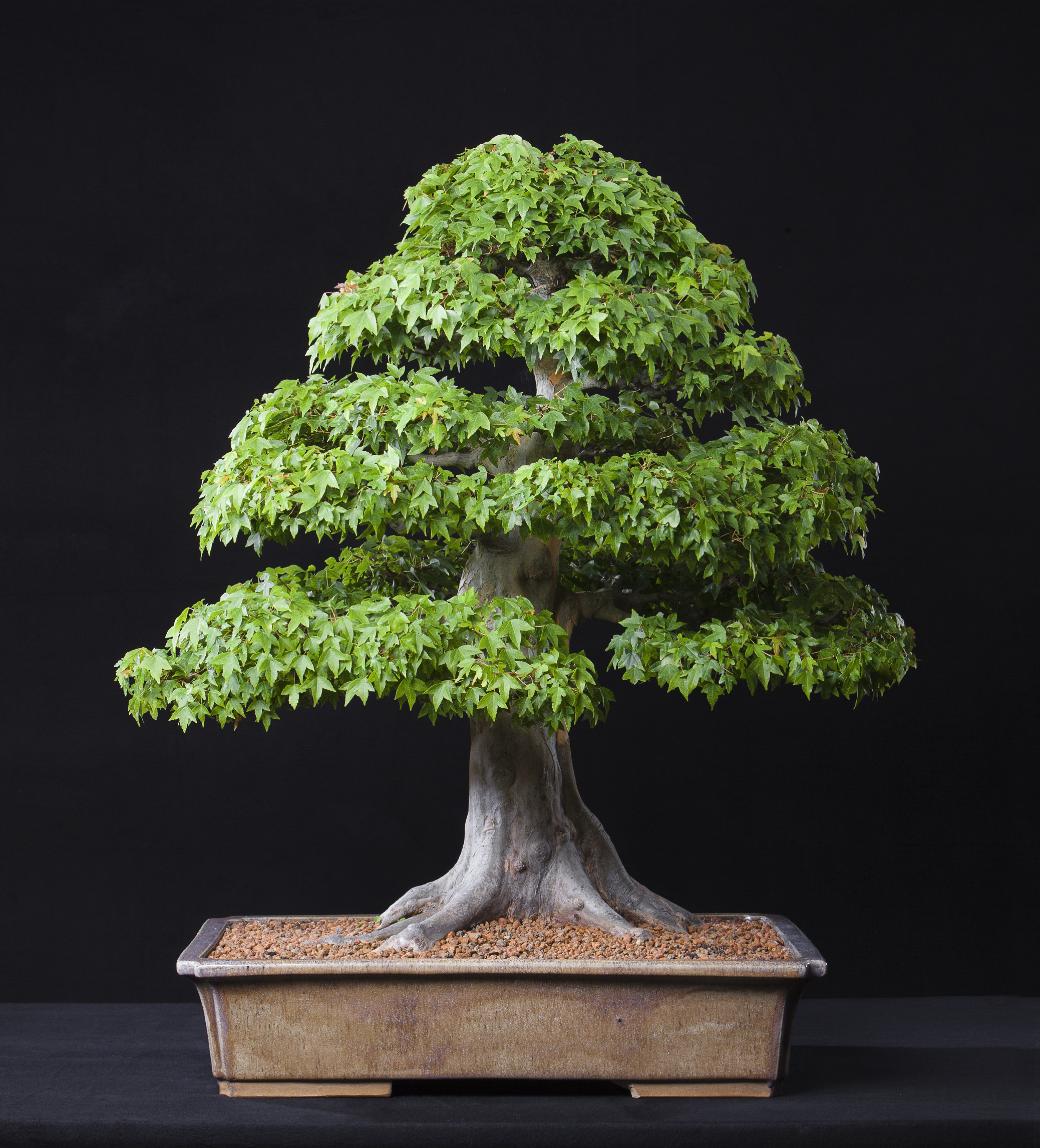
Acer buergerianum
In training since 1975
Gift of Ted C. Guyger, 1990
Bonsai created from trees collected from the outdoors start out with a thicker, more mature trunk. Before it was pruned, this bonsai was a 23-foot tall tree.
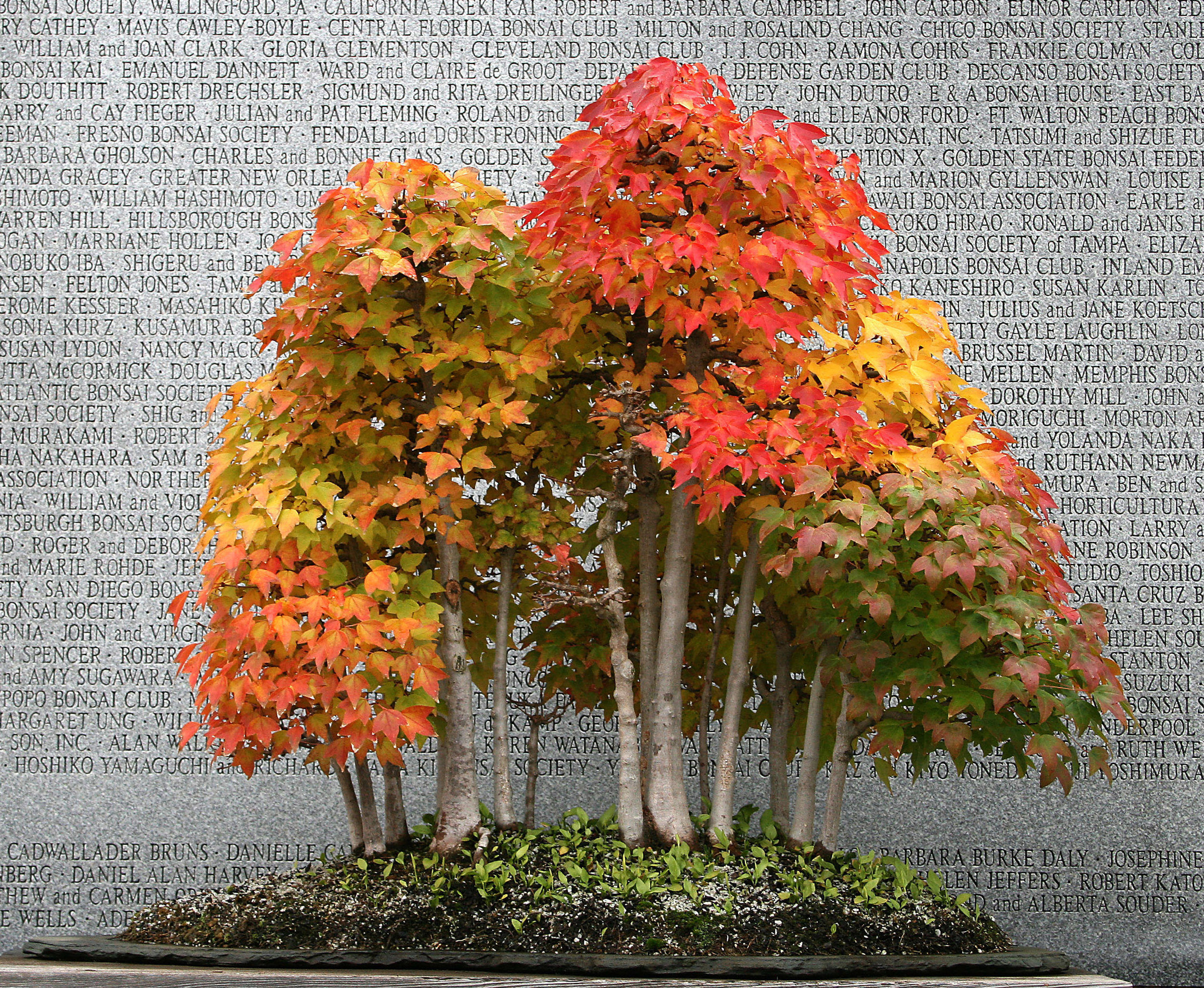
Acer buergerianum
In training since 1985
Gift of Brussel Martin, 1990
Forest-style bonsai are often planted on a rock slab with the soil held in place by moss. This creates a natural-looking hillock setting.
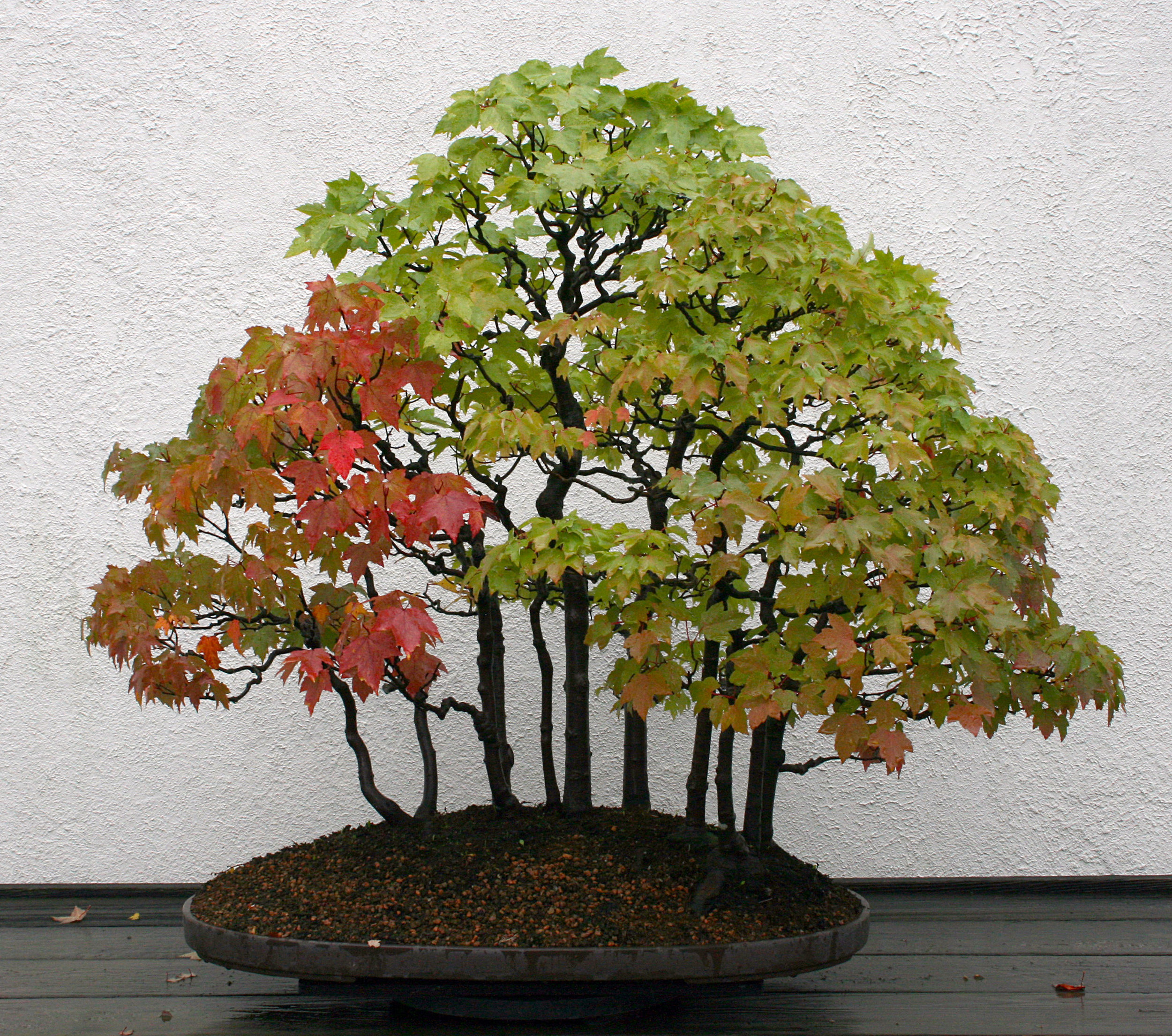
Acer rubrum var. drummondii
In training since 1974
Gift of Vaughn L. Banting, 1990
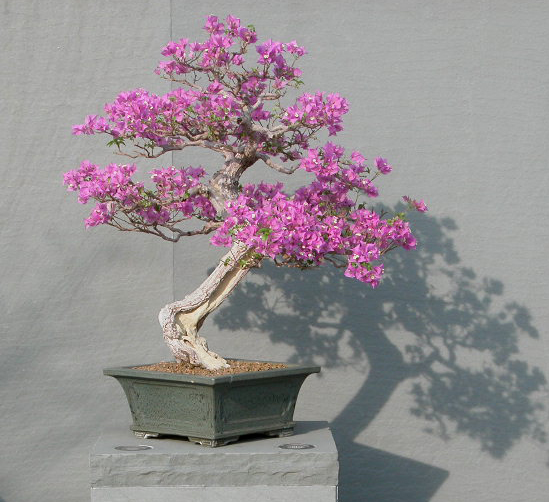
Bougainvillea glabra
In training since 1985
Gift of Harold M. Harvey, 1990
Even though bougainvillea is a vine, it can be grown as a bonsai by continually pruning the long growth.
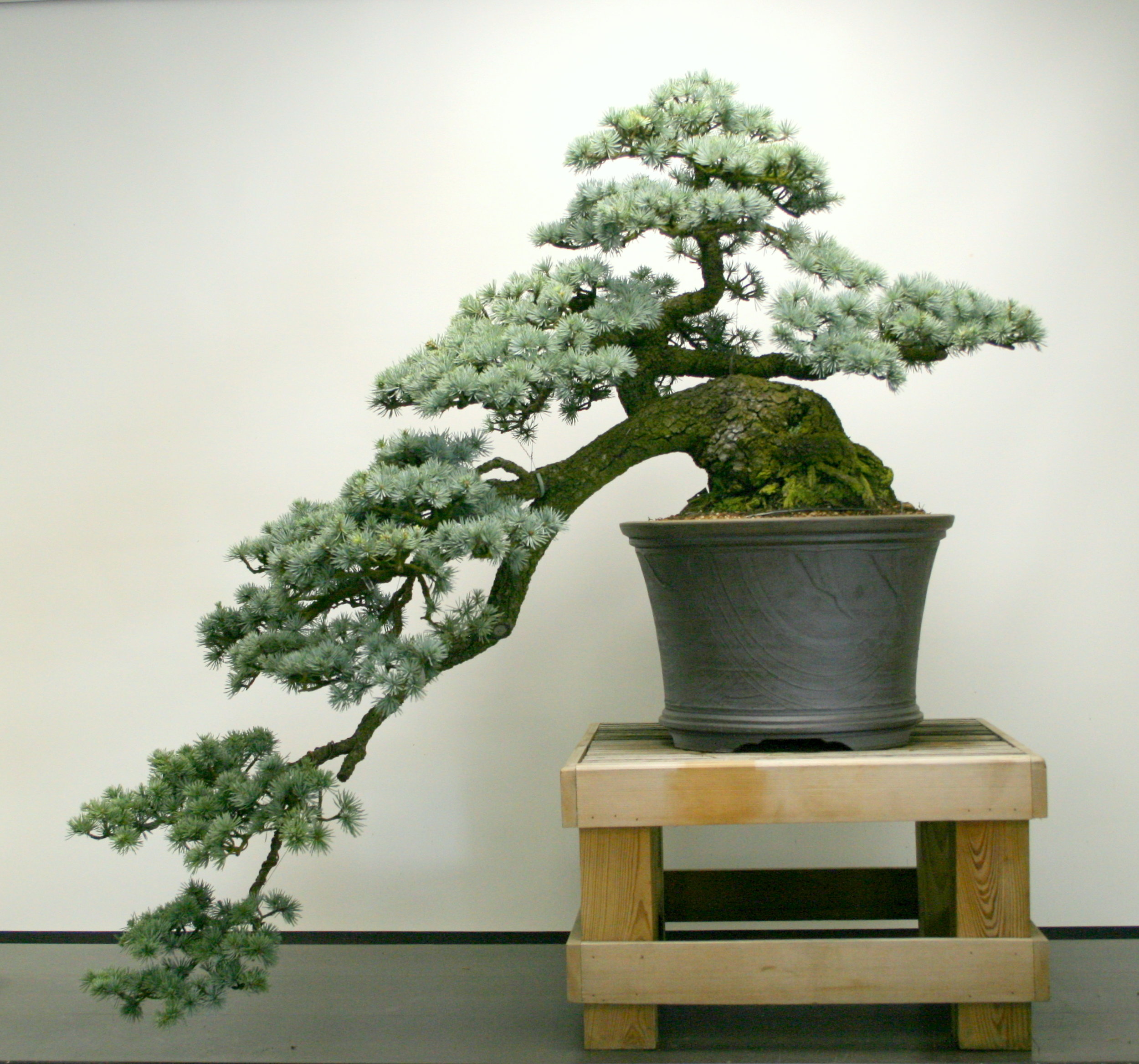
Cedrus atlantica Glauca Group
In training since 1960
Gift of Fred & Ernesta Ballard, 1990
This bonsai is trained in the cascade style, in which the tree is trained to imitate those growing from the side of a cliff. Instead of growing upward toward the sun, the trunk and branches are pulled downward by gravity.
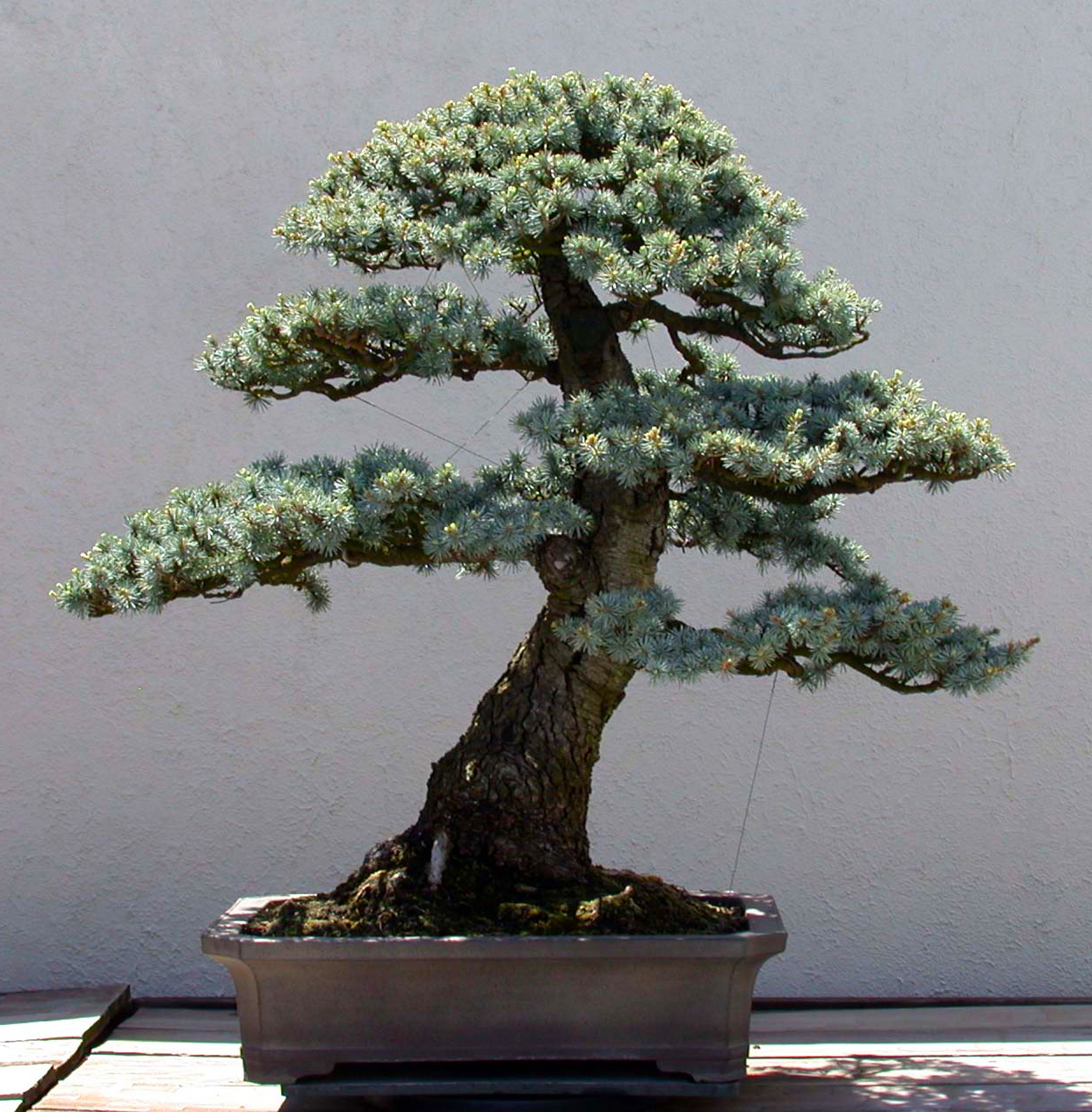
Cedrus atlantica Glauca Group
In training since 1948
Gift of John Yoshio Naka, 1990
One reason John Naka named this bonsai Gimpo, "Silver Phoenix," was because like the mythical bird rising from ashes, even the ugliest tree can become a majestic bonsai in the hands of a master.
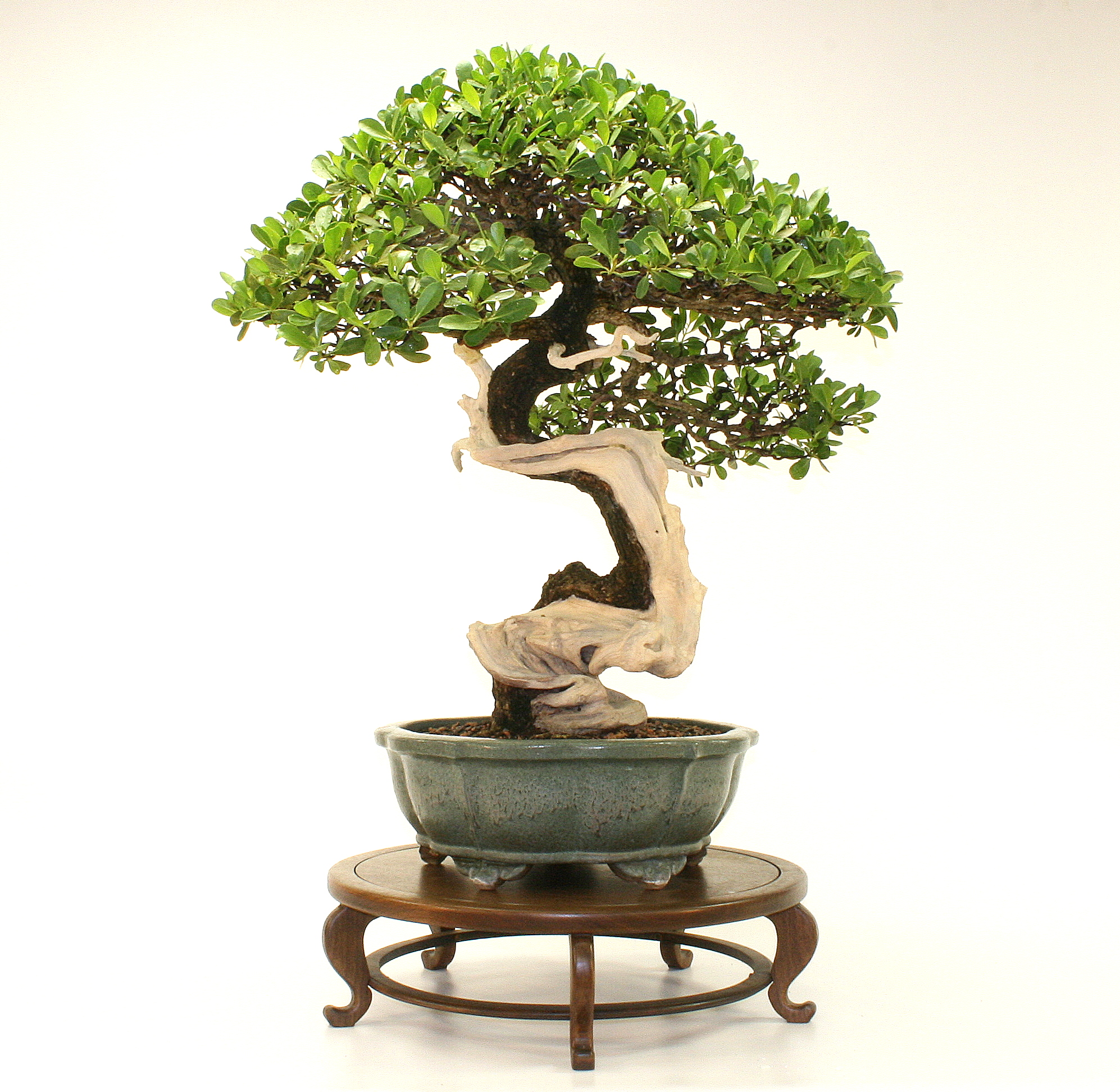
Conocarpus erectus
In training since 1975
Gift of Mary Madison, 1990
Buttonwood is a native American species from the swamps of Florida. Its naturally twisted trunks make it popular material for tropical bonsai.

Crataegus laevigata
In training since 1955
Gift of Bertram F. Bruenner, 1990
The artist created the unique twisting trunk on this bonsai by shaping it with wire when it was still a seedling and very pliant. Once the tree matured, the wire could be removed.
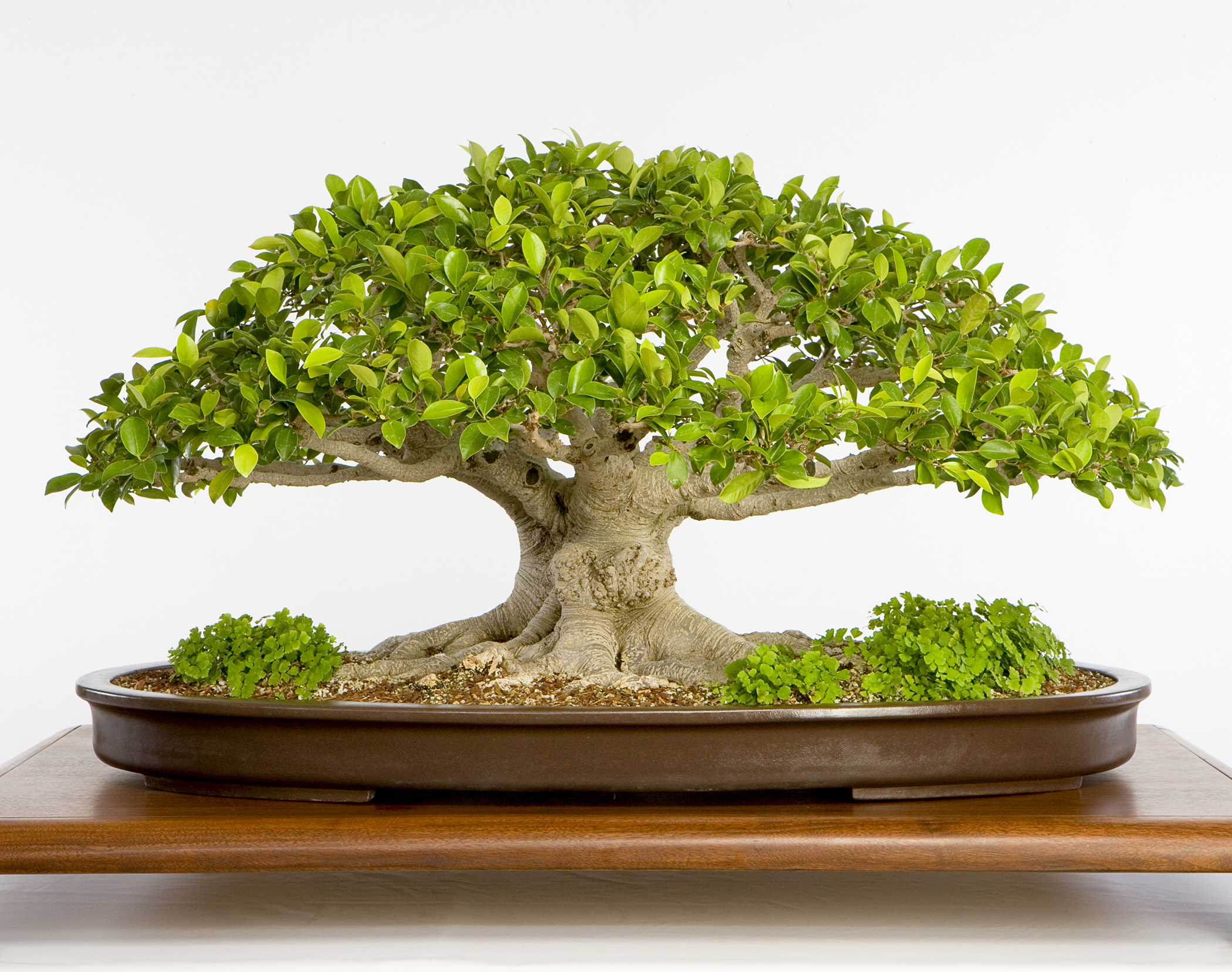
Ficus microcarpa
In training since 1971
Gift of Mike Uyeno, 1990
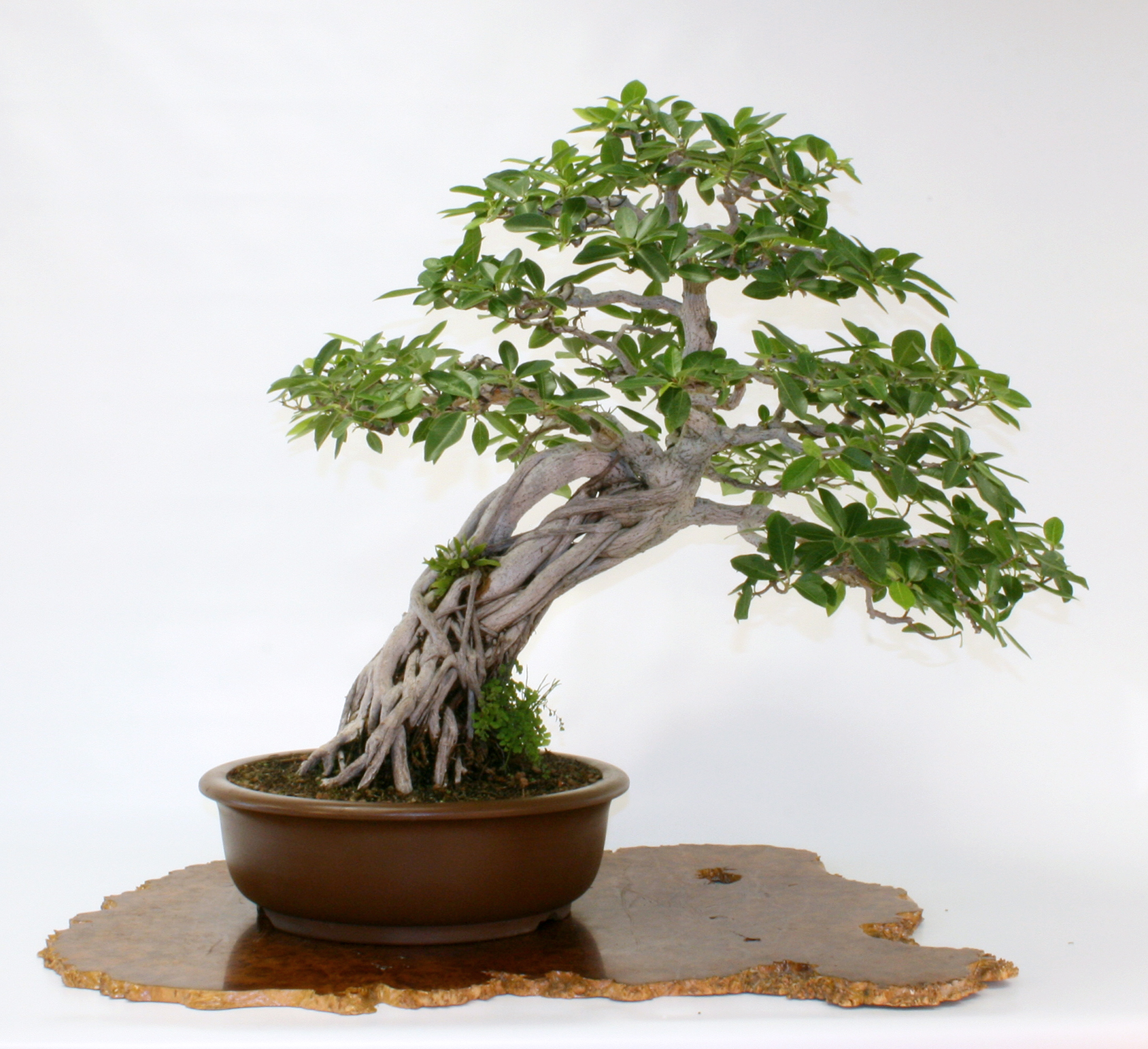
Ficus natalensis
In training since 1976
Gift of David W. Fukumoto, 1990
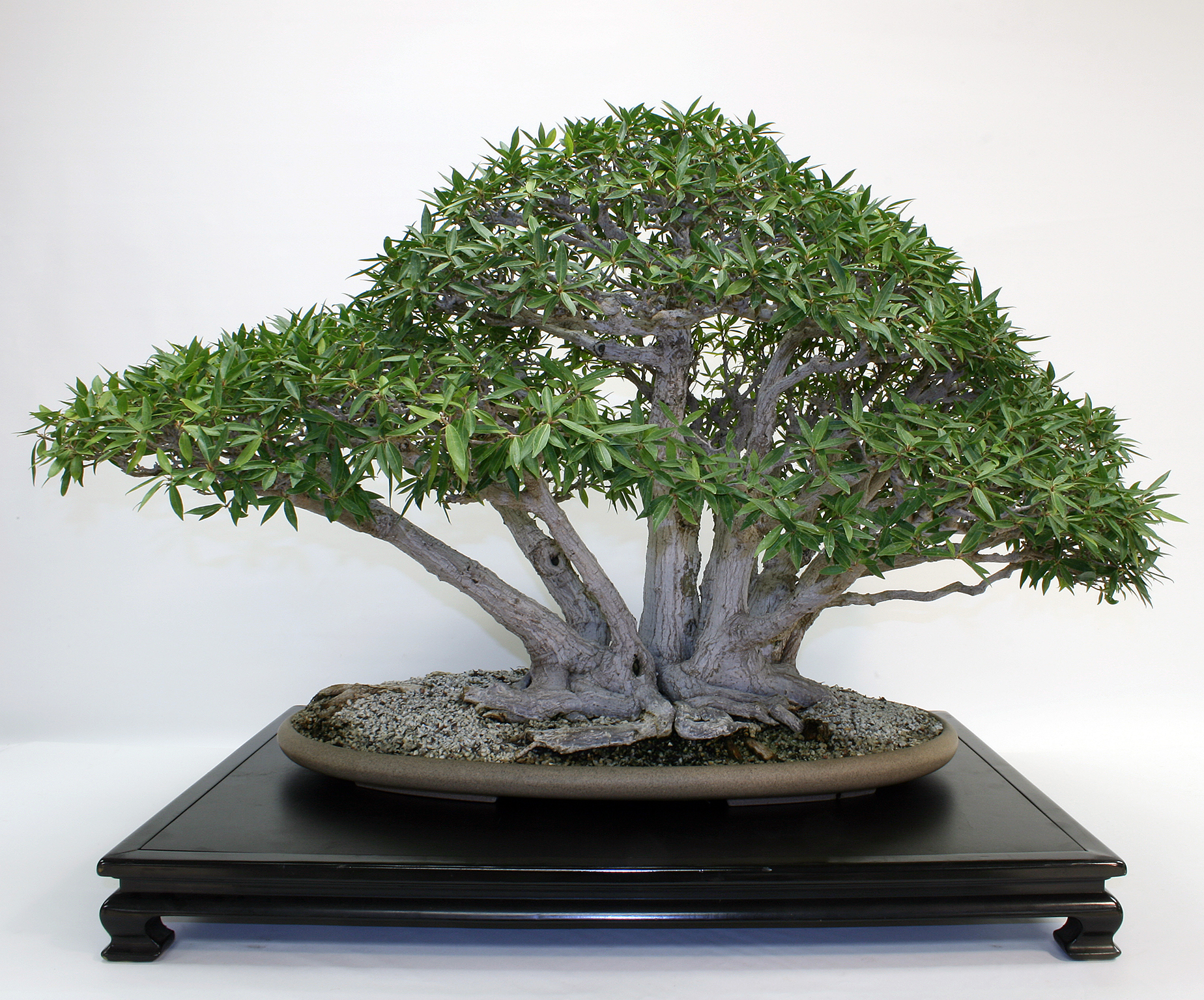
Ficus salicaria
In training since 1974
Gift of Helen C. Souder, 1990
Clump style bonsai are trees that have multiple trunks emanating from a single base. Ficus make good trees for bonsai beginners because they grow quickly.
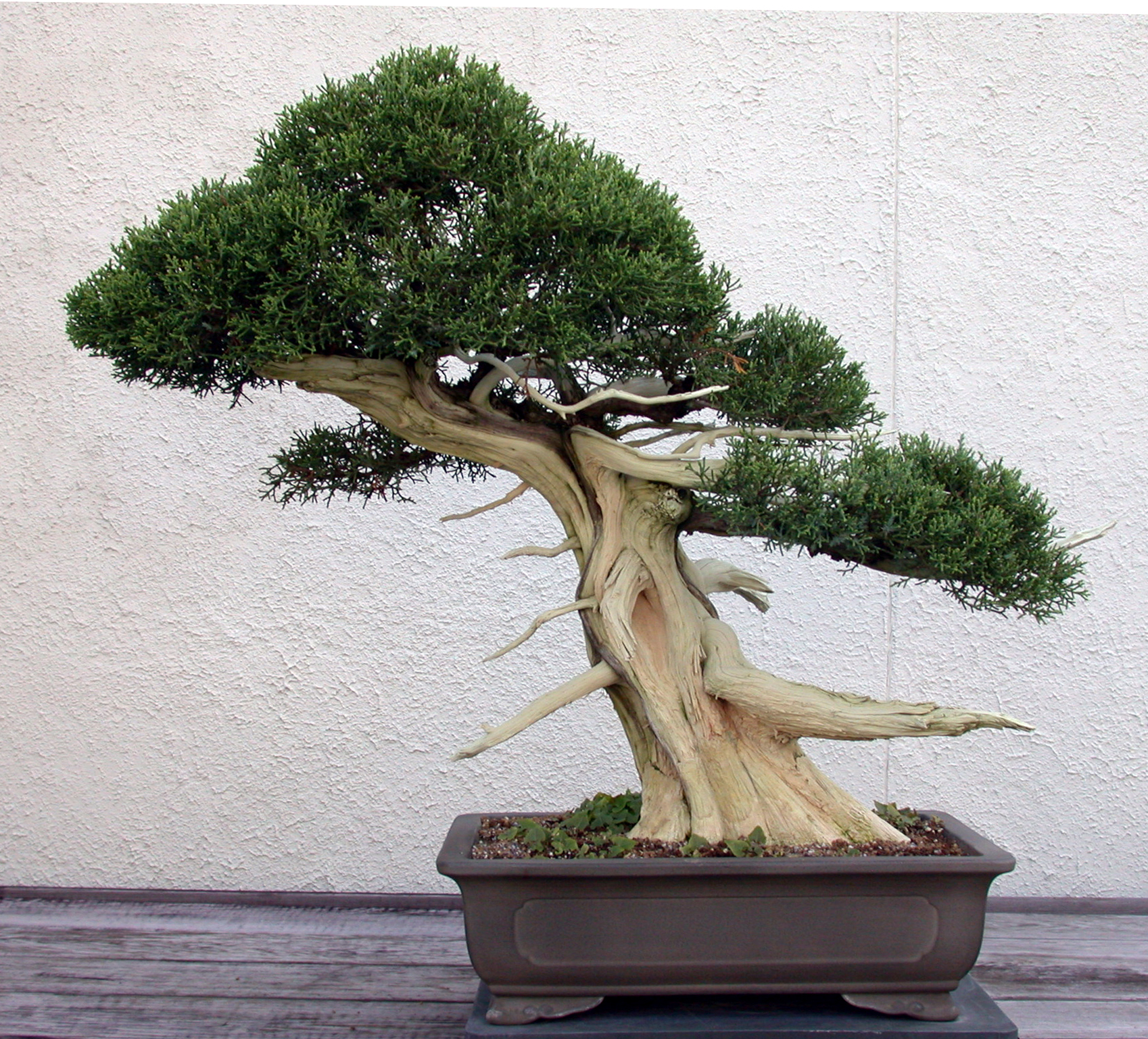
Juniperus californica
In training since 1967
Gift of Kiichi Wayne Takayasu, 1990
This native juniper from the mountains in California is one of the most popular trees to collect for bonsai. California junipers grow slowly, usually over hundreds of years, and have interesting deadwood.
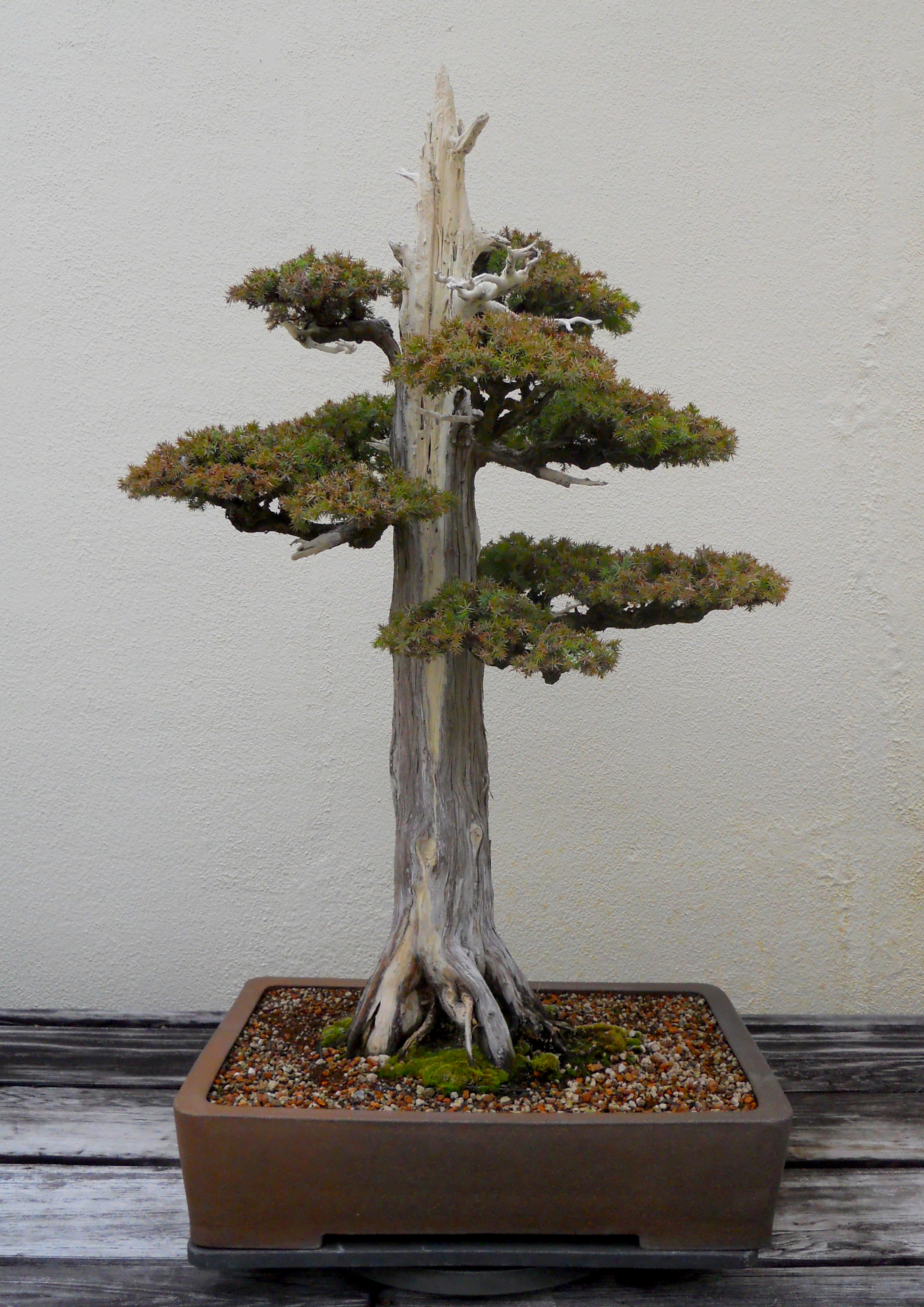
Juniperus chinensis 'Femina'
In training since 1975
Gift of James & Helen Barrett, 1990
This tree has been styled to look like a lone tree hit by lightening, causing the top to die. It was a style made popular by the famous American bonsai master John Naka.
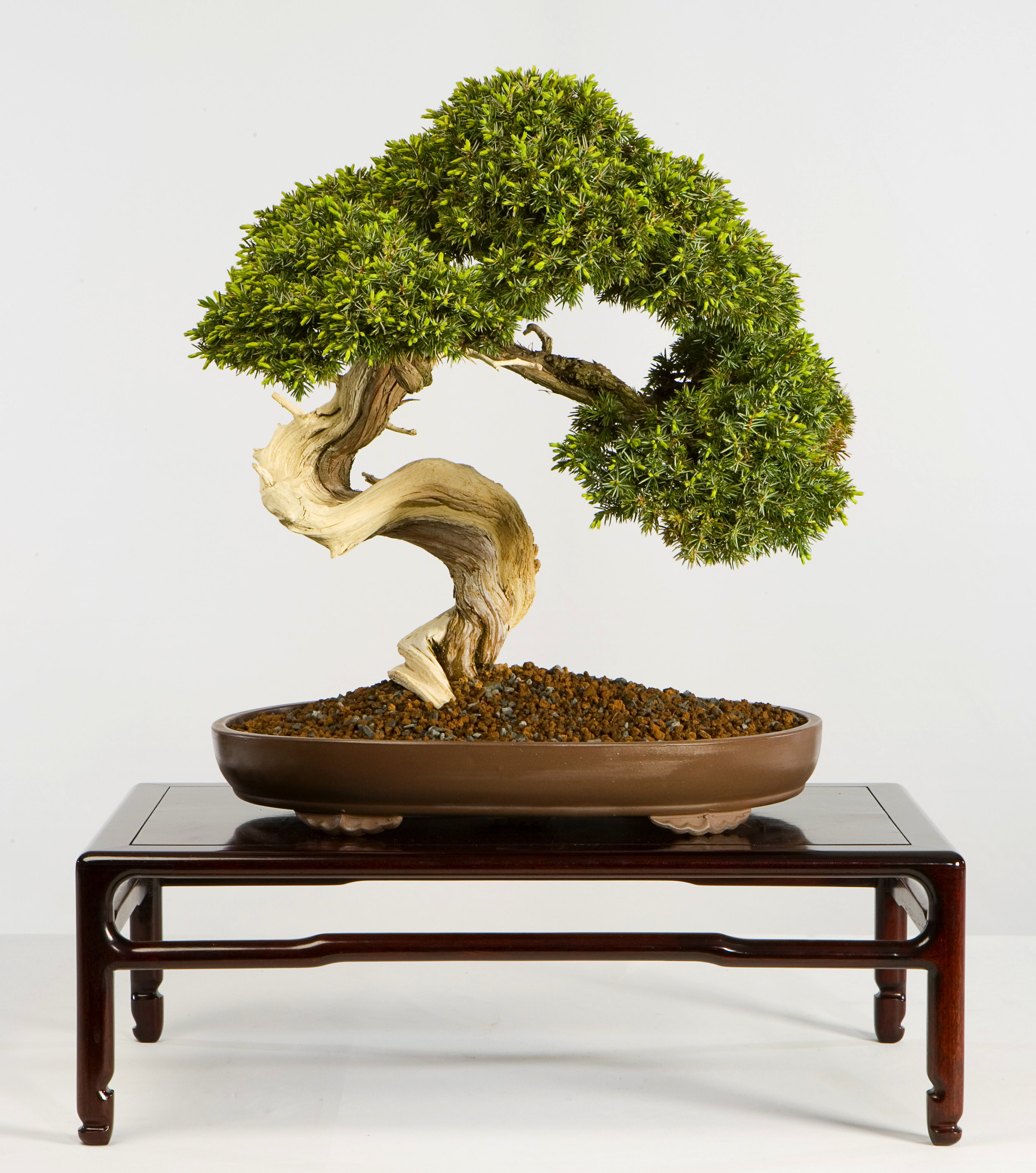
Juniperus communis var. depressa
In training since 1980
Gift of Jack B. Douthitt, 1990
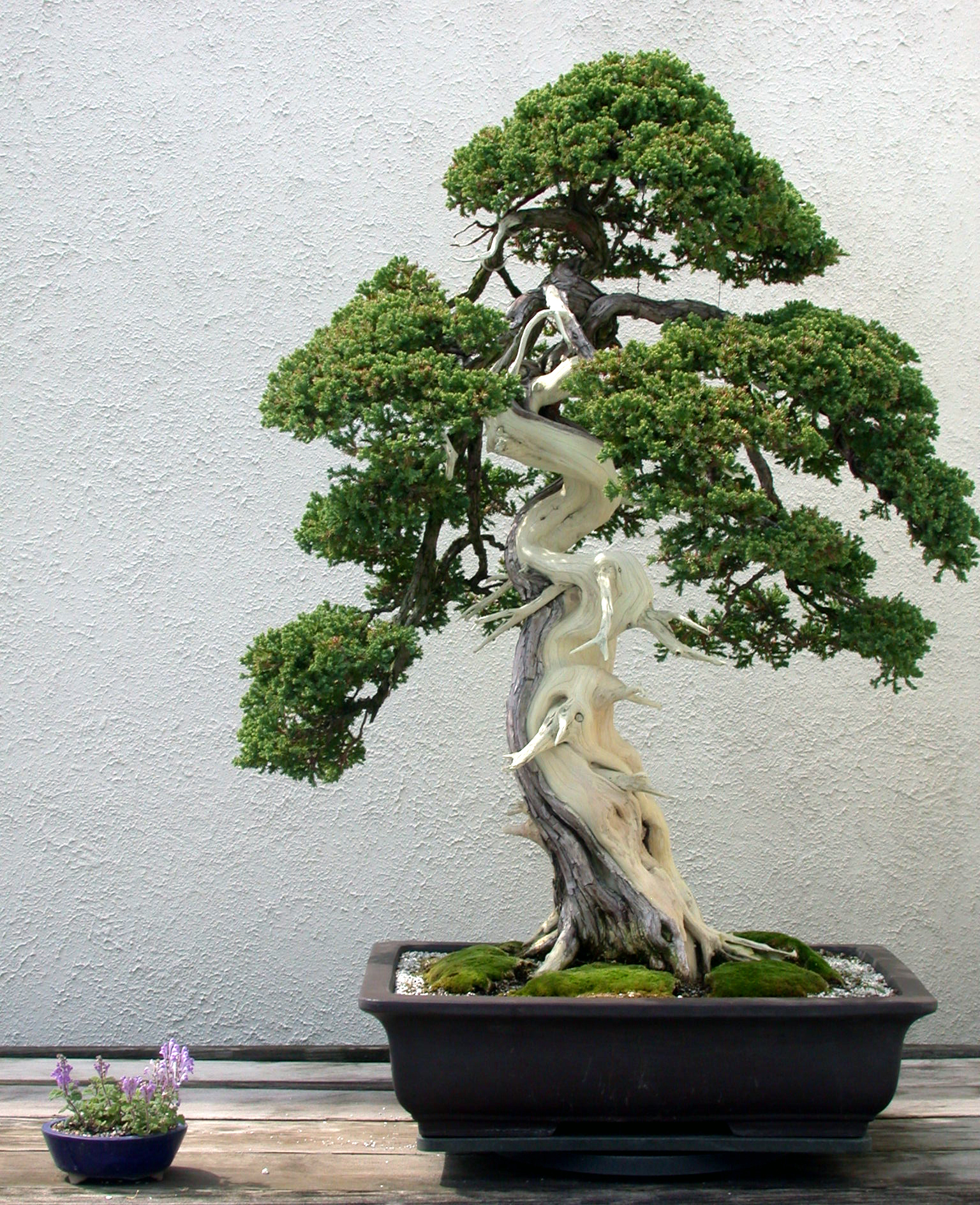
Juniperus procumbens 'Nana'
In training since 1975
Gift of Thomas Tecza, 1990
This dwarf type of juniper came to the United States from England about 1900 for use in gardens; however, its small size soon made it a popular choice for beginner bonsai classes.
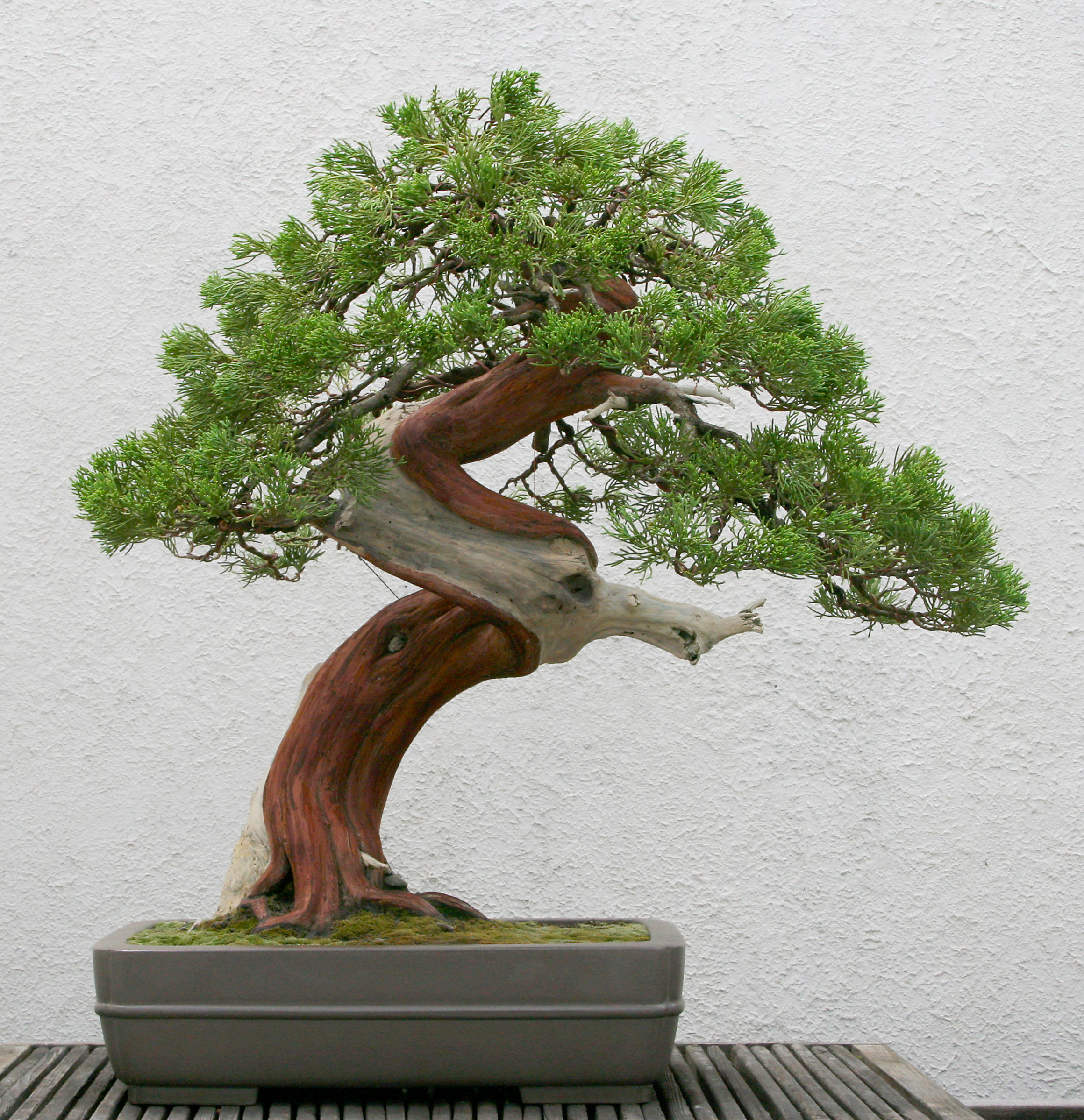
Juniperus horizotalis 'Prostrata'
In training since 1969
Gift of Kaz & Kiyo Yoneda, 1990
The bonsai artists created the deadwood on this nursery tree in order to make it look like an old juniper collected from the mountains.
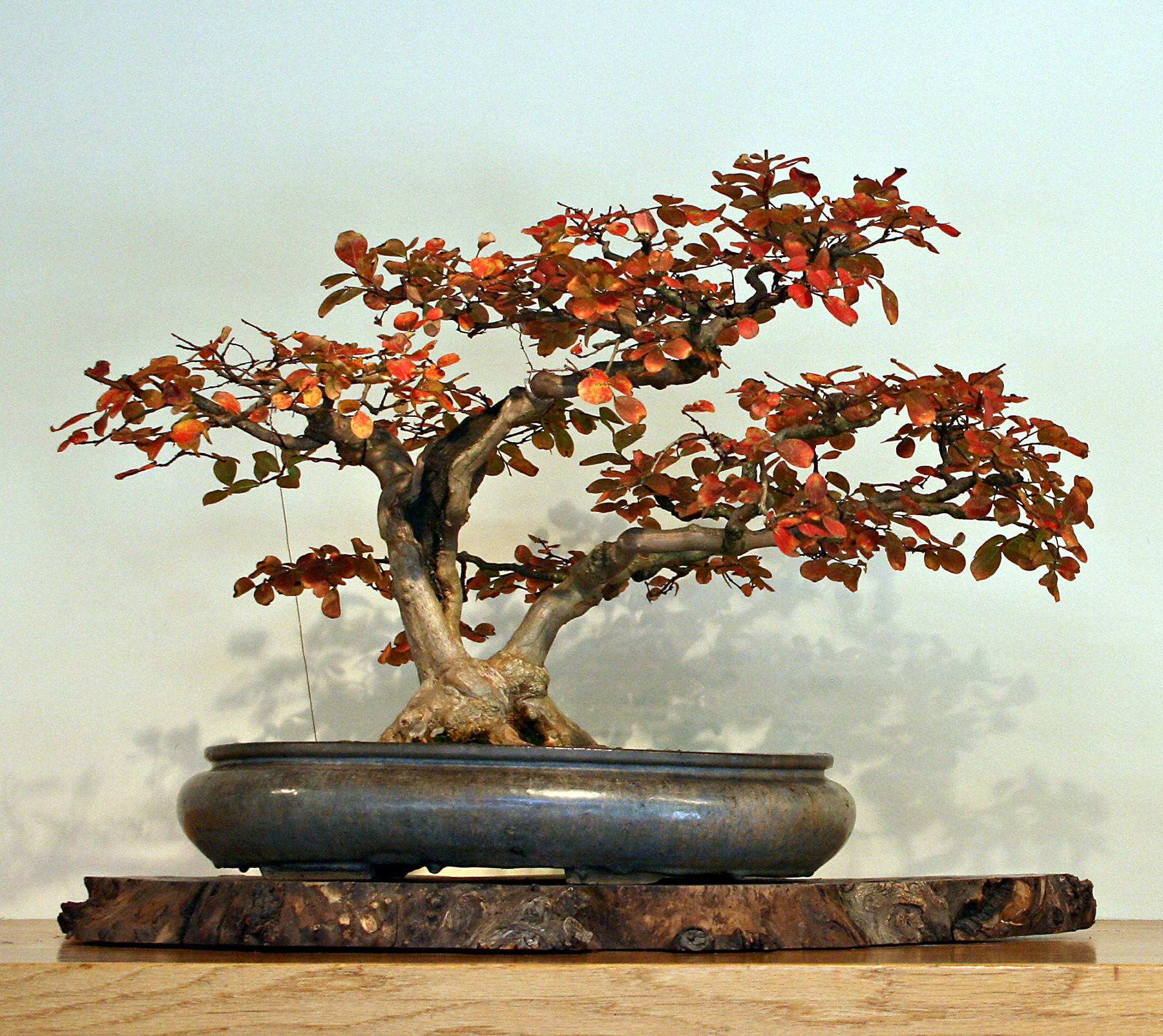
Lagerstroemia indica
In training since 1930
Gift of Yuji Yoshimura, 1990
This tree was started in Japan from a cutting by Yuji’s father, Toshiji Yoshimura.
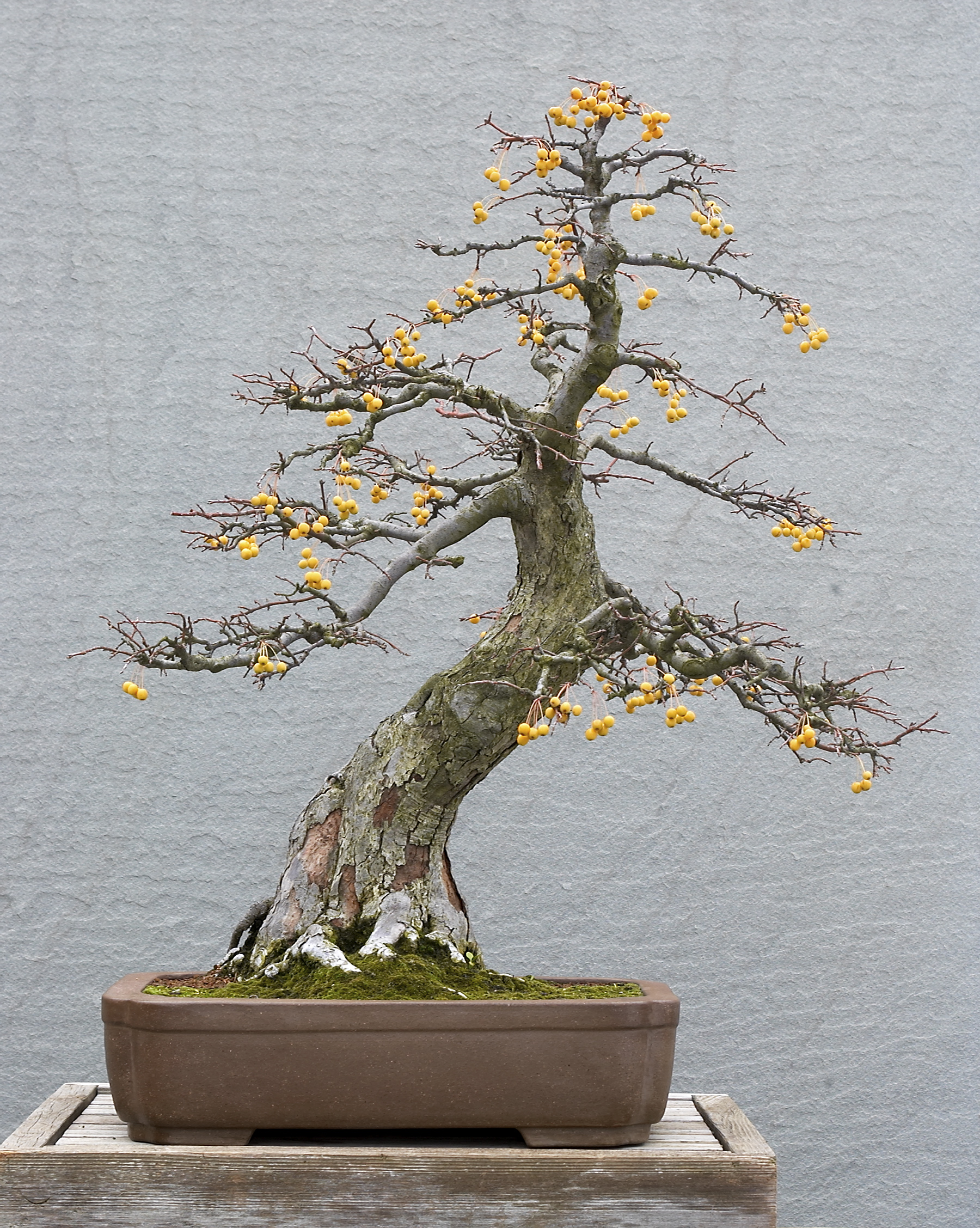
Malus sp.
In training since 1978
Gift of Richard Meszler, 1990
Bonsai artists prefer crabapples over regular apple trees because their smaller fruits are more in keeping with the scale of a bonsai tree.
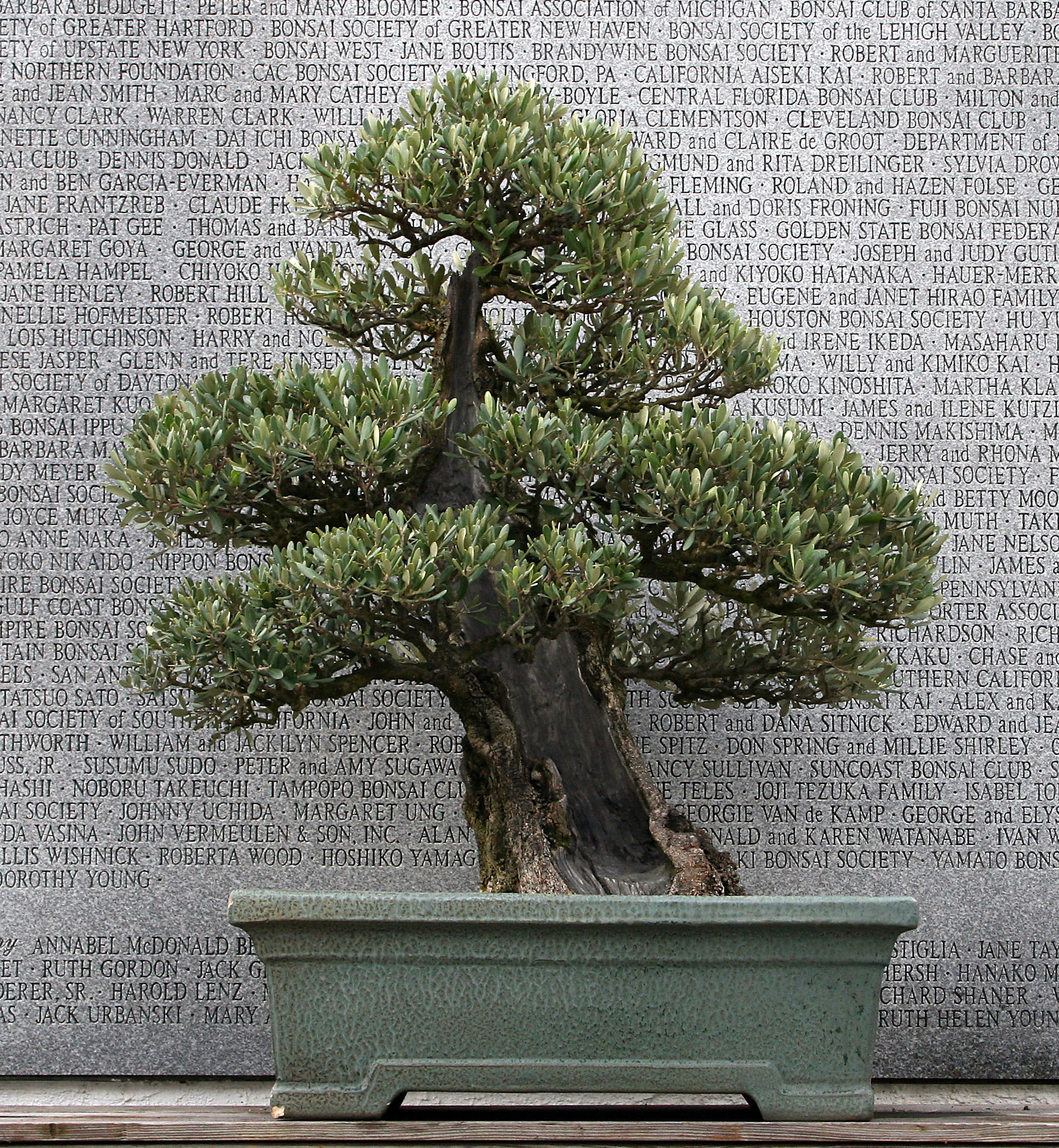
Olea europaea
In training since 1963
Gift of Melba Tucker, 1990
Originally created from a 20-foot tree, this bonsai achieves the look of great age in part through the hollowed out trunk, which in nature usually indicates that the tree has lived a long time.
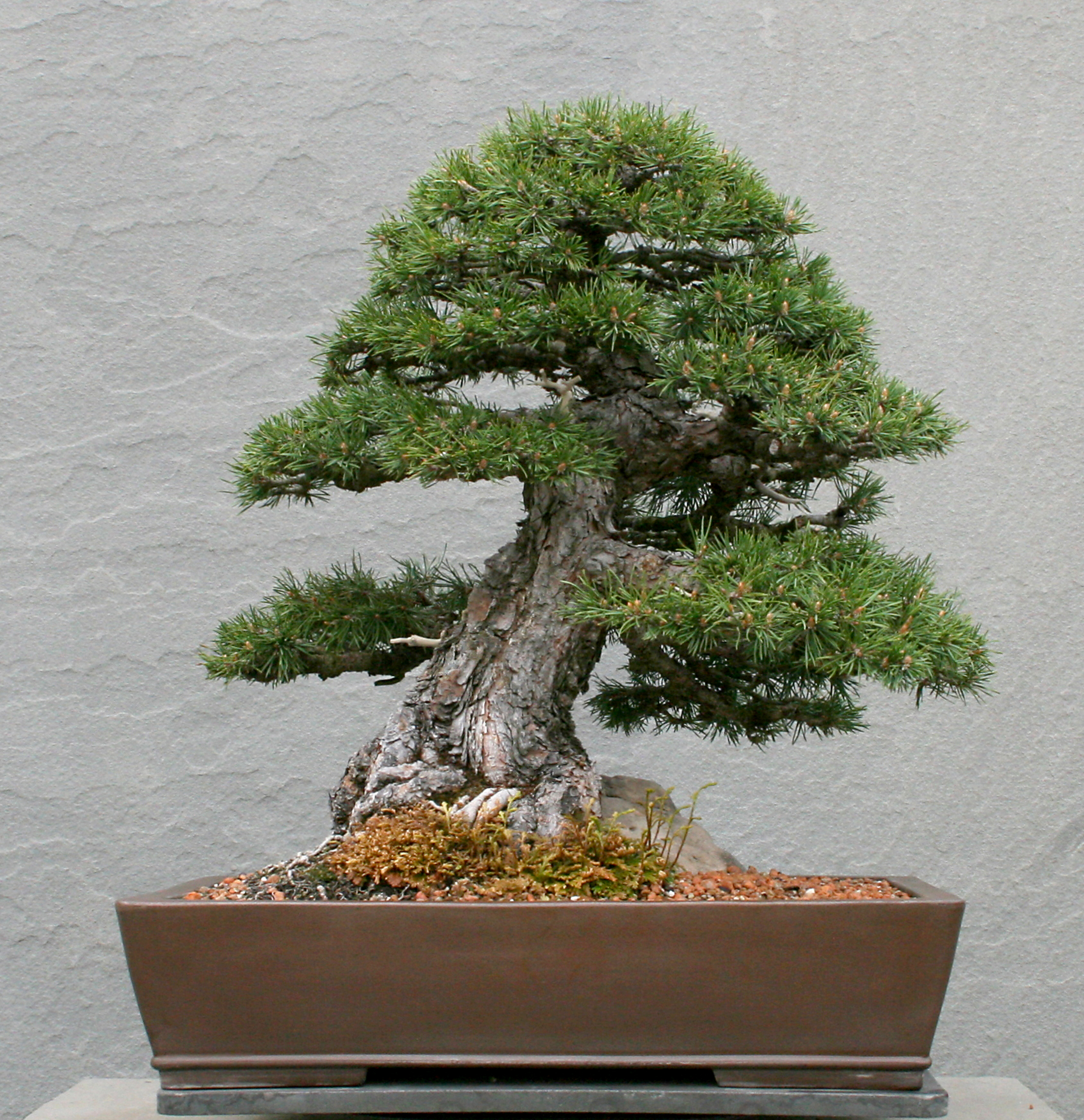
Pinus sylvestris
In training since 1972
Gift of Roland Folse, 1990
Root-over-rock style.
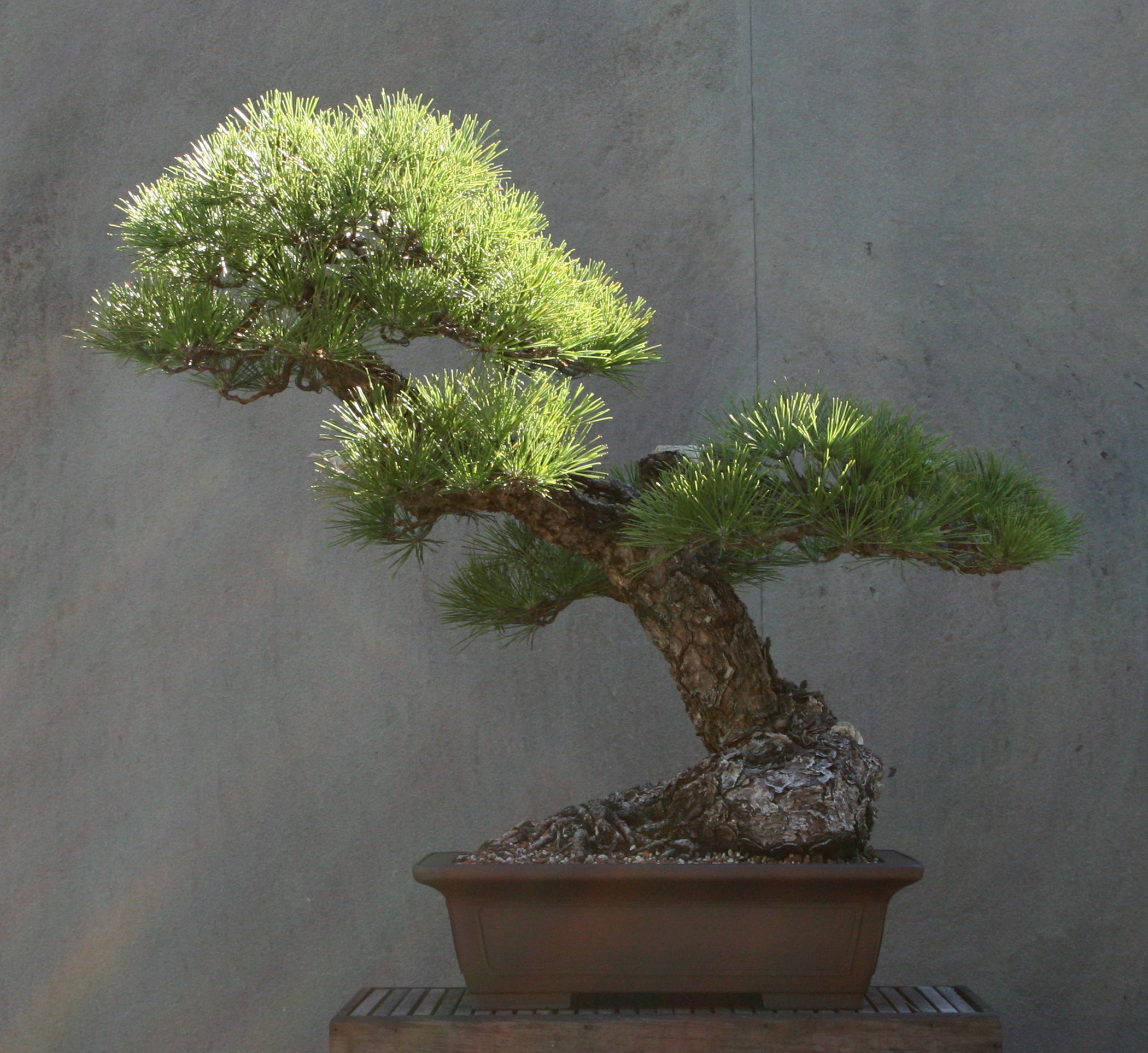
Pinus thunbergii
In training since 1970
Gift of Daniel Robinson, 1990
A very unusual bonsai! The trunk is an old ponderosa pine, but the grafted branches are Japanese black pine. Bonsai artists consider the 10-inch-long needles of the ponderosa to be out of scale for bonsai.
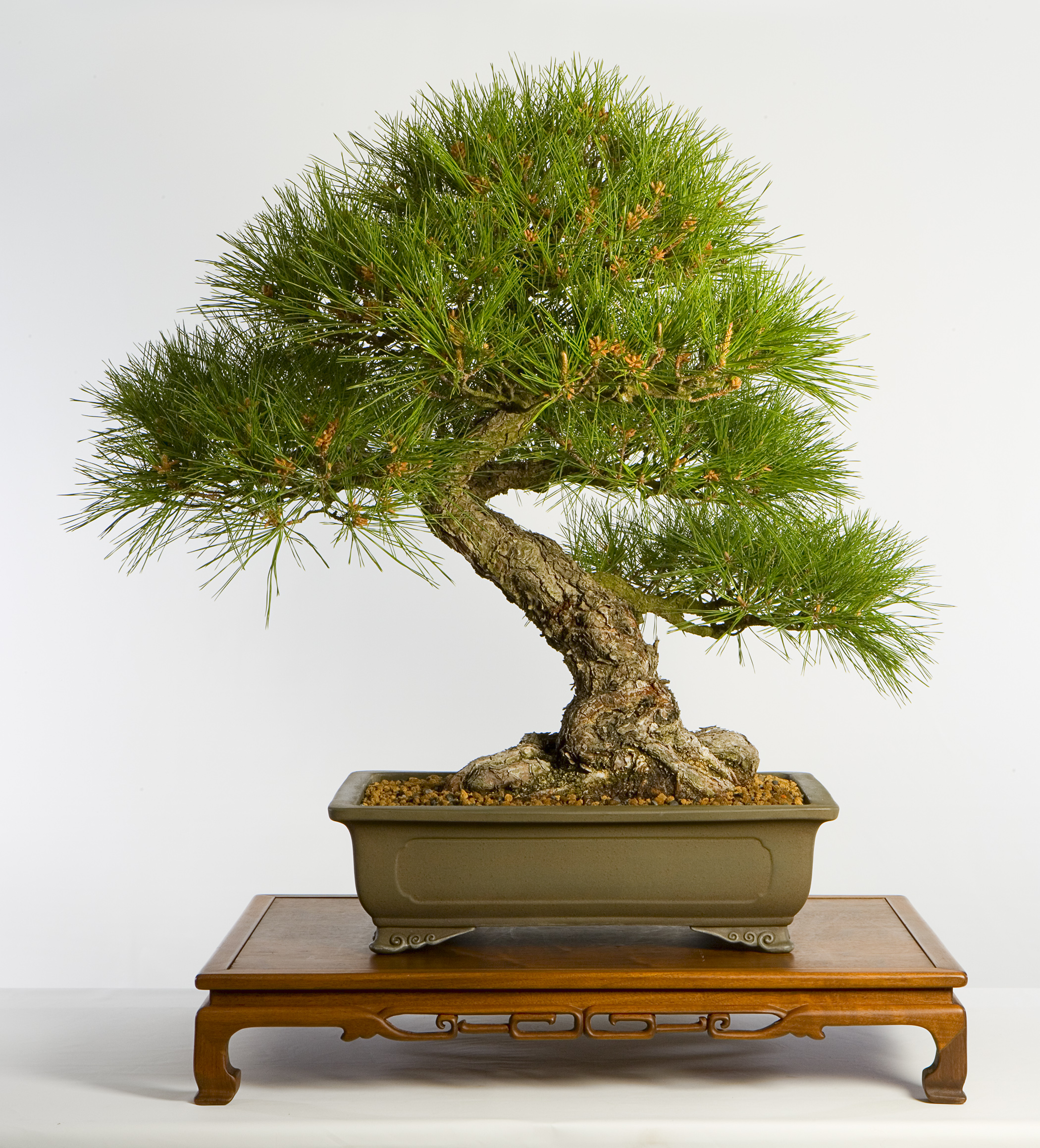
Pinus thunbergii
In training since 1950
Gift of Haruo Kaneshiro, 1990
Every summer pines grow new buds at the tips of their branches. In order to maintain a bonsai’s styling, the buds must be removed. Because the buds look like candles, this process is called “candling.”
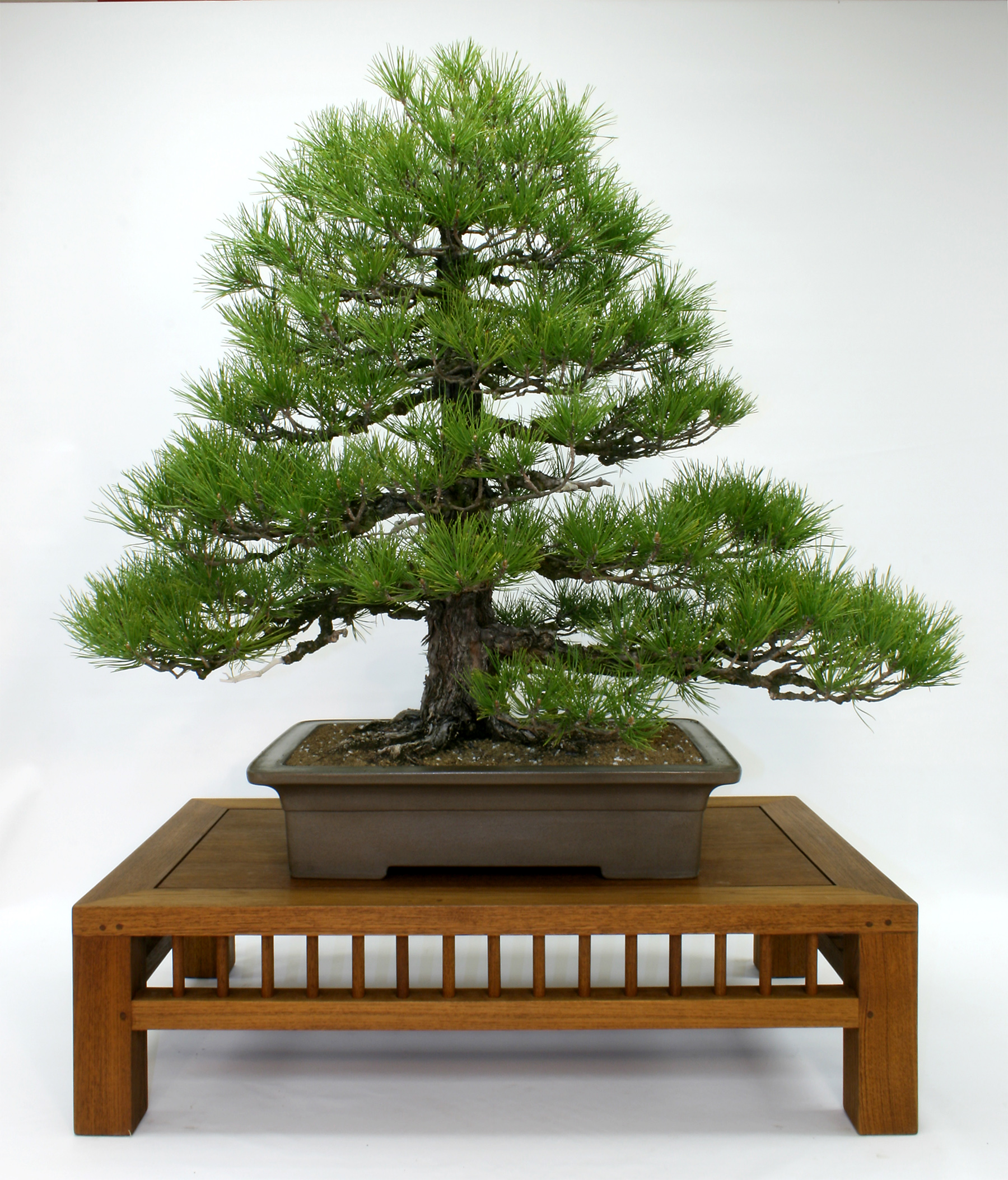
Pinus thunbergii
In training since 1955
Gift of George Yamaguchi, 1990
Most black pine bonsai are created from mature collected material. This bonsai is unusual because it has been in training since it sprouted from a seed.
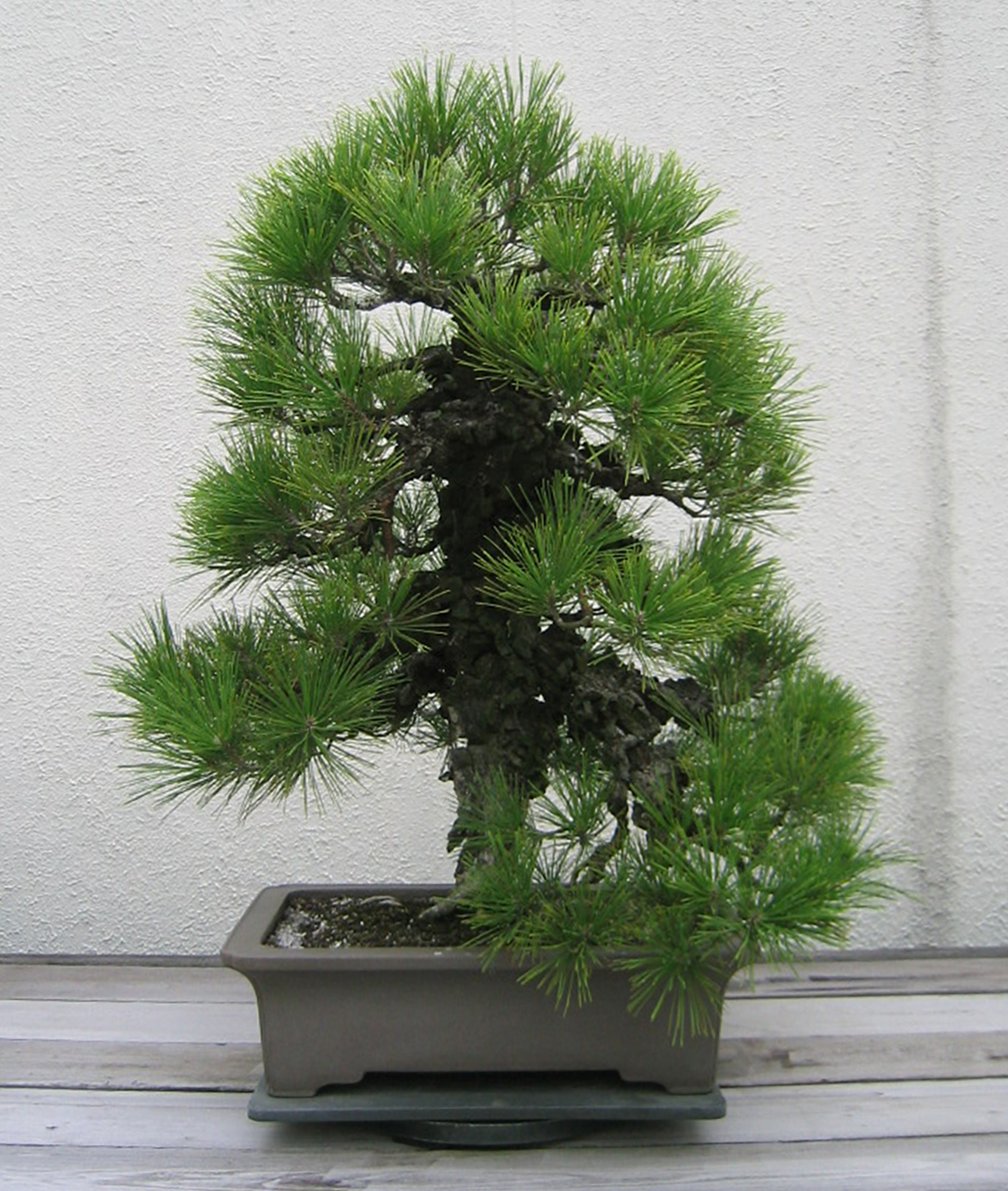
Pinus thunbergii Corticosa Group
In training since 1964
Gift of Muriel R. Leeds, 1986
Yuji Yoshimura created this bonsai by grafting cork-bark Japanese black pine to Japanese black pine roots.

Punica granatum
In training since 1963
Gift of Alice T. Naka, 1990
One of the goals of bonsai is to make a tree appear older and bigger than it actually is. By severely tapering the trunk, the artist is creating the illusion of a majestic old tree.
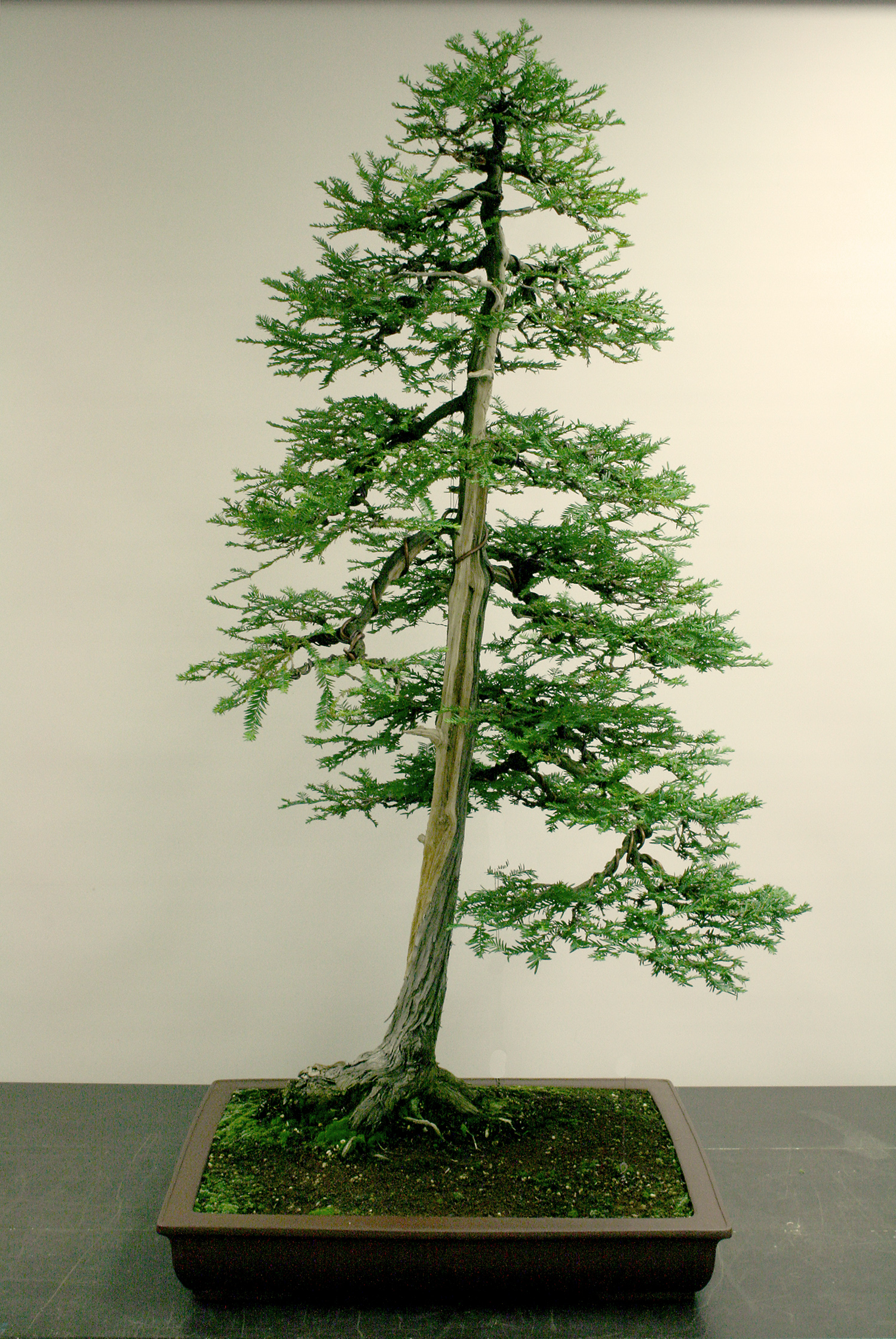
Sequoia sempervirens
In training since 1954
Gift of June M. Chambers, 1990

Taxodium distichum var. distichum
In training since 1987
Gift of Guy Guidry, 1990
Before it became a bonsai this tree was 25 feet tall. The trunk of a mature tree provides the wide flare at the base of the tree so desirable in bonsai.
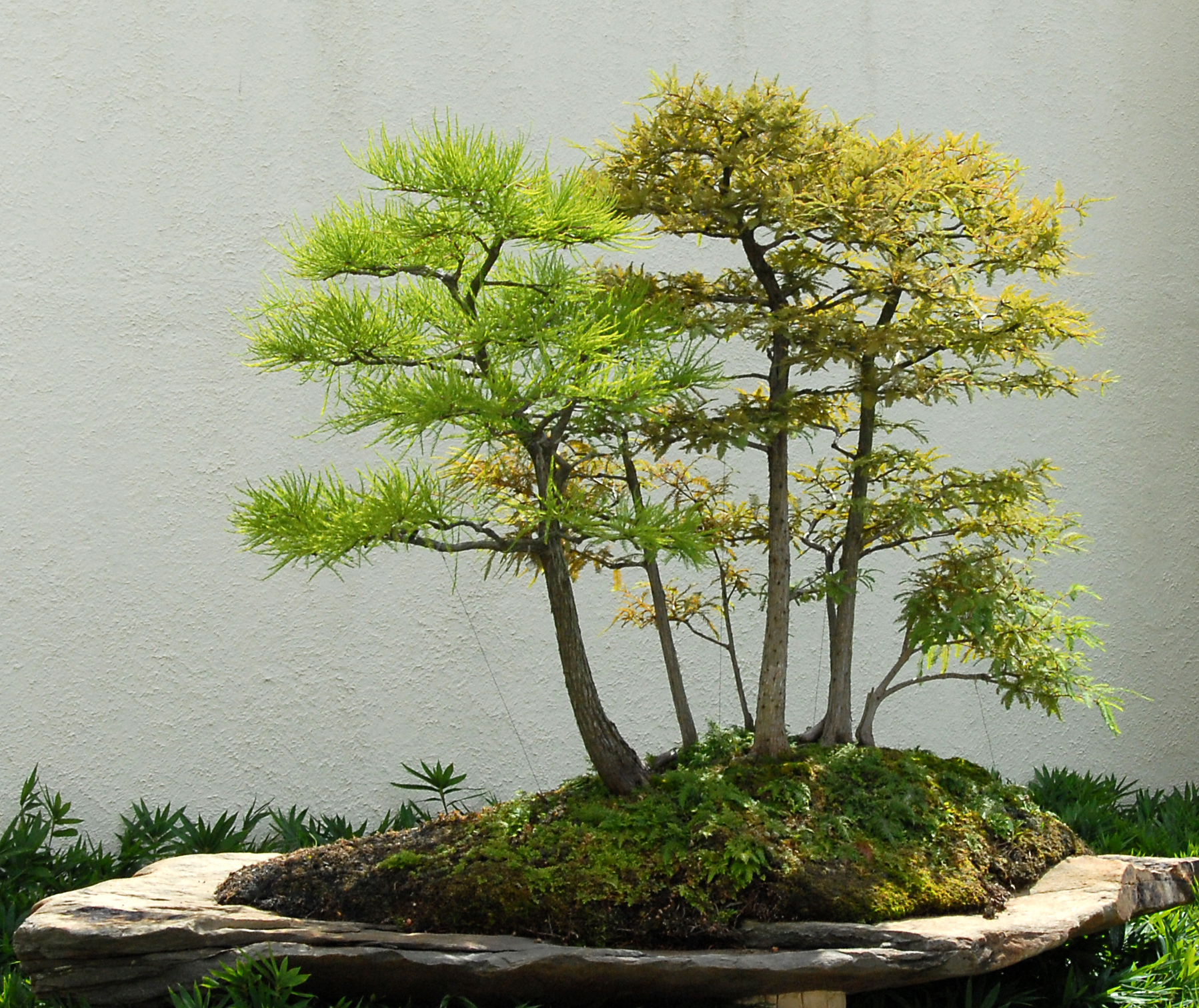
Taxodium distichum var. distichum and Taxodium distichum var. imbricarium
In training since 1988
Gift of Jim Fritchey & Dick Wild, 1990
The creators of this forest style bonsai used two different types of cypress collected in southwest Florida, planting them atop a 2000-pound natural rock slab.
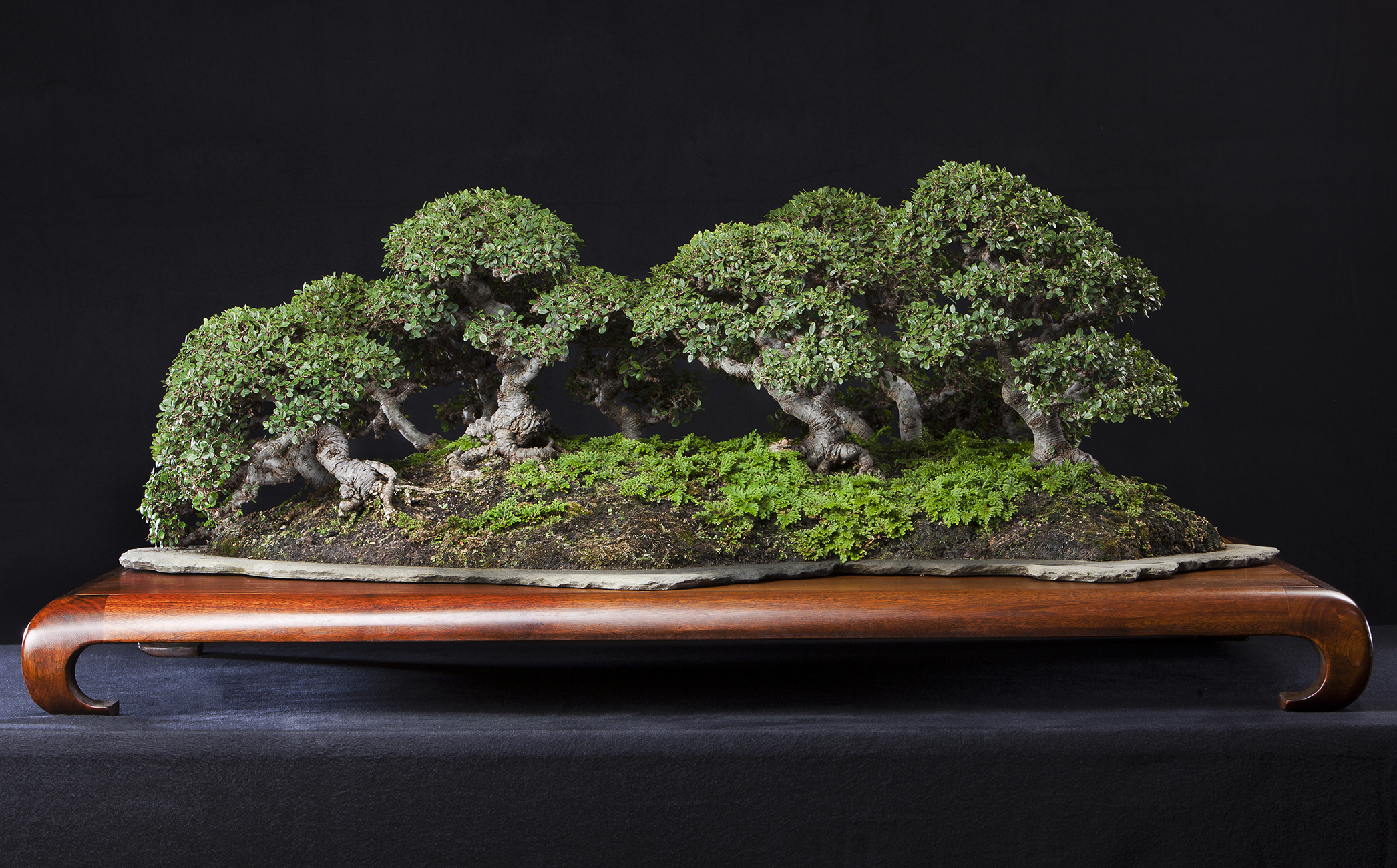
Ulmus parvifolia 'Catlin'
In training since 1988
Gift of Susanne Barrymore, 1990
This forest planting was created from cuttings of a mutant contorted Chinese elm developed as a cultivar specifically for use in bonsai.
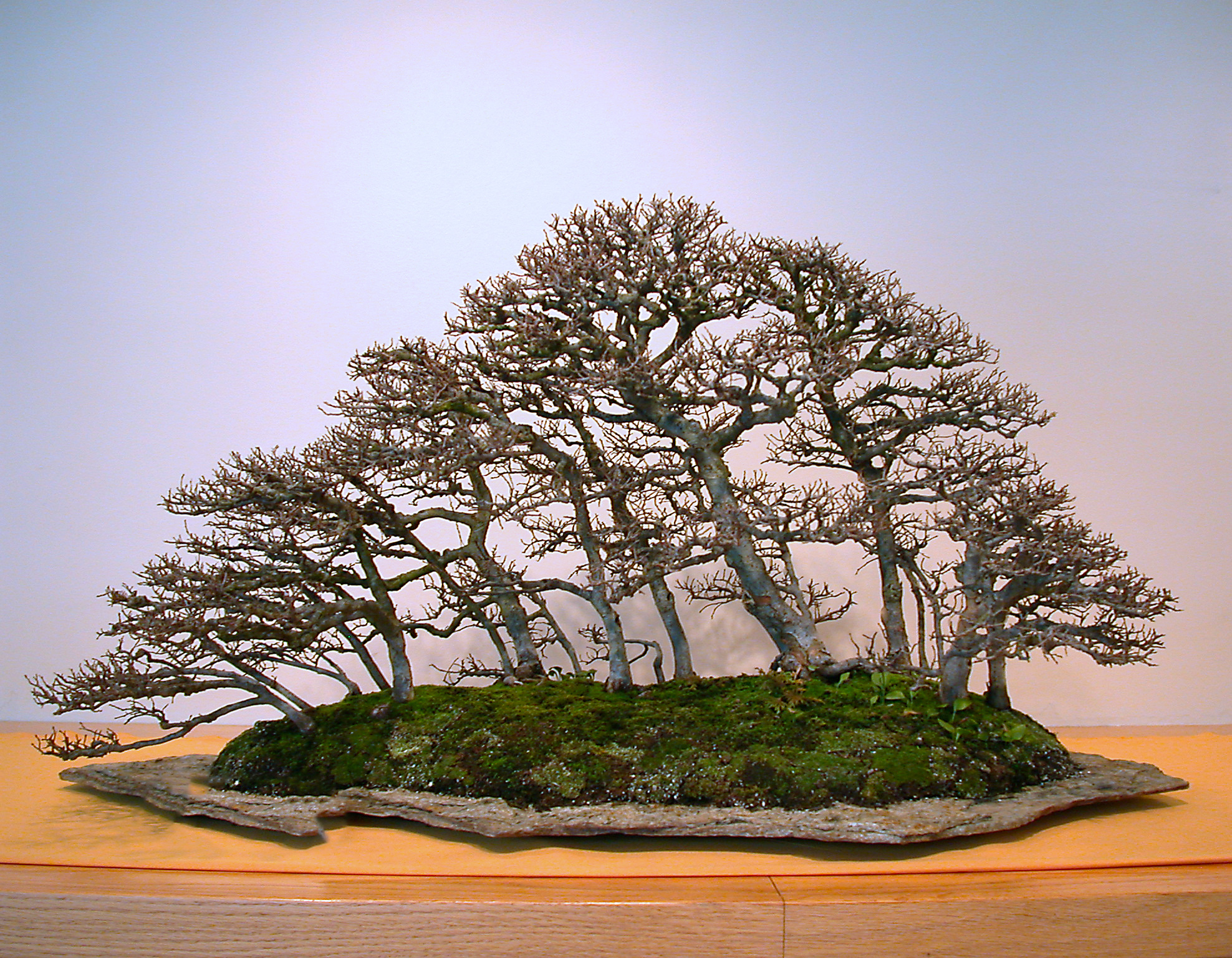
Ulmus parvifolia
In training since 1970
Gift of Marybel Balendonck, 1990
Do you "feel" the wind blowing through this forest? The artist has arranged and styled the trees so they slant to the left, as if in the presence of a steady breeze.
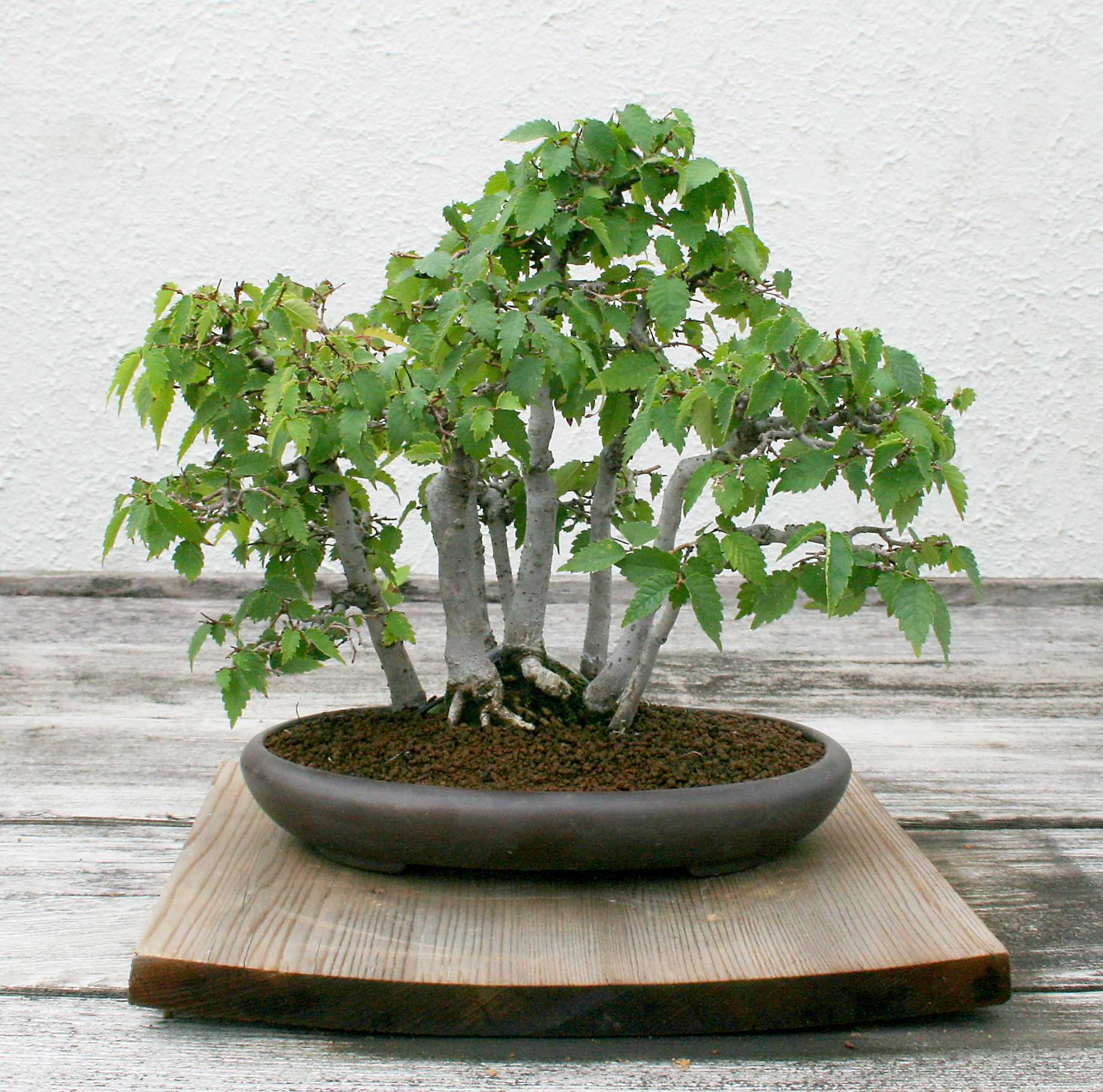
Zelkova serrata
In training since 1972
Gift of Doris W. Froning, 1990
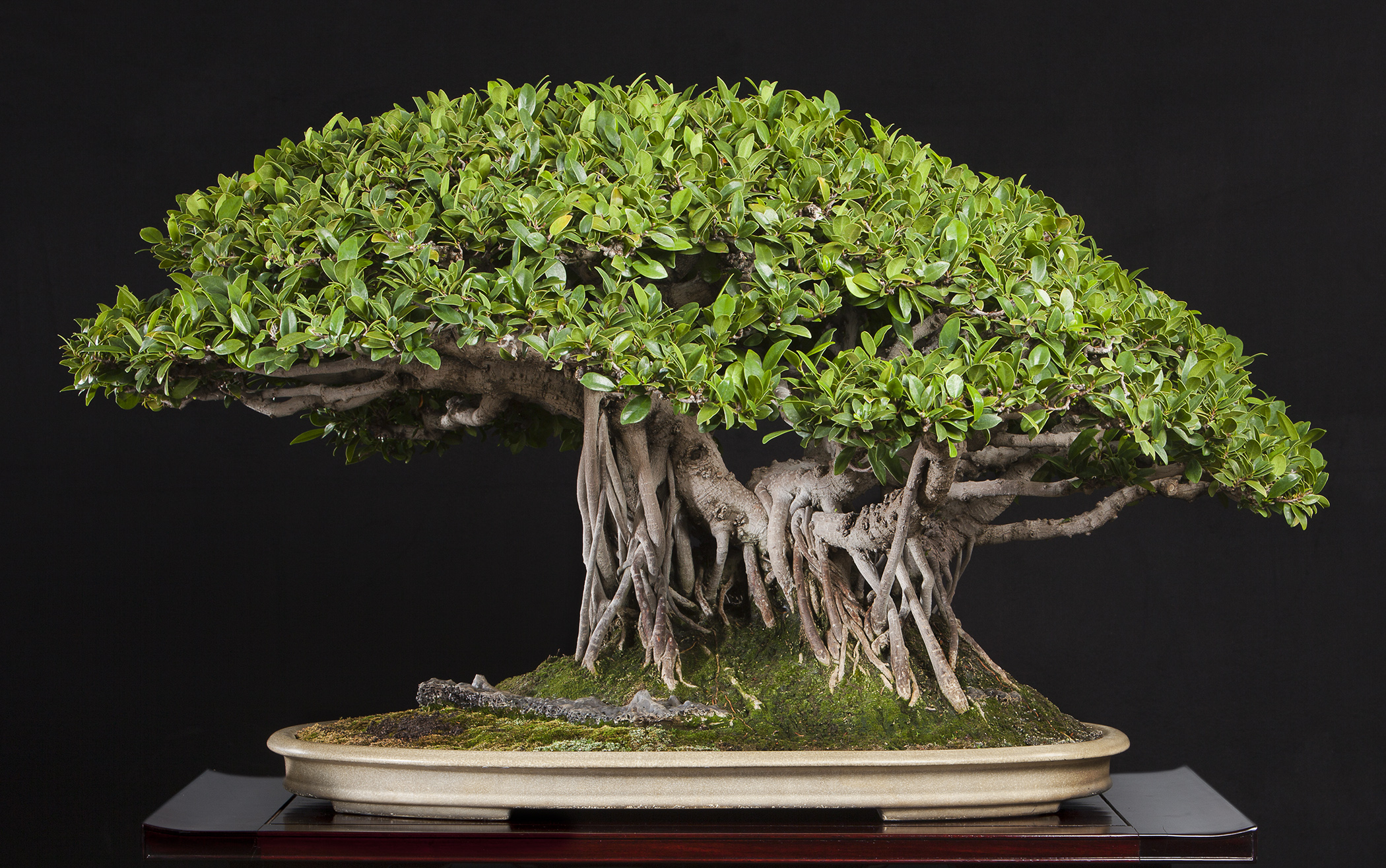
Ficus microcarpa 'Kaneshiro'
In training since 1975
Gift of Haruo Kaneshiro, 1990
This ficus was hybridized by Hawaii's foremost bonsai master, Haruo Kaneshiro. The styling imitates the natural look of old banyan trees in the tropics, with their aerial roots reaching down to add multiple “trunks.”
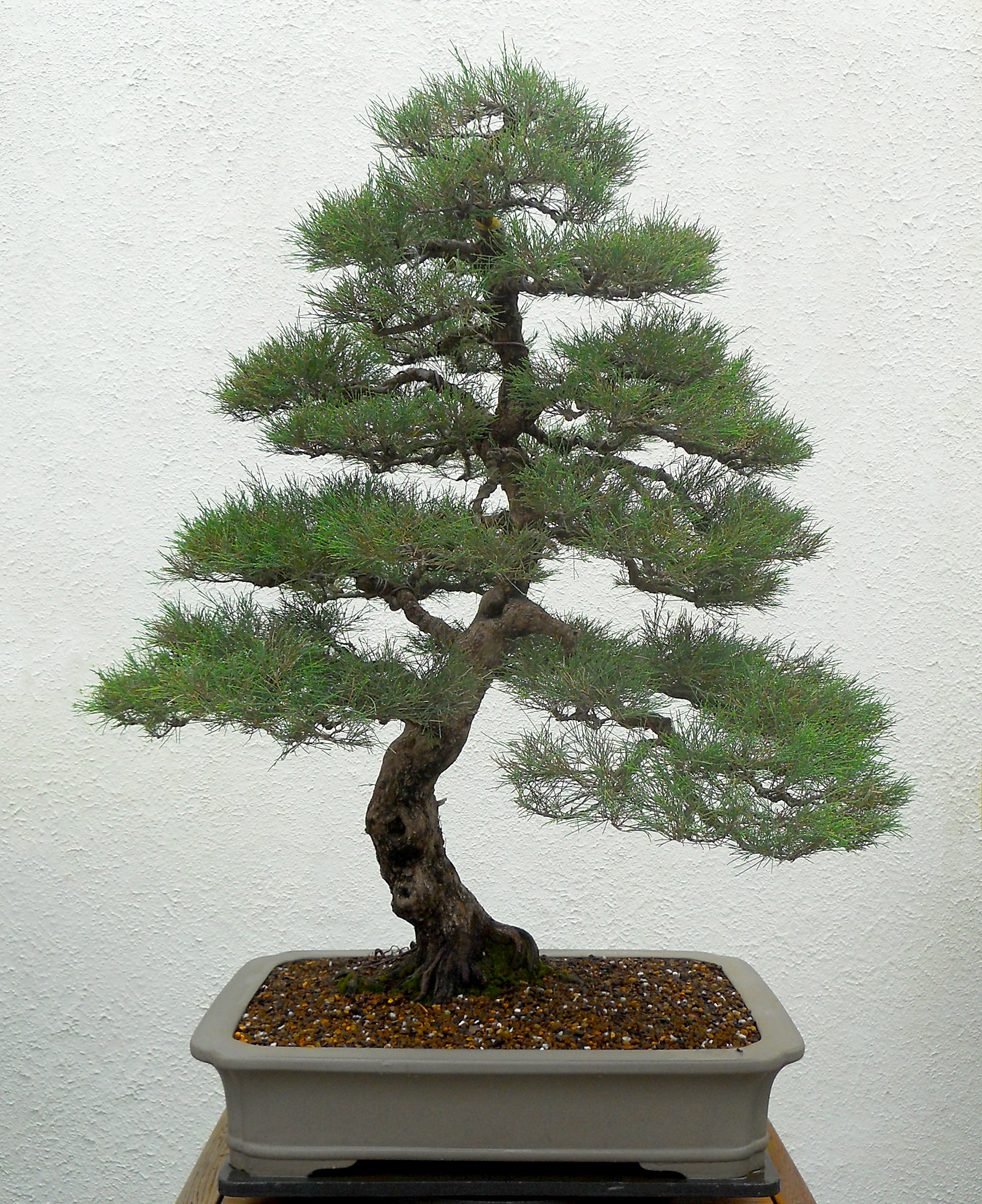
Casuarina equistifolia
In training since 1978
Gift of Edwin S. Nishida, 1990
This tropical tree native to Australia looks like a pine, but unlike pine, its foliage grows continuously and needs to be plucked back to give it a tidy look for a bonsai.
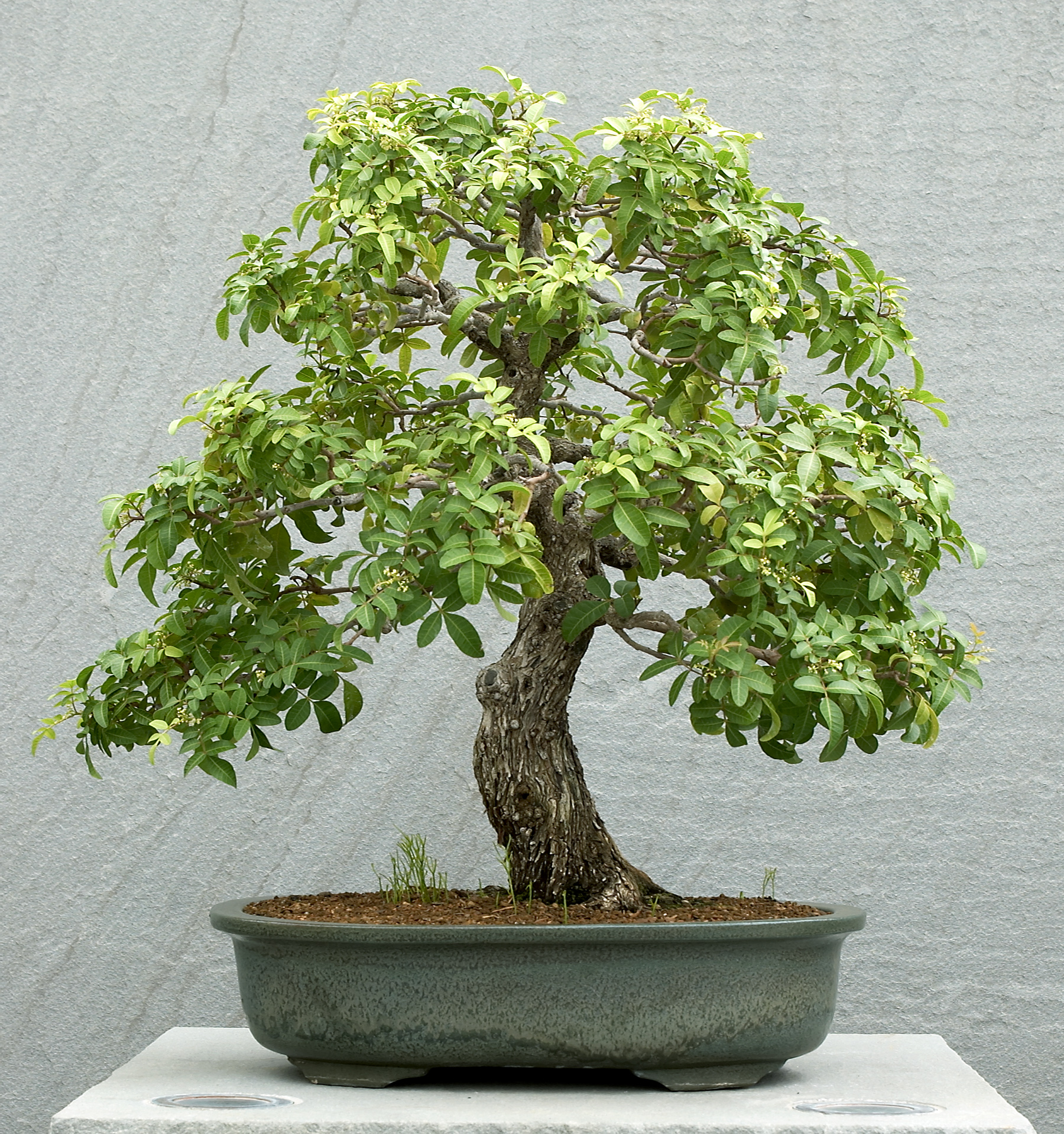
Schinus terebinthifolia
In training since 1973
Gift of Edward Nakanishi, 1990
This tropical tree native to South America flowers in the early winter.
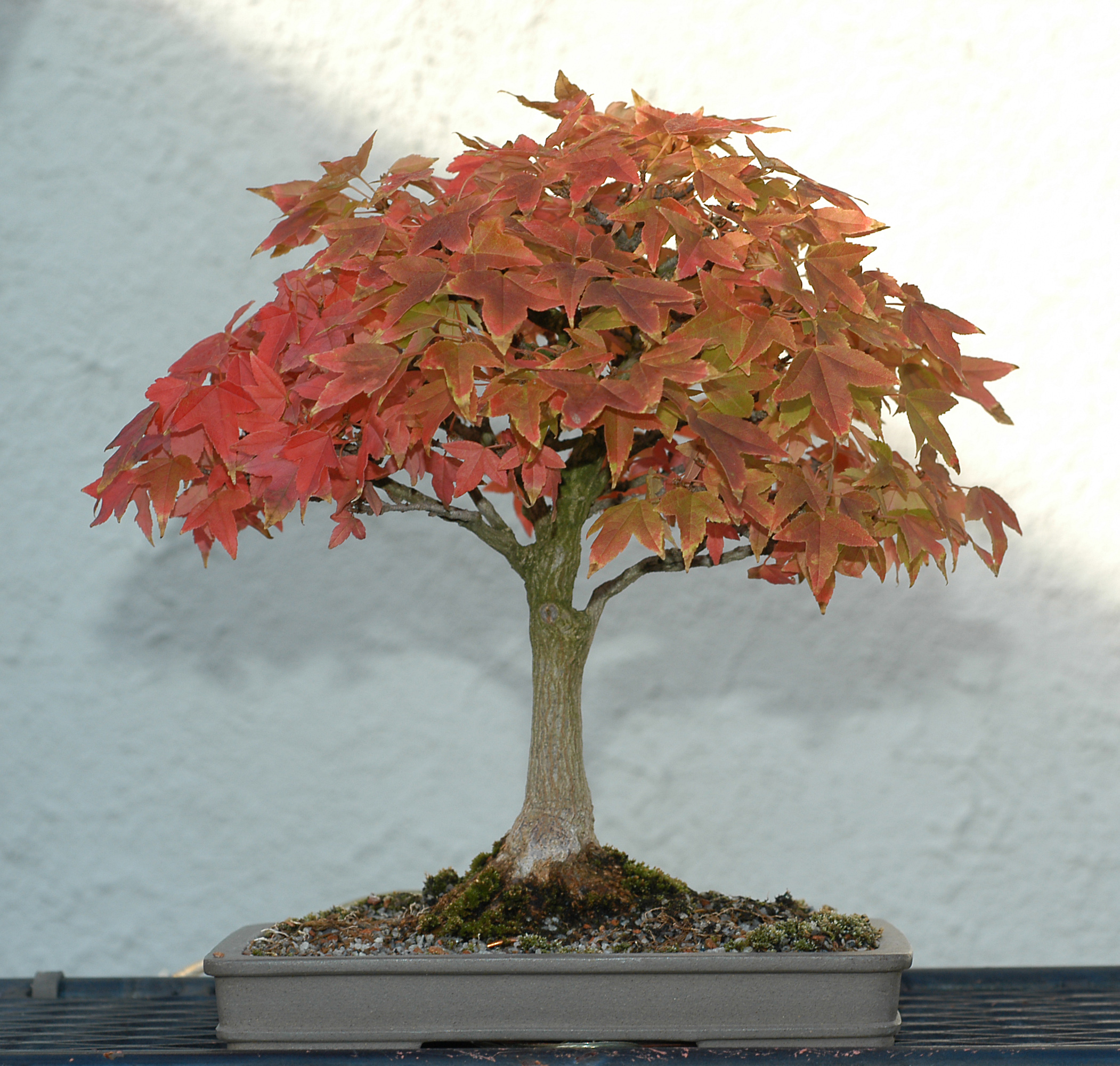
Acer buergerianum
In training since 1976
Gift of Doris W. Froning, 1994
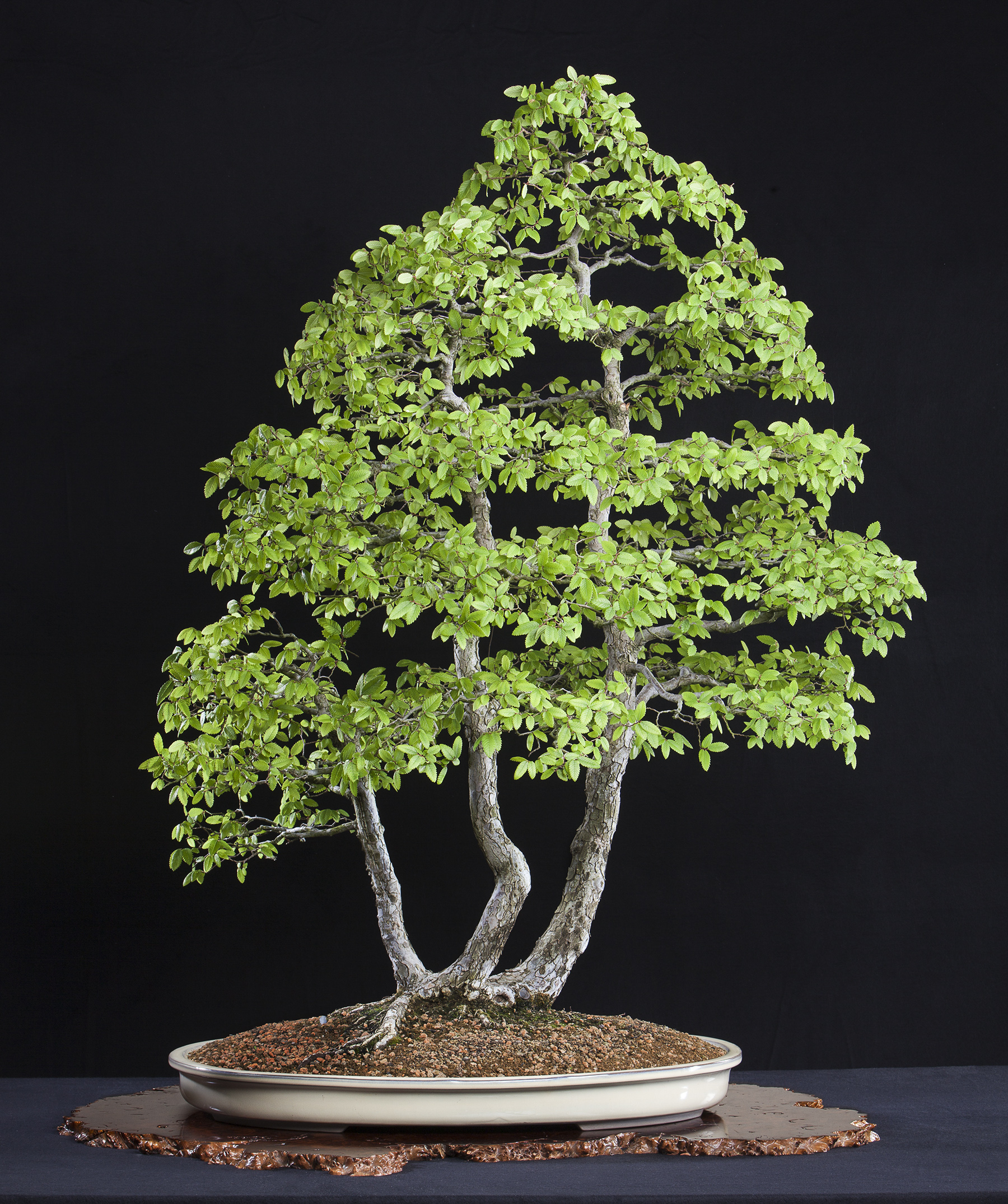
Ulmus crassifolia
In training since 1981
Gift of Arch R. Hawkins, 1996
This North American native was collected in a field in central Texas. The fine twigging and rough silvery bark are most appreciated in winter after the leaves have fallen.
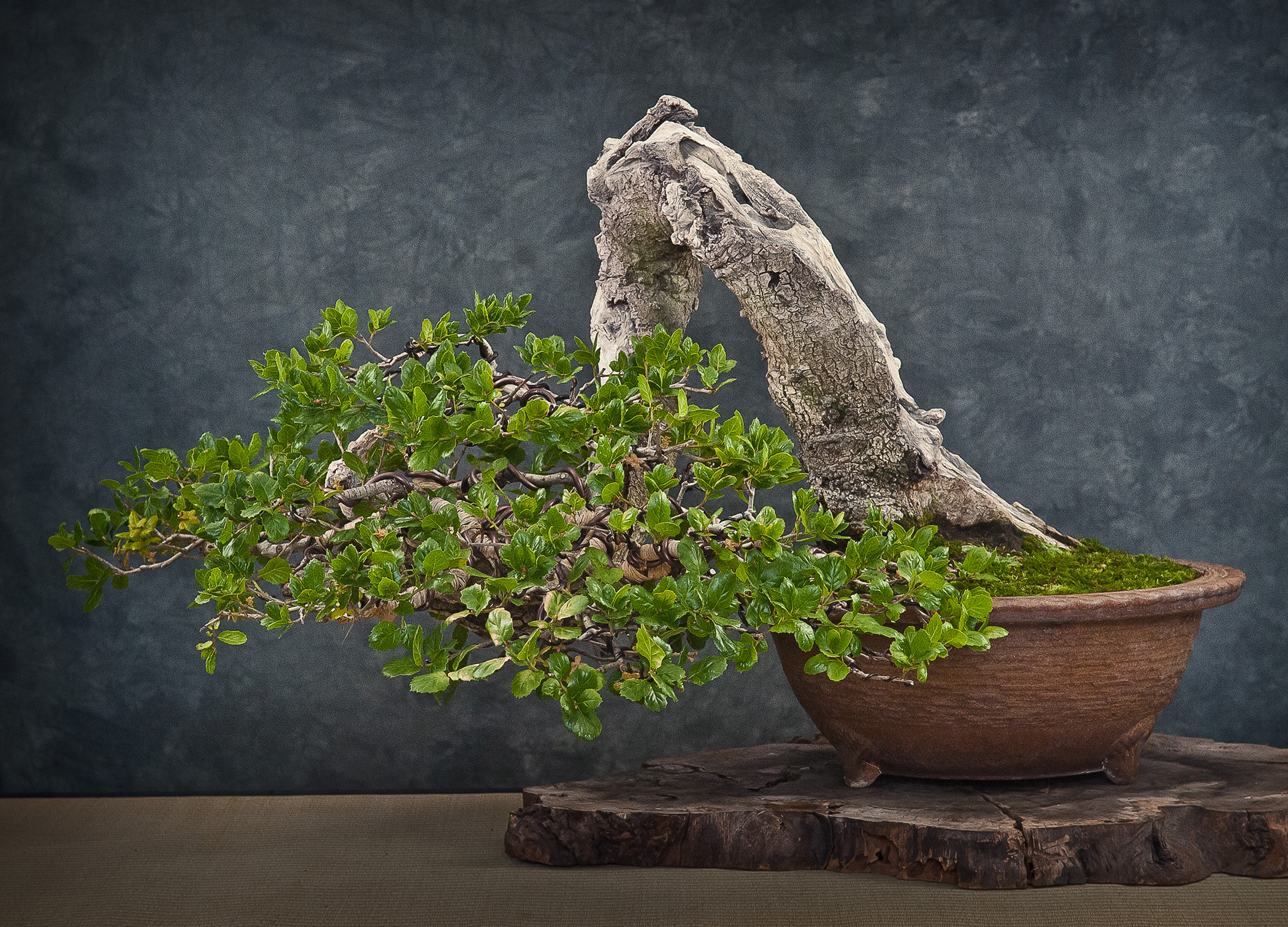
Quercus agrifolia
In training since 1986
Gift of John Y. Naka, 1997
Interesting trunks like this one are usually found in the wild. John found this coast live oak in 1986 on a cattle ranch about 55 miles northwest of Santa Barbara, CA.
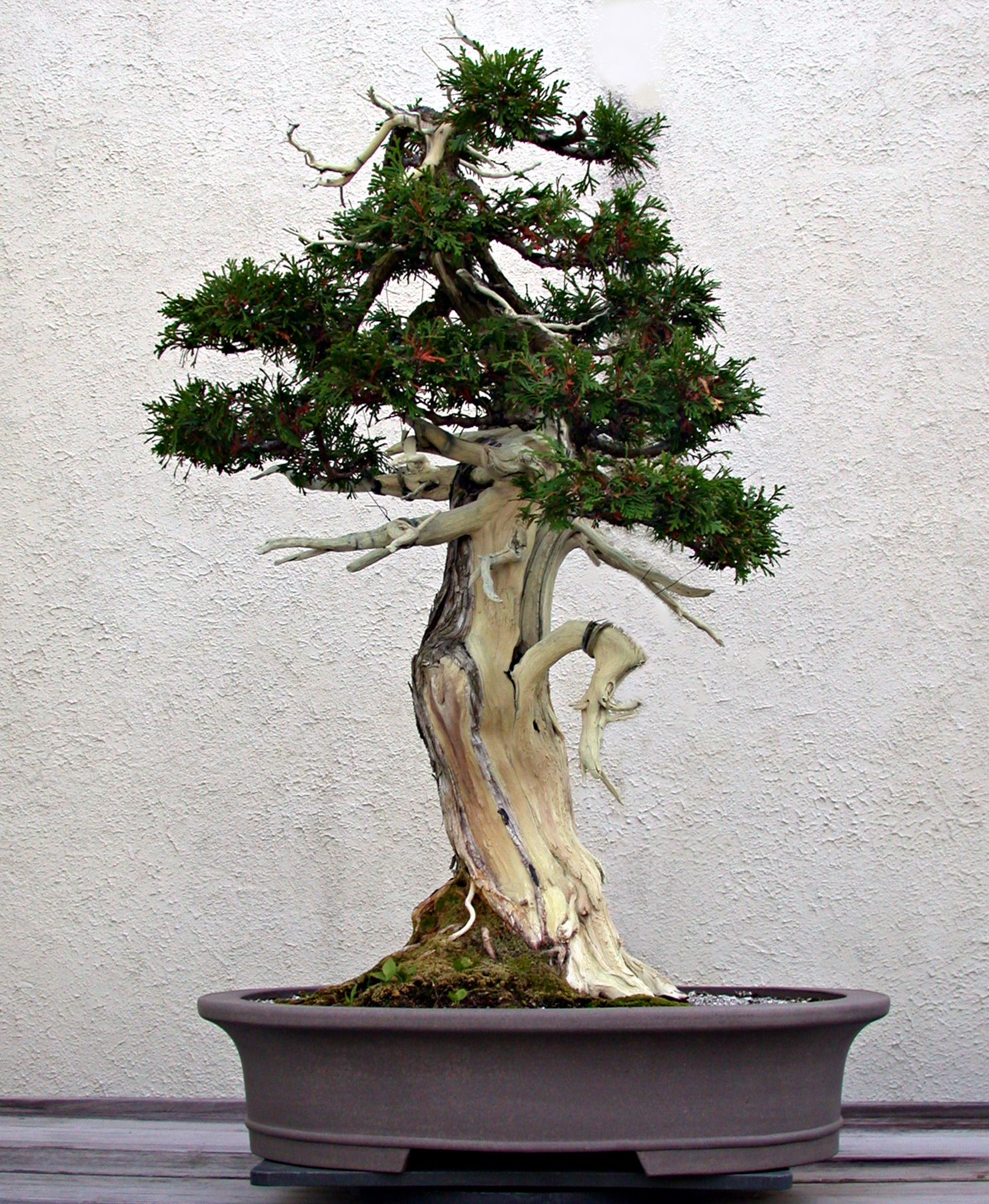
Thuja occidentalis
In training since 1989
Gift of Toronto Bonsai Society, 1996
Northern white-cedars are the oldest trees in Eastern North America. This tree was collected in Canada and styled to reflect its northern origins where heavy snows leave old trees with multiple broken, dead branches.
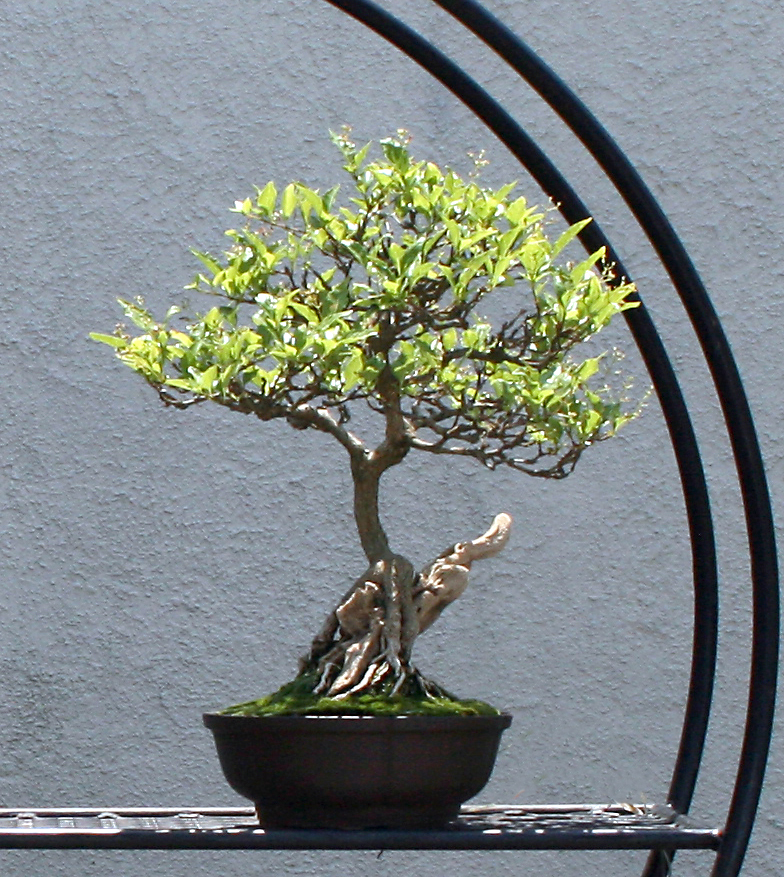
Premna microphylla
In training since 1988
Gift of William & Joan Clark, 1999
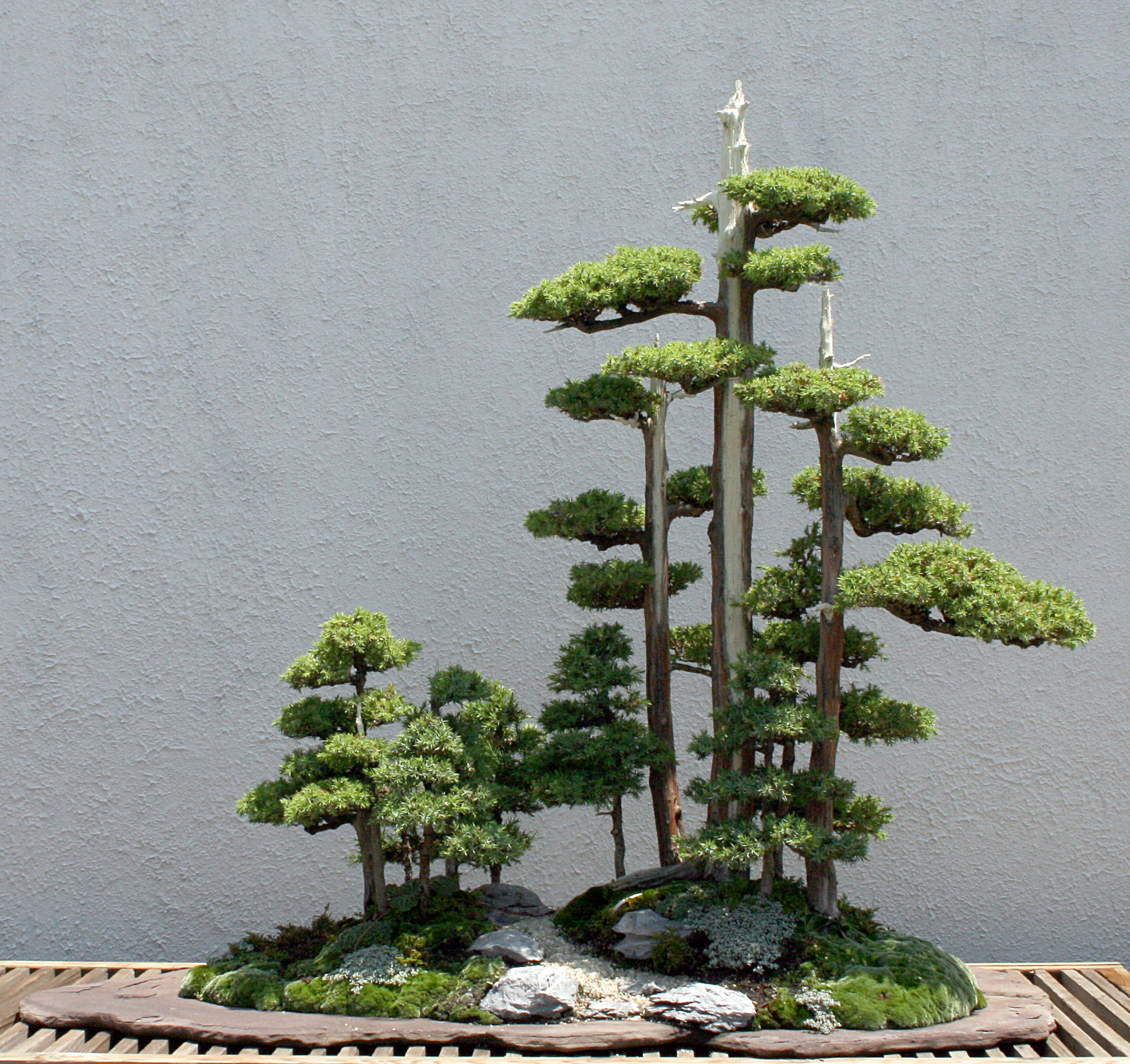
Juniperus chinensis 'Femina'
In training since 1970
Gift of Mas Moriguchi, 1999
Can you imagine walking down the path in this miniature landscape? The artist styled this scene after a redwood forest. By including short trees and little plants he made the tall trees appear to be giants.
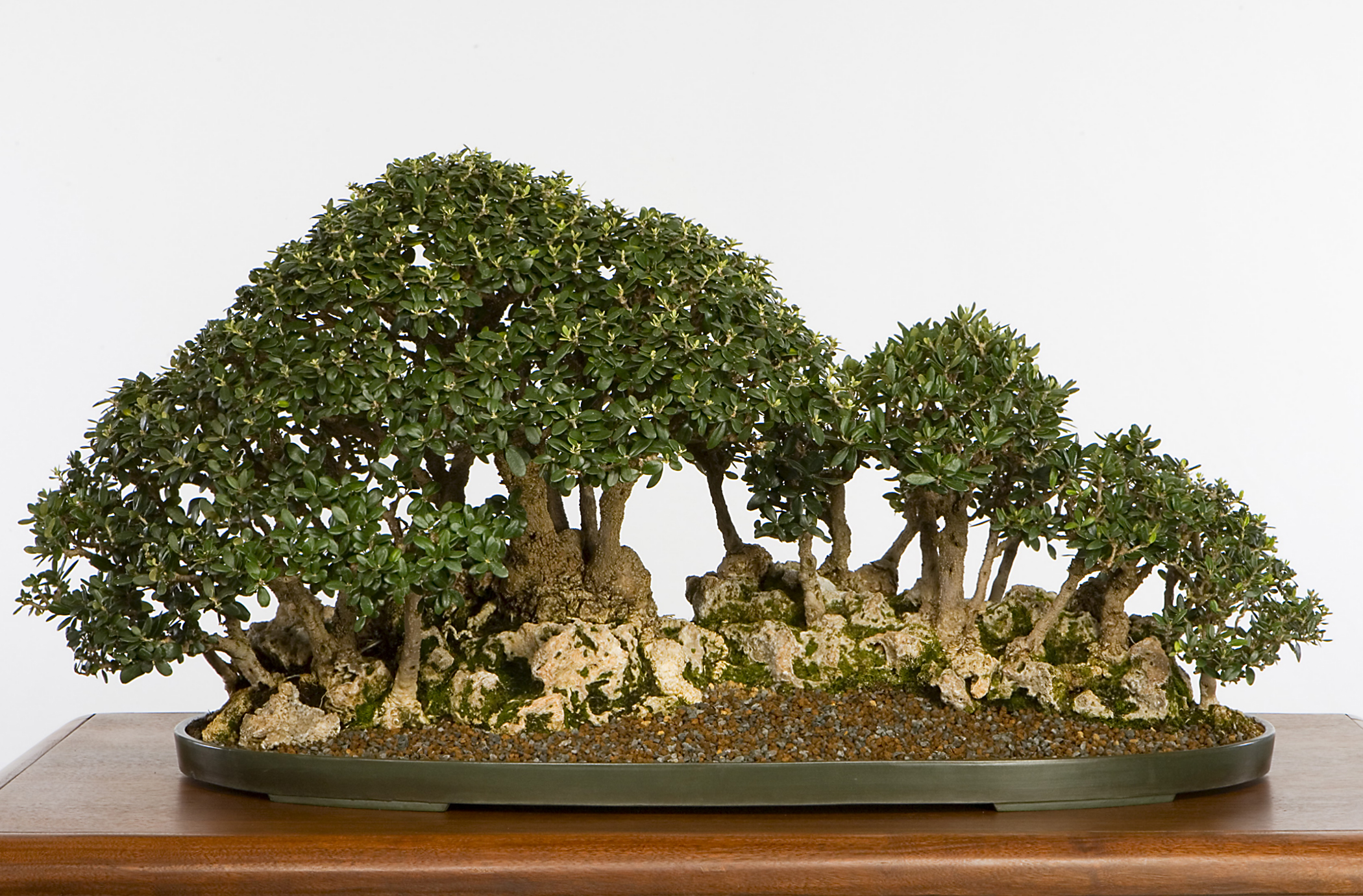
Olea europaea
In training since 1972
Gift of Melba Tucker, 2000
Do you see an old olive grove on a rugged coast in the Mediterranean? Like a living postcard, these tray landscapes can conjure up distant places.
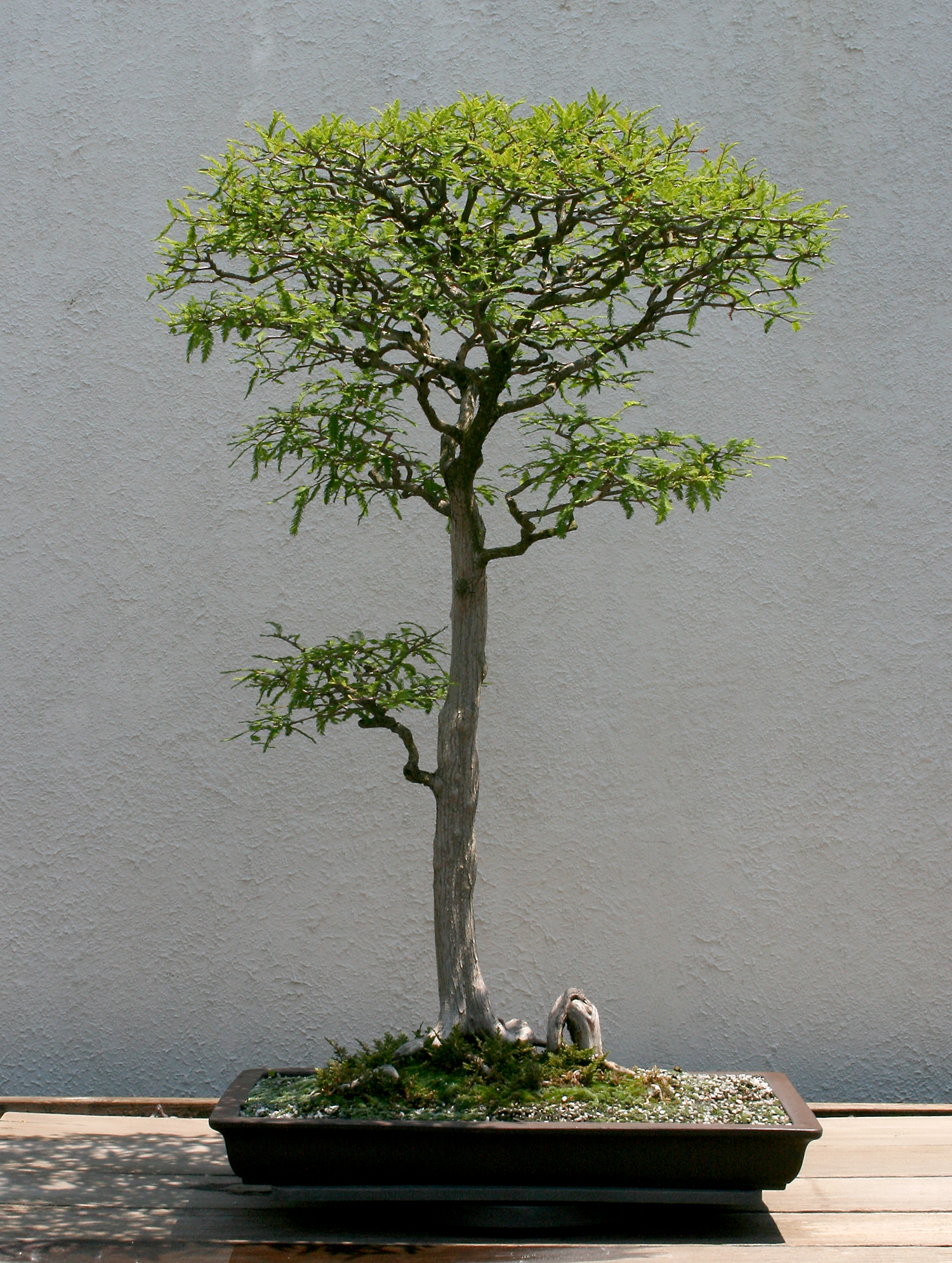
Taxodium distichum var. distichum
In training since 1972
Gift of Vaughn L. Banting, 2000
You won't find this tree shape in Asian bonsai. The flat-top form is unique to the old bald cypress trees that grow in the southeast wetlands of the United States.
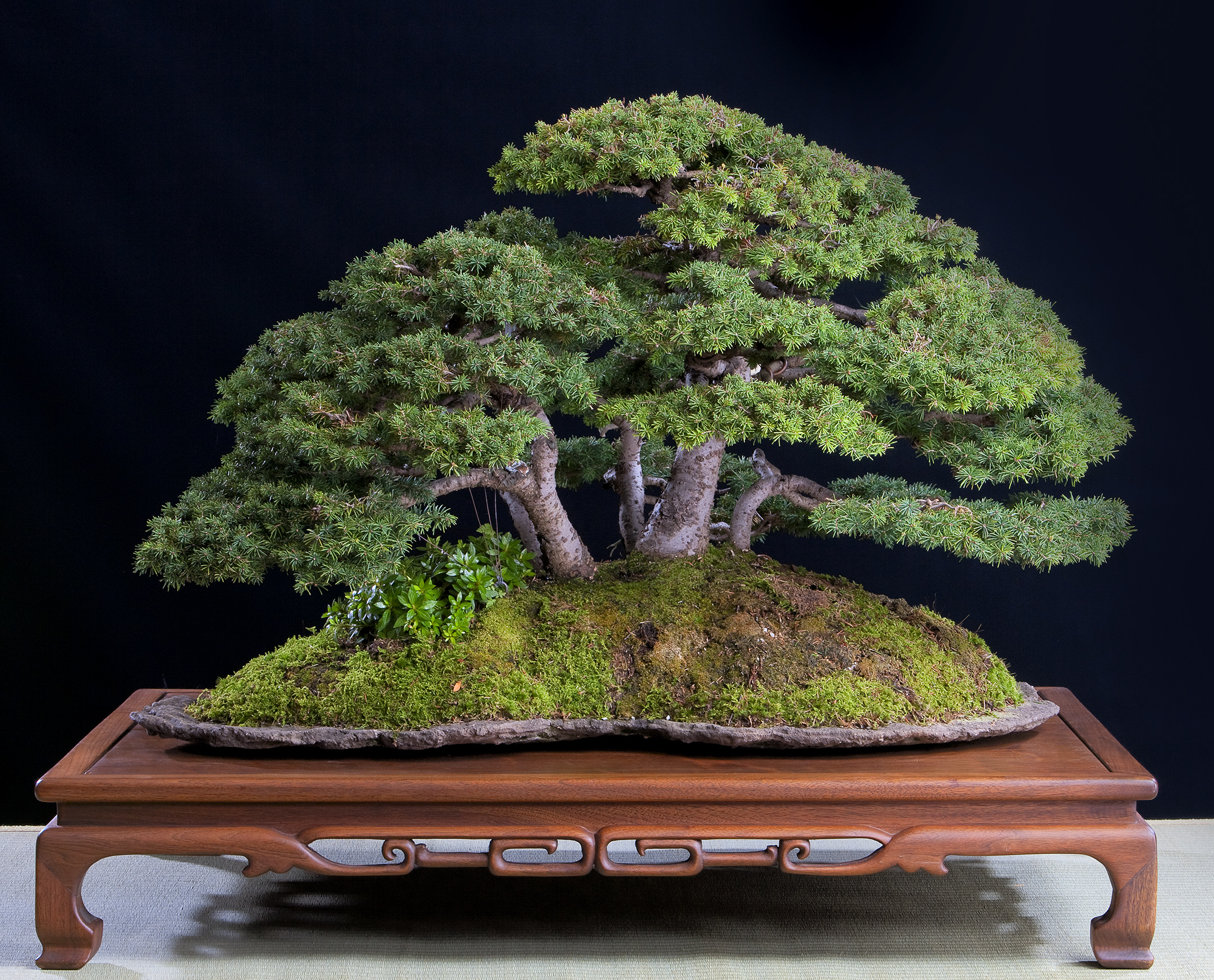
Picea abies 'Nidiformis'
In training since 1956
Gift of Philip Tacktill, 2001
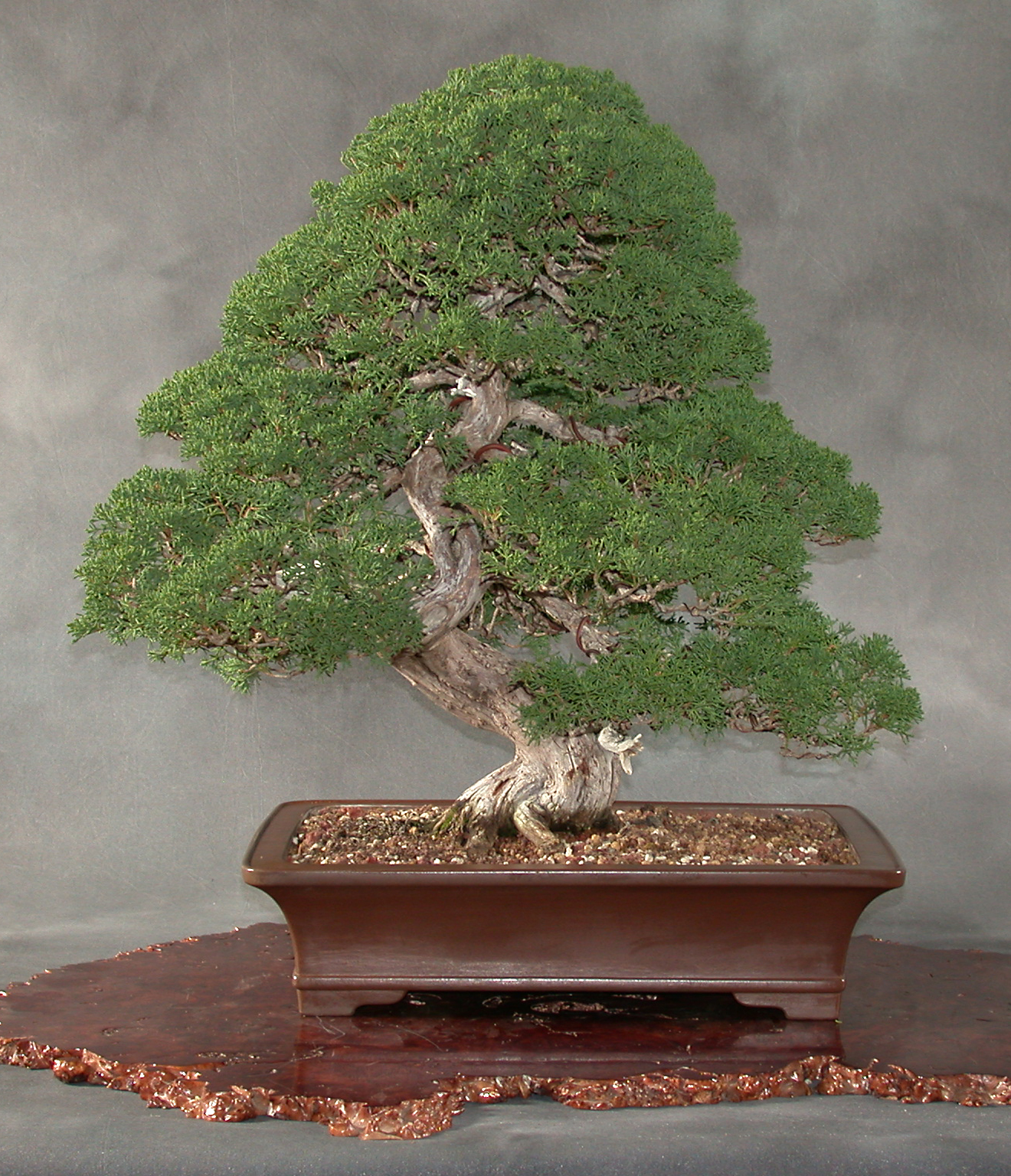
Juniperus chinensis var. sargentii
Training age unknown
Gift of Sherwin Mitchell, 2002
Even though the trunk has a lot of twists and turns, the top of the tree is aligned over the base in a good example of the informal upright bonsai style.

Fagus grandifolia
In training since 1979
Gift of Fred H. Mies, 2003
This species is native to eastern North America. Its smooth, silver-gray bark is a nice contrast to the foliage.
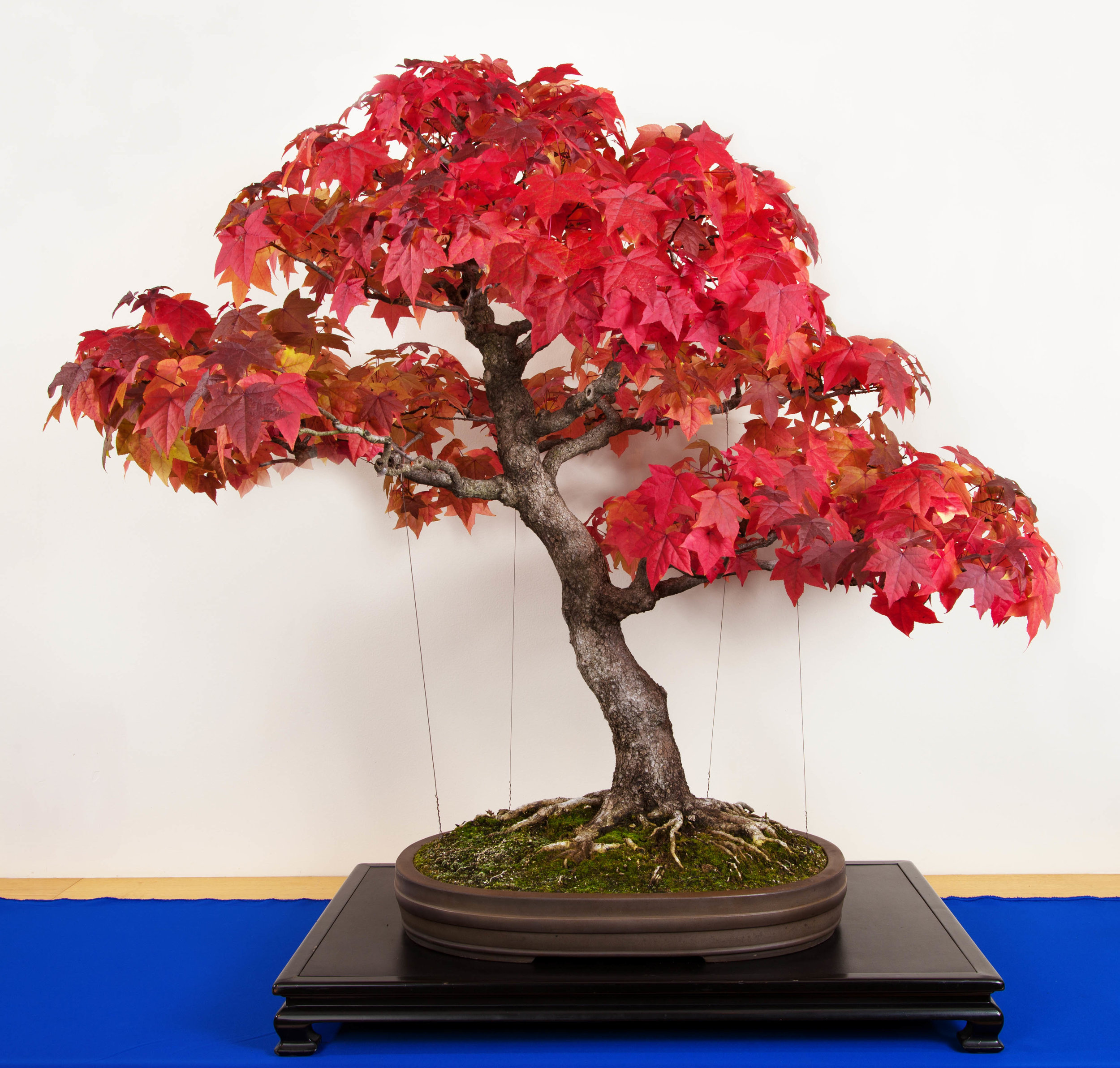
Liquidambar styraciflua
In training since 1975
Gift of Vaughn Banting, 2003
This native sweetgum tree was collected in Louisiana and styled as a slanting bonsai. Its star-shaped leaves turn brilliant red in the fall.
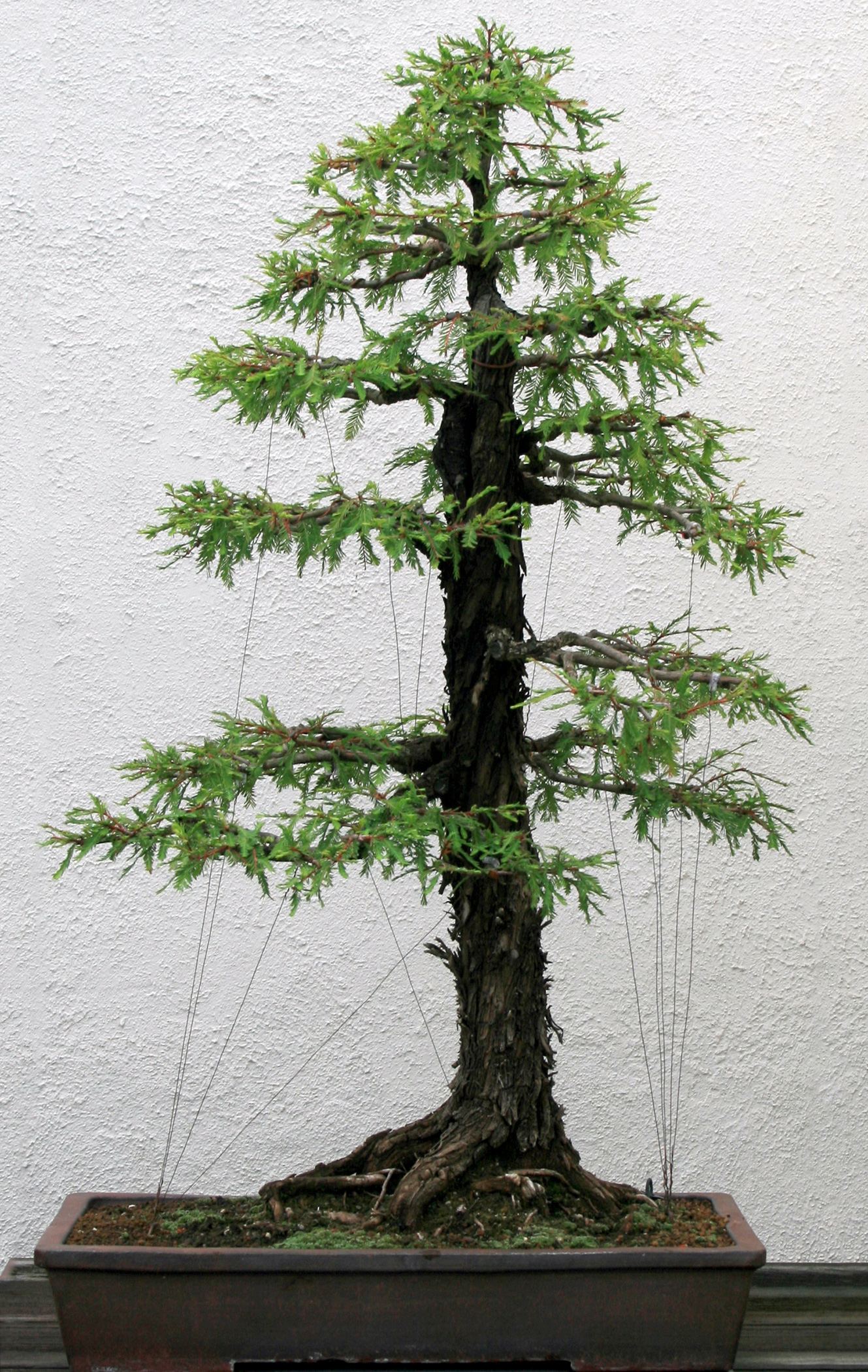
Taxodium distichum var. mexicanum
In training since 1948
Gift of John Y. Naka, 2004
This was the first bonsai John created after moving to Los Angeles in 1946. He gave it to the museum right before he passed away at the age of 90.
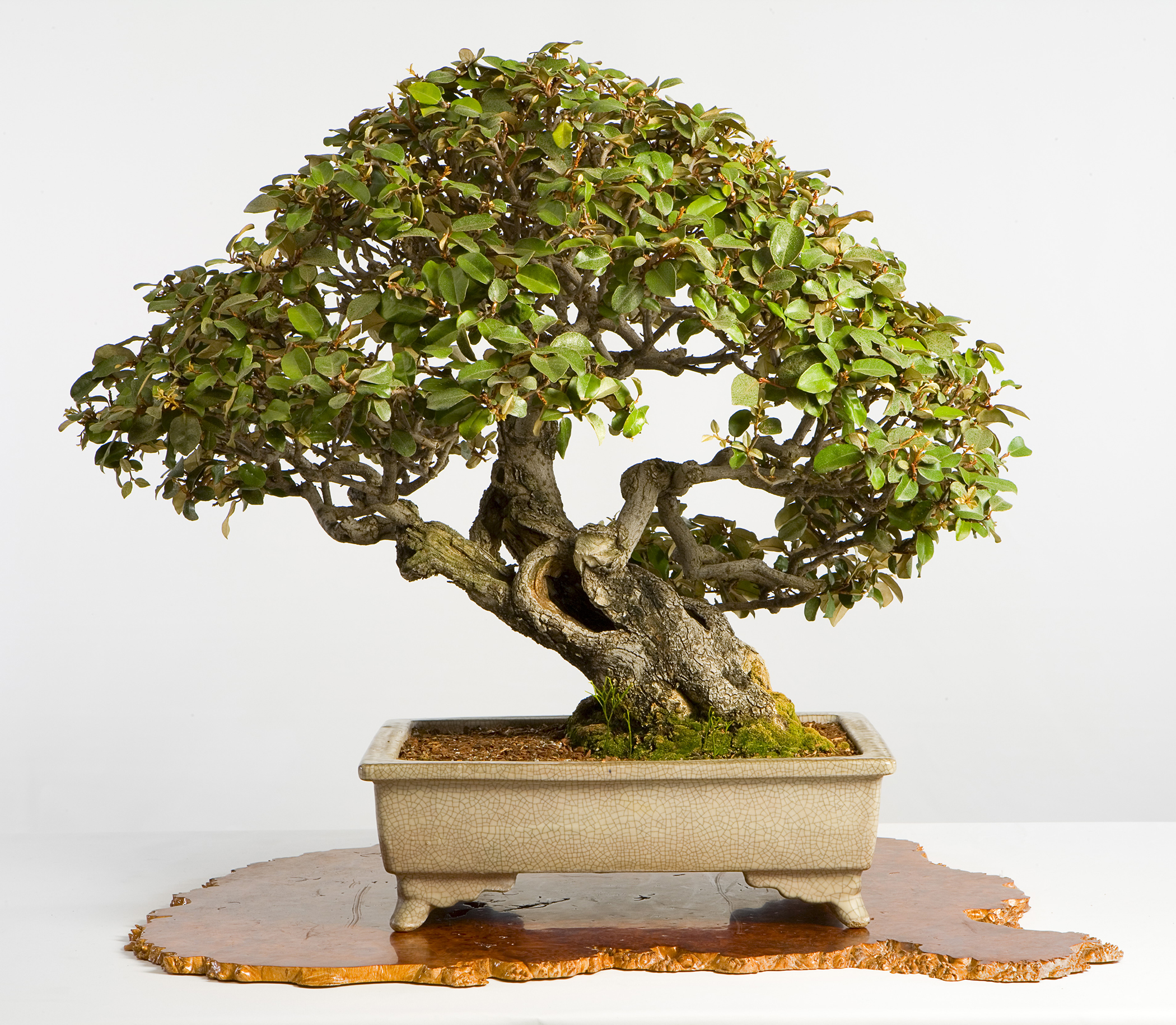
Elaeagnus pungens
In training since 1960
Gift of Mike Naka, 2004
The split and gnarly old trunk on this tree conveys the spirit of survival found in very old trees in nature. John Naka found this thorny elaeagnus growing on property to be demolished for freeway construction in southern California.
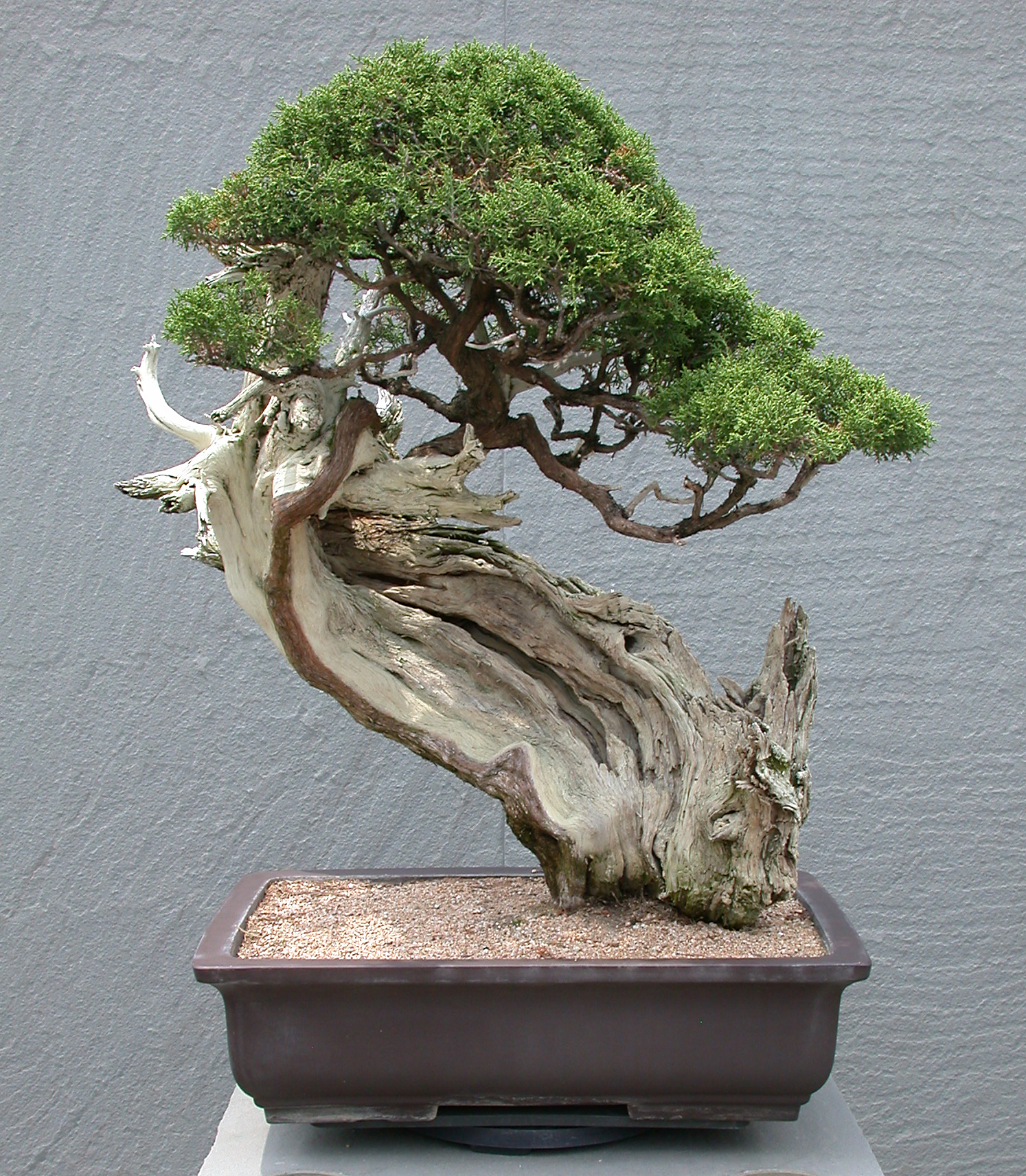
Juniperus californica
In training since 1964
Gift of Harry Hirao, 2004
Can you find the "lifeline" on this tree? It is the thin brown line hugging the underside of the deadwood trunk. This living tissue carries water from the roots to the foliage.
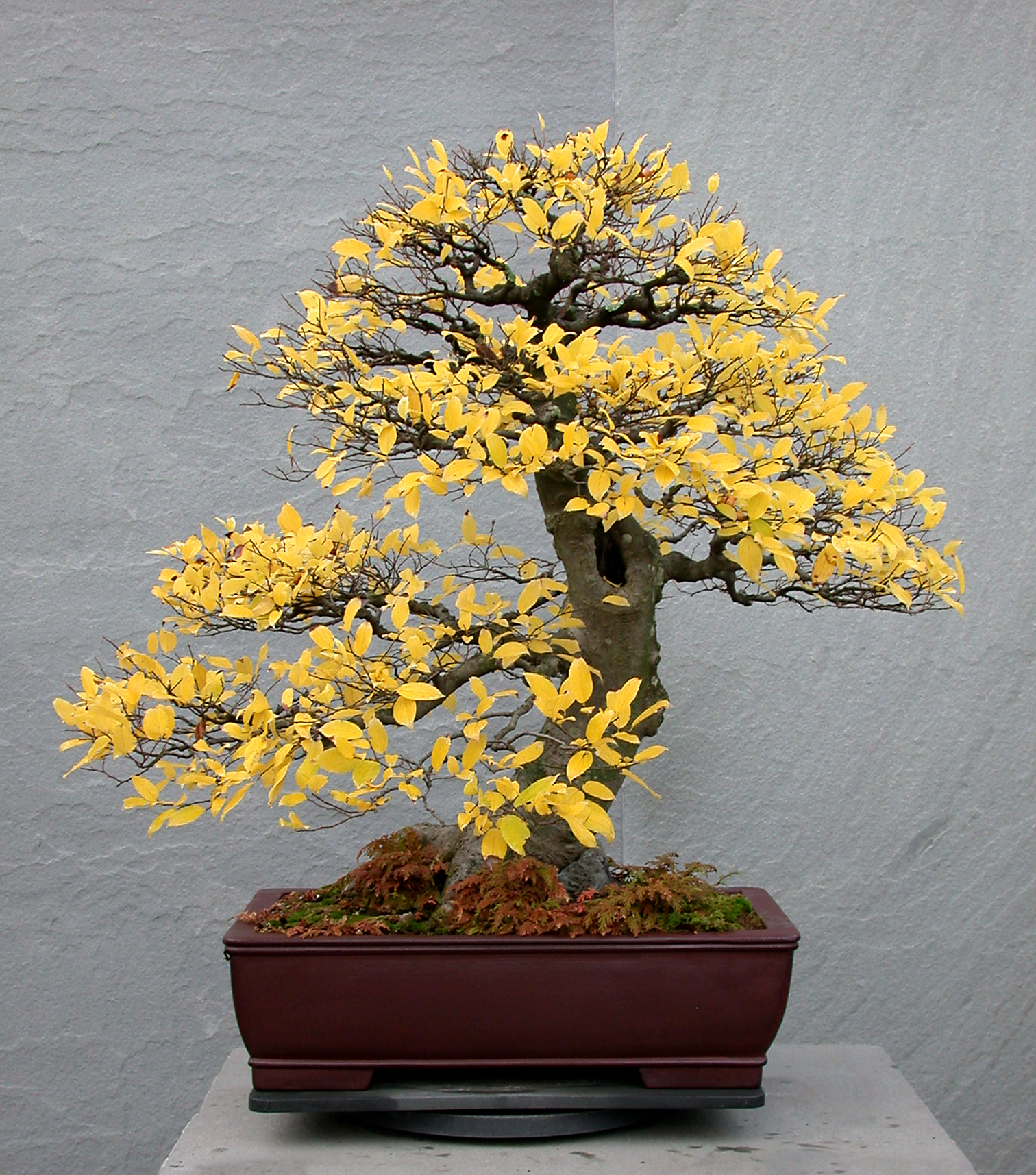
Celtis sinensis
In training since 1974
Gift of Dan Chiplis, 2004
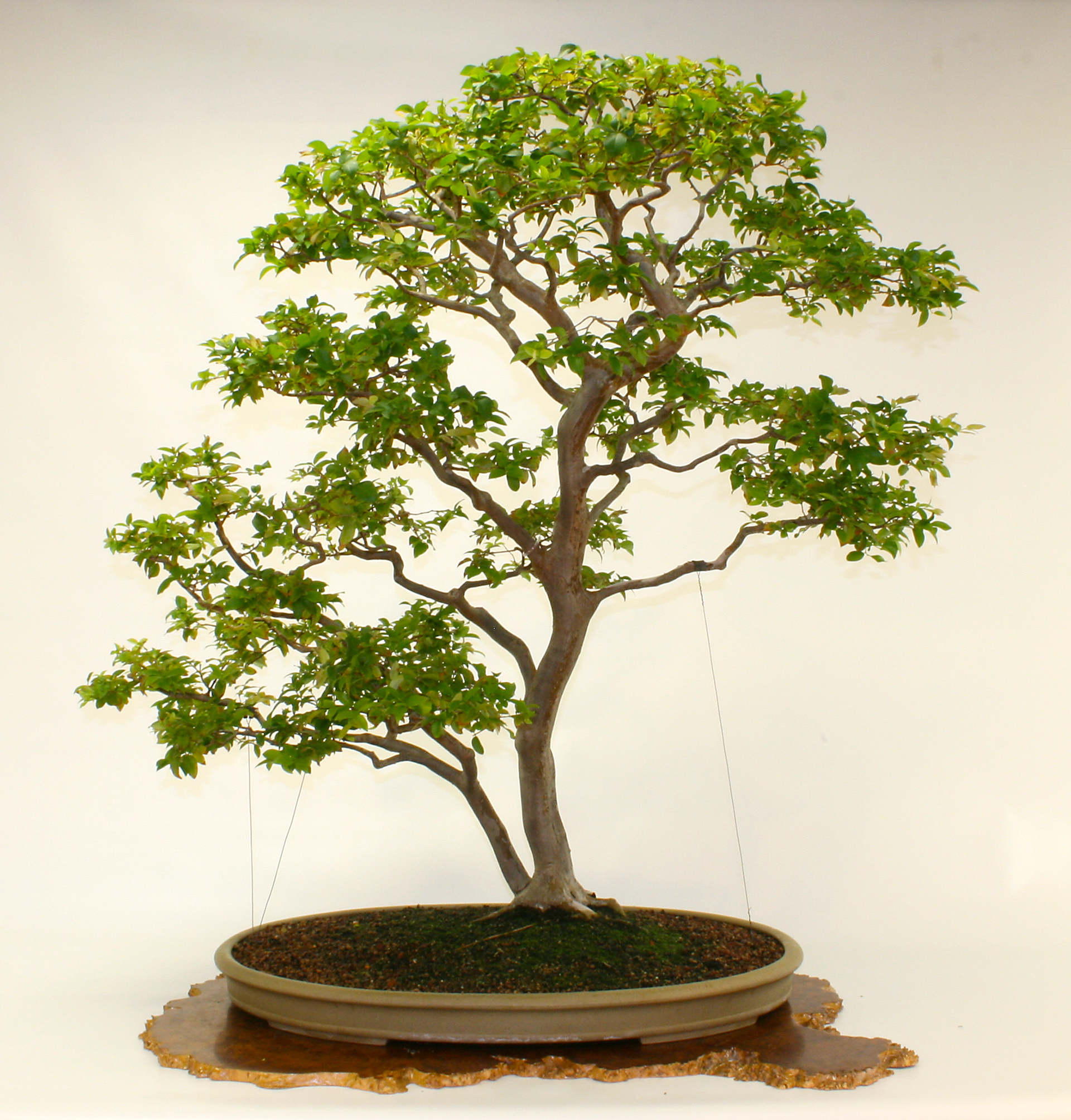
Myrciaria cauliflora
In training since 1970s
Gift of Edward & Jean Smith, 2009
This tropical species has become popular with bonsai artists for the beauty of its multicolored, sleek bark, revealed when the outer bark sheds each year.
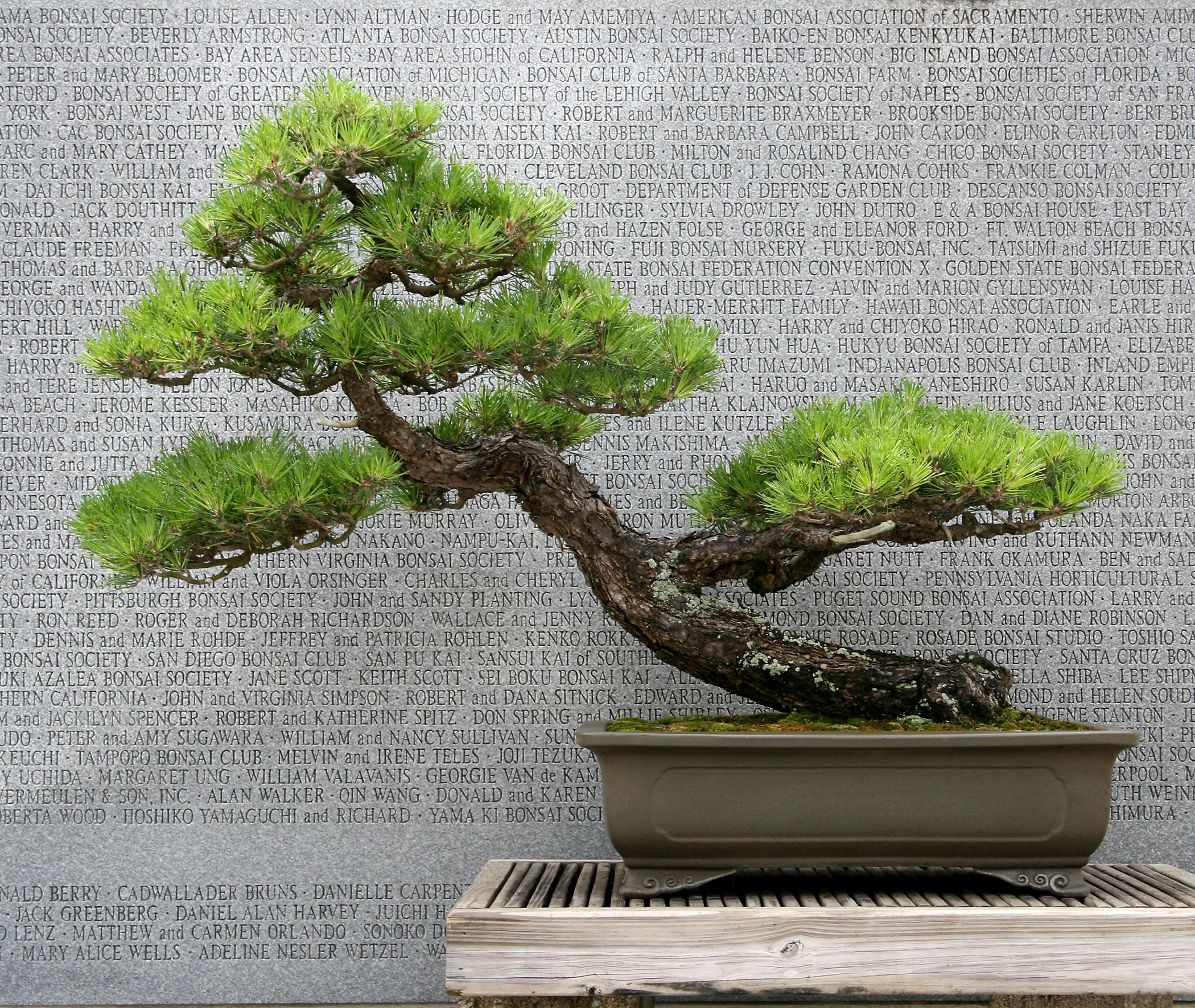
Pinus thunbergii
In training since 1980
Gift of Janet Lanman, 2010
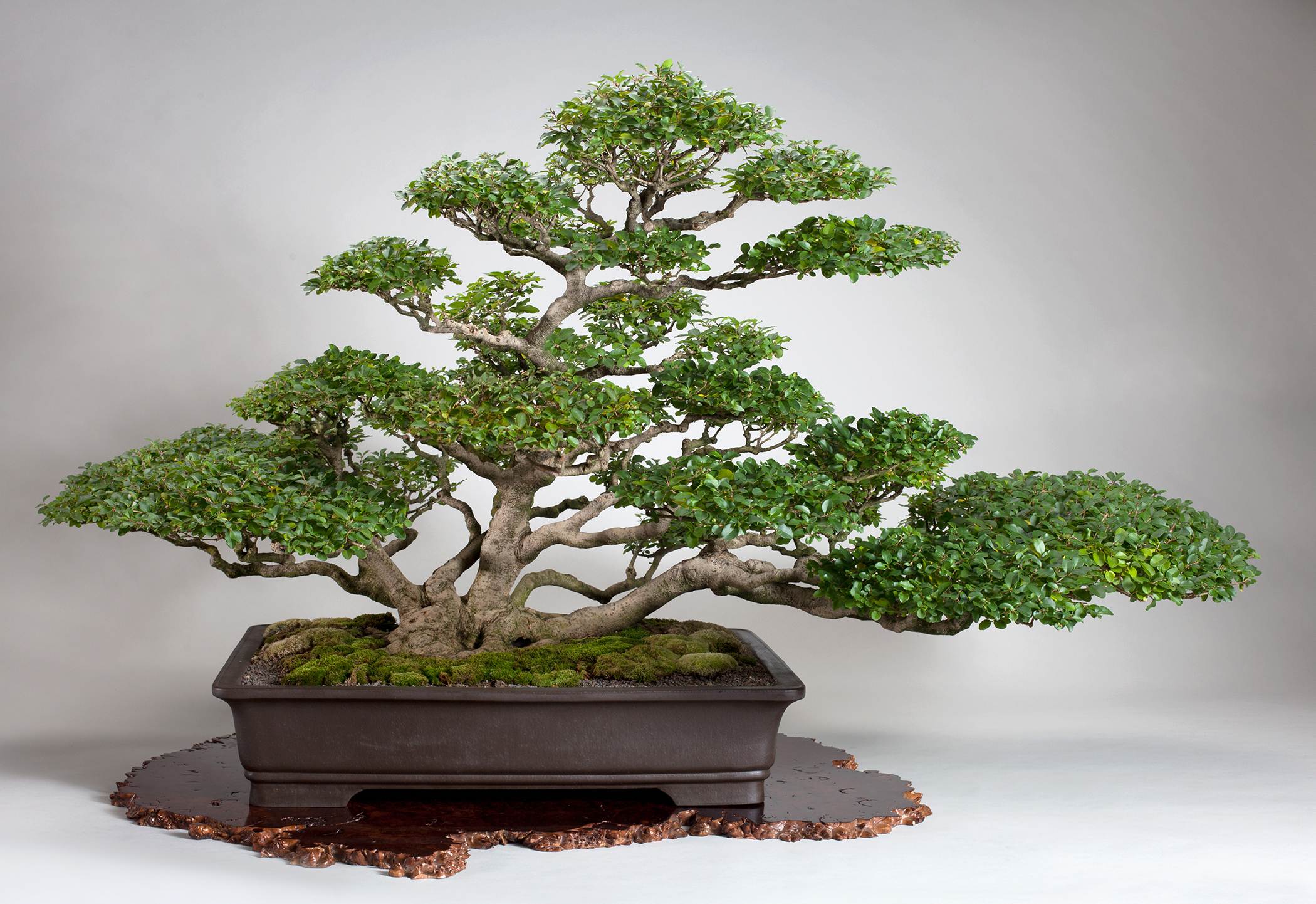
Ligustrum vulgare
In training since 1979
Gift of Jack Fried, 2010
Originally collected in a cow pasture, this privet was styled as a clump bonsai with a uniquely long lower branch.
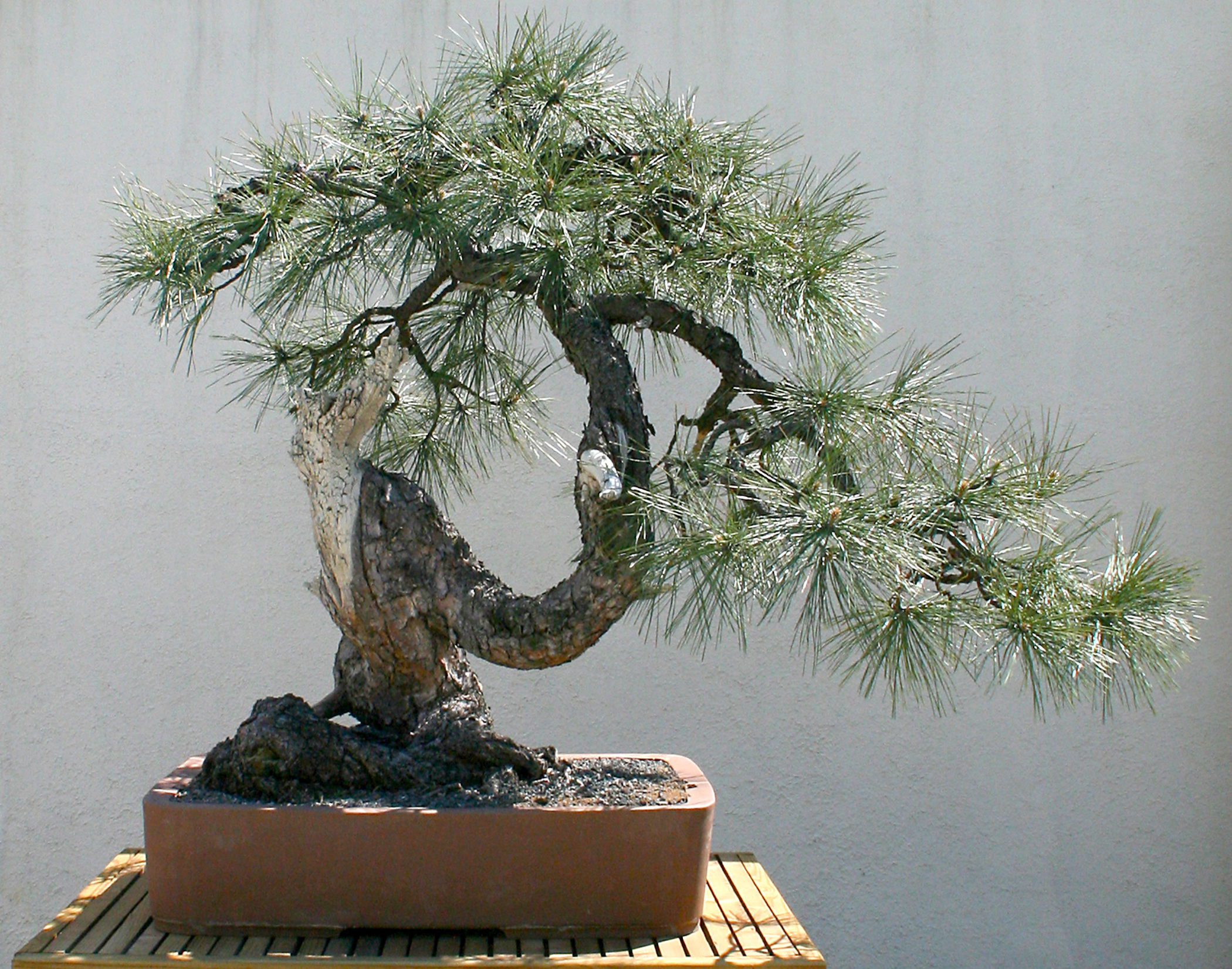
Pinus ponderosa
In training since 1966
Gift of the U.S. Forest Service, 1980
This ponderosa pine was donated to the museum in commemoration of the 75th anniversary of the Forest Service. It was collected and styled by Dan Robinson.
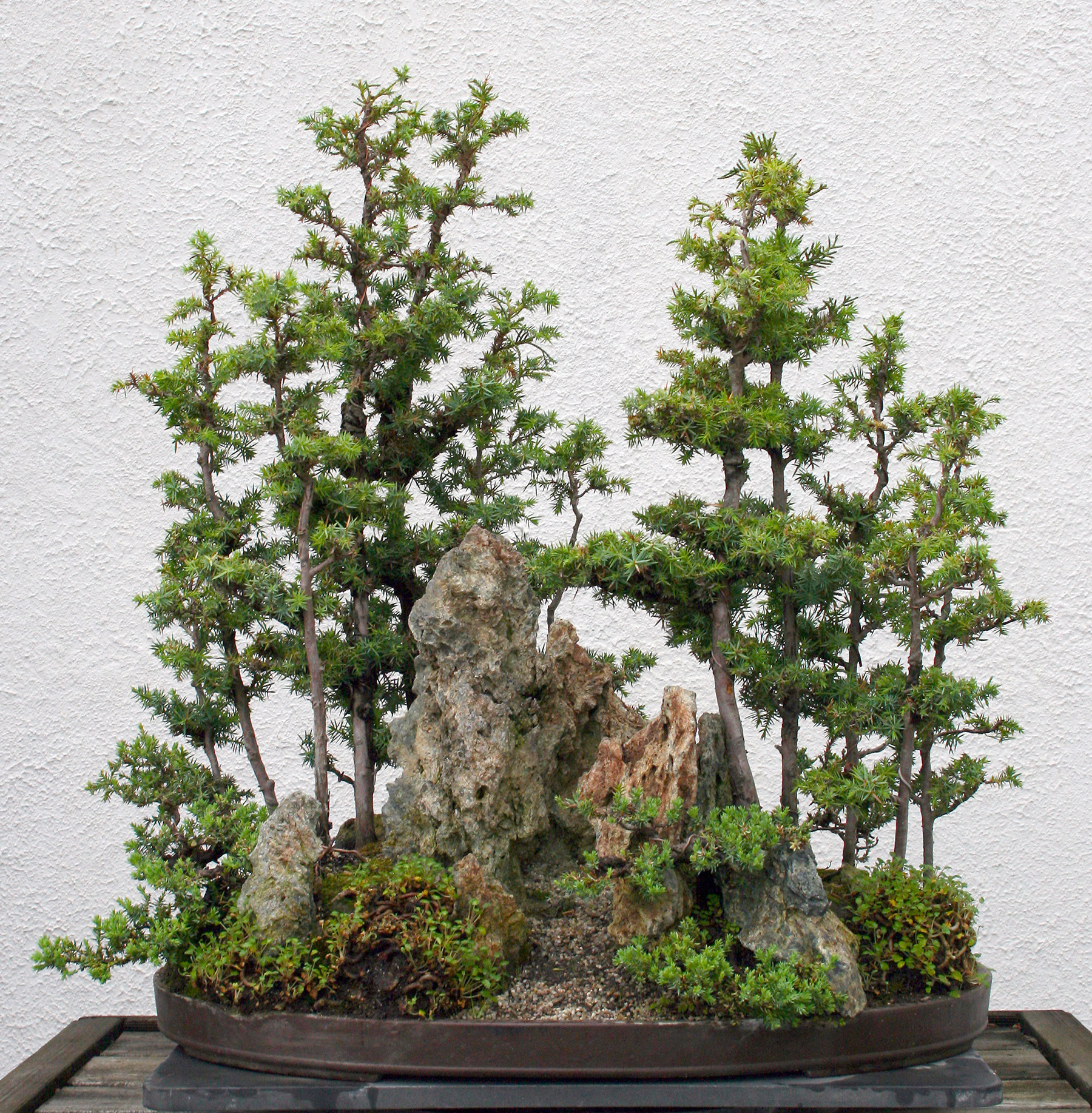
Juniperus chinensis 'Femina' and Juniperus procumbens 'Nana'
In training since 2004
Gift of Frank Goya, 2012
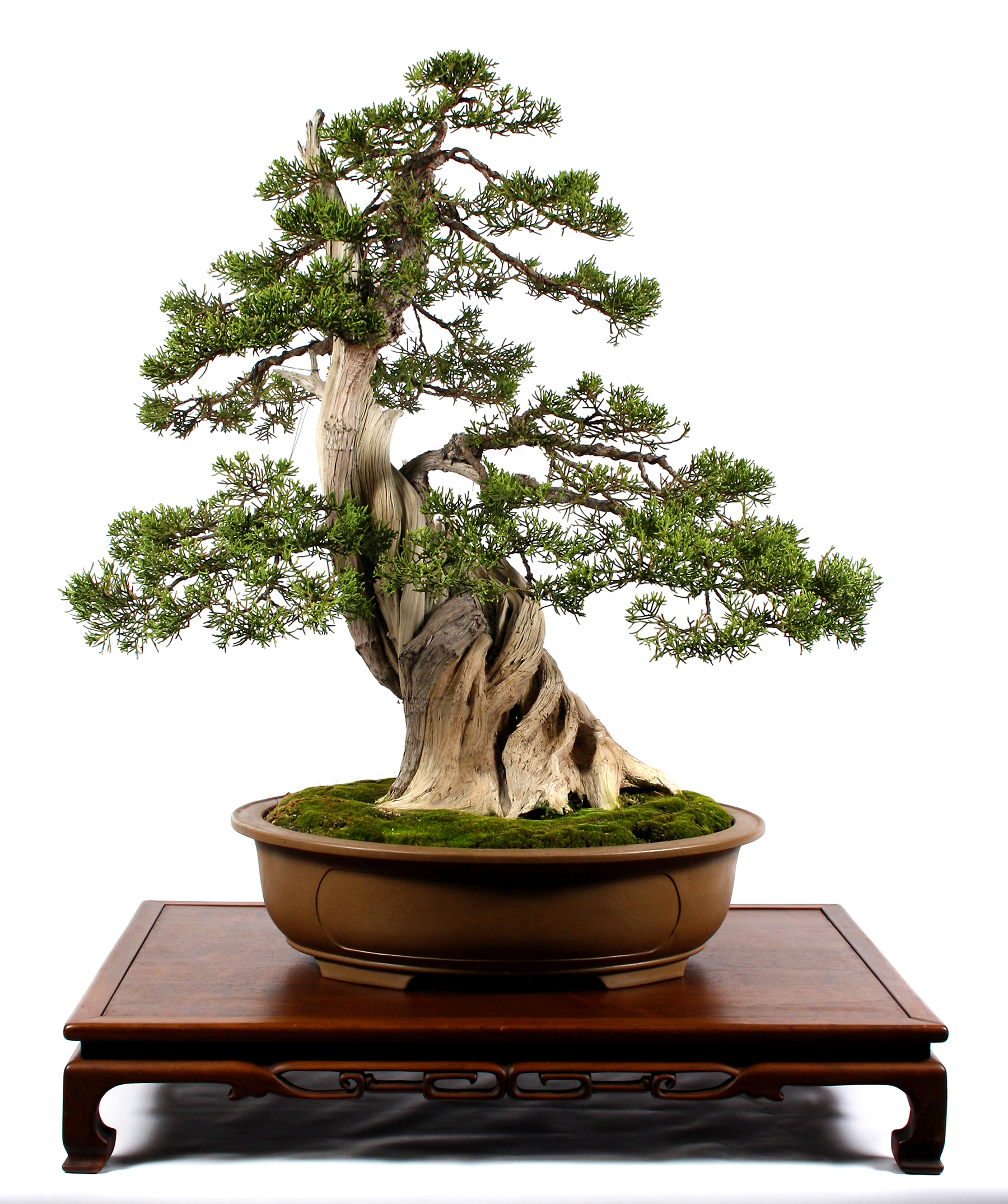
Juniperus californica
In training since 1982
Gift of Sze-ern Kuo, 2012

Juniperus californica
In training since 1989
Gift of Sze-ern Kuo, 2012
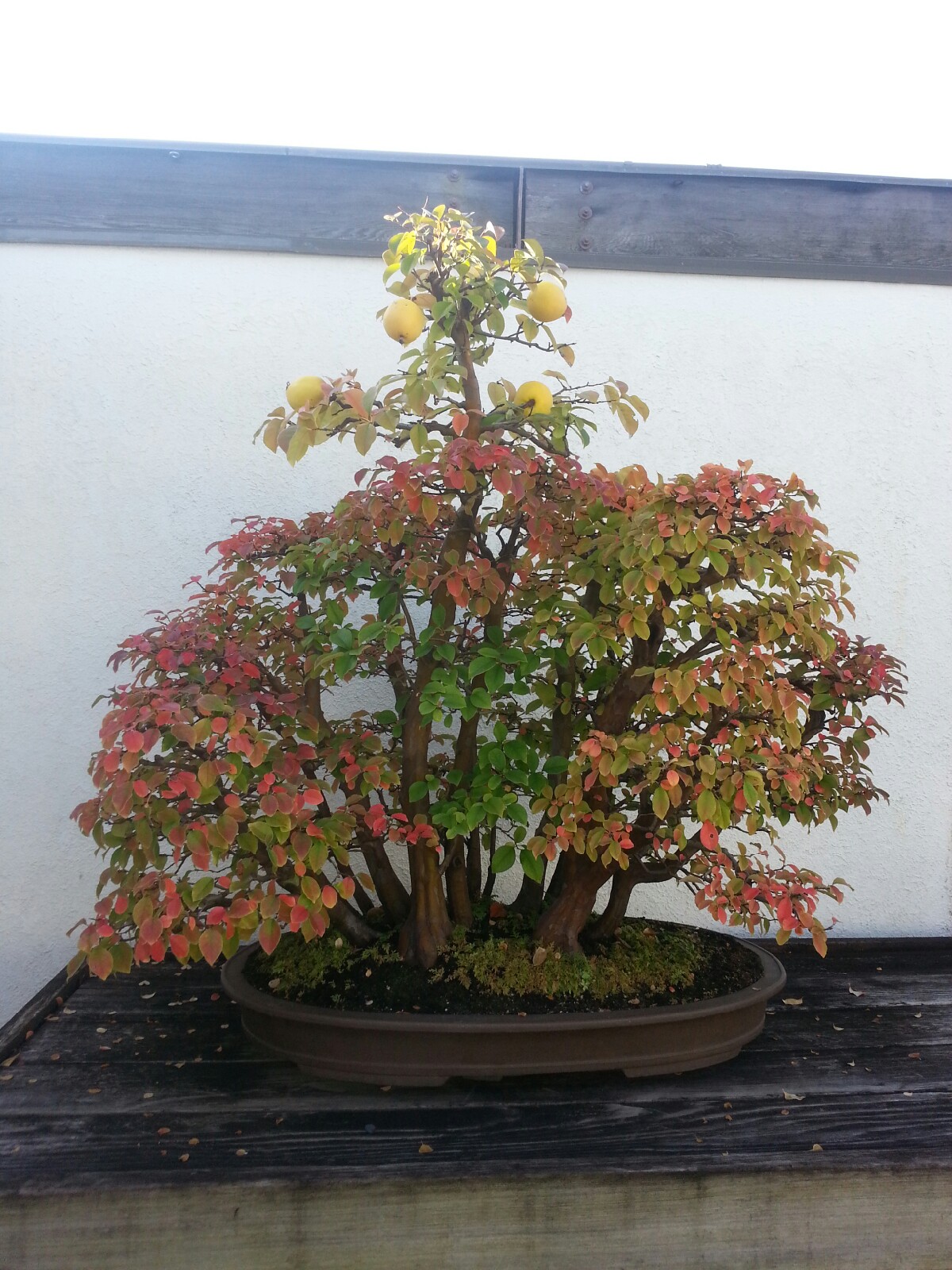
Pseudocydonia sinensis
In training since 1975
Gift of Warren Hill, 2013

Juniperus chinensis 'Itoigawa' (branches grafted onto Juniperus horizontalis 'Prostrata' trunk)
In training since 2006
Gift of Takashi Shimazu, 2015
This bonsai was formed by grafting branches of Juniperus chinensis 'Itoigawa' onto the trunk of a large Juniperus horizontalis 'Prostrata' collected at Kobata Nursery in South Gate, California.
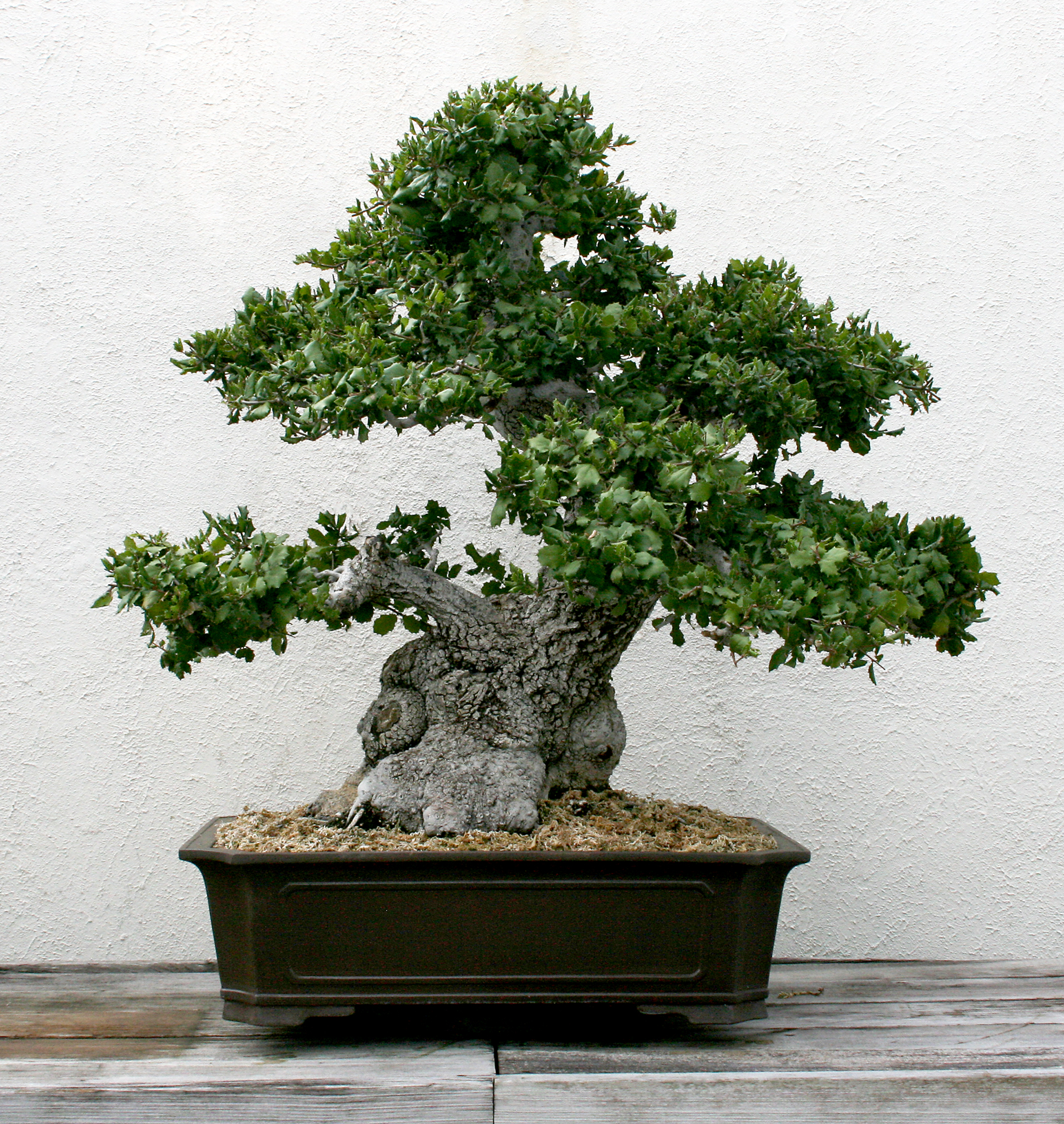
Quercus agrifolia
In training since 1989
Gift of Al Nelson, 2016
Collected from a ranch in Santa Barbara, California.
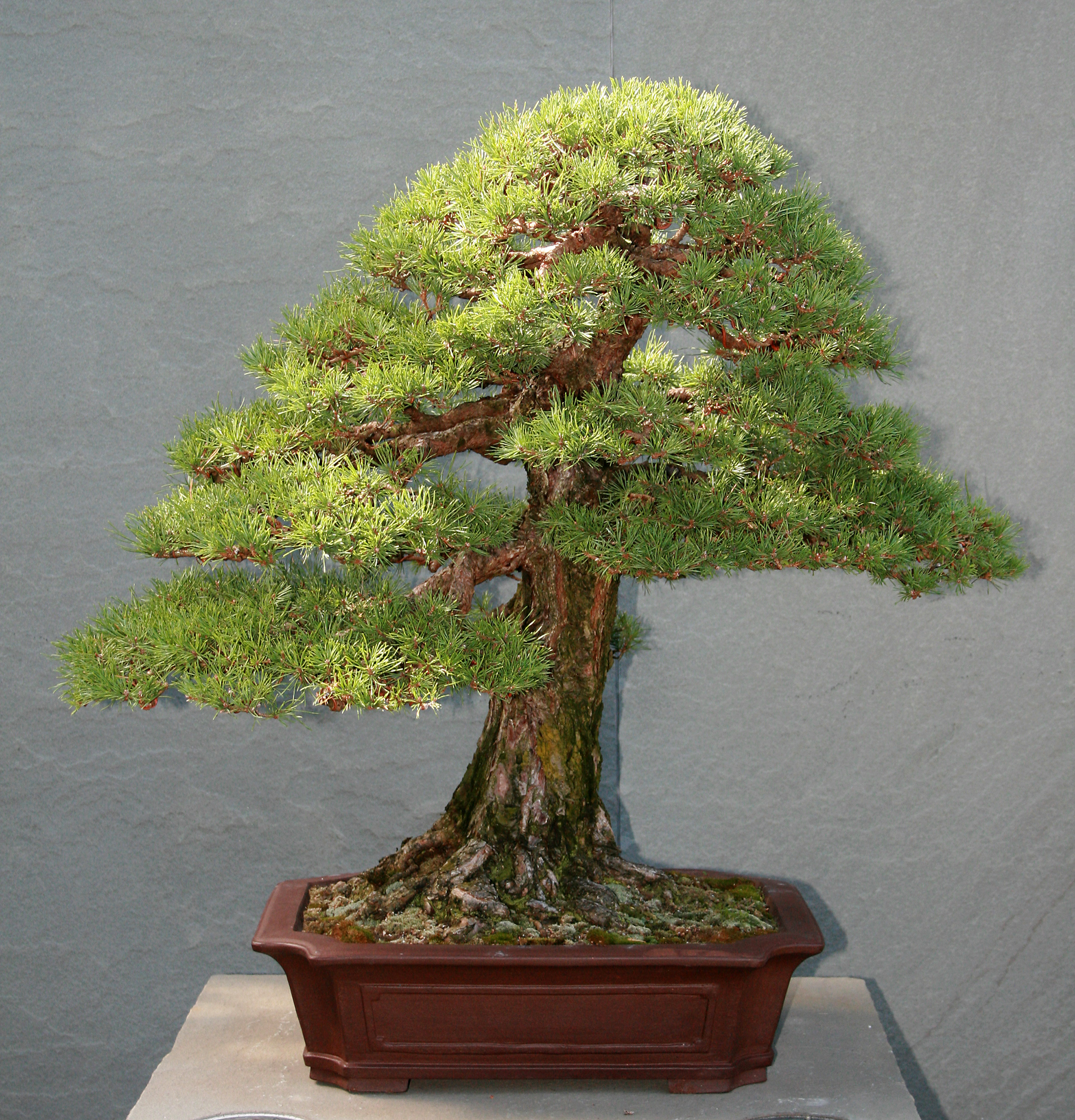
Pinus sylvestris 'R.A.F.'
In training since 1980
Gift of William N. Valavanis, 2017
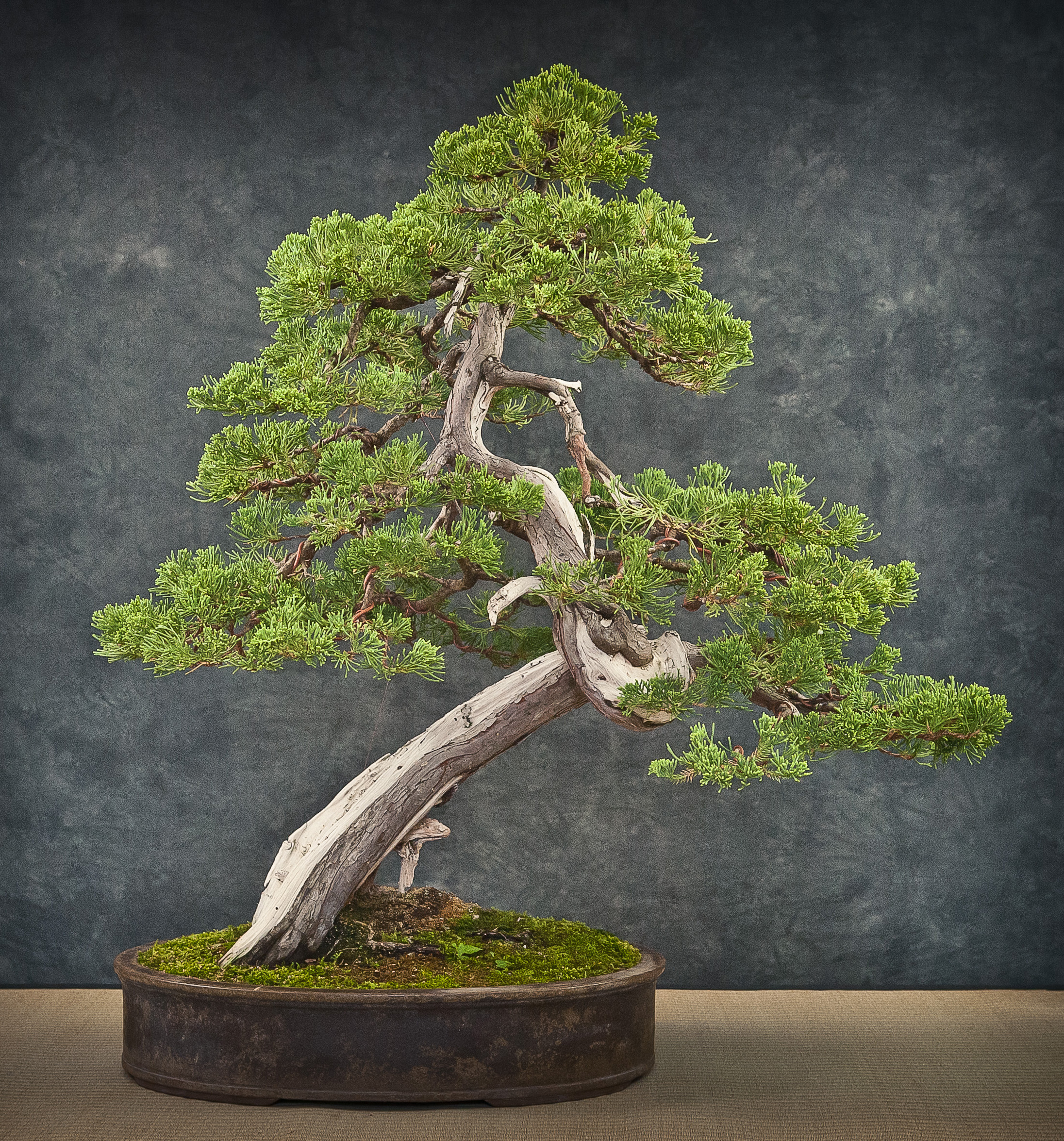
Juniperus horizontalis
In training since 1952
Gift of Sydney Porter, Jr., 2011
John Naka styled this bonsai and included it in his first book, Bonsai Techniques.

Celtis sinensis
In training since 1946
Gift of Shu-ying Lui, 1986
This is a deciduous tree native to East Asia. When the tree is bare in the winter you can appreciate the zig-zag effect of the pruning style beloved of Chinese penjing artists.
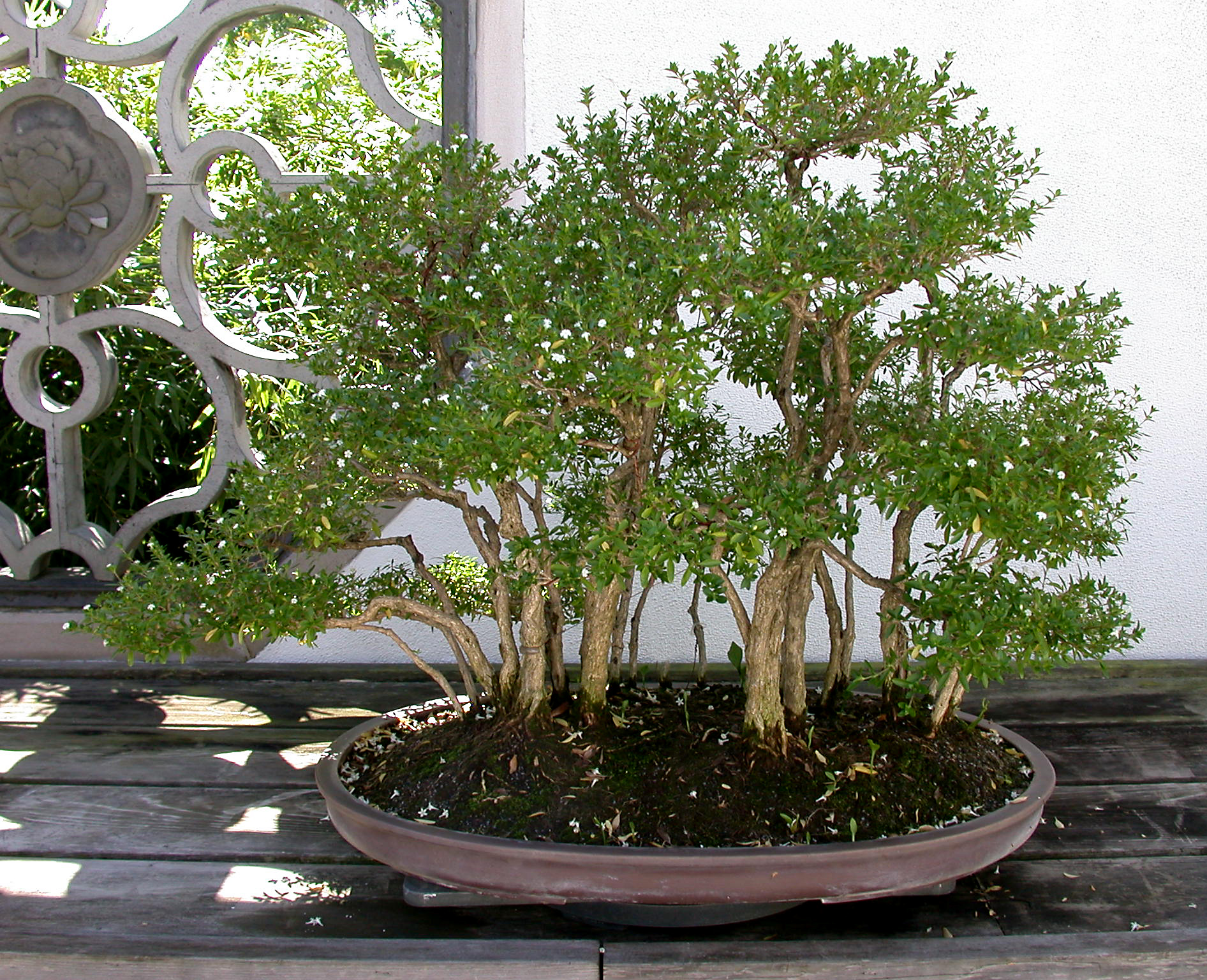
Serissa japonica
In training since 1951
Gift of Shu-ying Lui, 1986
Coming from temperate regions in Asia, this species blooms practically all year round. There are usually so many tiny white flowers that it is also known as the "tree of a thousand stars."
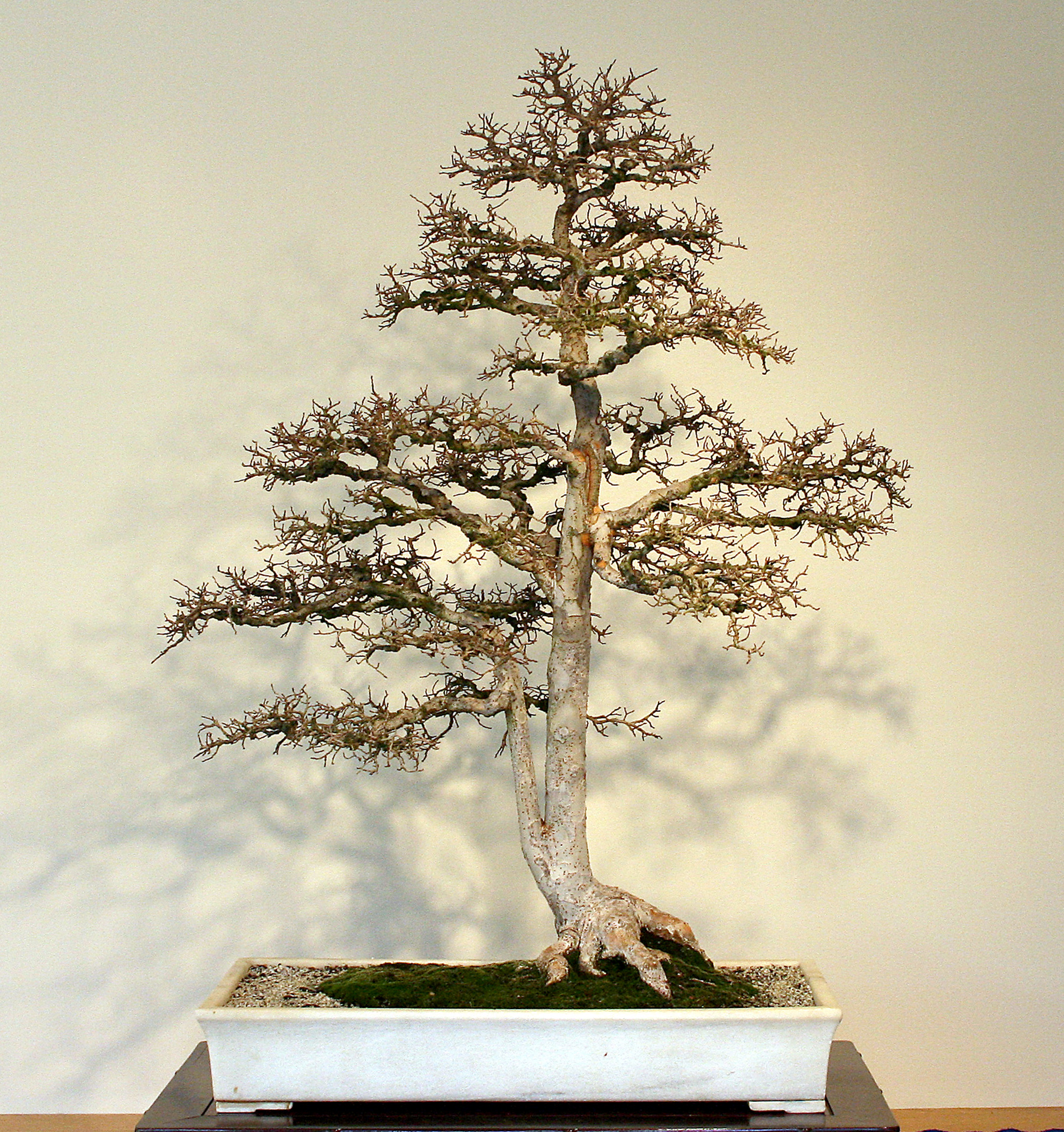
Ulmus parvifolia
In training since 1961
Gift of Shu-ying Lui, 1986
The trunk of this tree exhibits a flaking bark of grey, pink and tan "camouflage" pattern that explains its other common name--lacebark elm.
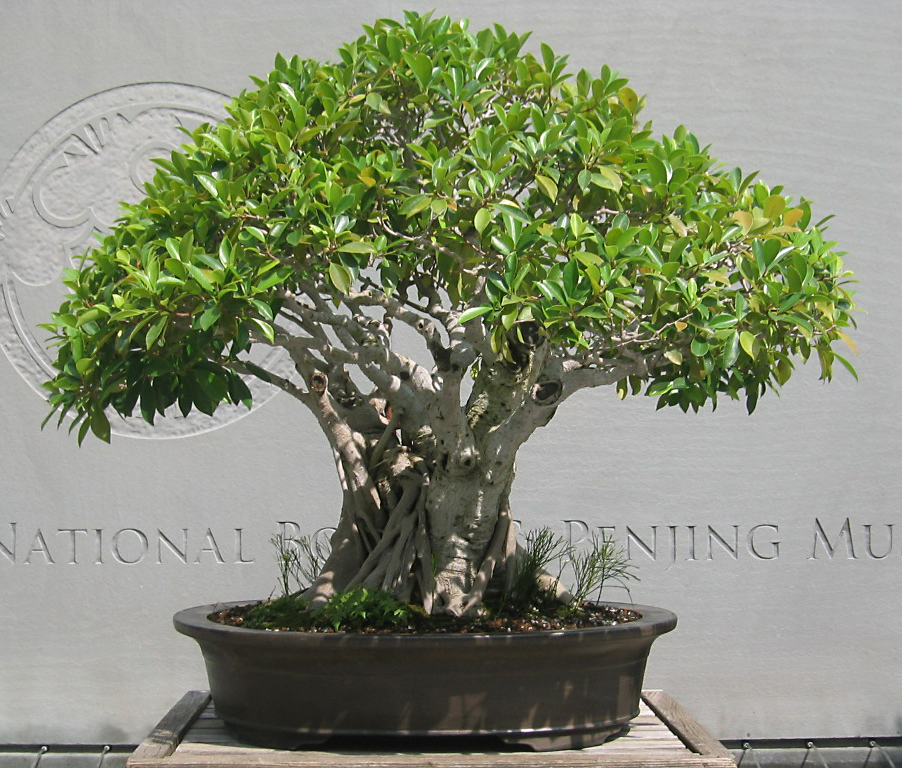
Ficus microcarpa
In training since 1906
Gift of Shu-ying Lui, 1986
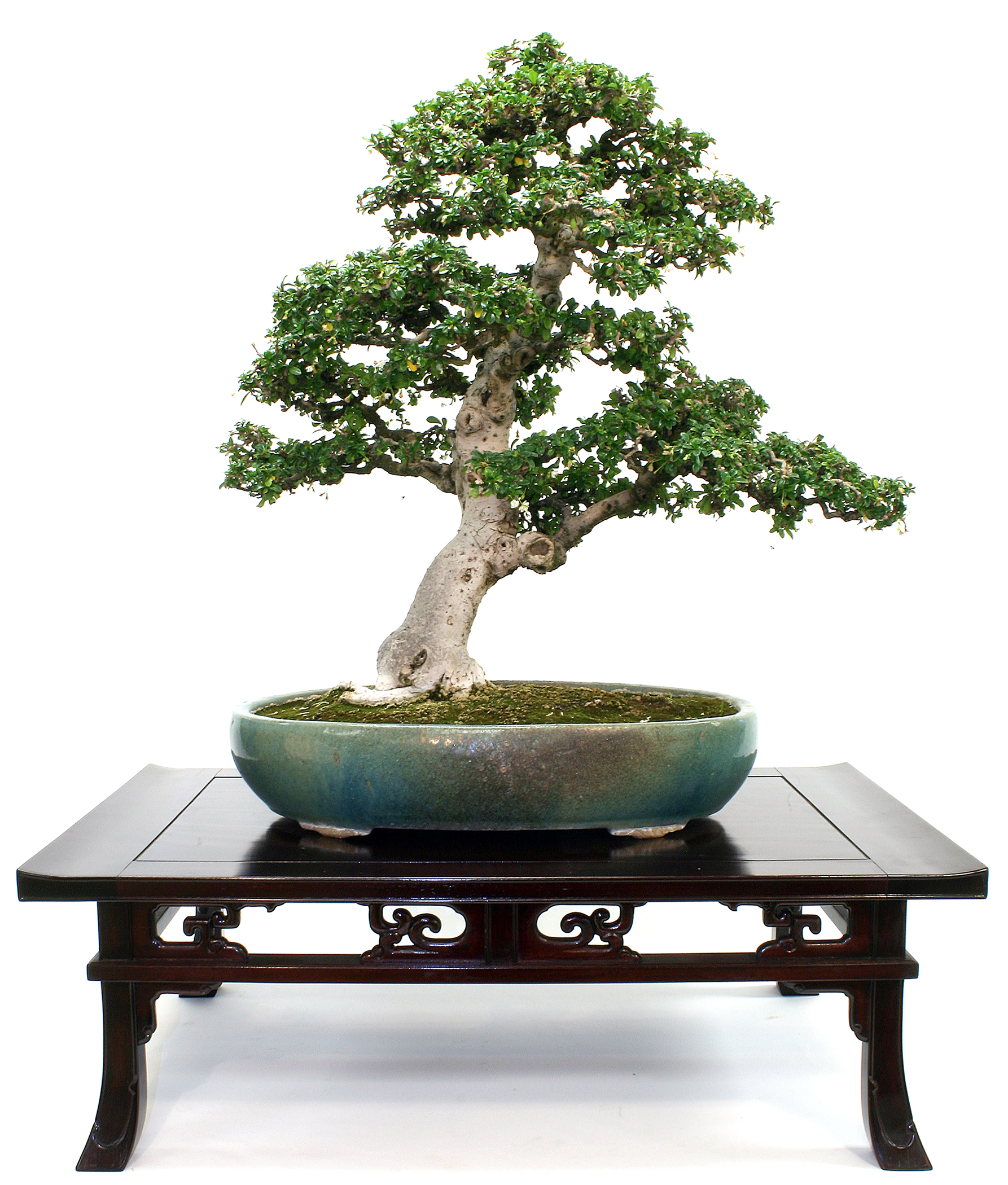
Ehretia microphylla
In training since 1956
Gift of Shu-ying Lui, 1986
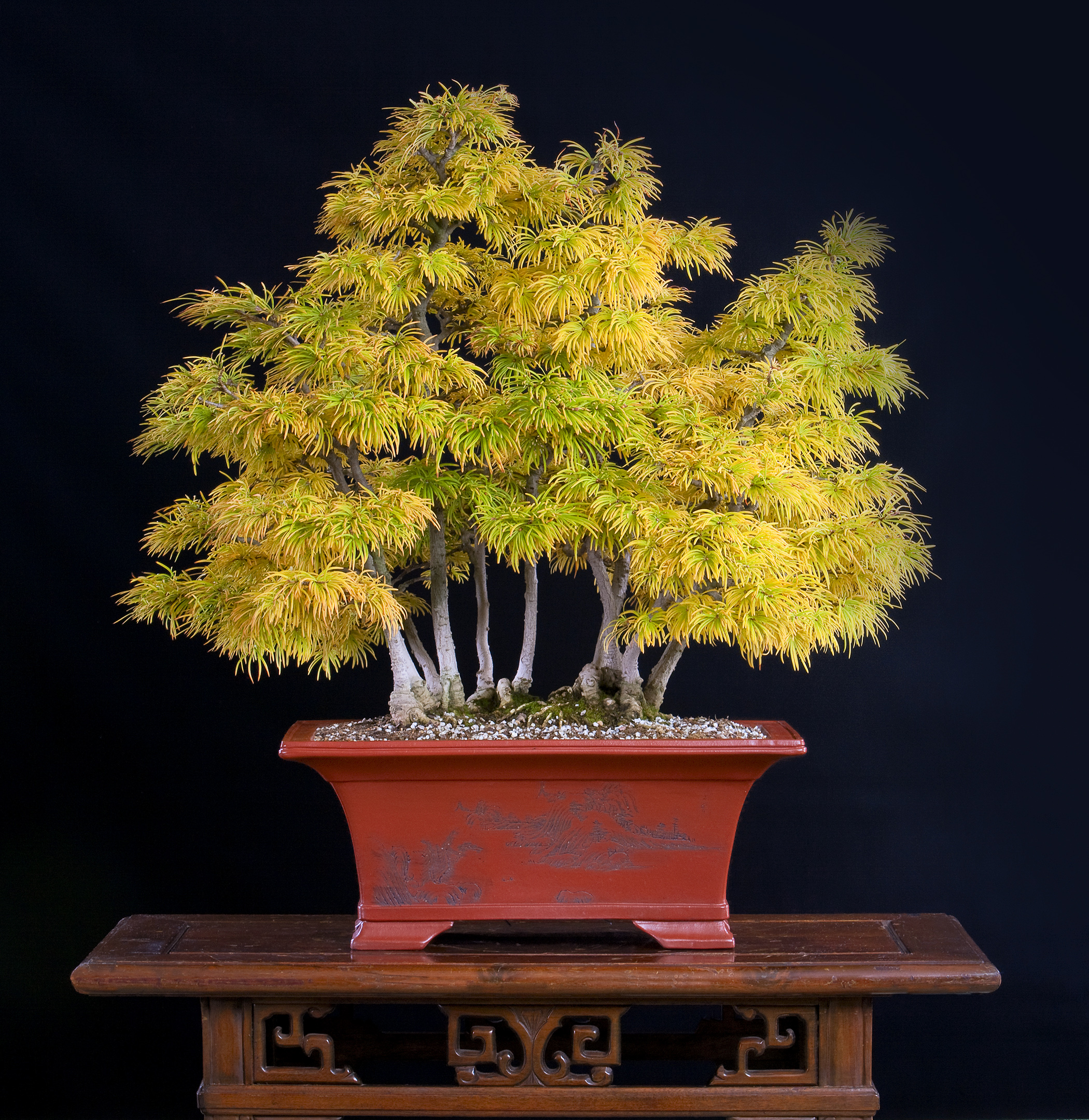
Pseudolarix amabilis
In training since 1971
Gift of Shu-ying Lui, 1986
The golden-larch is a rare and unusual conifer from China that turns bright golden yellow in the fall before dropping its needles.

Ulmus parvifolia
In training since 1961
Gift of Yee-sun Wu, 1986
In pairing a rock with a tree, it is important to keep the tree from becoming too big for the rock in order to maintain a balance.
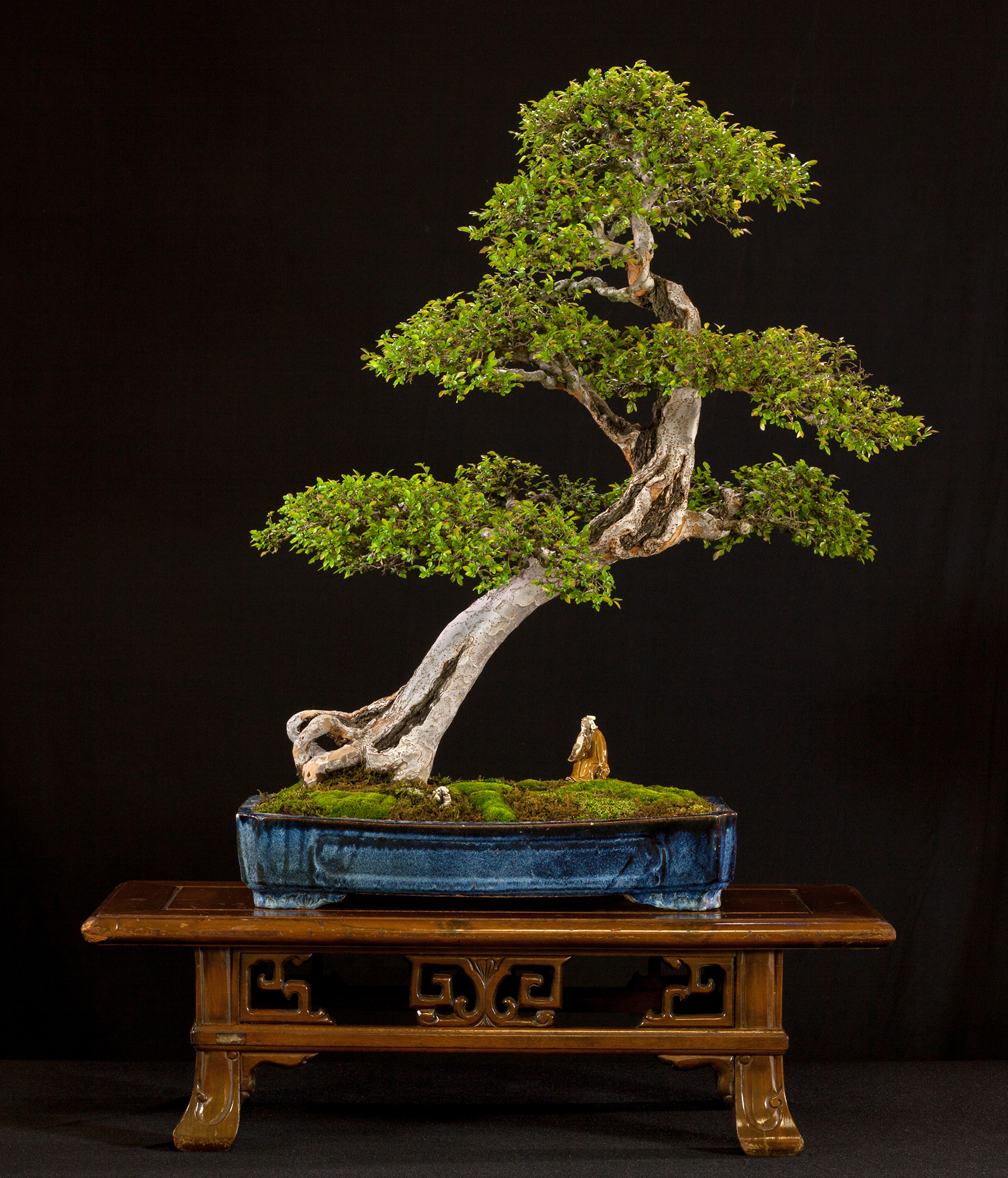
Ulmus parvifolia
In training since 1956
Gift of Yee-sun Wu, 1986
Chinese penjing are often styled with contorted roots and branches which give them a sense of lively movement.

Ulmus parvifolia
In training since 1951
Gift of Yee-sun Wu, 1986
The leaves of a Chinese elm are so tiny that if we saw a picture of this tree without the pot, we can easily be fooled into believing this is a much larger tree.

Pyracantha crenulata
In training since 1966
Gift of Yee-sun Wu, 1986
This forest of firethorn trees produces small red fruits that last through the winter months. In the spring, the trees are covered with fragrant white blossoms.
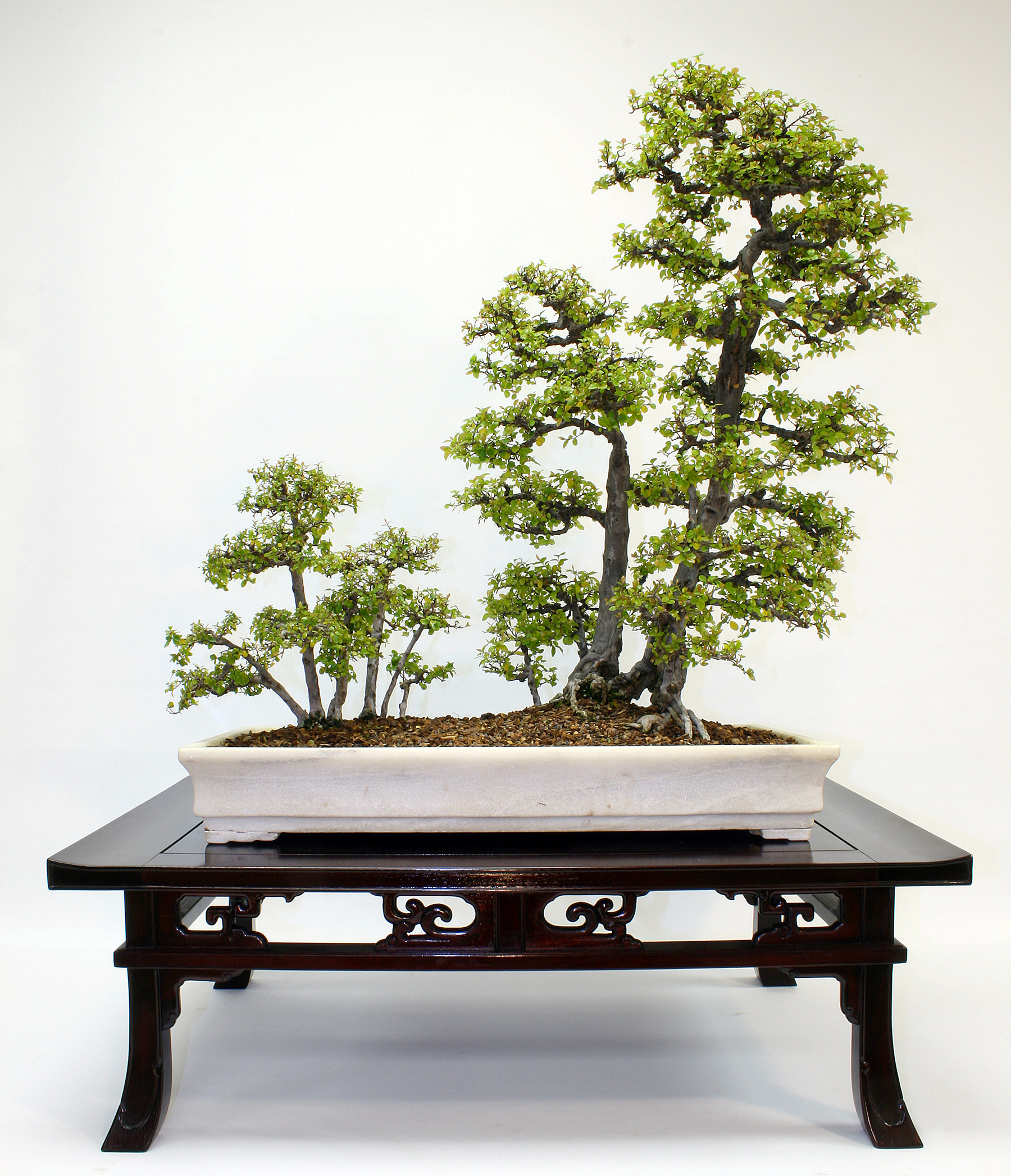
Sageretia thea
In training since 1961
Gift of Yee-sun Wu, 1986
Penjing means "landscape in a tray." Here we see naturalistic groupings of trees as if in the wild. The white marble container or tray is unique to penjing.
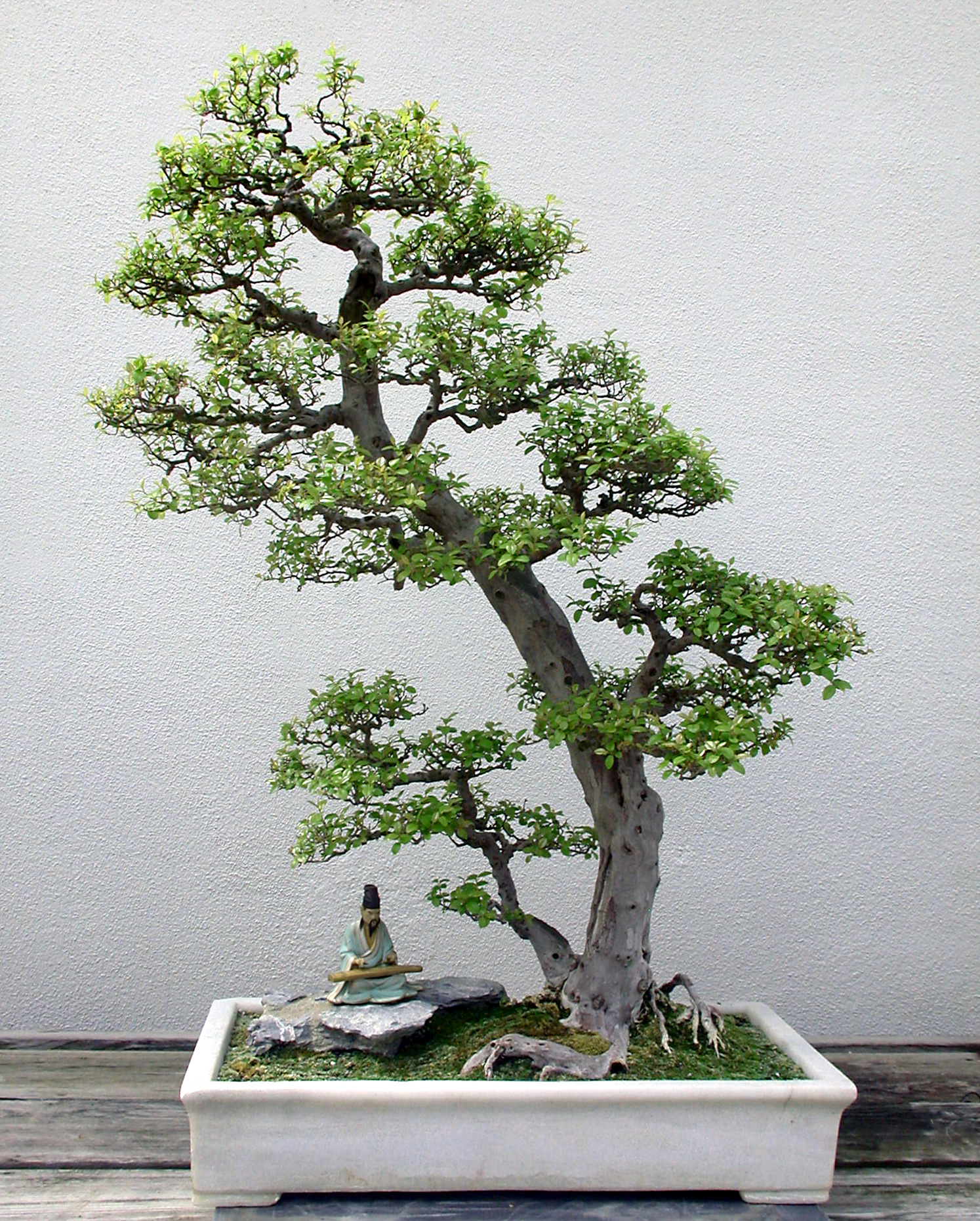
Sageretia thea
In training since 1951
Gift of Yee-sun Wu, 1986
The Chinese love to add little figurines to their penjing. It helps us imagine what it would be like to sit under this tall tree.
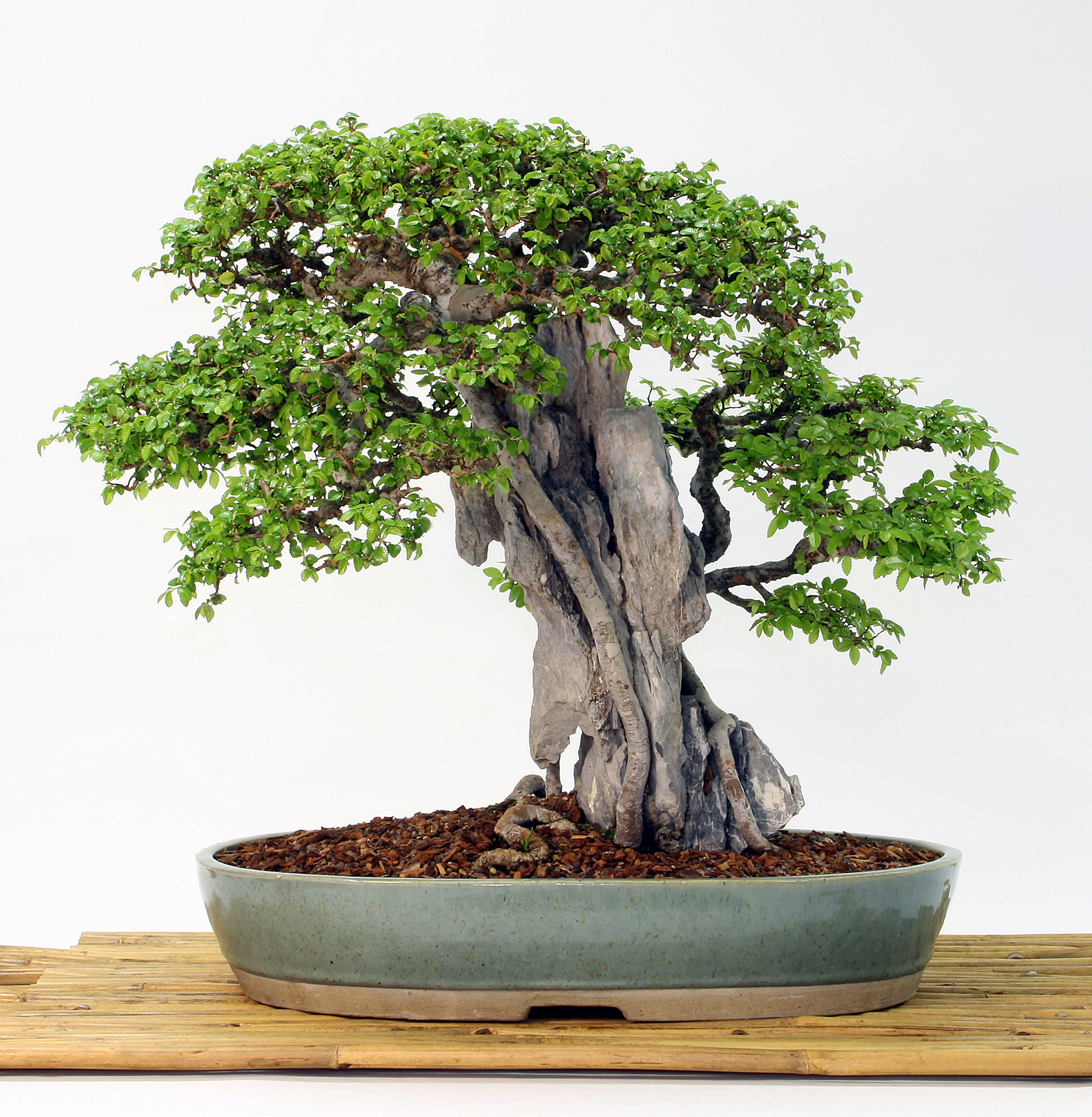
Ulmus parvifolia
In training since 1956
Gift of Yee-sun Wu, 1986
To the Chinese, viewing a penjing of a rock with a tree evokes a more distant and rugged wilderness.
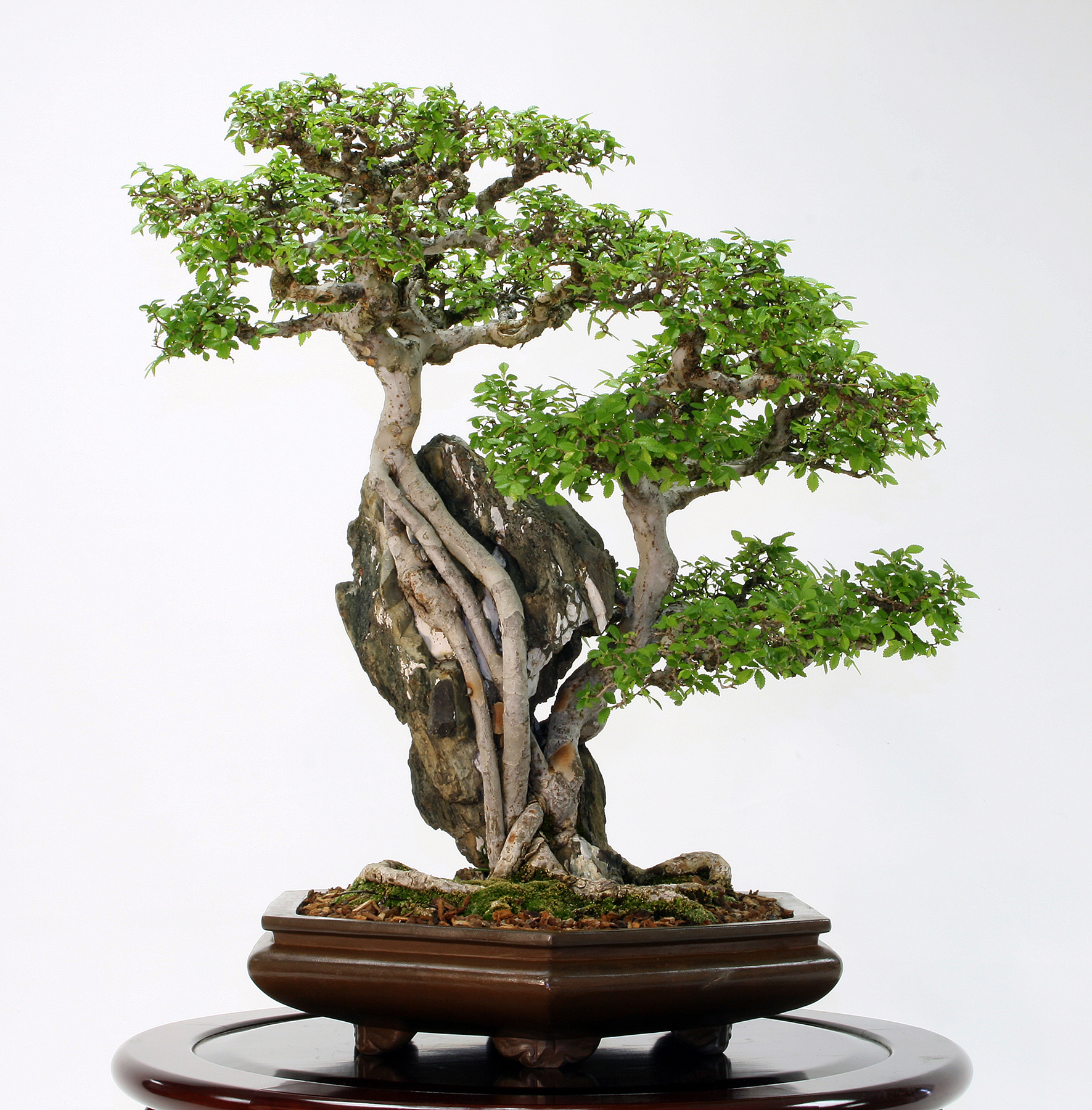
Ulmus parvifolia
In training since 1951
Gift of Yee-sun Wu, 1986
Root-over-rock style penjing showcases the Chinese love for odd-shaped rocks. The tree has been trained from a young seedling to grow around the rock.
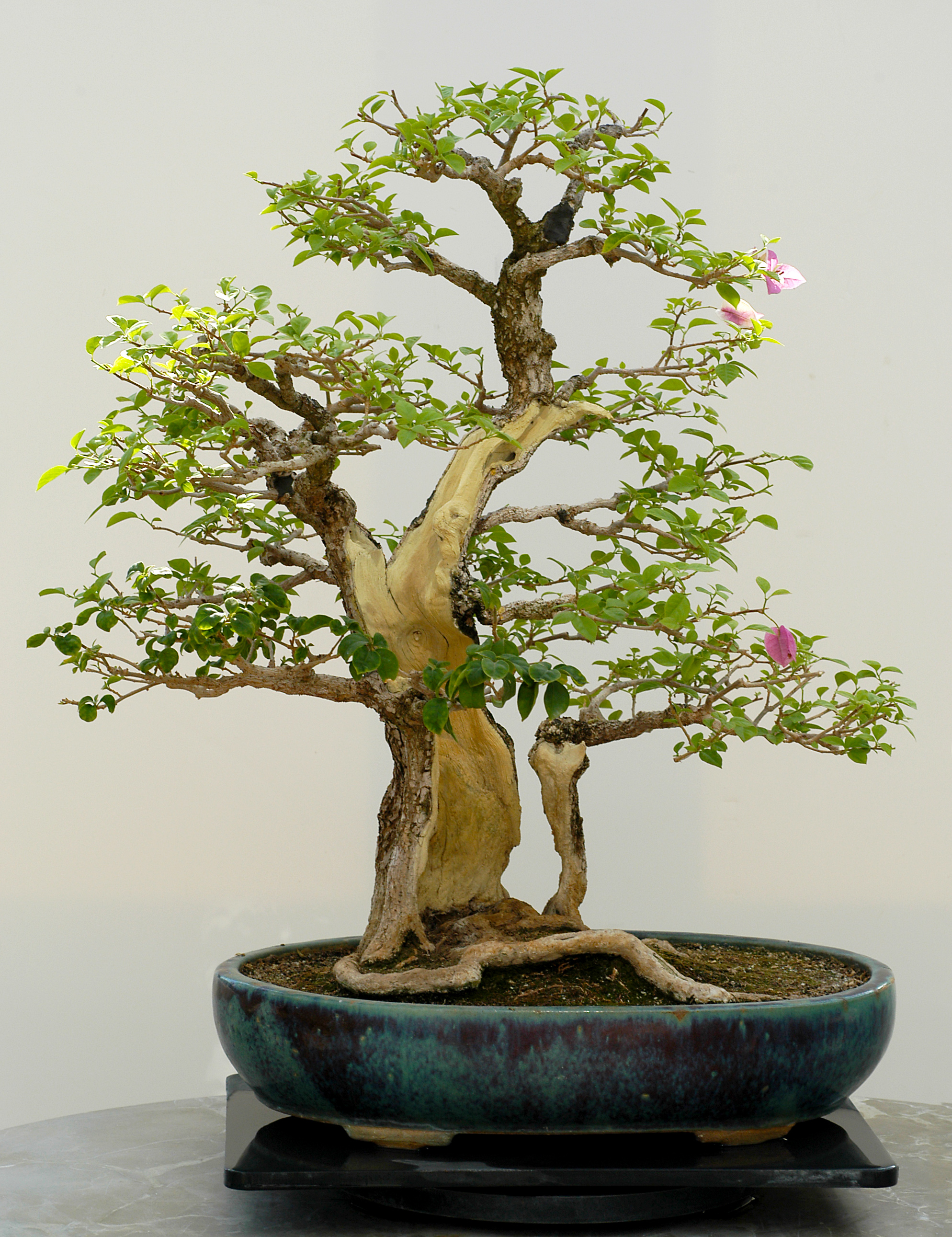
Bougainvillea glabra
In training since 1936
Gift of Yee-sun Wu, 1986
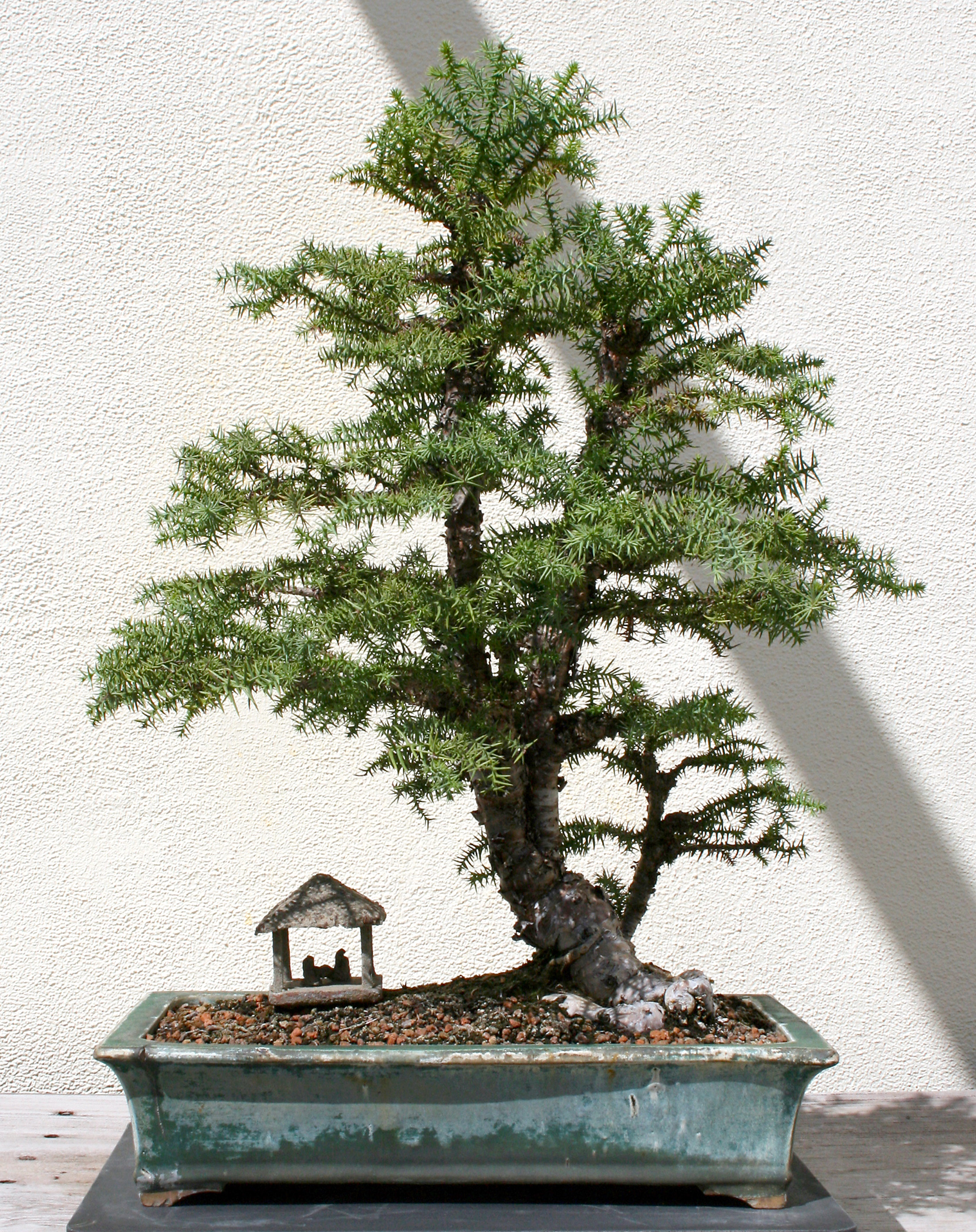
Taiwania cryptomerioides
In training since 1946
Gift of Yee-sun Wu, 1986
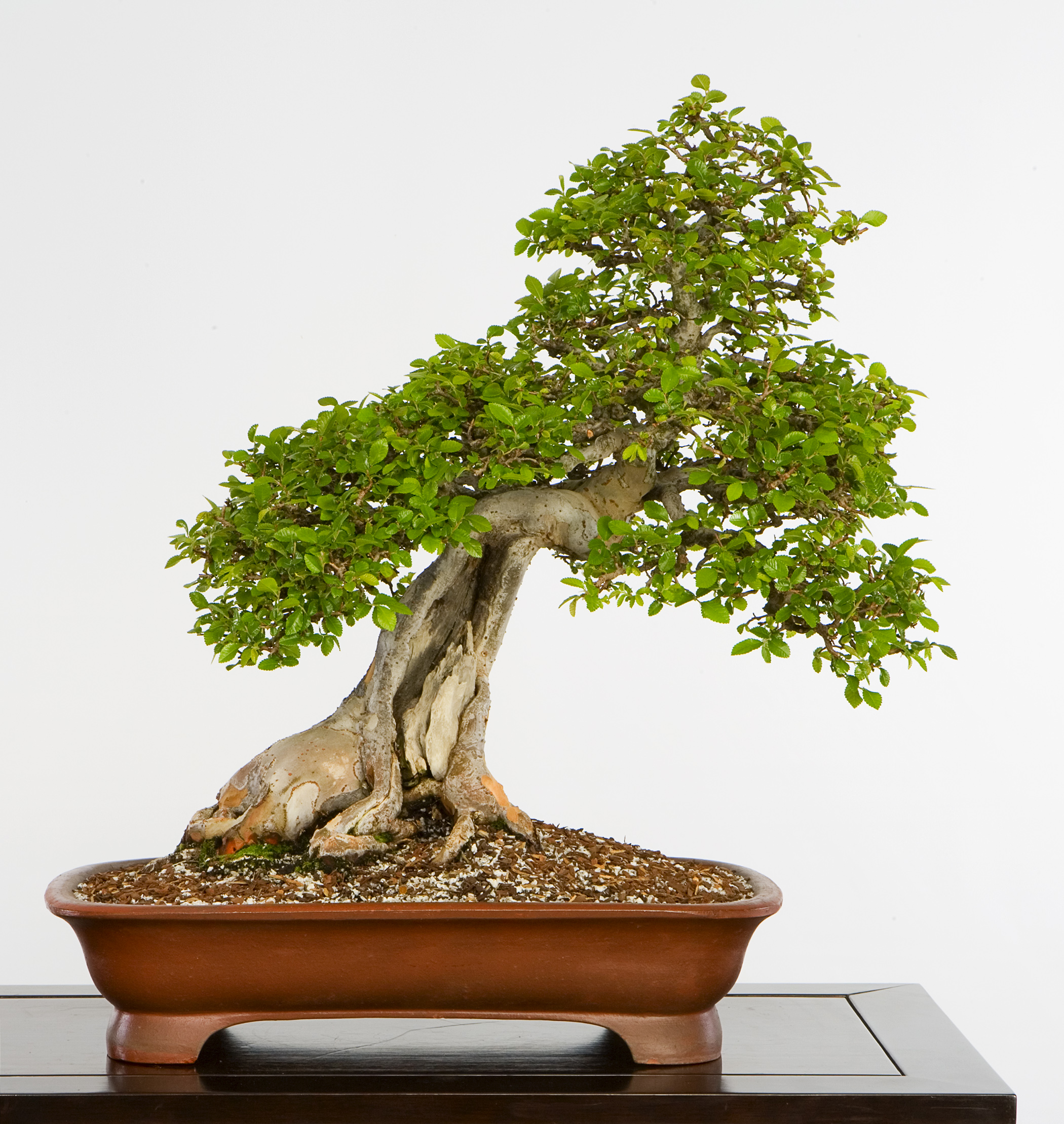
Ulmus parvifolia
In training since 1946
Gift of Yee-sun Wu, 1986
The hollow trunk and gnarled branches of this tree imply survival into old age.
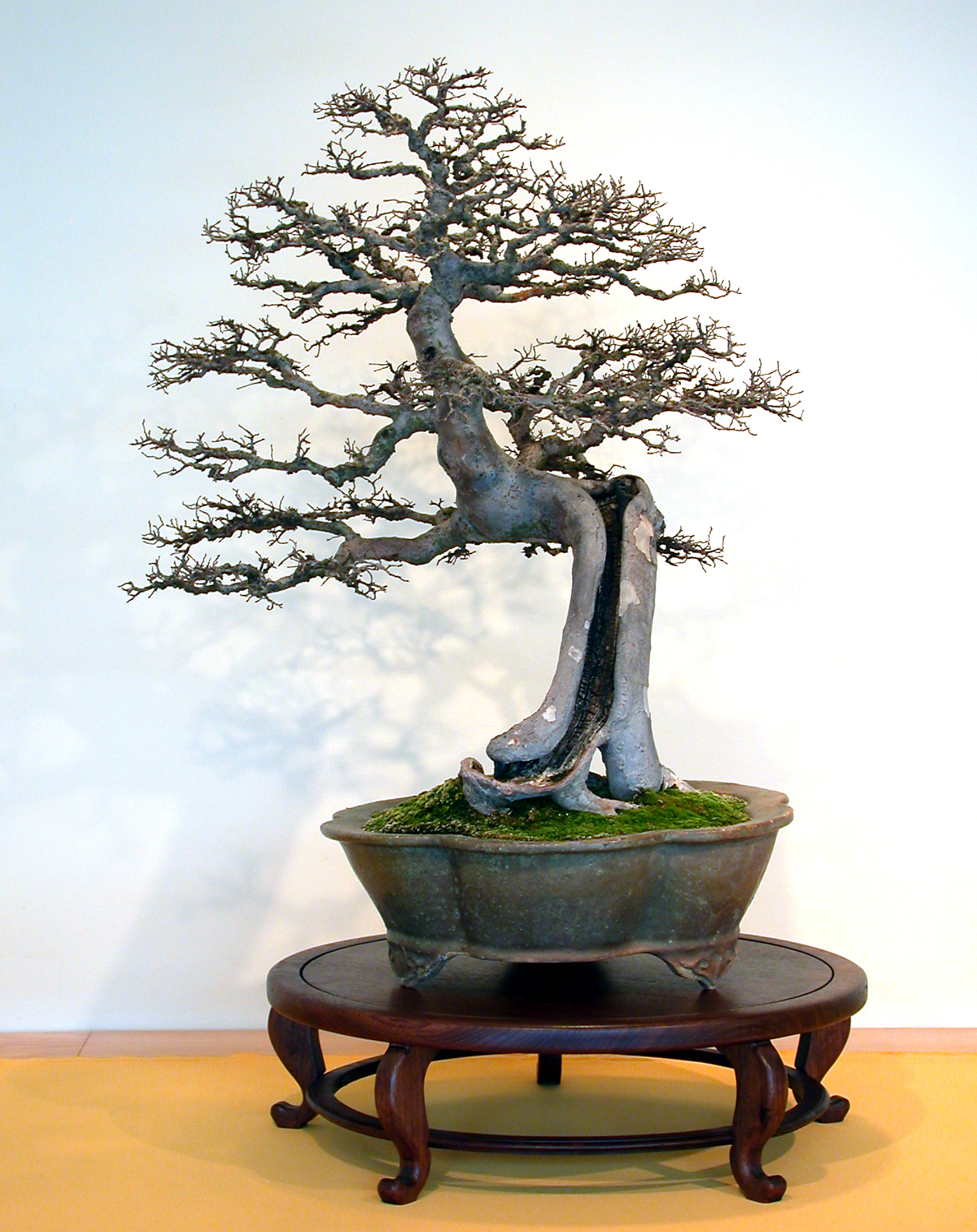
Ulmus parvifolia
In training since 1906
Gift of Yee-sun Wu, 1986
Many old Chinese paintings depict trees with angular bends like this one. The hollow trunk and exposed surface roots add to its quirky character.
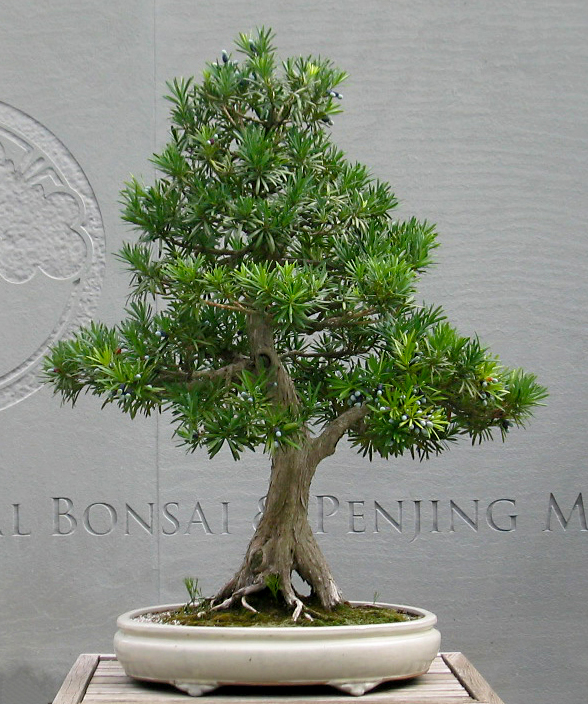
Podocarpus macrophyllus
In training since 1956
Gift of Yee-sun Wu, 1986
This is an evergreen conifer native to mountainous areas of southern China and Japan. Small berry-like fruits ripen in the summer.
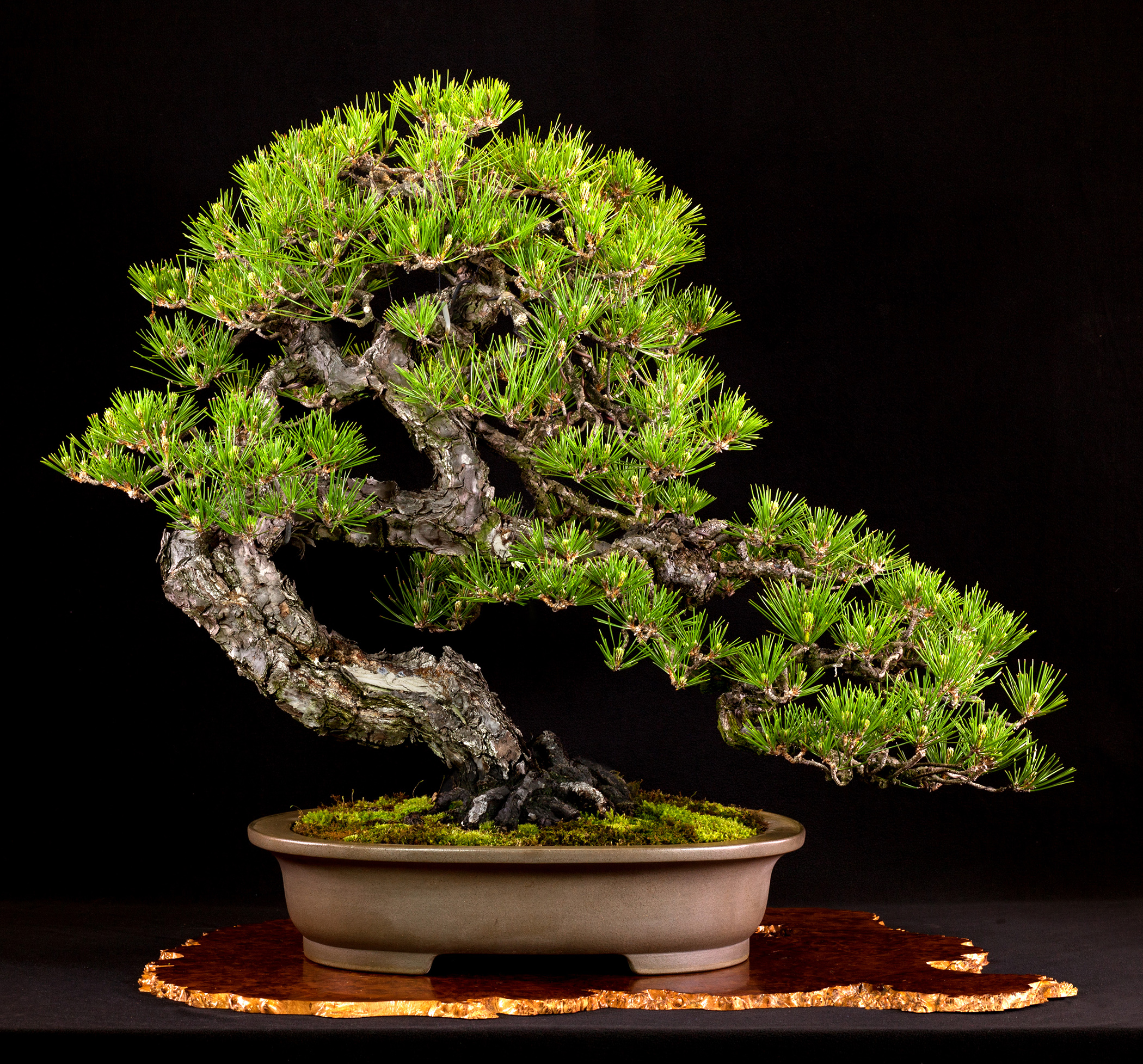
Pinus thunbergii
In training since 1936
Gift of Yee-sun Wu, 1986
This pine was styled by Yee-sun Wu, a master of the Lingnan School of penjing. Curvy lines of the trunk and branches are a characteristic of this school, suggesting a flowing image.

Pinus thunbergii Corticosa Group
In training since 1936
Gift of Yee-sun Wu, 1986
As this pine matures, its bark develops deep fissures and raised sections known as wings or ridges. Look closely at the branches on this tree to see this characteristic.
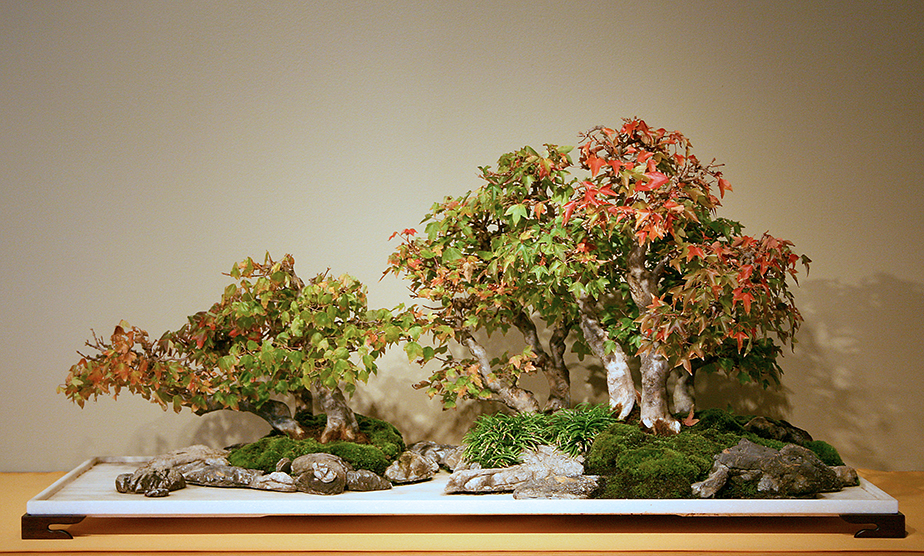
Acer buergerianum
In training since 2001
Gift of Qingquan Zhao in Honor of Emily Jane McNear, 2001
This landscape scene was created by Chinese penjing master Qingquan Zhao to suggest islands surrounded by water.
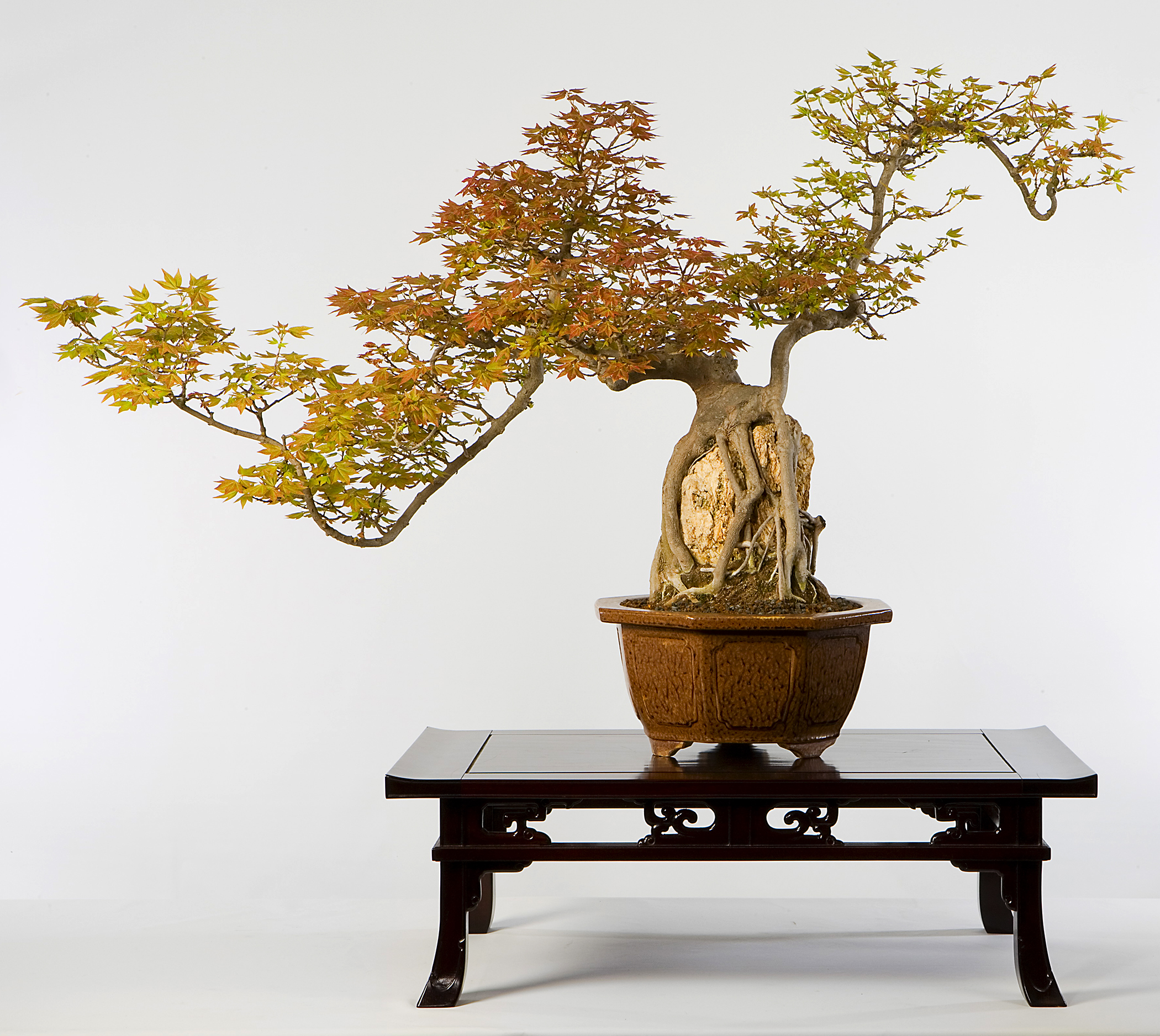
Acer buergerianum
Training years unknown
Gift of Stanley Chinn, 2002
This tree was trained into a Chinese dragon shape! It is unusual to see a tree in this historical style outside of China, especially one made by a Chinese-American.
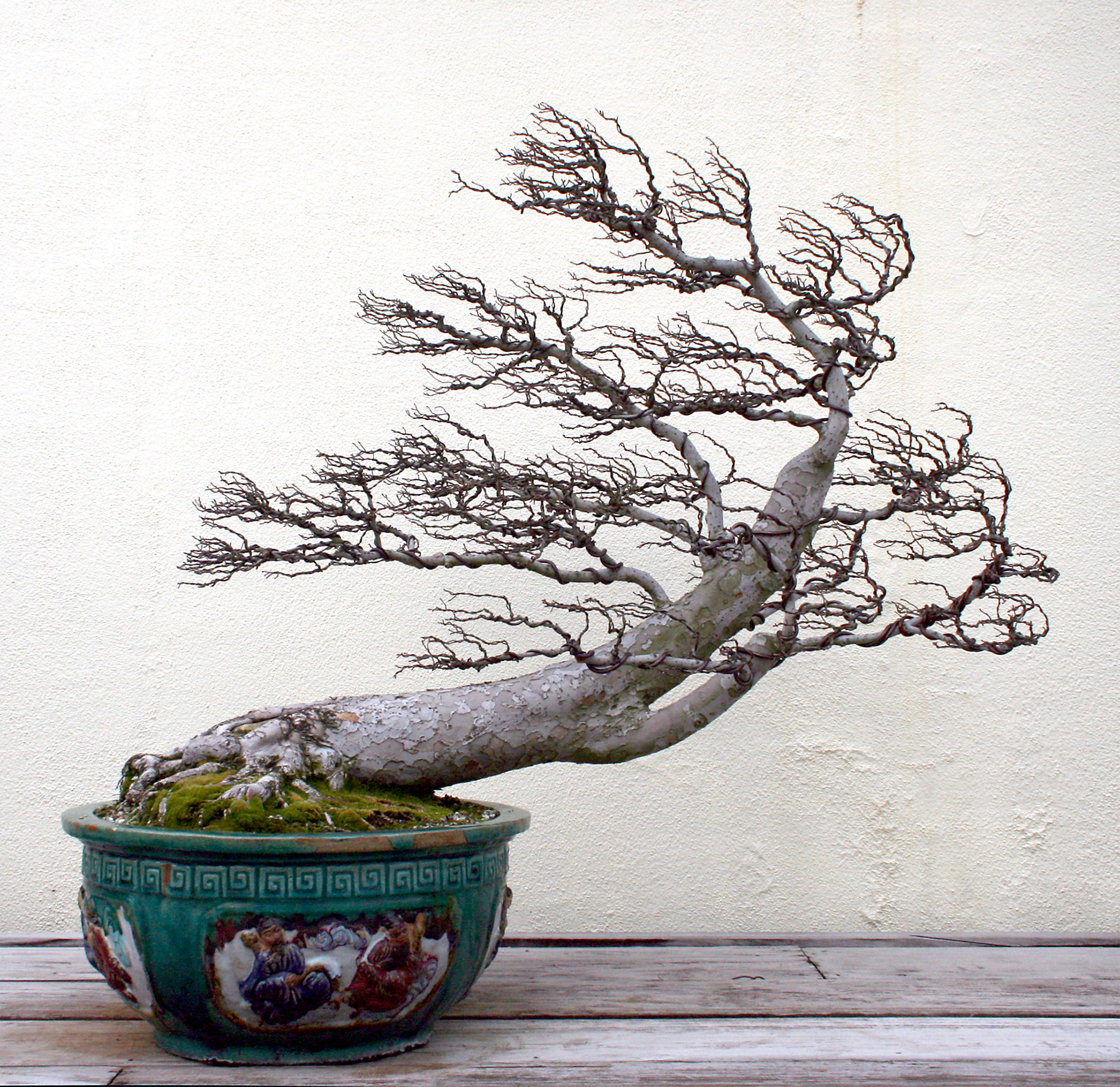
Ulmus parvifolia
Training age unknown
Gift of Stanley Chinn, 2002
To view this tree is to feel the power of the wind. Why is that? The branches appear to grow in one direction as if forced by a strong wind. The bonsai artist creates this illusion by bending the branches into position with the support of aluminum wires. This creates the distinctive windswept style.
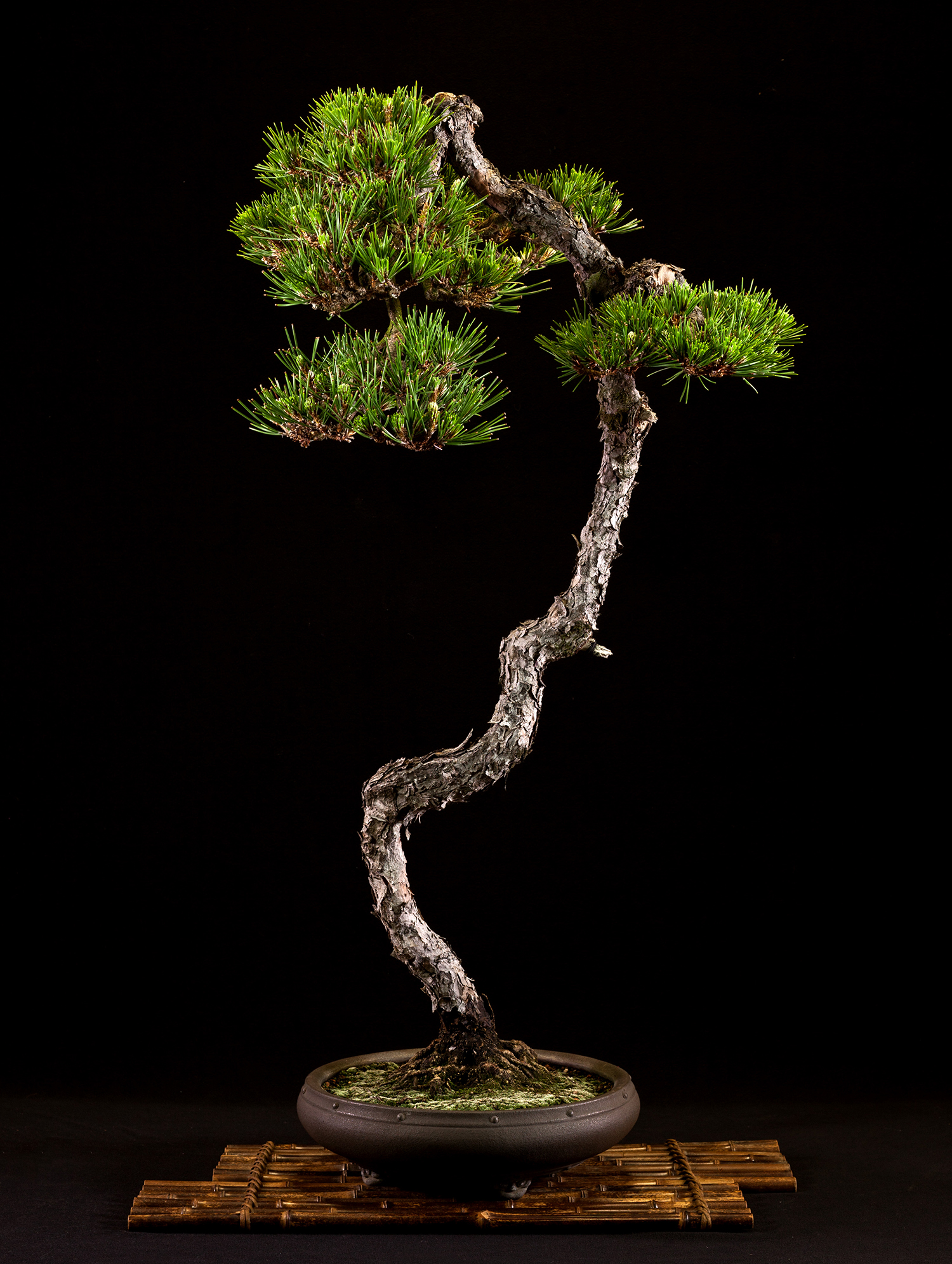
Pinus thunbergii
Training age unknown
Gift of Stanley Chinn, 2002
With its tall, slender trunk and sparse foliage, this pine is an example of the literati style. It resembles the type of trees featured in the paintings of Chinese literati (scholars.)
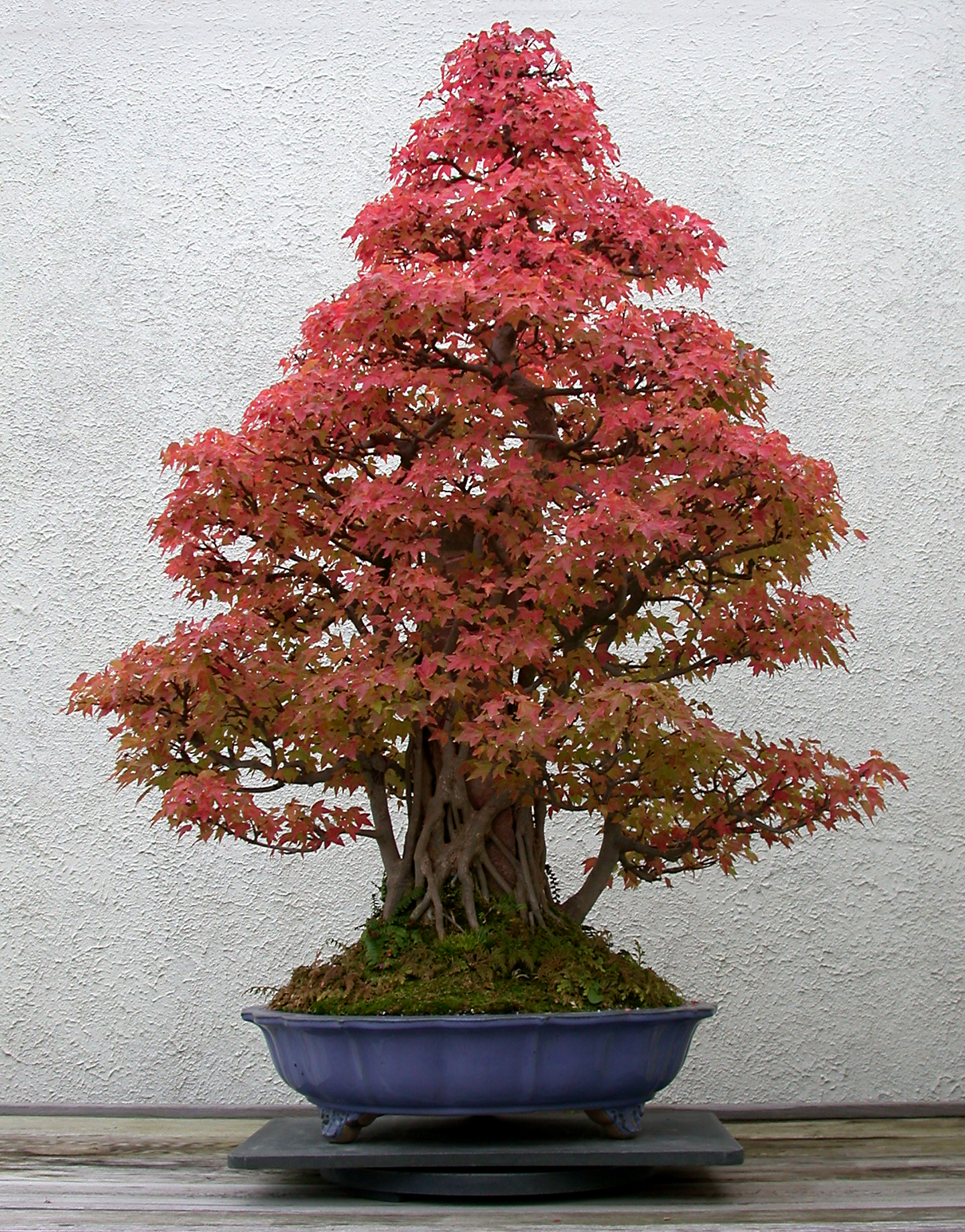
Acer buergerianum
Training age unknown
Gift of Stanley Chinn, 2002
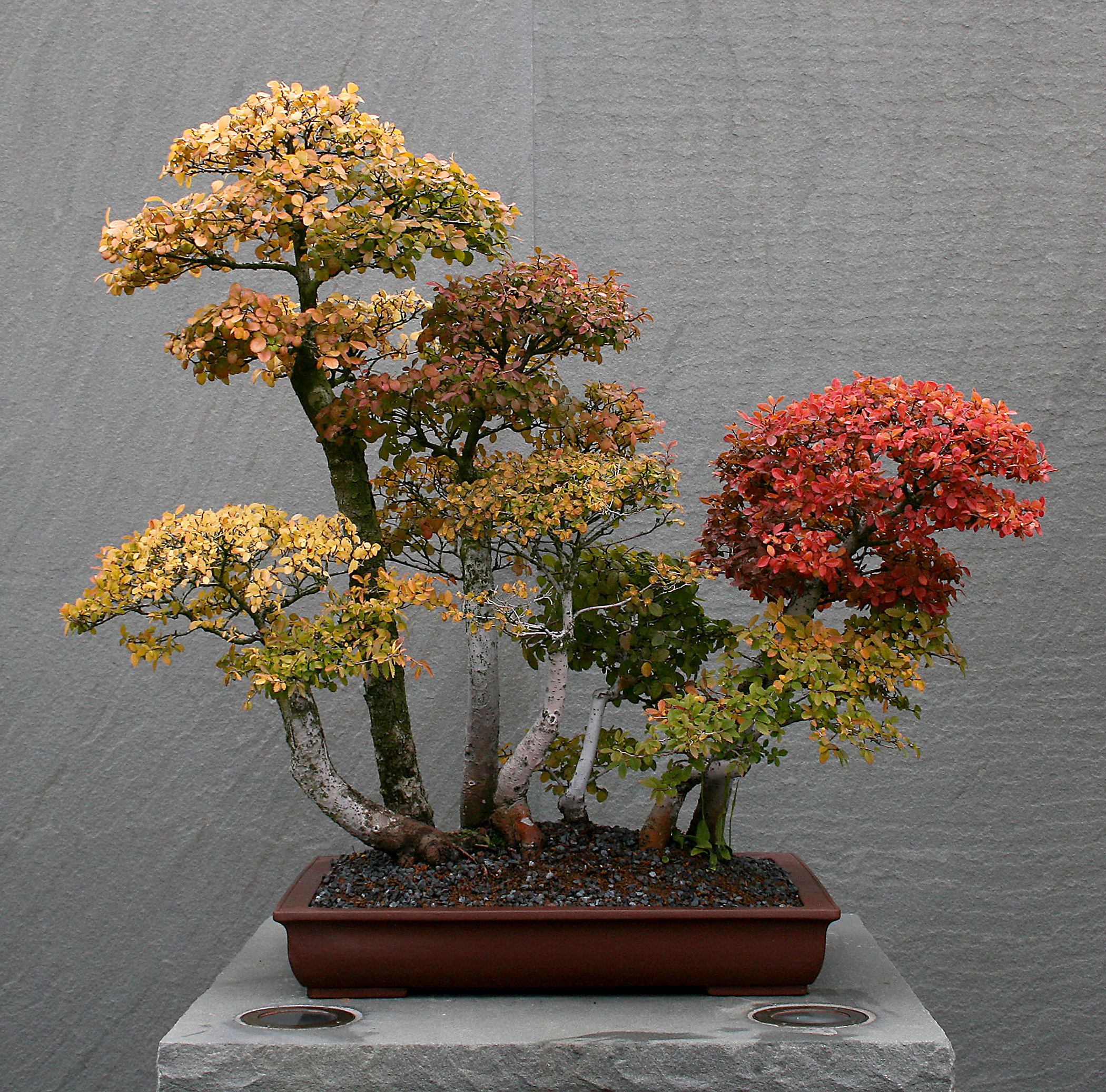
Ulmus parvifolia
Training years unknown
Gift of Stanley Chinn, 2002
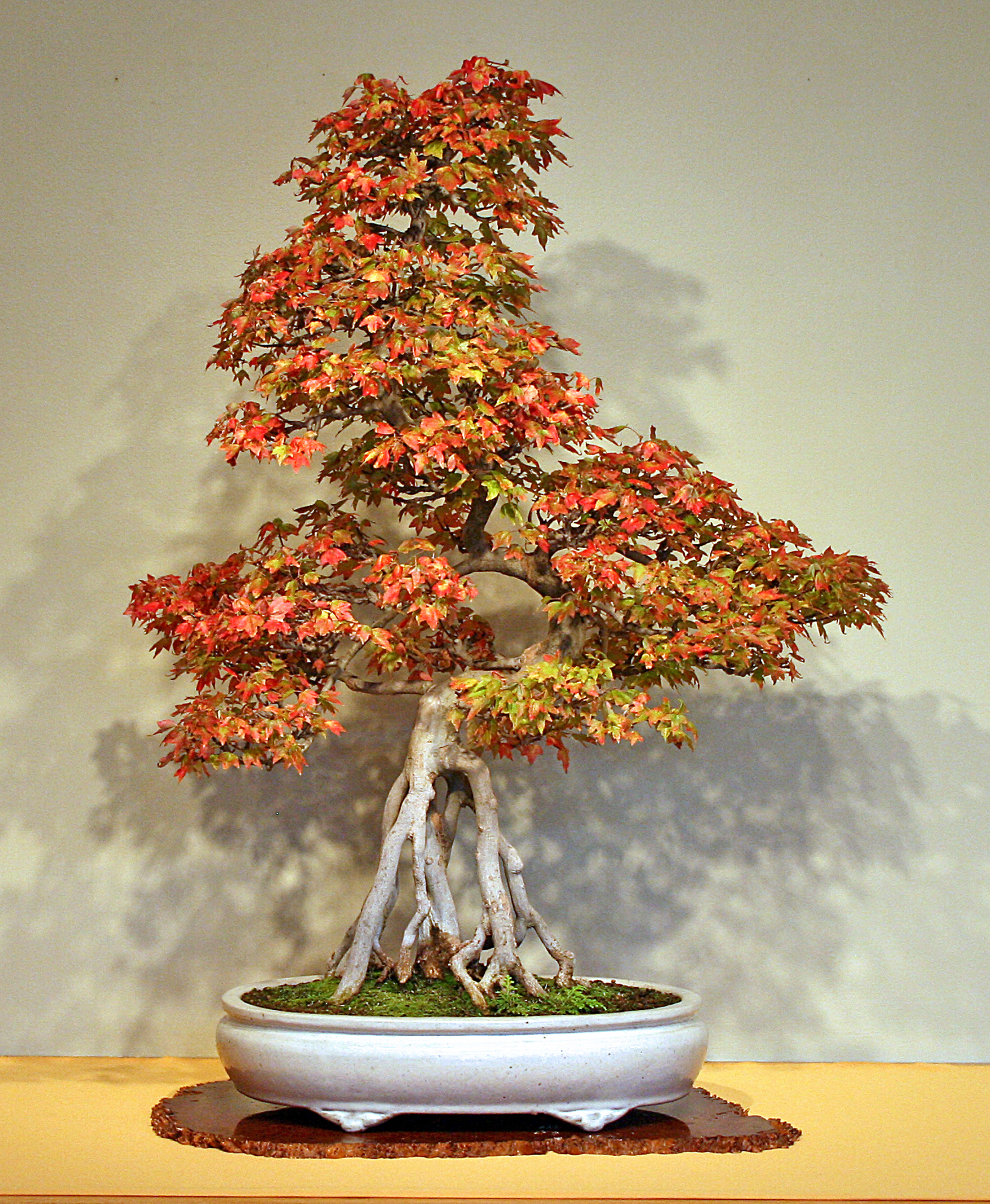
Acer buergerianum
Training age unknown
Gift of Stanley Chinn, 2002

Acer buergerianum
Training age unknown
Gift of Stanley Chinn, 2002
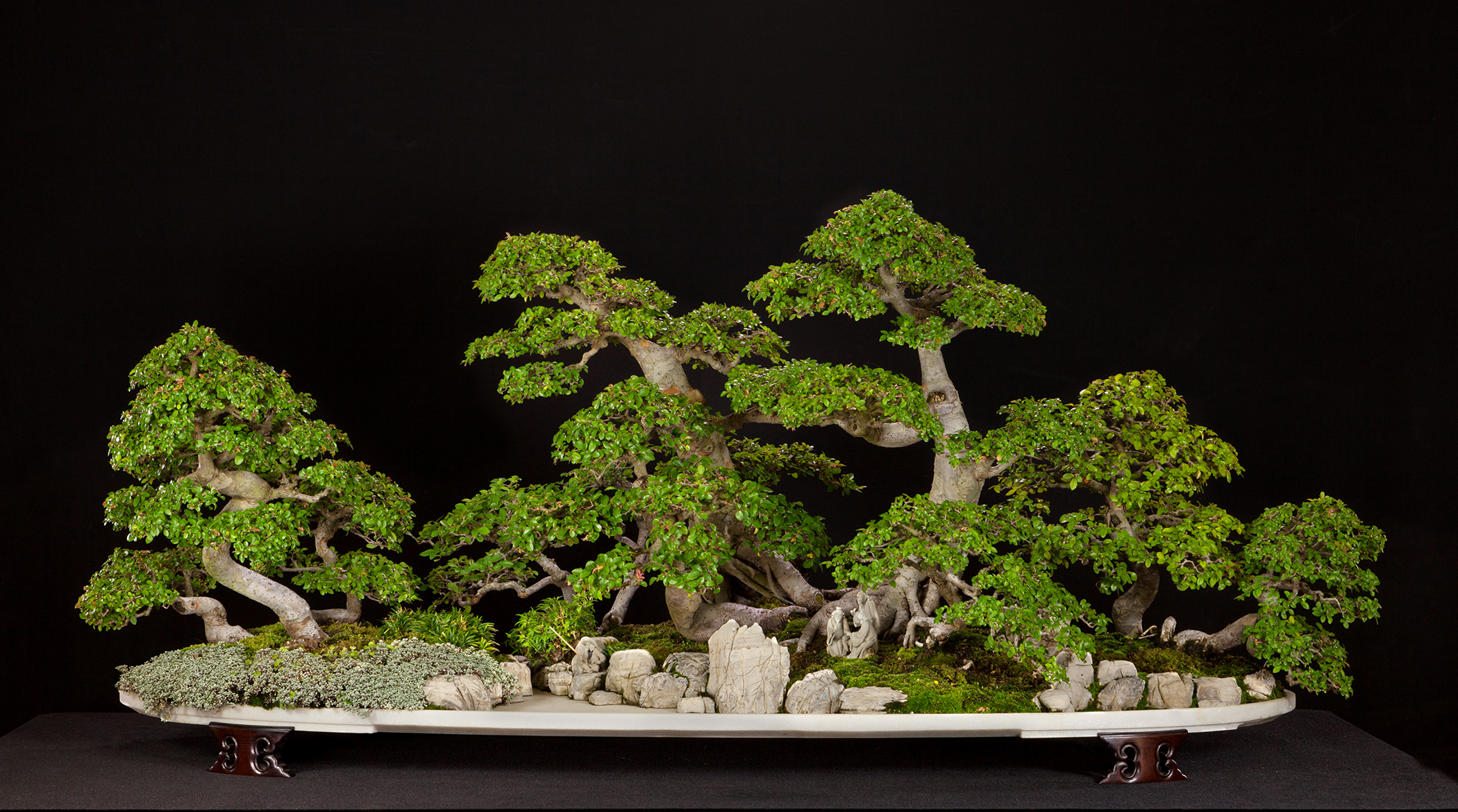
Ulmus parvifolia
In training since 2004
Gift of Yunhua Hu, 2004
This landscape penjing was created here at the Arboretum by Mr. Hu Yun Hua in 2004. He was the Director of the Penjing Research Center at the Shanghai Botanical Garden in China.
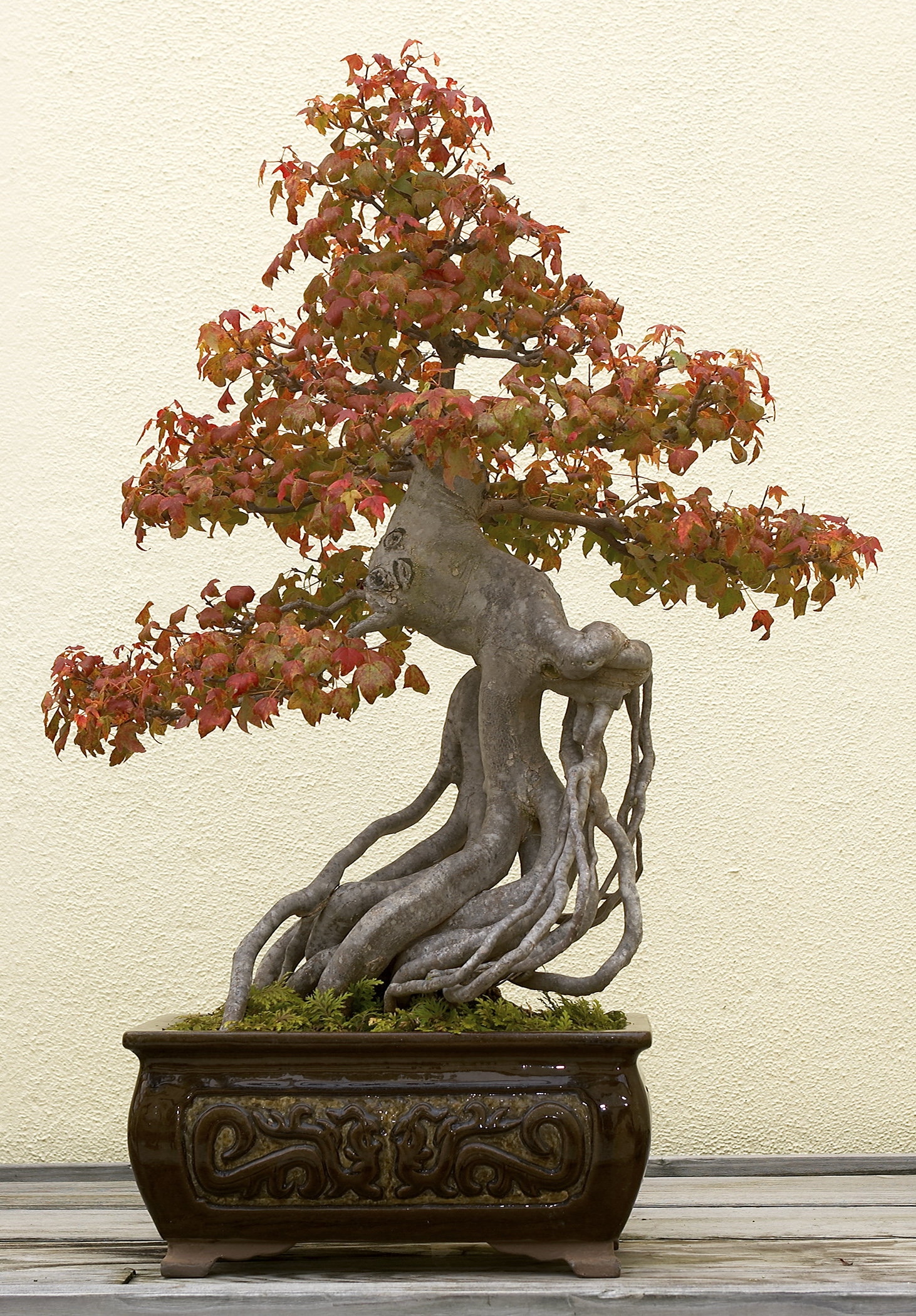
Acer buergerianum
In training since 1955
Gift of Michael Levin, 1999
This is an example of the exposed-root style popular in China. It is inspired by trees growing along riverbanks. When soil is gradually washed away, their roots develop a protective bark like the trunk.
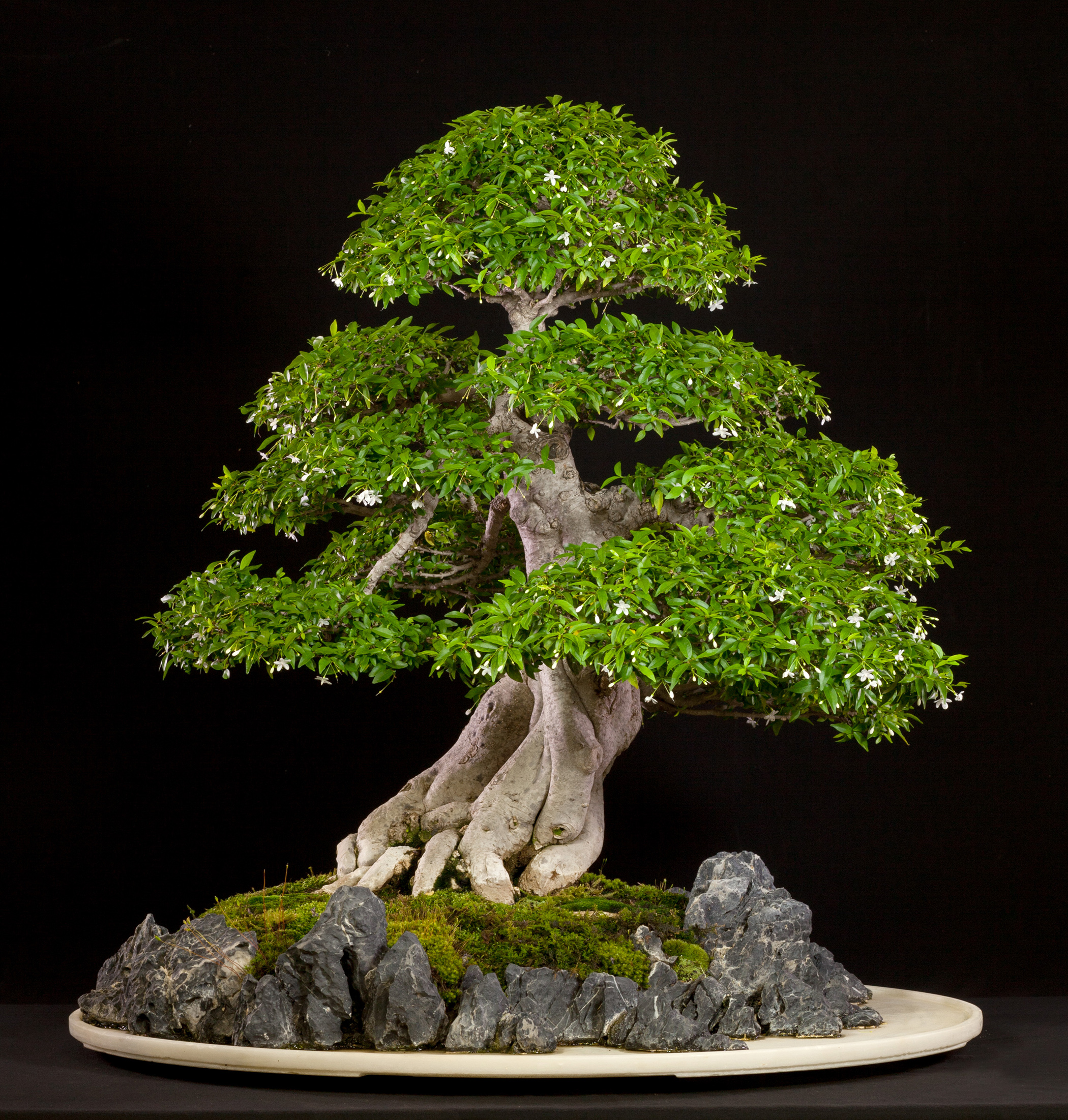
Wrightia religiosa
Training age unknown
Gift of Dr. Tang Quoc Kiet, 2002
Water-jasmine is a popular material for bonsai in southeast Asia. This one was imported from Vietnam, where rounded, cloud-shaped foliage pads on bonsai are typical.
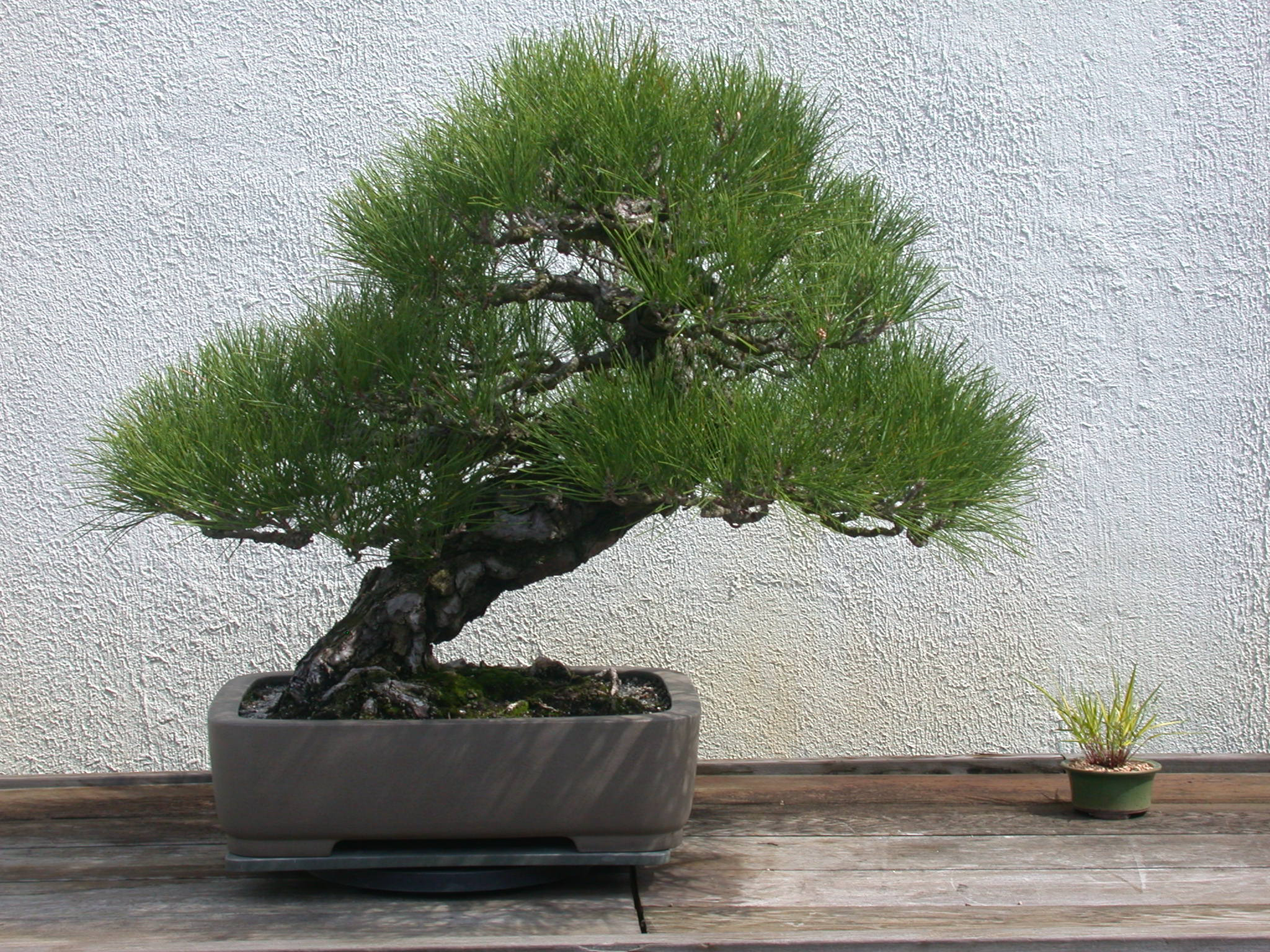
Pinus thunbergii
In training since 1895
Gift of Saichi Suzuki, 1976
The Japanese bonsai gift to the United States in honor of our bicentennial included 50 trees to represent the states, one of which had to be the same age as the country. This bonsai was chosen as the first tree because it was believed to be about 200 years old at the time of the dedication in 1976. It was originally collected from the Atsumi peninsula, southwest of Tokyo.
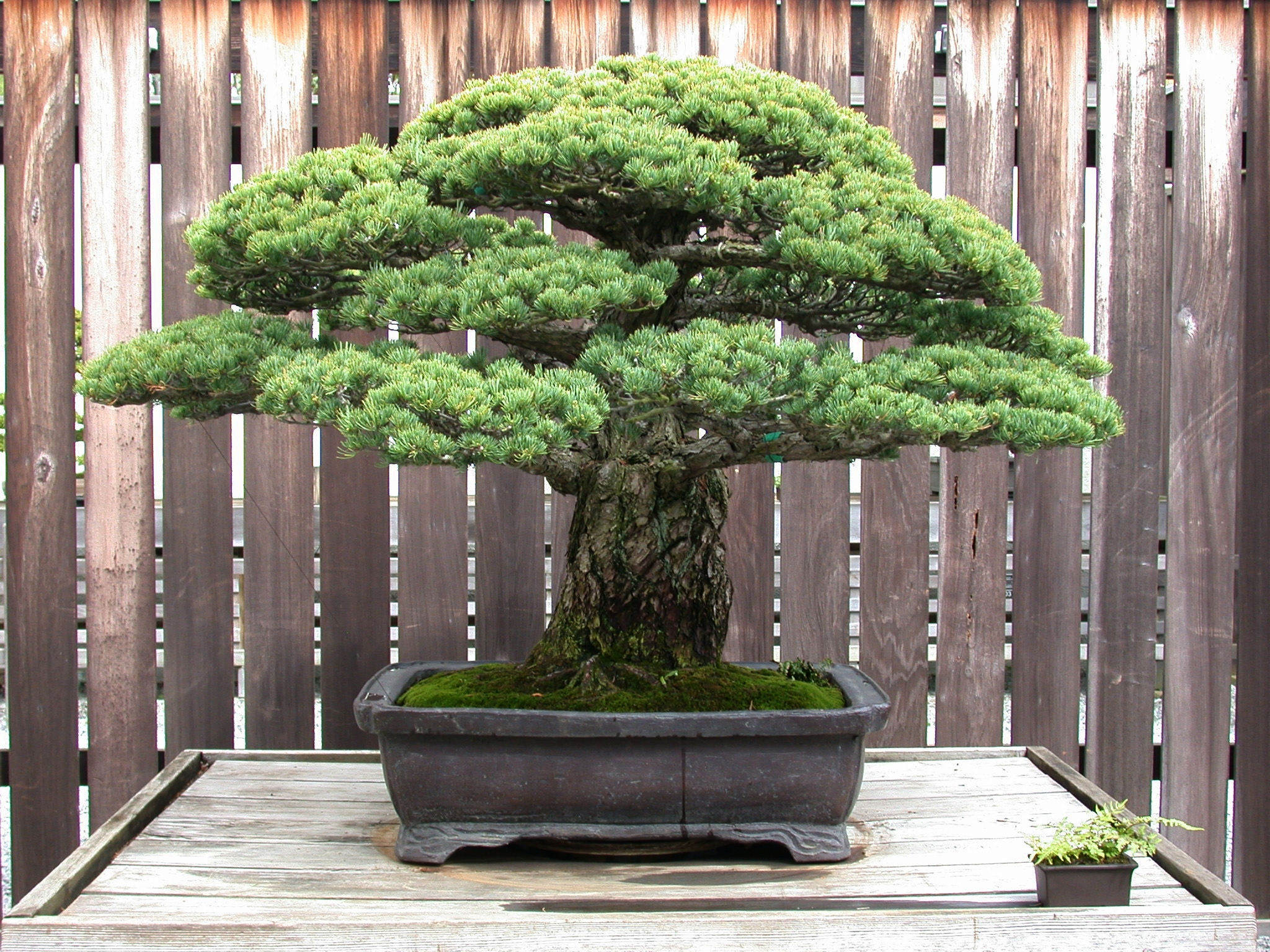
Pinus parviflora ‘Miyajima’
In training since 1625
Gift of Masaru Yamaki, 1976
This is the oldest bonsai in the Museum and was in the same family in Japan from the time it was created almost 400 years ago until gifted to the U.S. in 1976.
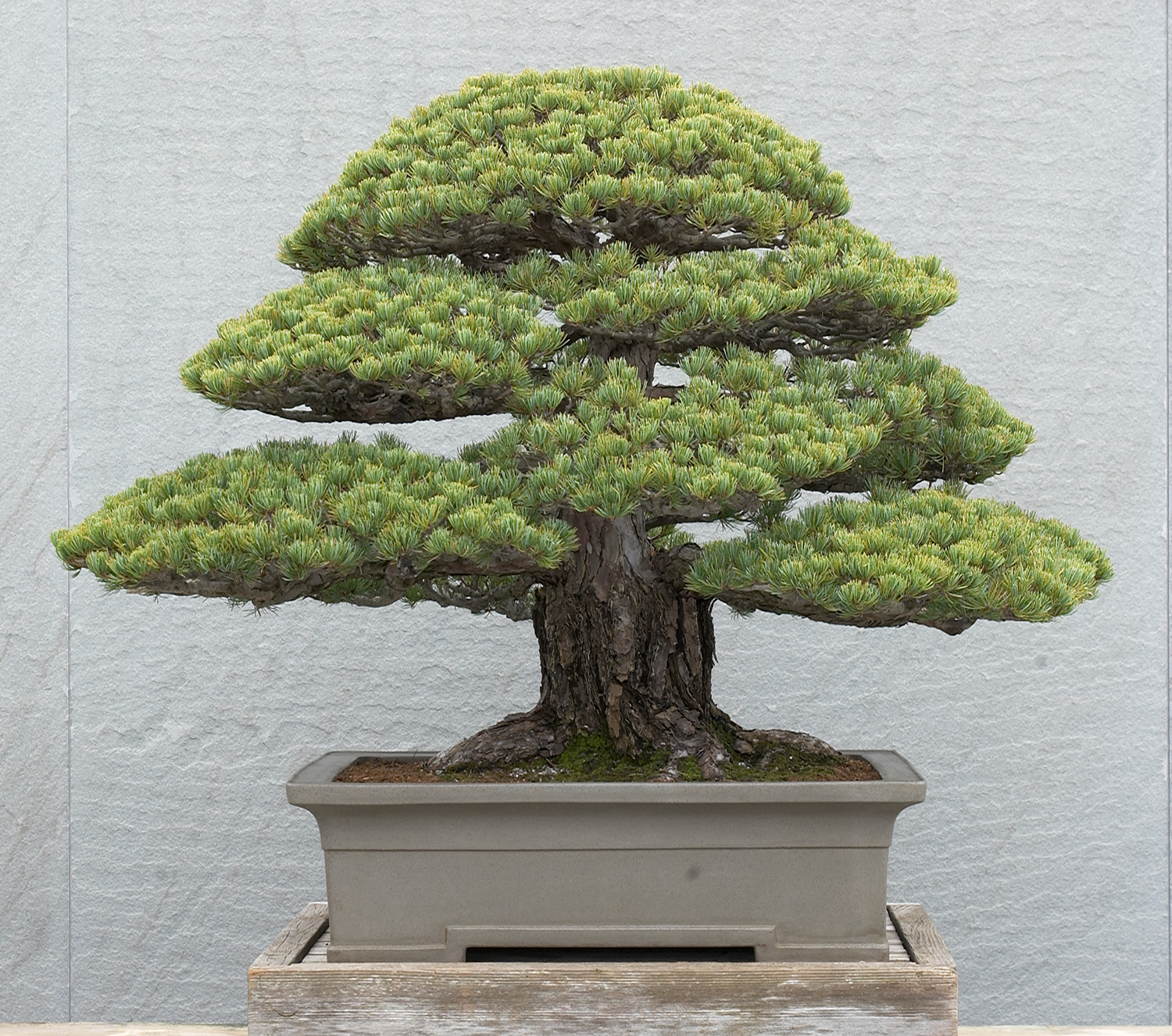
Pinus parviflora
Gift of Daizo Iwasaki, 1976
One of the most important elements of a bonsai is the quality of its surface roots. This pine has especially dramatic ones that seem to grab the earth.
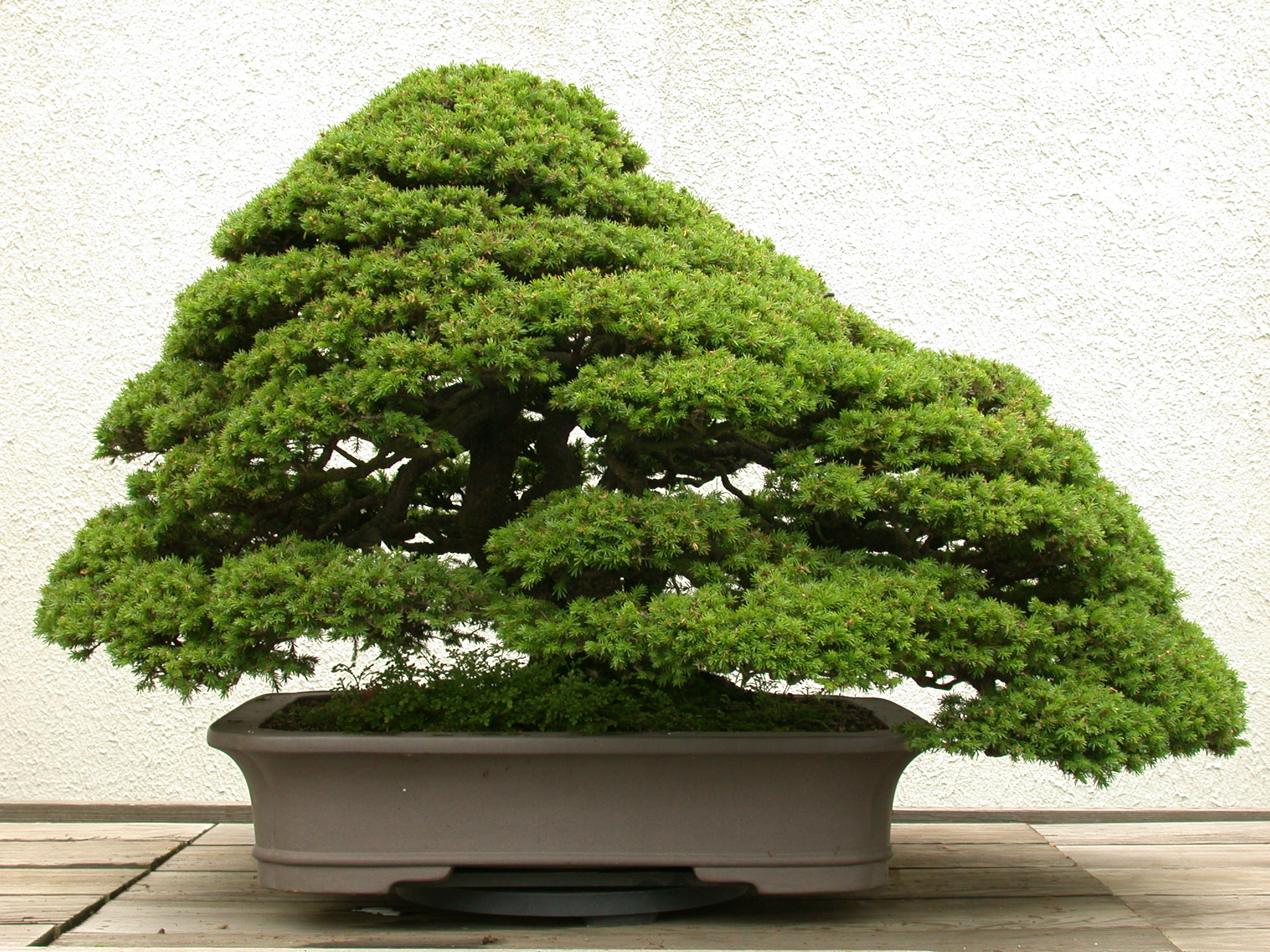
Picea glehnii
In training since 1925
Gift of Tokuei Tanaka, 1976
When this tree was collected in Japan, it was probably about 120 years old. It is difficult to know the exact age of a bonsai that first grew in the wild.

Chamaecyparis obtusa
In training since 1875
Gift of Shuhei Nagai, 1976
The way the bonsai artist thinned and shaped the foliage on this tree helps create the appearance of an ancient tree, which is a primary goal in bonsai.
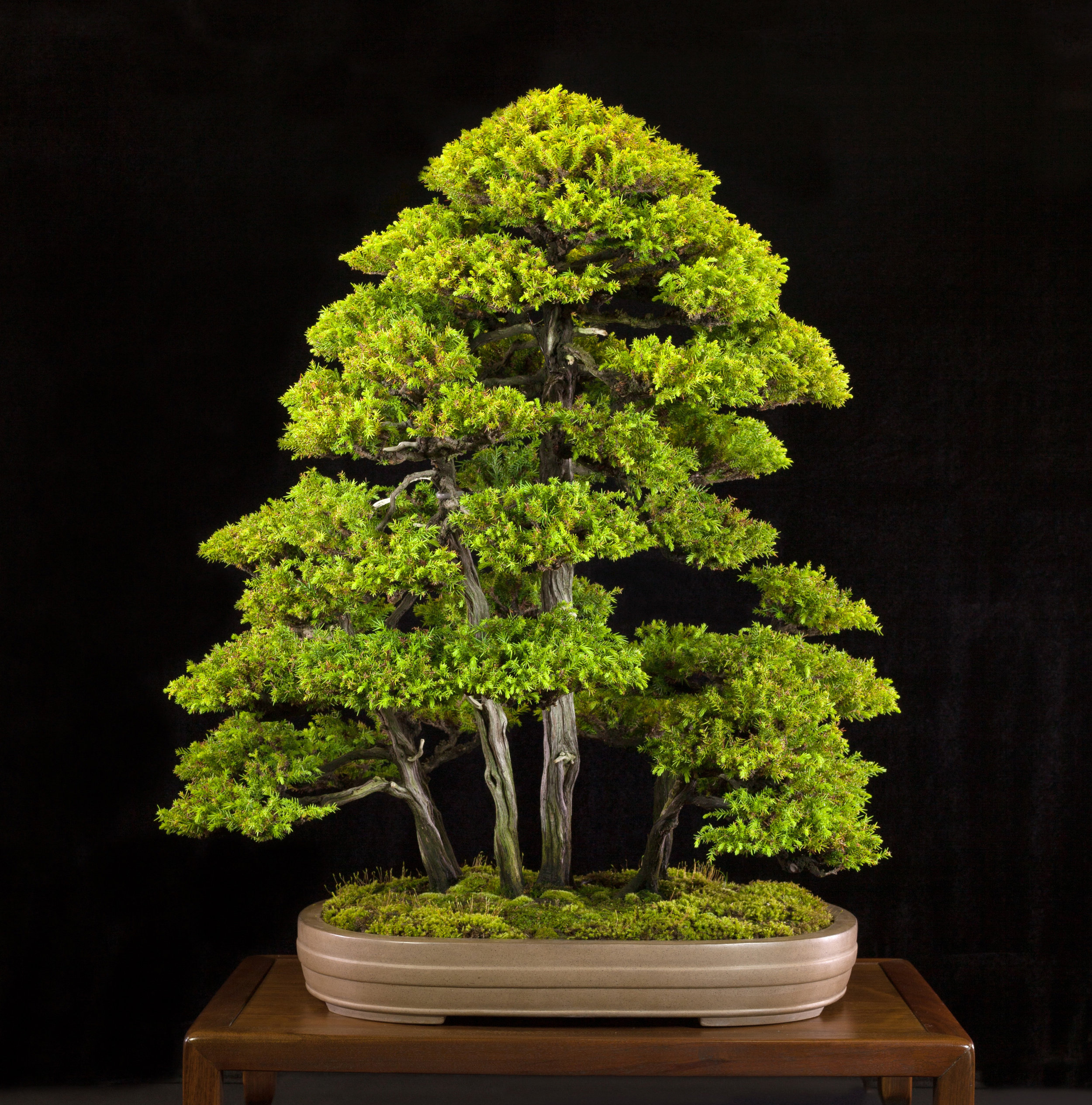
Cryptomeria japonica
In training since 1905
Gift of Eisaku Sato, 1976
This bonsai suggests a peaceful garden forest near a place of worship. In Japan, one often finds a temple or shrine nestled within a shady cryptomeria grove in the countryside.
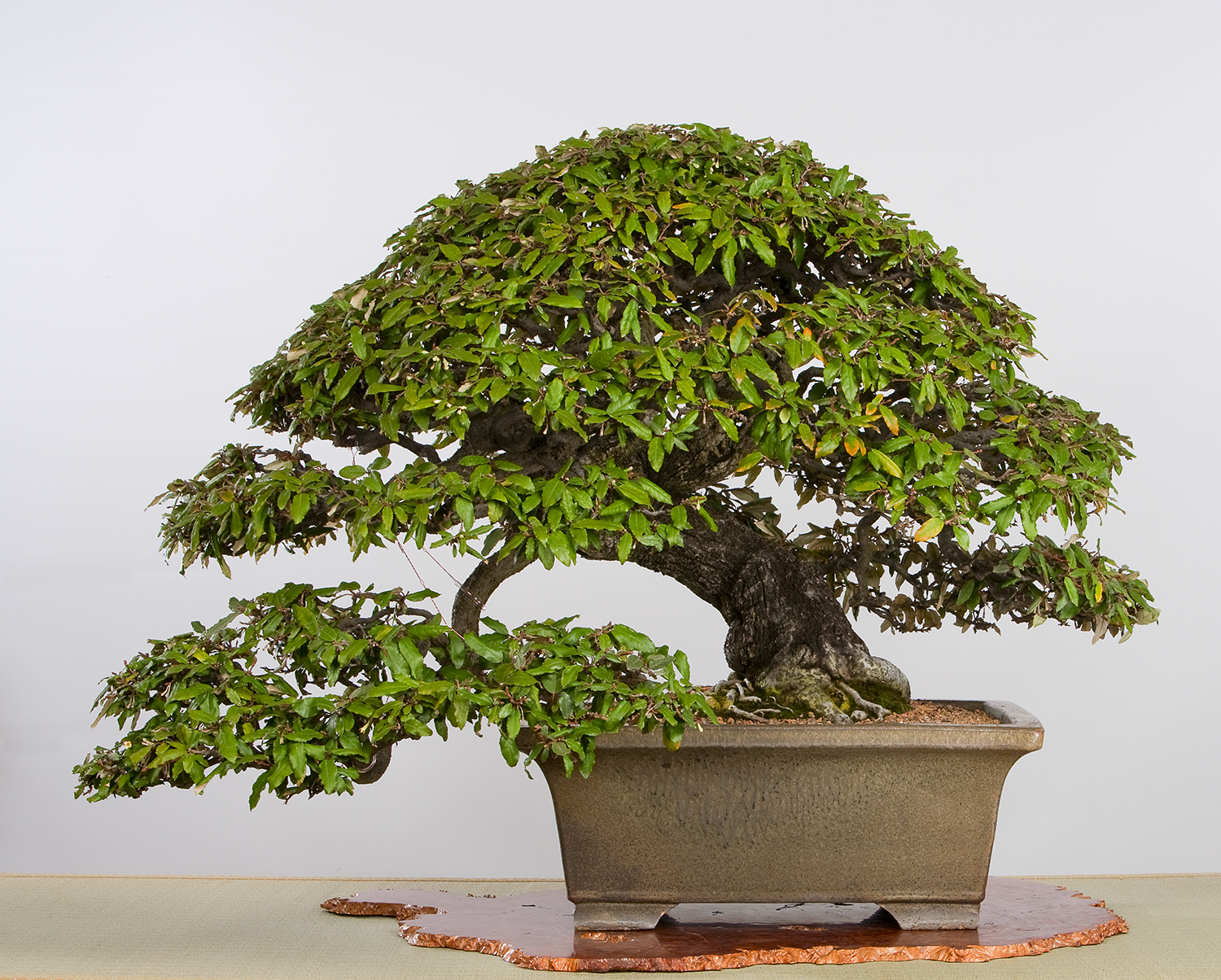
Elaeagnus pungens
In training since 1825
Gift of Teisuke Takahashi, 1976
Look for berries in the springtime on this flowering and fruiting shrub. Started from a cutting in 1825, this plant has been cultivated as a bonsai through its entire life.

Juniperus chinensis var. sargentii
In training since 1905
Gift of Kenichi Oguchi, 1976
The design of the museum logo was inspired by this bonsai with its rhythmic lines of dead wood contrasting with green foliage pads.
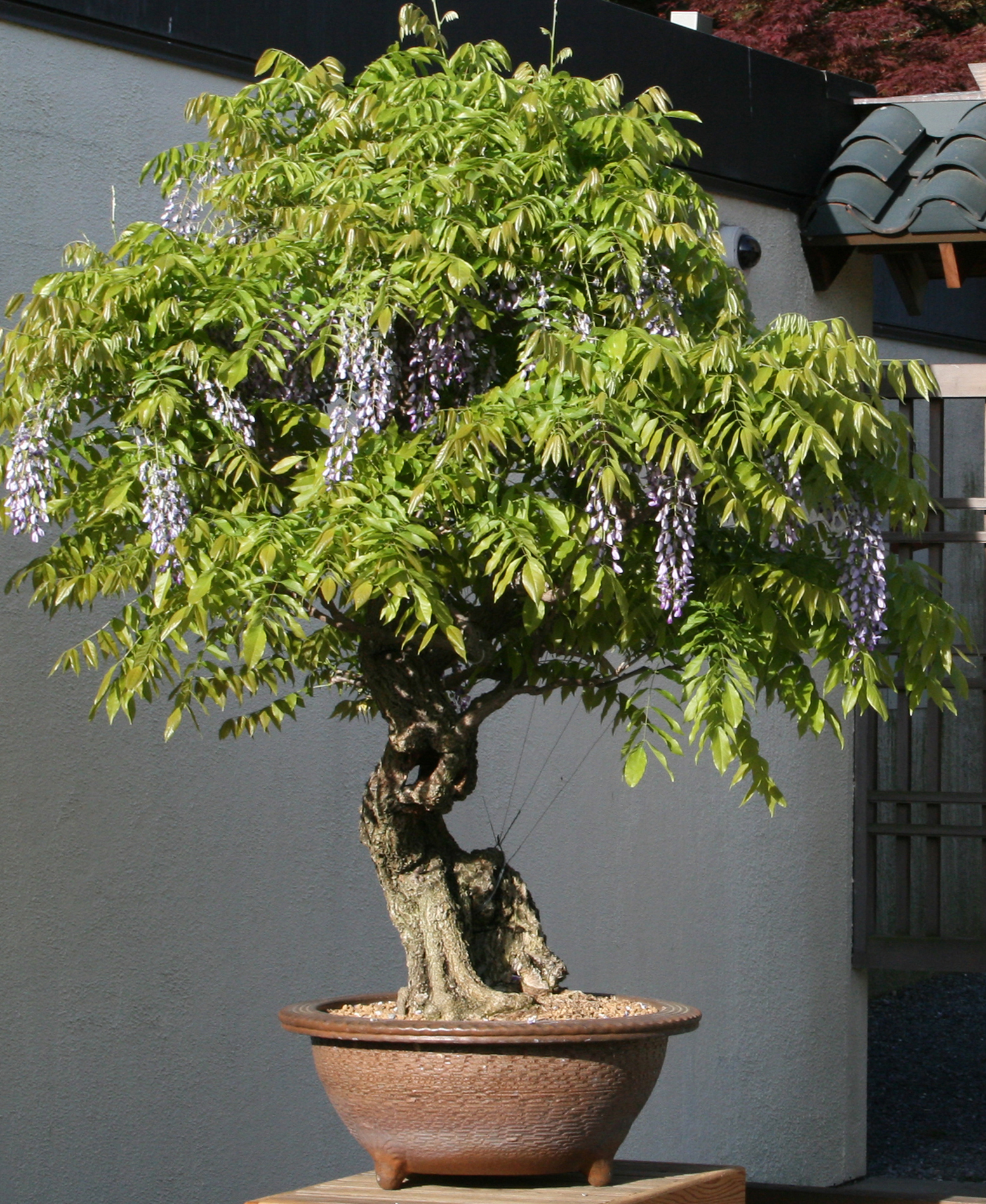
Wisteria floribunda
In training since 1925
Gift of Kihei Tamura, 1976
Wisteria does not produce fine twigs, so it takes an especially skilled bonsai artist to create dense foliage when shaping it into a bonsai.
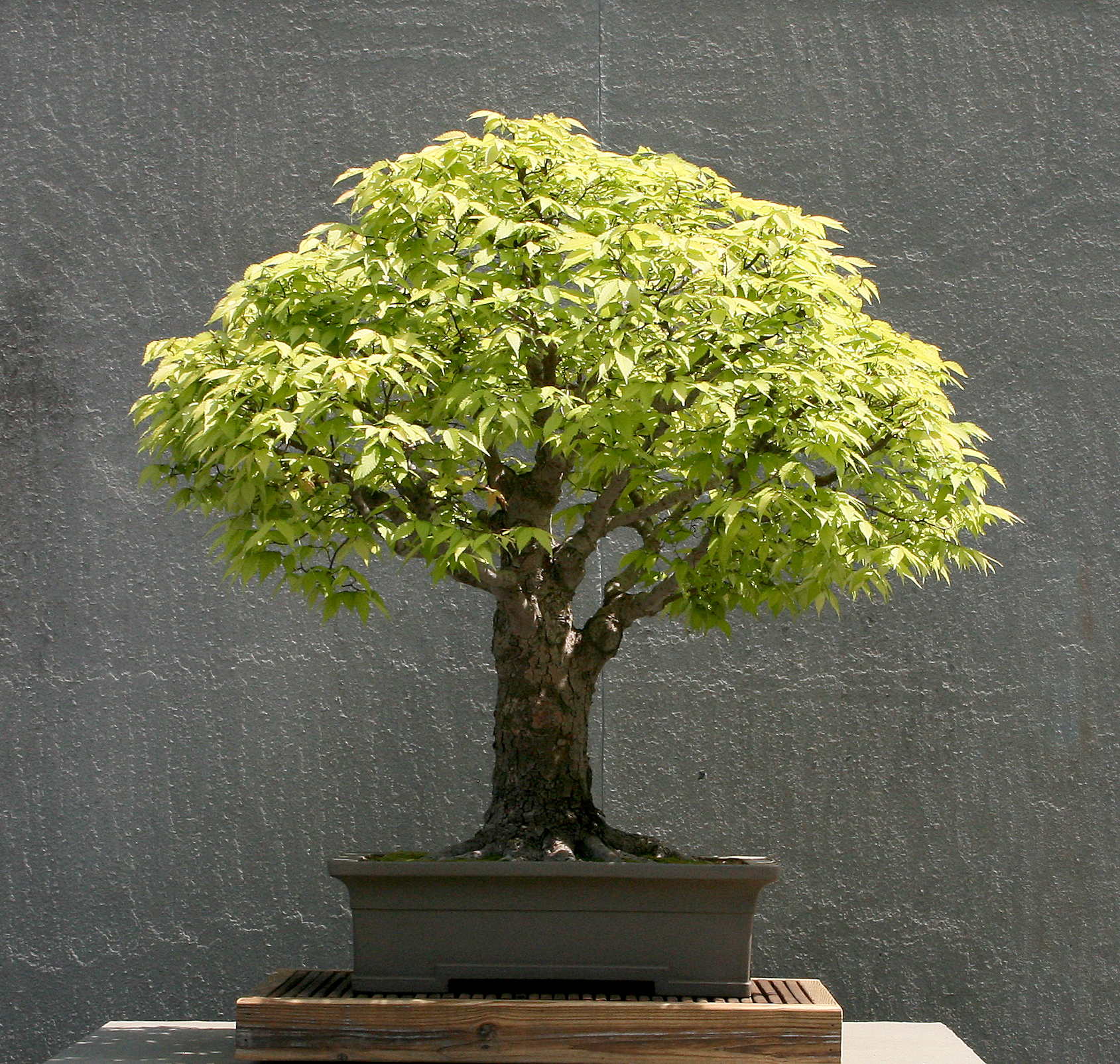
Zelkova serrata
In training since 1895
Gift of Yoshibumi Itoigawa, 1976
This bonsai is only 4 feet tall, yet it gives the appearance of a giant tree with a thick trunk, powerful surface roots, and tapered branching.

Malus toringo
In training since 1905
Gift of Shu’ichi Ueda, 1976
This crabapple has four season interest: white blossoms in spring; bright green leaves in summer; yellow fruits in autumn; and when its leaves fall in winter, the bent and craggy silhouette of an aged tree.
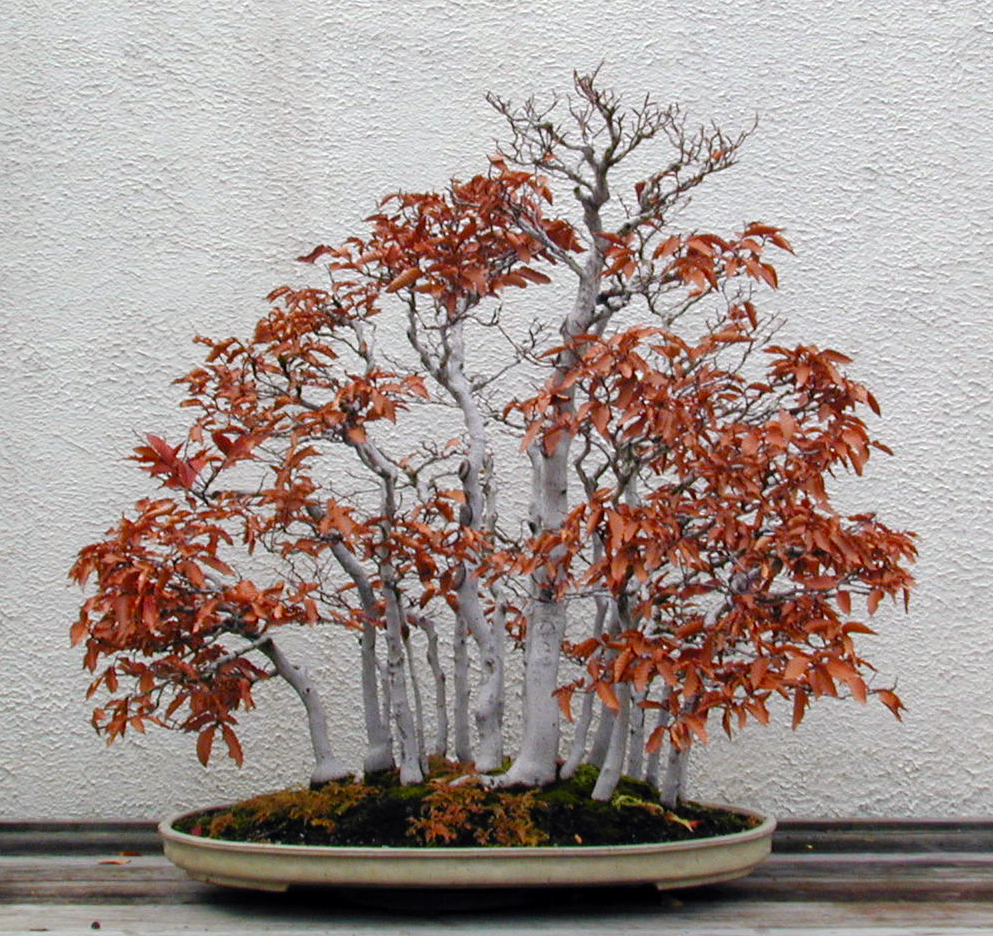
Fagus crenata
In training since 1946
Gift of Kiyoshi Kawamata, 1976
This is an example of the classical forest style where you feel as if you are inside the forest looking out—the trees nearest you appear un-obstructed and large; the ones in back are smaller.

Ginkgo biloba
In training since 1926
Gift of Kiku Shinkai, 1976
Ginkgo bonsai make their best show in autumn when their bright green leaves gradually turn a brilliant golden yellow.

Ginkgo biloba
In training since 1896
Gift of Masayuki Fujio, 1976
Bulbous growths, known as chi chi, typically appear on older ginkgo trees like this bonsai. From these, ariel roots may develop to help the tree survive in times of environmental stress.

Pseudocydonia sinensis
In training since 1875
Gift of Etsusaburo Shiina, 1976
The techniques of bonsai can, in some species, reduce the size of the leaves, but fruit and flowers remain the same size as those on trees growing naturally. This quince produces 5-inch fruits.
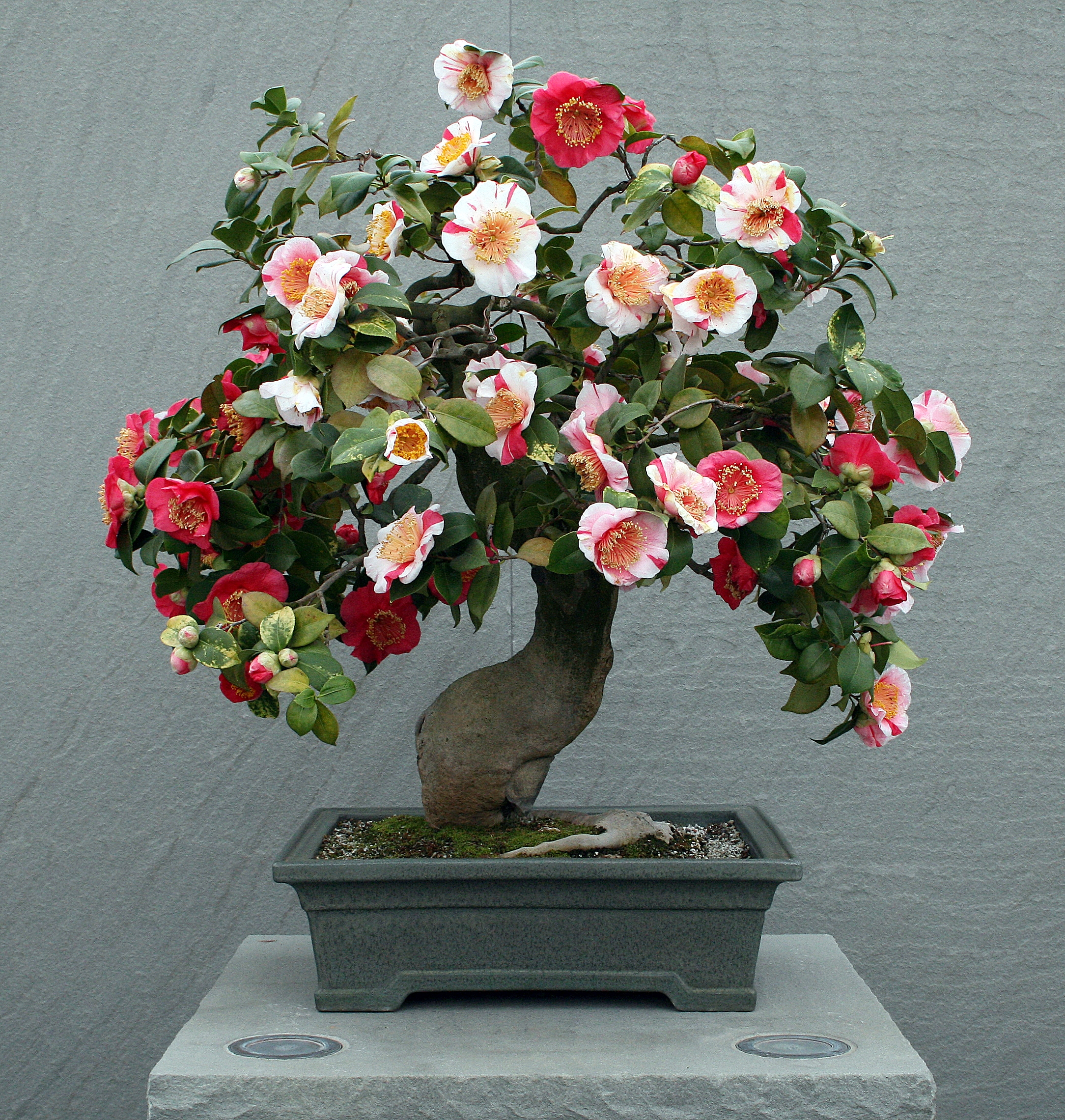
Camellia japonica (Higo Group) 'Yamato-nishiki'
In training since 1876
Gift of Nippon Bonsai Kyodo Kumiai, Kyushu Branch (Nippon Bonsai Growers Cooperative), 1976
The flowers of the Higo camellia are distinctive for the bold sunburst pattern of yellow stamens at the center of the petals. In Japan, these winter blossoms are associated with the bravery of samurai.
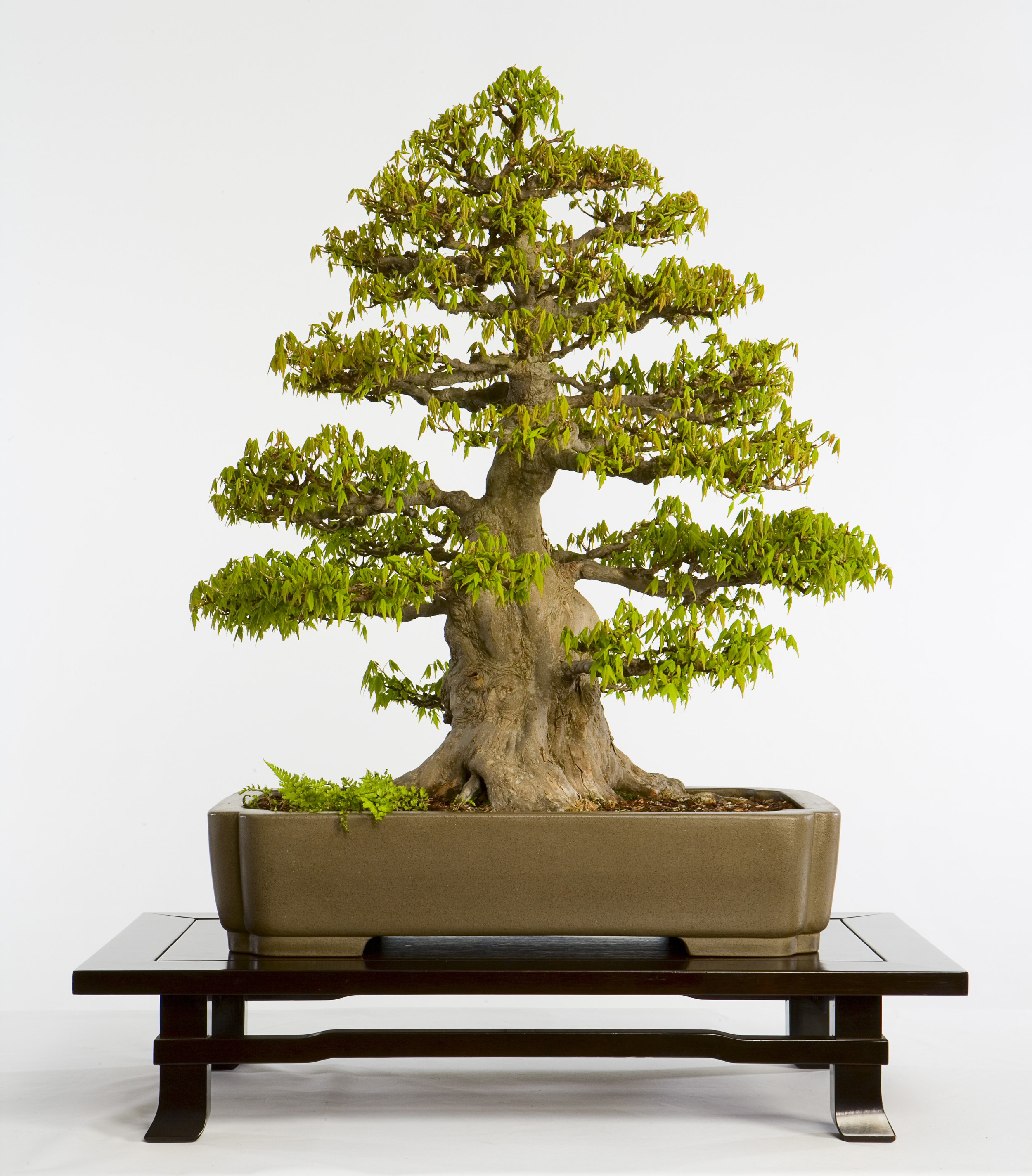
Acer buergerianum
In training since 1856
Gift of Tanekichi Isozaki, 1976
This masterpiece bonsai shows the artist’s expertise in training a seedling to become a majestic tree with flaring surface roots, a powerful trunk tapering gracefully to the apex, and horizontal branches with finely articulated twigging.
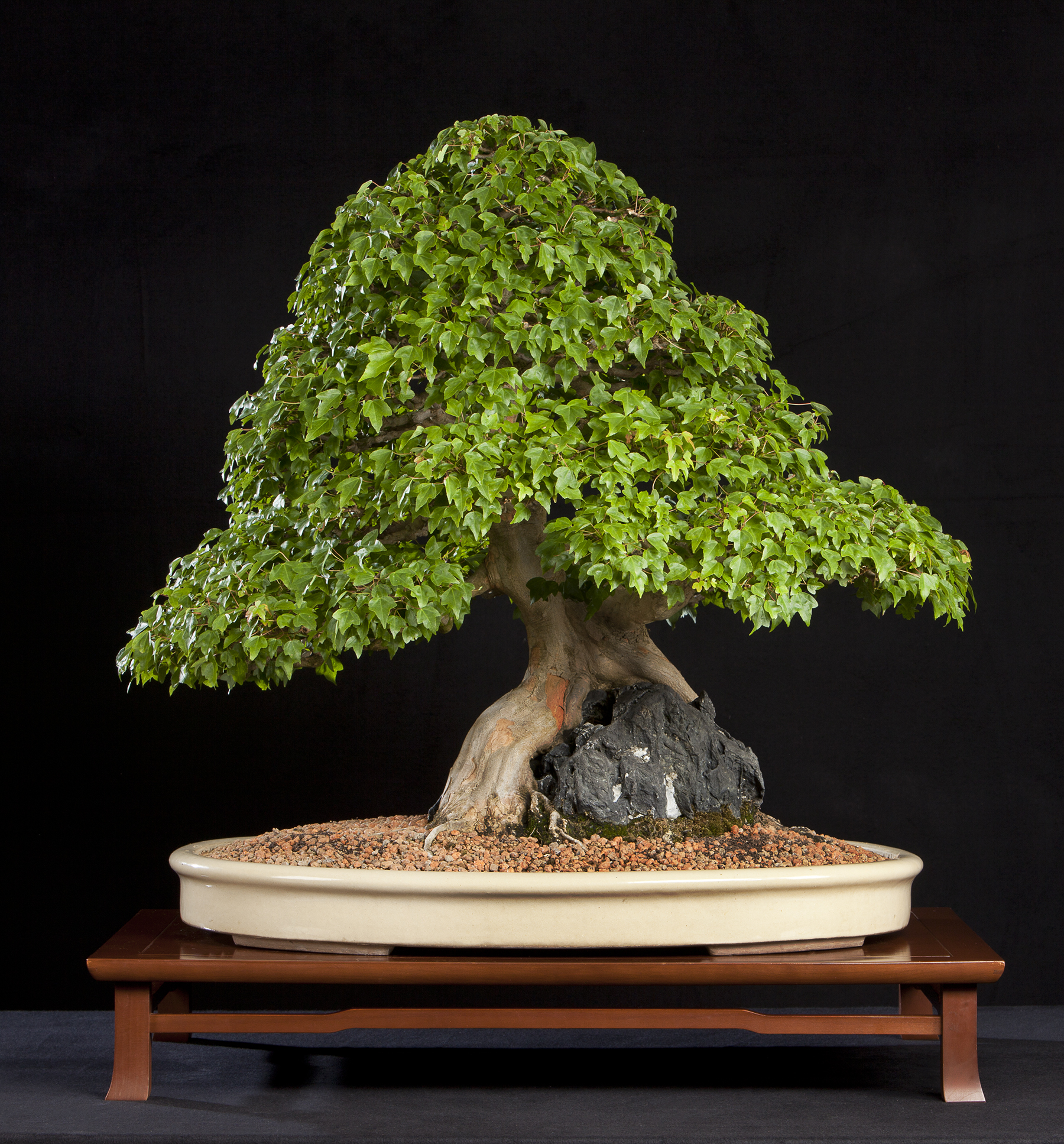
Acer buergerianum
In training since 1916
Gift of Takeo Fukuda, 1976
In this “root-over-rock” style, the artist grew a young plant on top of a rock, gradually removing soil as the roots matured. In nature, maple roots sometimes grasp a rock just like this.

Acer palmatum
In training since 1906
Gift of Ryutaro Azuma, 1976
Japanese maple is one of the finest materials for bonsai because when cultivated as a bonsai it produces smaller leaves than if growing in the ground.
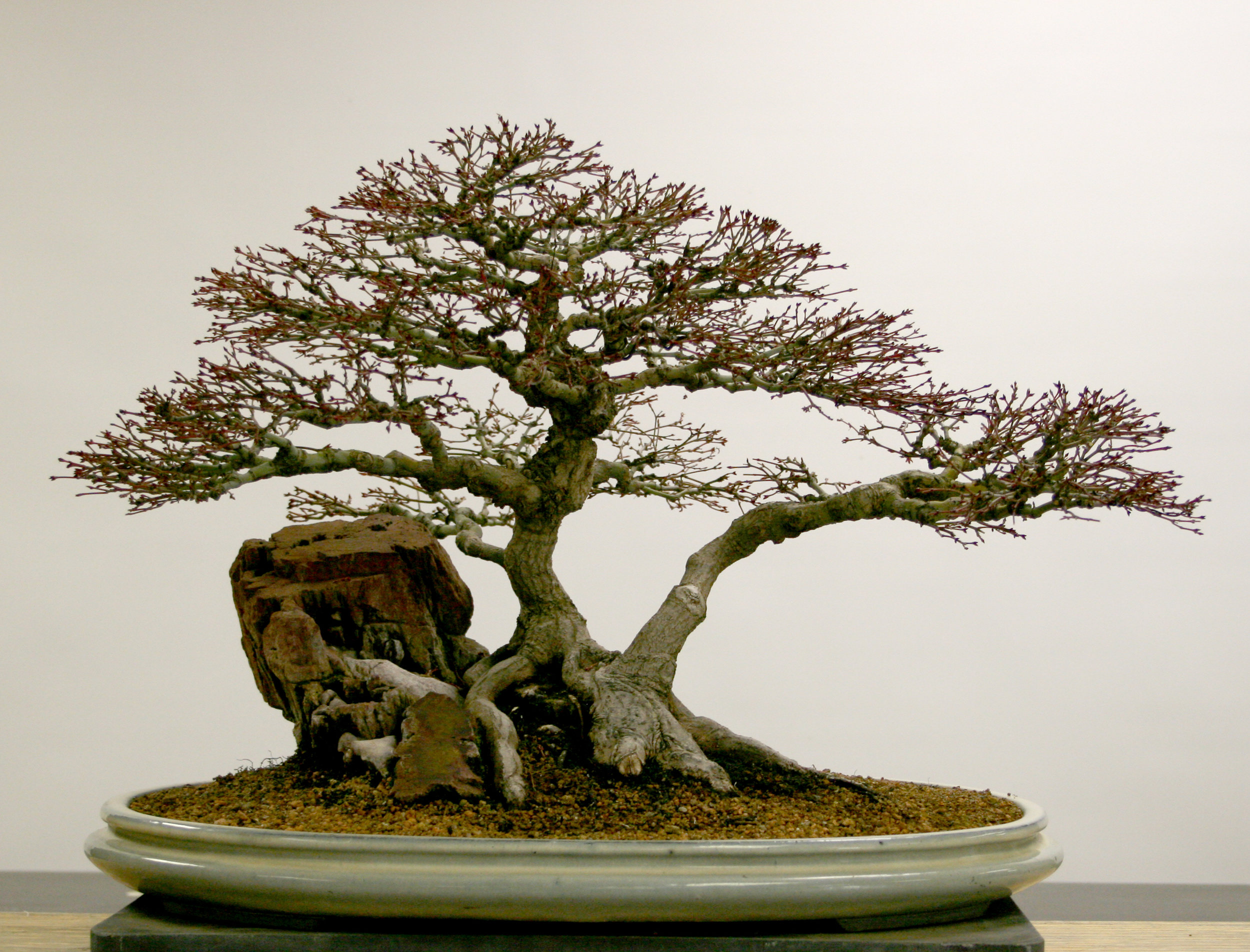
Acer palmatum 'Kiyohime'
In training since 1946
Gift of Akiko Matsudaira, 1976
Trees with fine twigs, small leaves, and spreading roots are good matches for smaller bonsai. Certain cultivars with these characteristics, like this one, are favorites for creating miniature scenes.

Pinus thunbergii
Gift of Goro Ito, 1976
The slant-style in bonsai represents the forces of nature on mature trees: strong winds, heavy snows, rock slides, or the need to grow towards the light are all reasons for a tree to lean.

Acer palmatum Yatsubusa Group
In training since 1946
Gift of Shintaro Abe, 1976
The small leaves, tiny twigs and strong roots of dwarf maple varieties make them perfect material for the bonsai artist whose goal is to create the illusion of a large, mature tree.
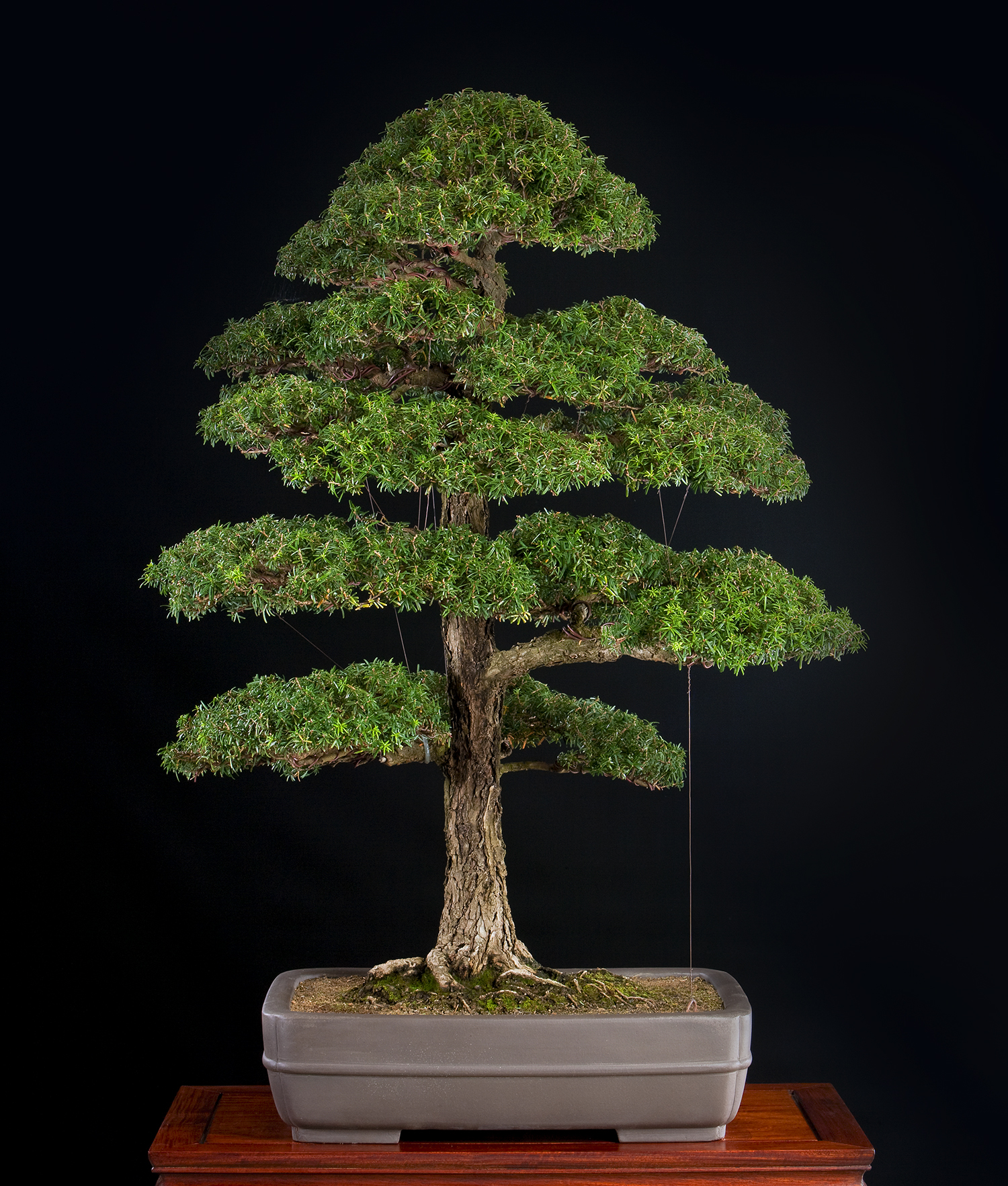
Tsuga diversifolia
In training since 1926
Gift of Royal Household of Princess Chichibu, Japan, 1976
Japan’s Princess Chichibu (1909-1995) was a well-known patron of the art of bonsai. She donated this hemlock from her royal collection as a part of Japan's Bicentennial gift to the United States.
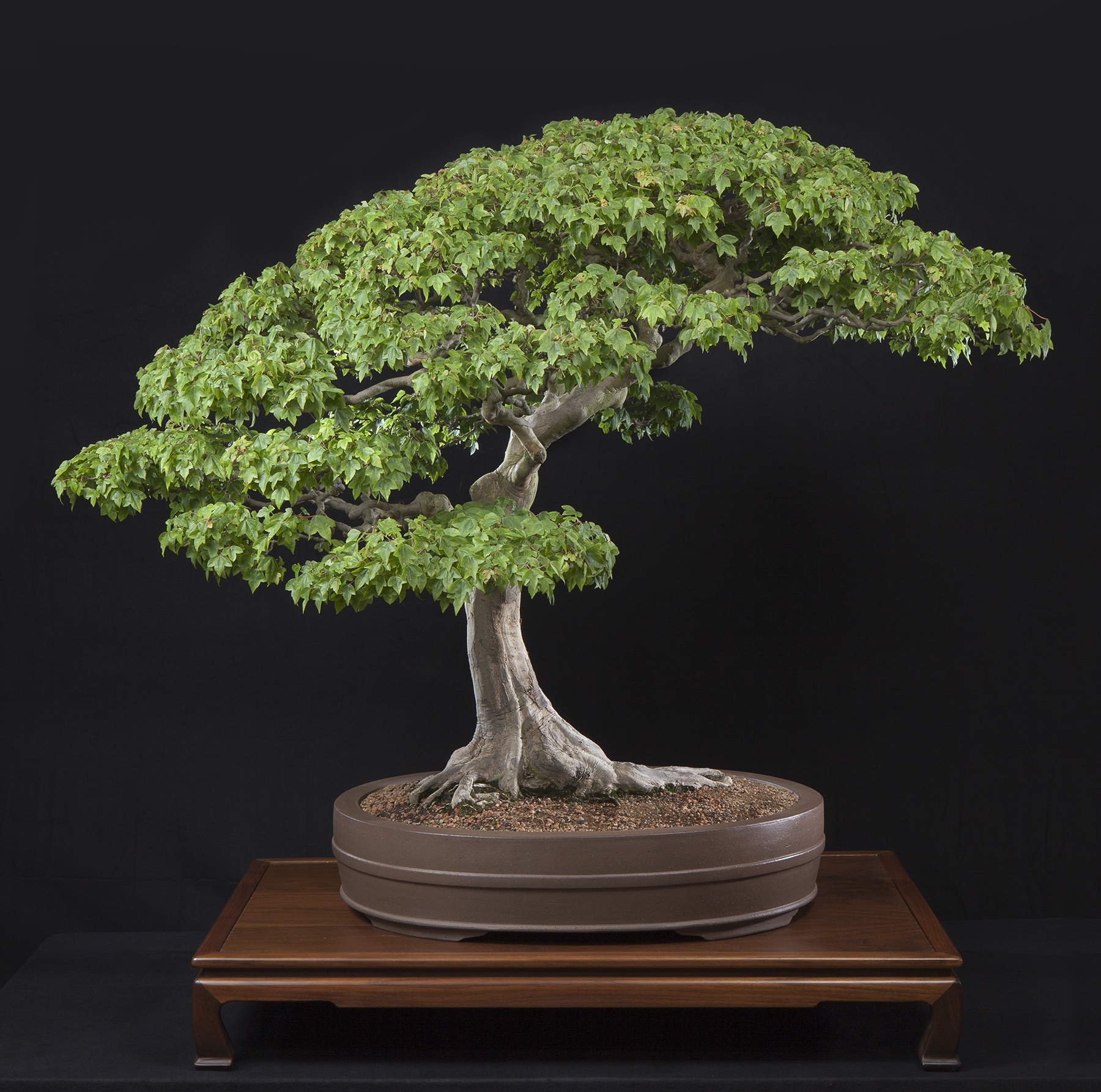
Acer buergerianum
In training since 1895
Gift of Royal Household of Prince Takamatsu, Japan, 1976
One of three trees from the Imperial Family included in Japan’s 1976 Bicentennial gift, this majestic maple is from the collection of Prince Takamatsu (1905-1987) and was trained as a bonsai from a seedling.
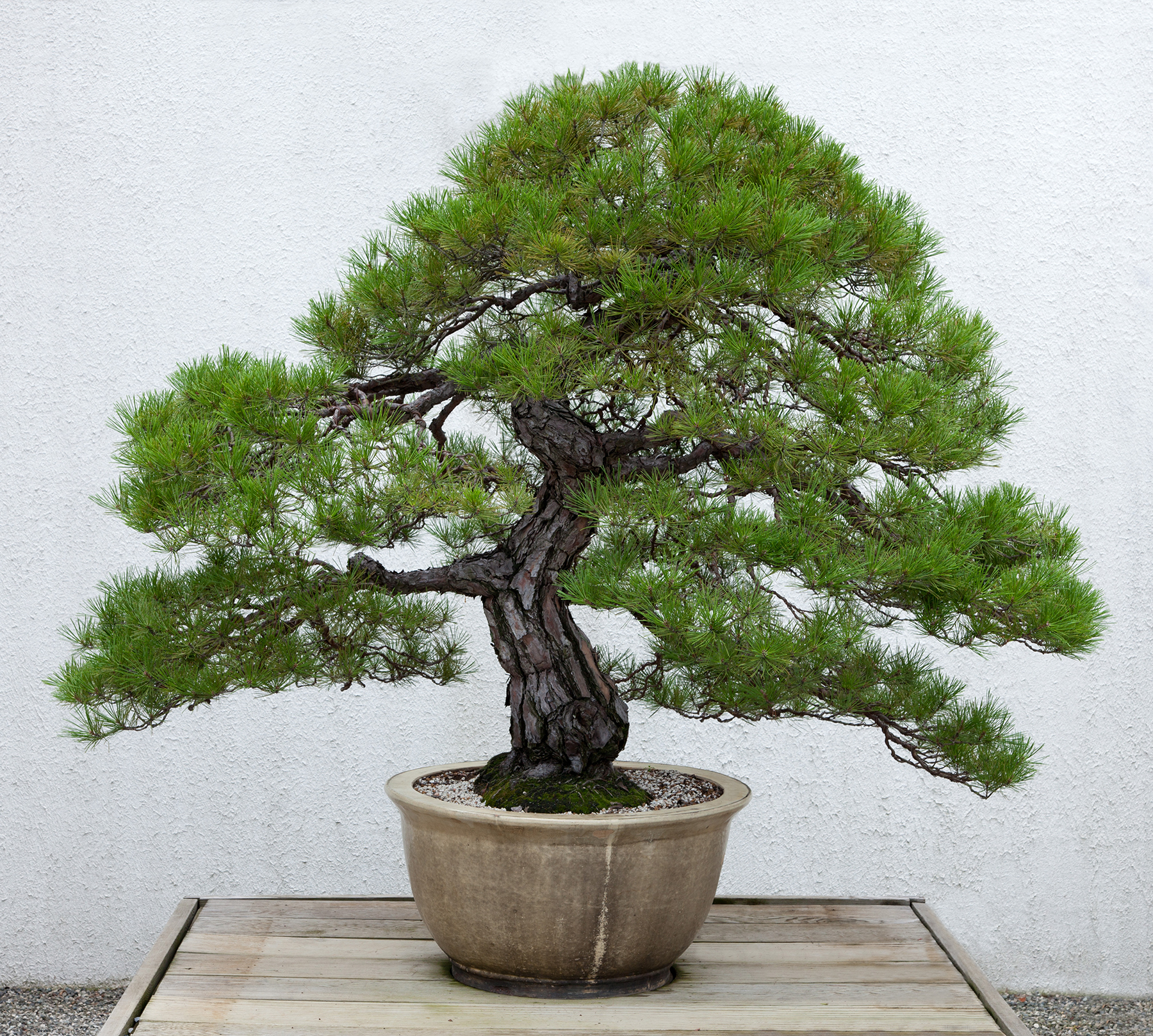
Pinus densiflora
In training since 1795
Gift of the Imperial Household, Japan, 1976
It was an unprecedented honor for the Emperor of Japan to include a tree from the Imperial Collection as part of his country’s gift to the United States in 1976—none had ever before left Japan.
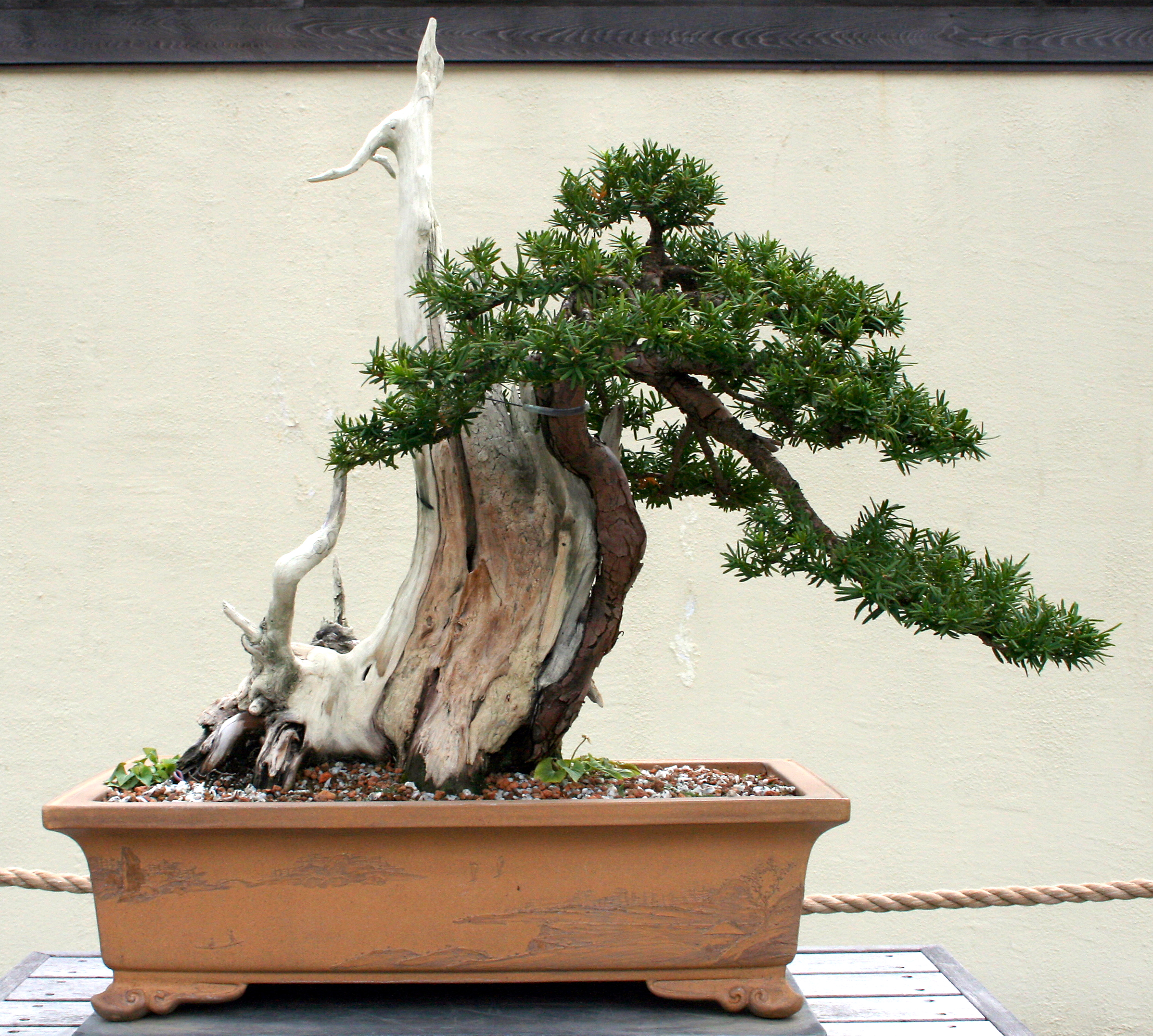
Taxus cuspidata
In training since 1966
Gift of Reiji Takagi, 1998
This tree was originally collected on the northern Japanese island of Hokkaido. The bonsai artist has carved the dead portions to resemble naturally weathered dieback on an old tree.
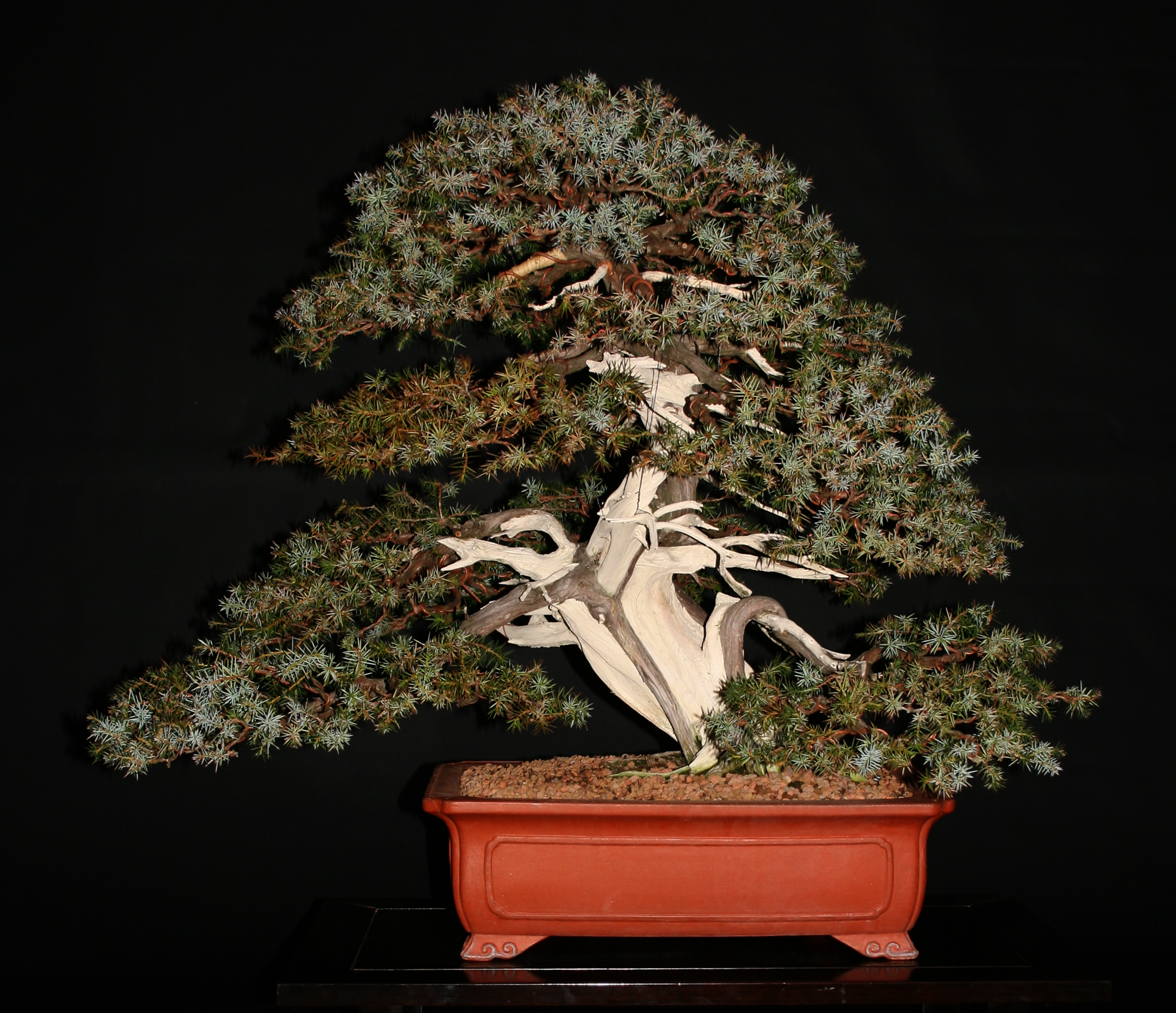
Juniperus rigida
In training since 1966
Gift of Governor Yoshihiko Tsuchiya, 1998
Before it became a bonsai, this tree was about 250 years old. It was collected from a rugged coastal area on the Sea of Japan.
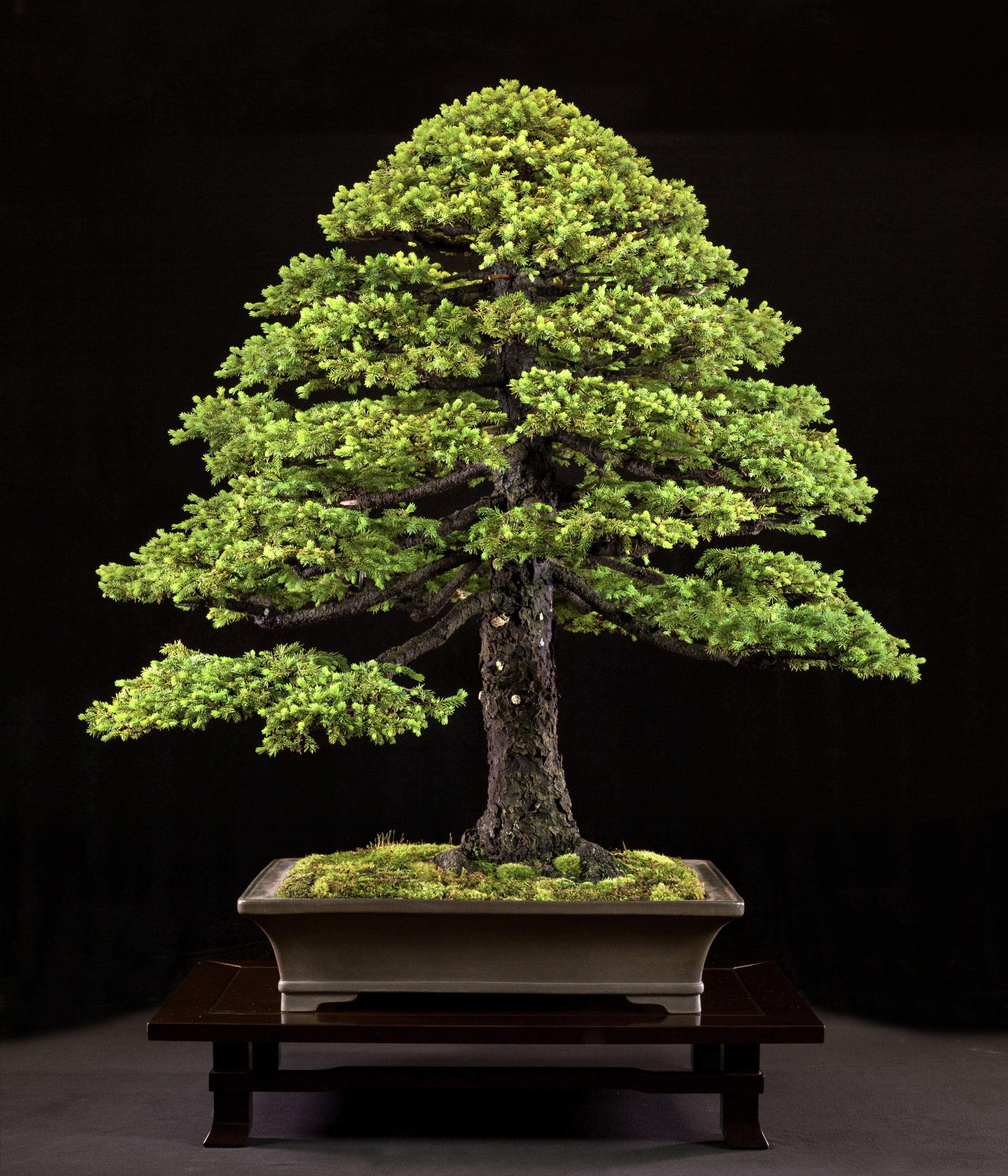
Picea glehnii
In training since 1939
Gift of Saburo Kato, 1998
This tree, collected and styled by renowned Japanese bonsai master Saburo Kato, was an official gift from Japanese Prime Minister Obuchi to President Clinton.
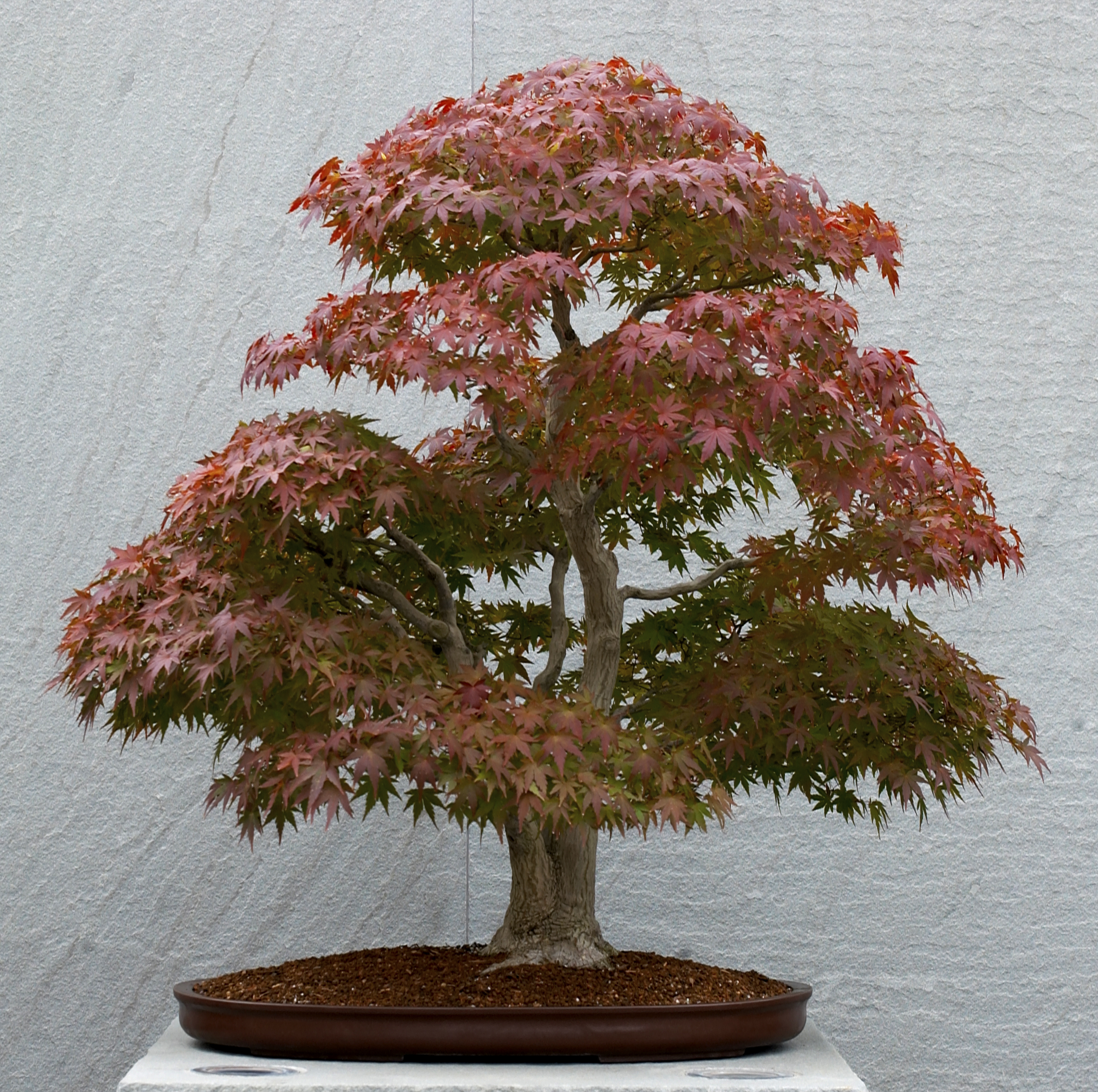
Acer palmatum
In training since 1939
Gift of Prime Minister Keizo Obuchi, 1999
A gift from Japanese Prime Minister Obuchi's personal collection, this bonsai has the graceful shape of a maple growing in an open field.
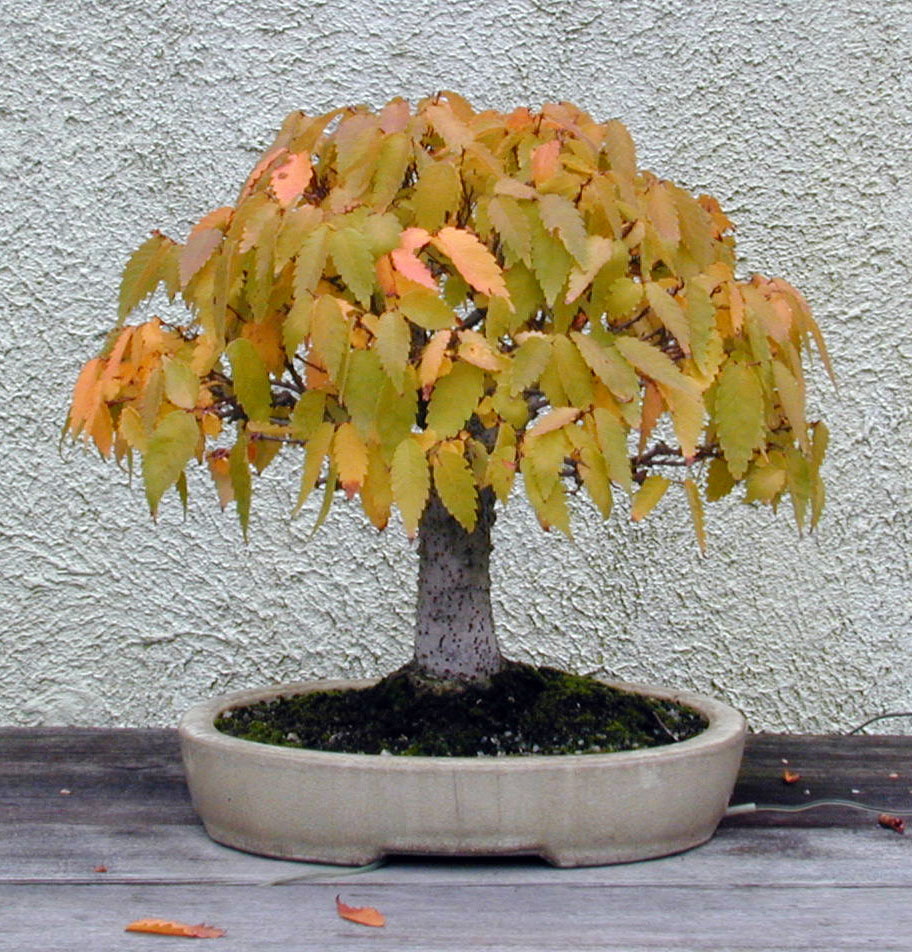
Zelkova serrata
In training since 1984
Gift of Prime Minister Keizo Obuchi, 1999
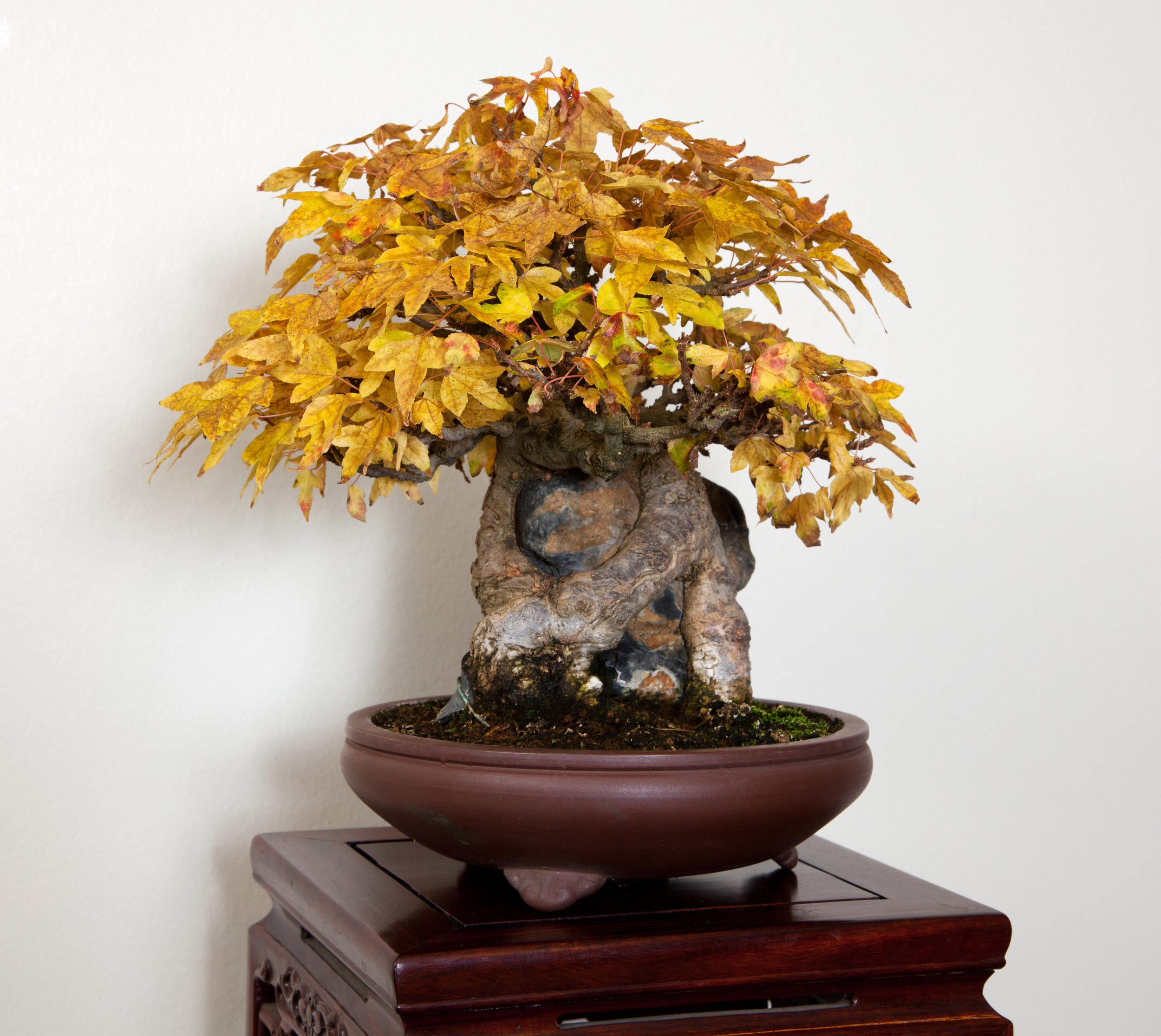
Acer buergerianum
In training since 1919
Gift of Prime Minister Keizo Obuchi, 1999
This shohin bonsai has been trained from a seedling to grow over a rock.

Rhododendron (Satsuki Group) 'Korin'
Training age unknown
Gift of Hirozumi Ichihara, 2000
Korin is a type of Satsuki azalea cultivated by bonsai aritsts for its small leaves and flowers. In June, the leaves will not be visible when it is covered in pink blossoms.
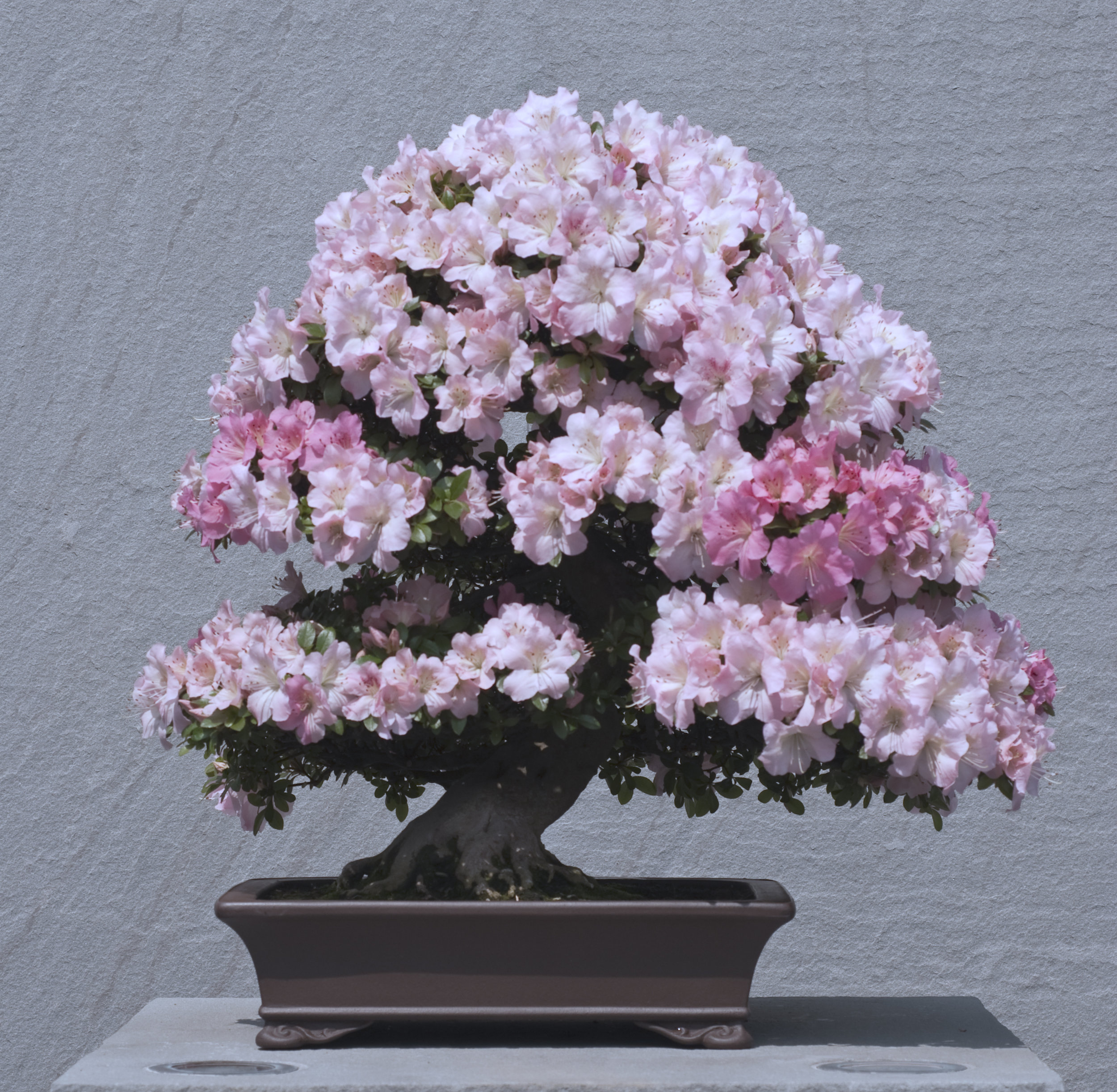
Rhododendron (Satsuki Group) 'Gyoten'
Training age unknown
Gift of Shogo Watanabe, 2000
Satsuki azaleas bloom later than most other azaleas and often produce flowers of different colors on the same plant—a prized feature in bonsai.
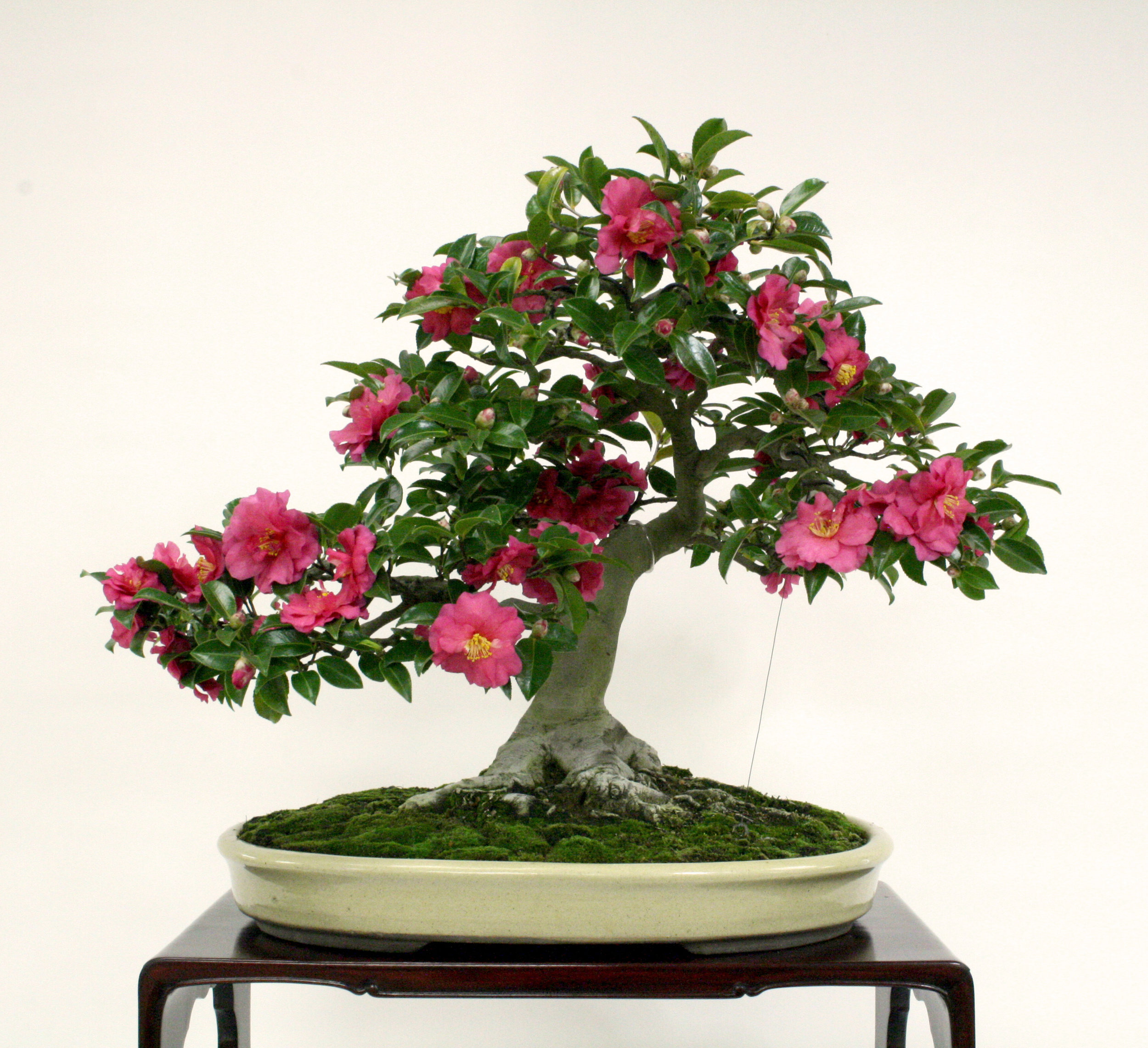
Camellia x hiemalis 'Shishigashira'
In training since 1950
Gift of Susumu Nakamura, 2000
The small leaves and flowers of this dwarf camellia make it excellent material for bonsai. Its semi-double pink blossoms usually appear in November.

Eurya emarginata
In training since 1970
Gift of Susumu Nakamura, 2000
A member of the tea family, this evergreen shrub grows in thickets on mountain slopes, in rock crevices, and along seacoasts in China, Japan, and Korea.
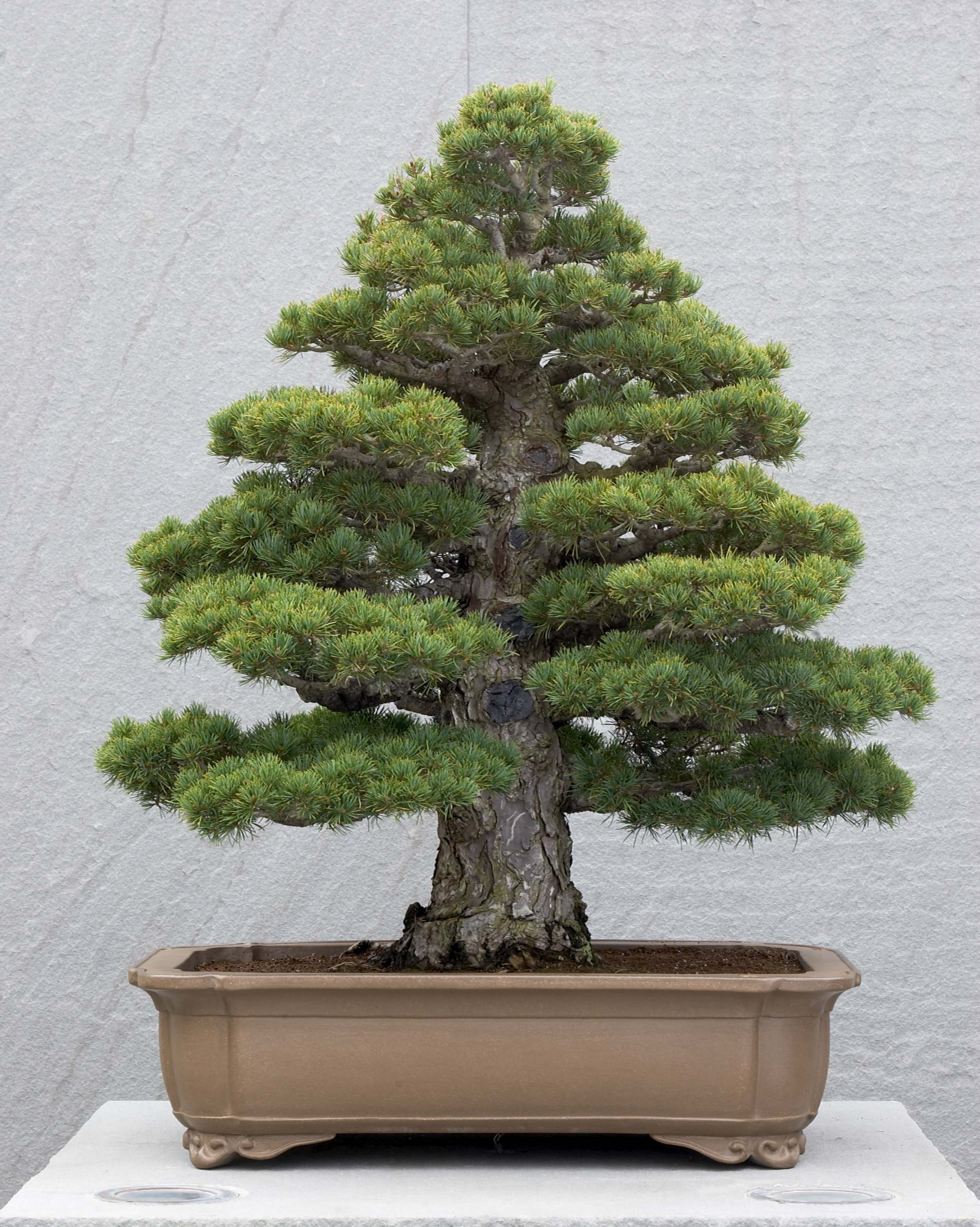
Pinus parviflora 'Koko-no-e'
Train age unknown
Gift of Daizo Iwasaki, 2004
The branches of this pine were grafted onto the trunk at 90-degree angles to create a style of bonsai known as formal upright.
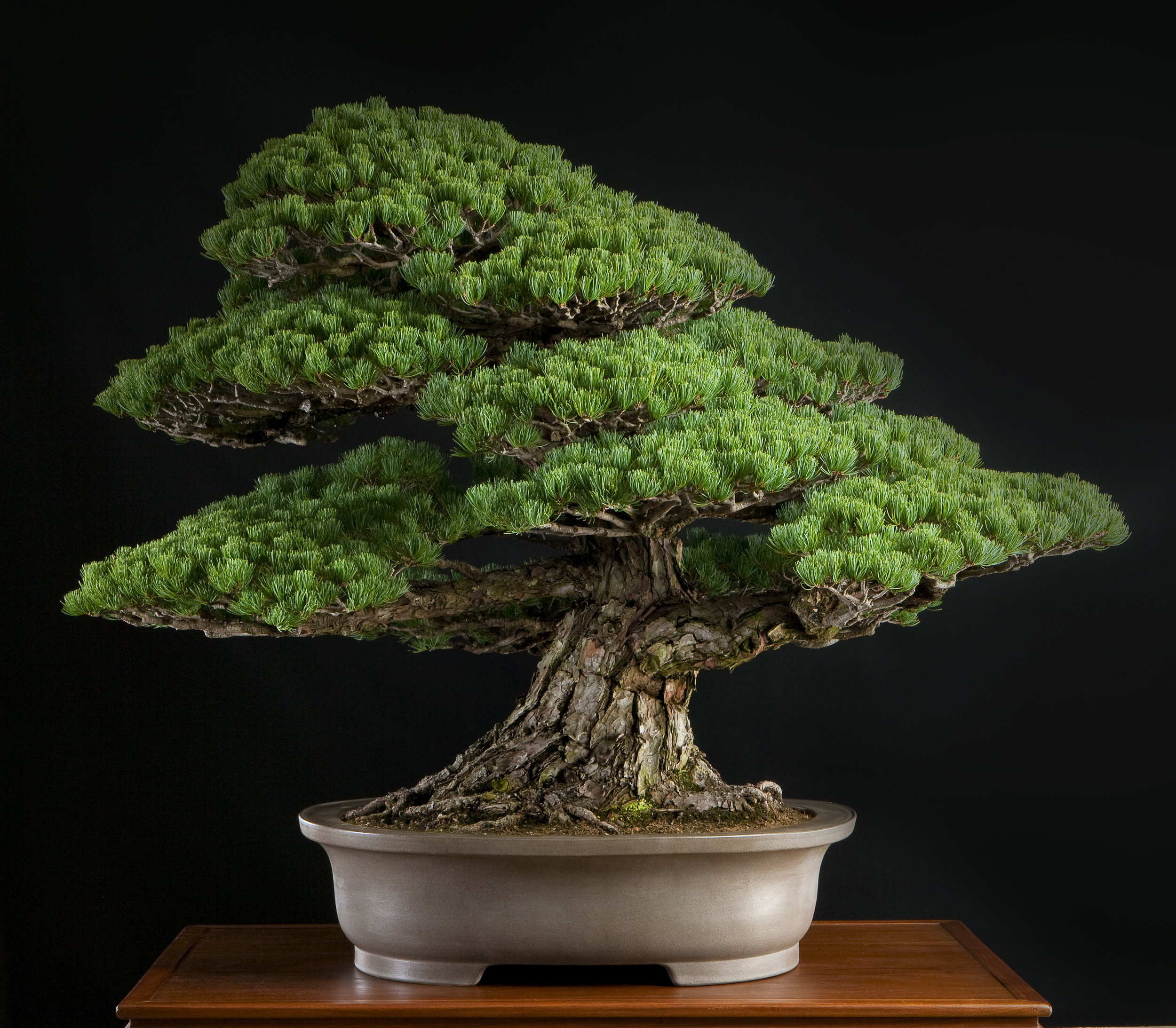
Pinus parviflora
Training age unknown
Gift of Daizo Iwasaki, 2004
Note that in the slant style of bonsai, though the trunk of the tree is leaning, the design of the branches and foliage provides a feeling of balance and stability.
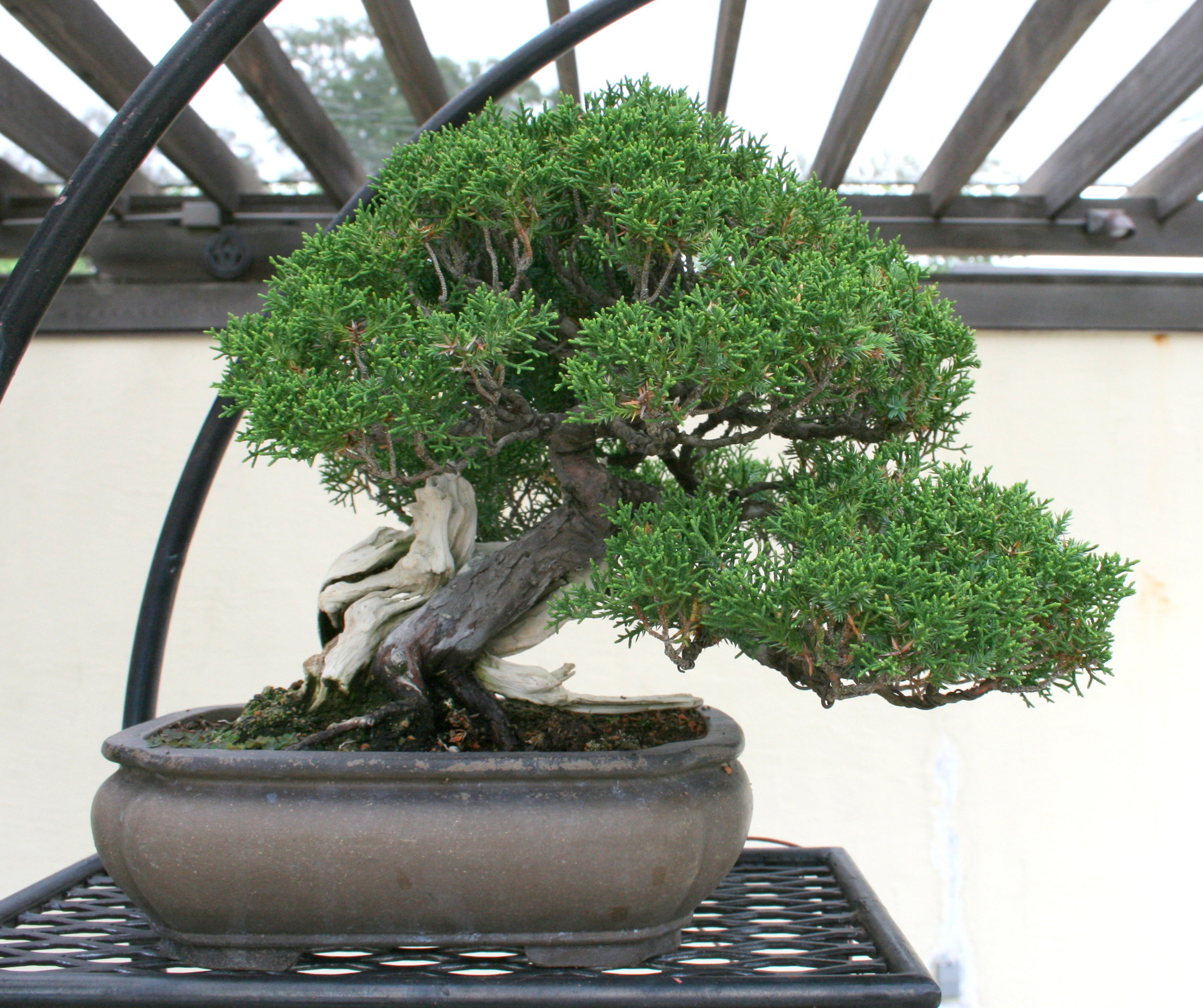
Juniperus chinensis
Training age unknown
Gift of All Japan Shohin Bonsai Association, 2010
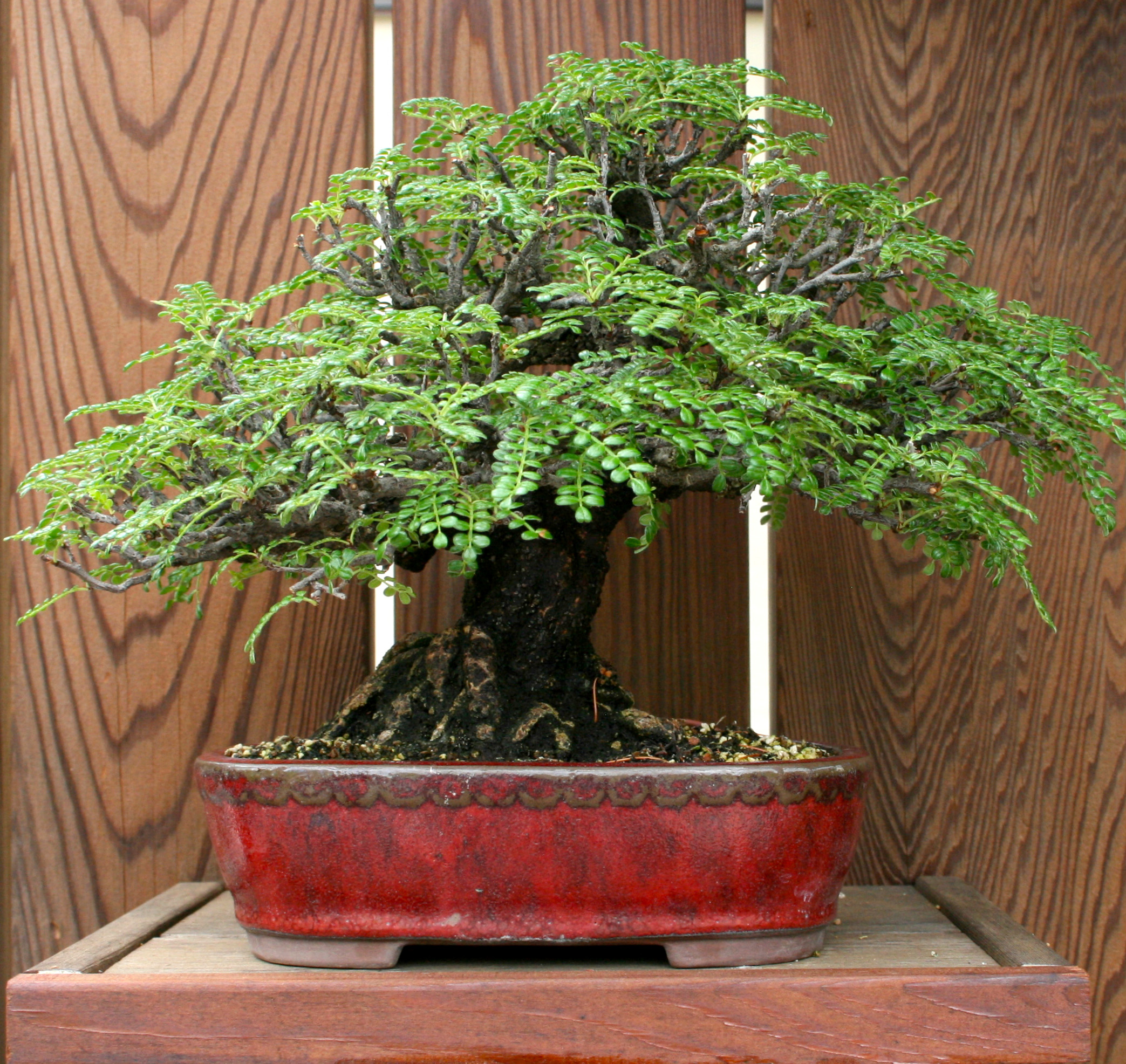
Osteomeles boninensis
Training age unknown
Gift of All Japan Shohin Bonsai Association, 2010
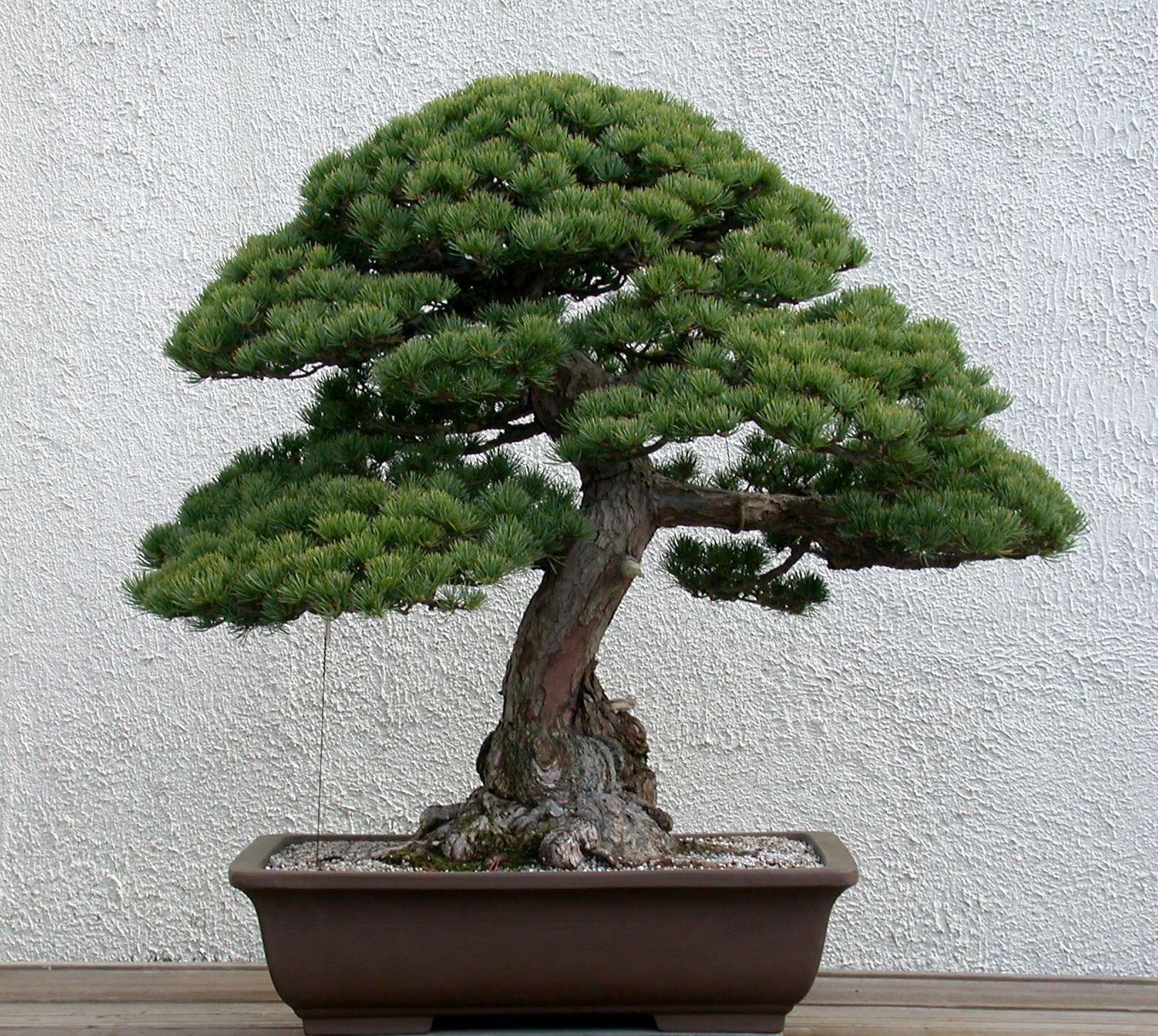
Pinus parviflora
In training since 1832
Gift of Hassan II, King of Morocco, 1983
This tree was a gift from the King of Morocco, His Majesty Hassan II, to President Ronald Reagan in 1983.
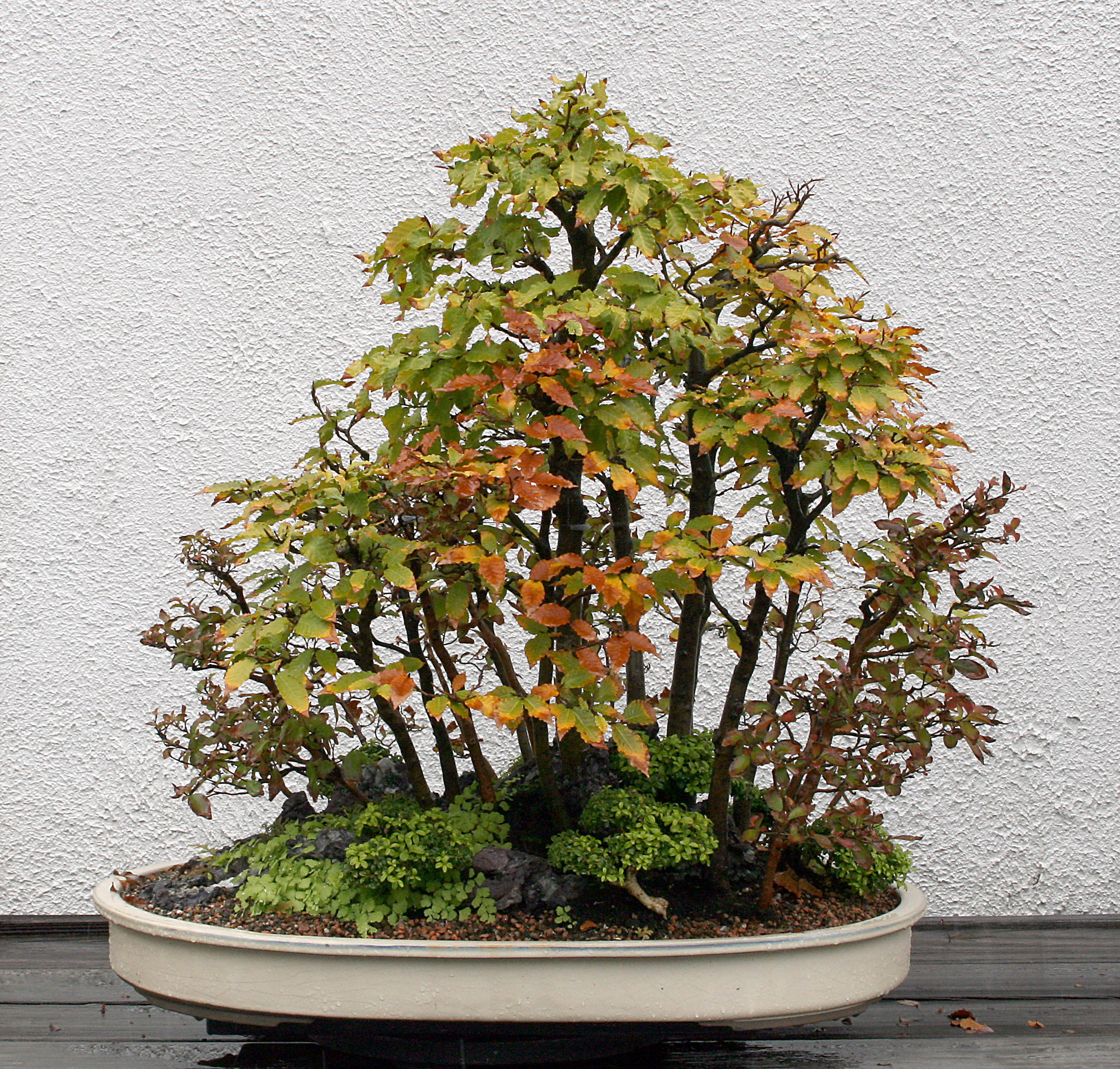
Stewartia monadelpha, Fagus crenata, Buxus microphylla
In training since 2001
Gift of Toshio Kawamoto, 2001
Notice that 3 different types of trees grow together in this type of bonsai called saikei. It is a "living landscape" designed by Japanese artist Kawamoto, who introduced this style after the WWII.
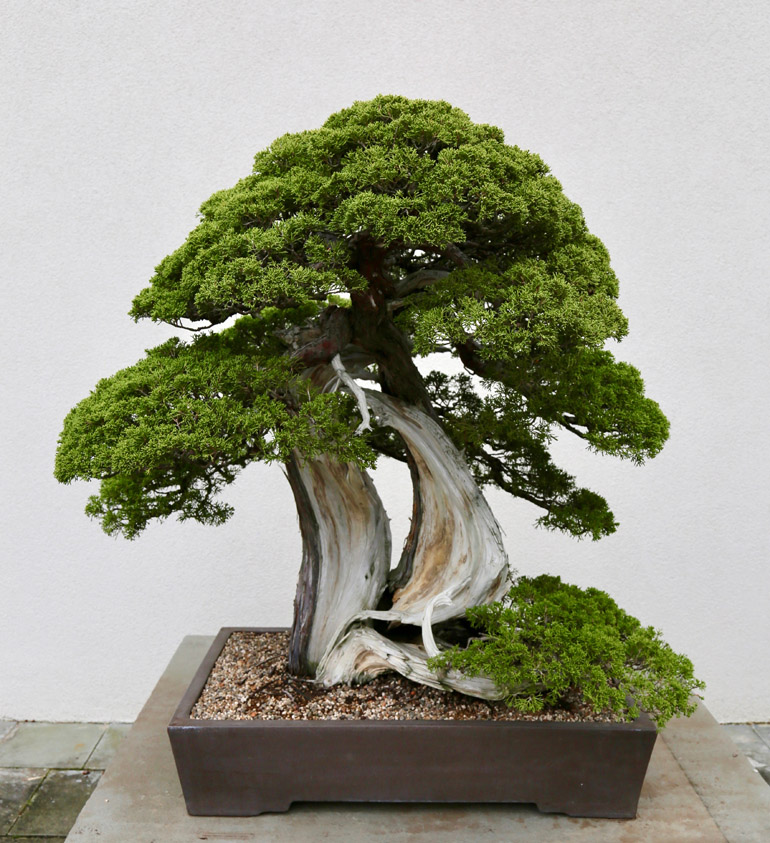
Juniperus chinensis var. sargentii
Training age unknown
Gift of Doug Paul, 2015

Watch Documentaries
These documentaries have been in our archives for over a year. What better way to re-introduce them than on
World Bonsai Day? Enjoy!
Bonsai Fly to USA: A Gift in Honor of the American BICENTENNIAL (1975/2016)
This documentary, originally shot on 16mm film and produced by the Nippon Bonsai Foundation in 1975 in Japan, tells the story of the journey of the 53 masterpiece bonsai from Japan to the United States in honor of the American Bicentennial. These treasured bonsai gifts were to become the beginning collection of the National Bonsai & Penjing Museum at the U.S. National Arboretum. This film was restored and digitized by the U.S. National Arboretum and the National Bonsai Foundation in 2016.
A Window into Nature: The National Bonsai & Penjing Museum (2016)
Enjoy this re-release of our informative documentary about the National Bonsai & Penjing Museum at the U.S. National Arboretum. The documentary features interviews with former Museum Curators Jim Hughes and Jack Sustic along with former NBF Executive Director Johann Klodzen, current NBF Co-President Felix Laughlin among others.

Celebrate Together with #WorldBonsaiDay2020
Sharing some of our favorite posts from people around the world.
Become a Bonsai Supporter
Donate to the National Bonsai Foundation
We invite you to support the world’s first and finest Bonsai museum by becoming a member
of the National Bonsai Foundation. The National Bonsai Foundation is honored to be a private partner with the U.S. National Arboretum to provide financial, programmatic and curatorial support to the U.S. National Arboretum’s National Bonsai & Penjing Museum. With your tax-deductible donation, you will help to preserve a history, protect a legacy and prepare a future for the Museum. Thank you!








